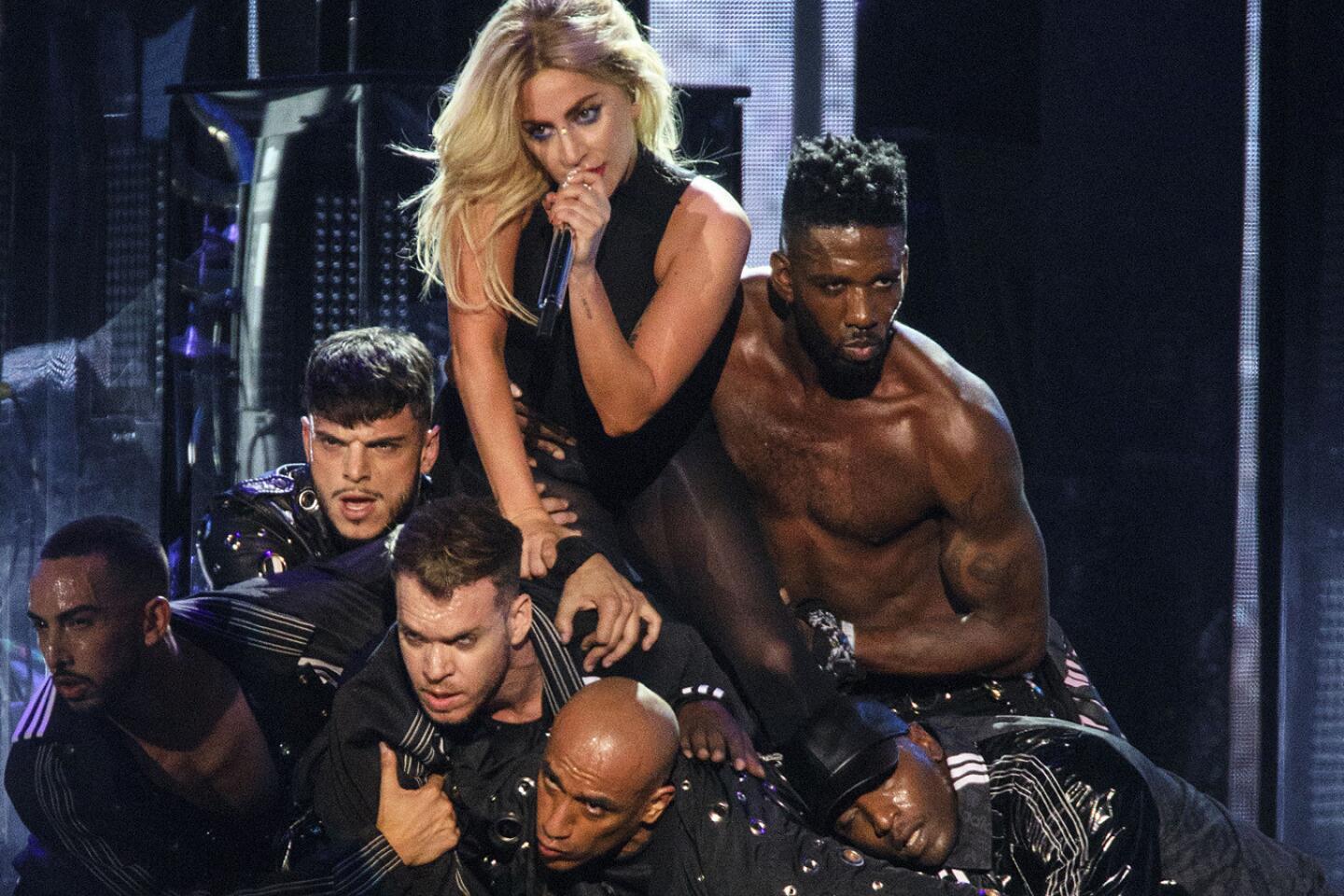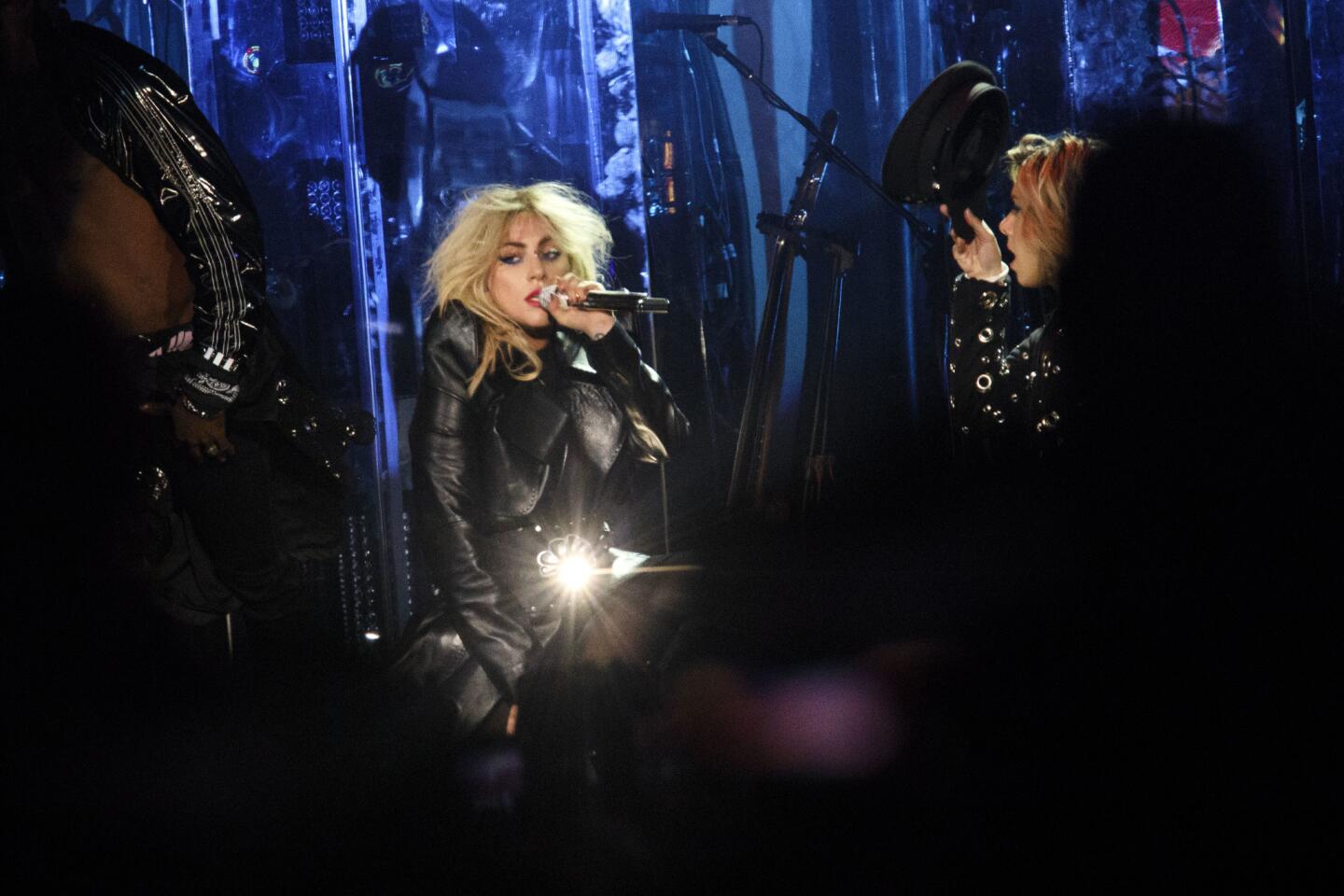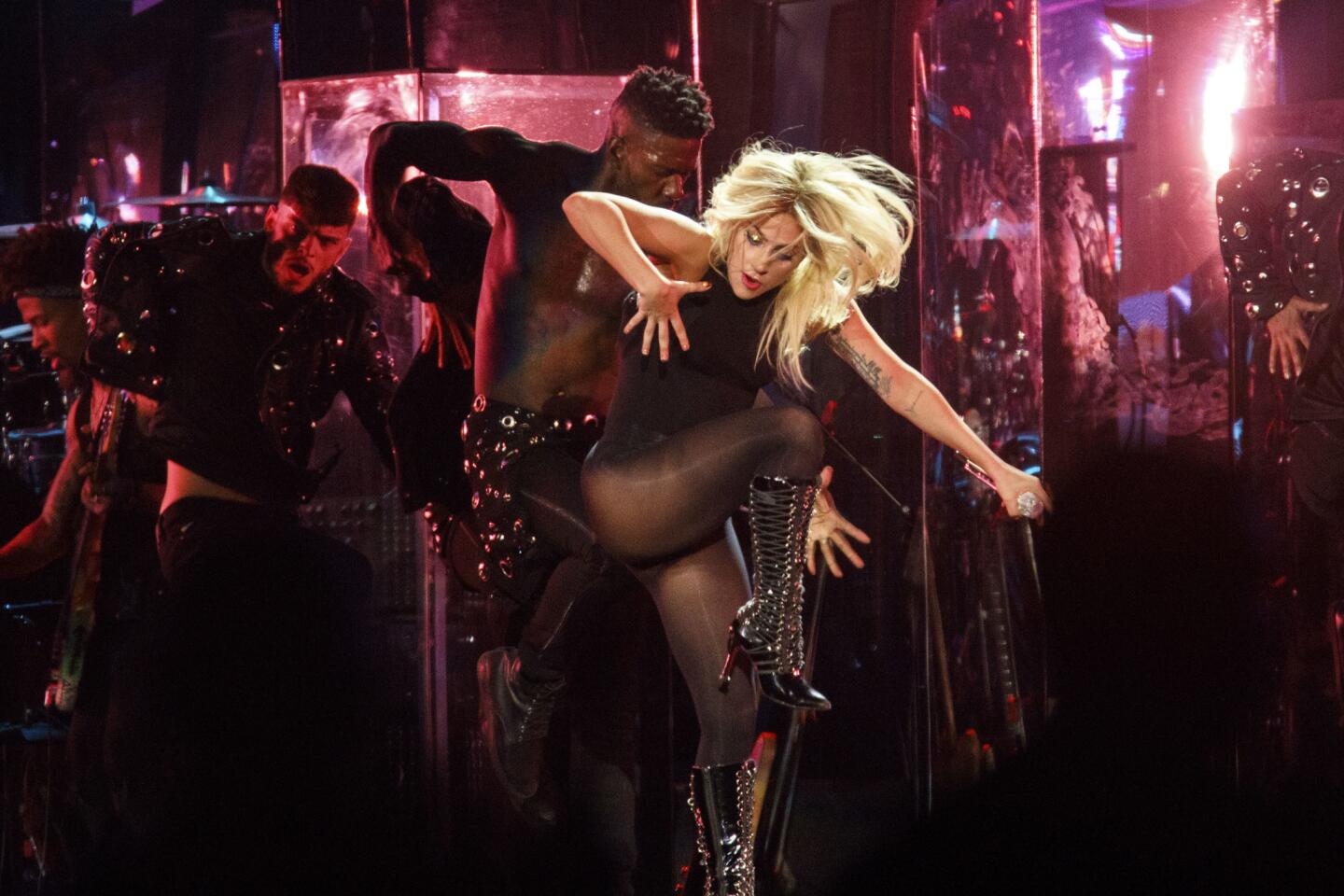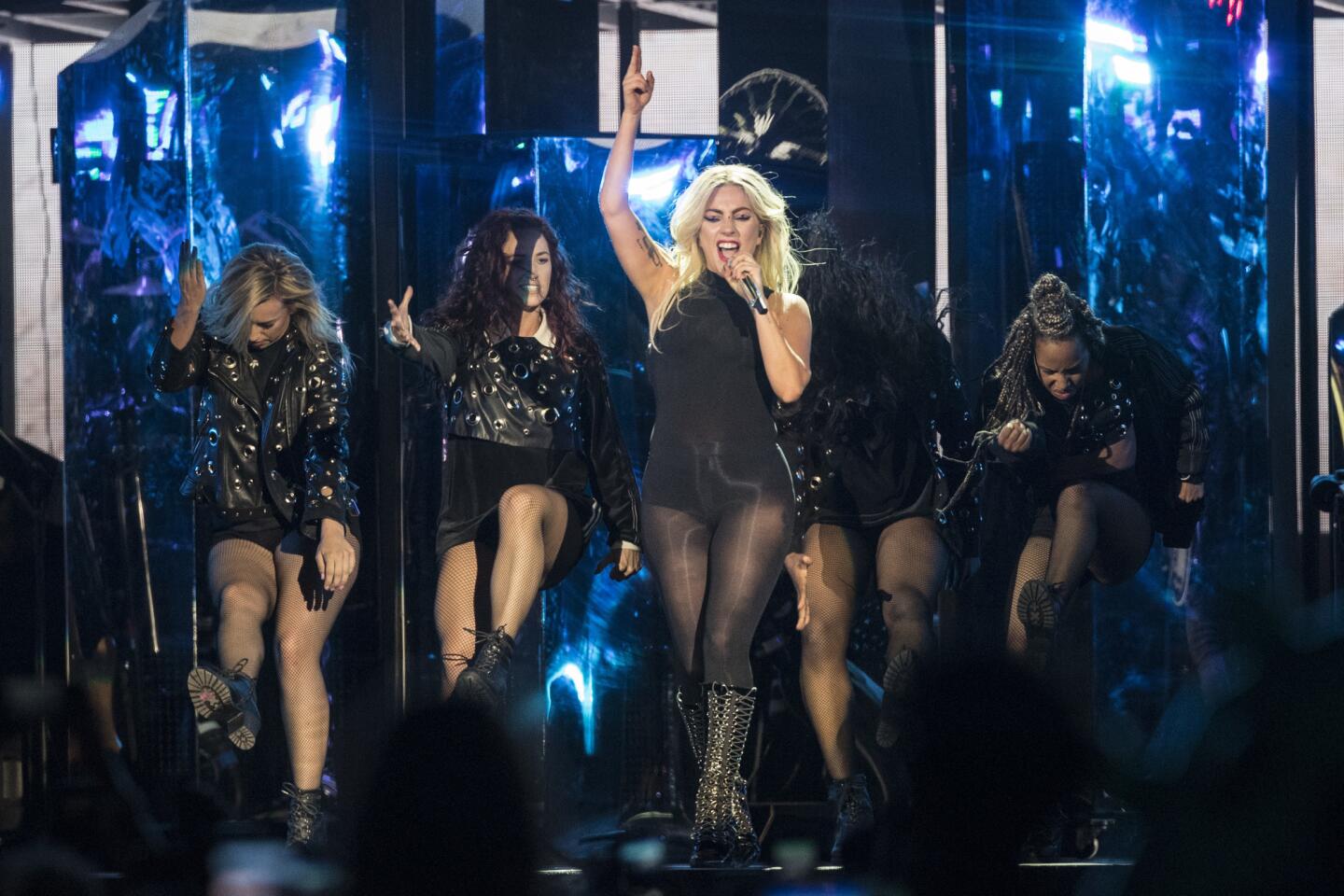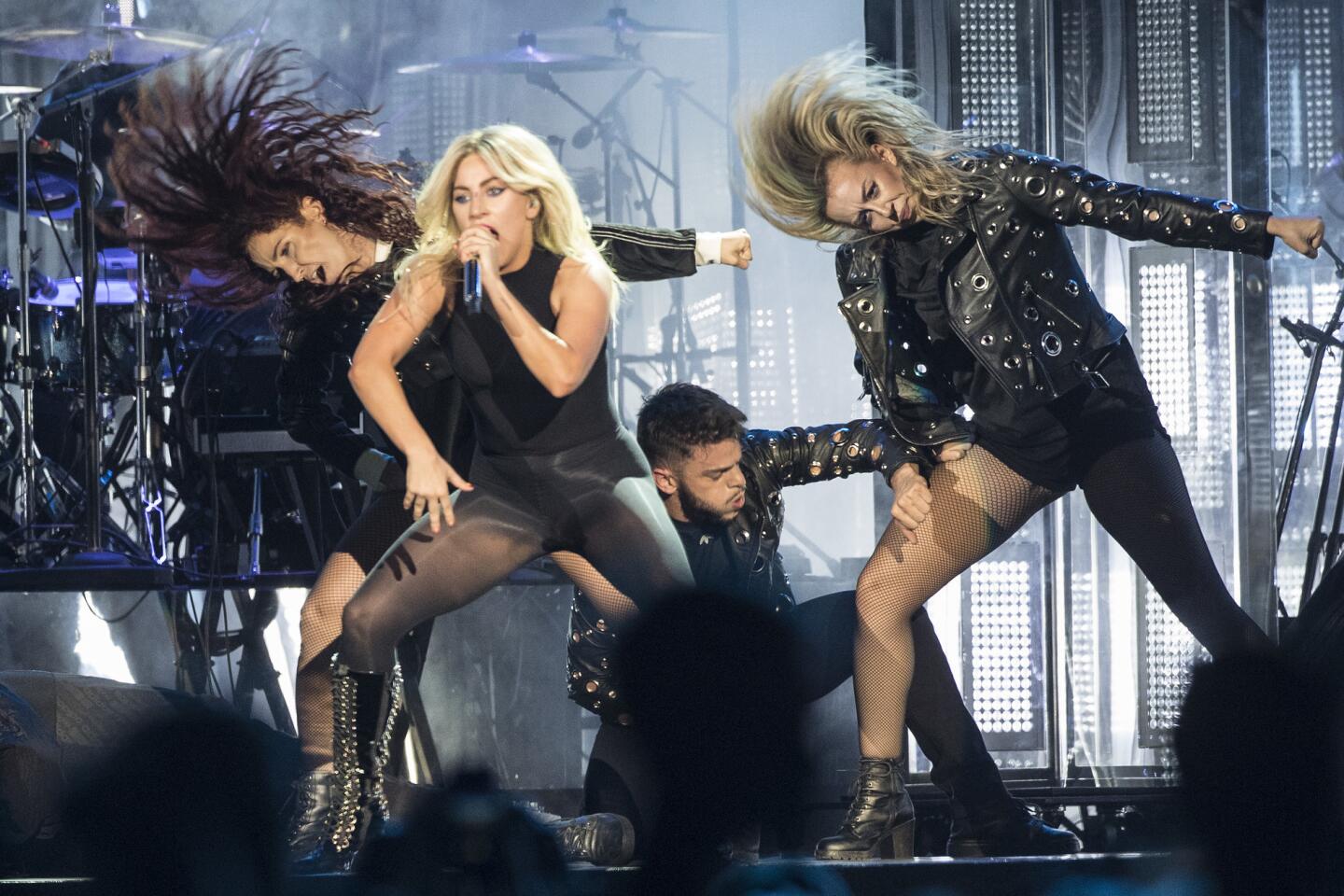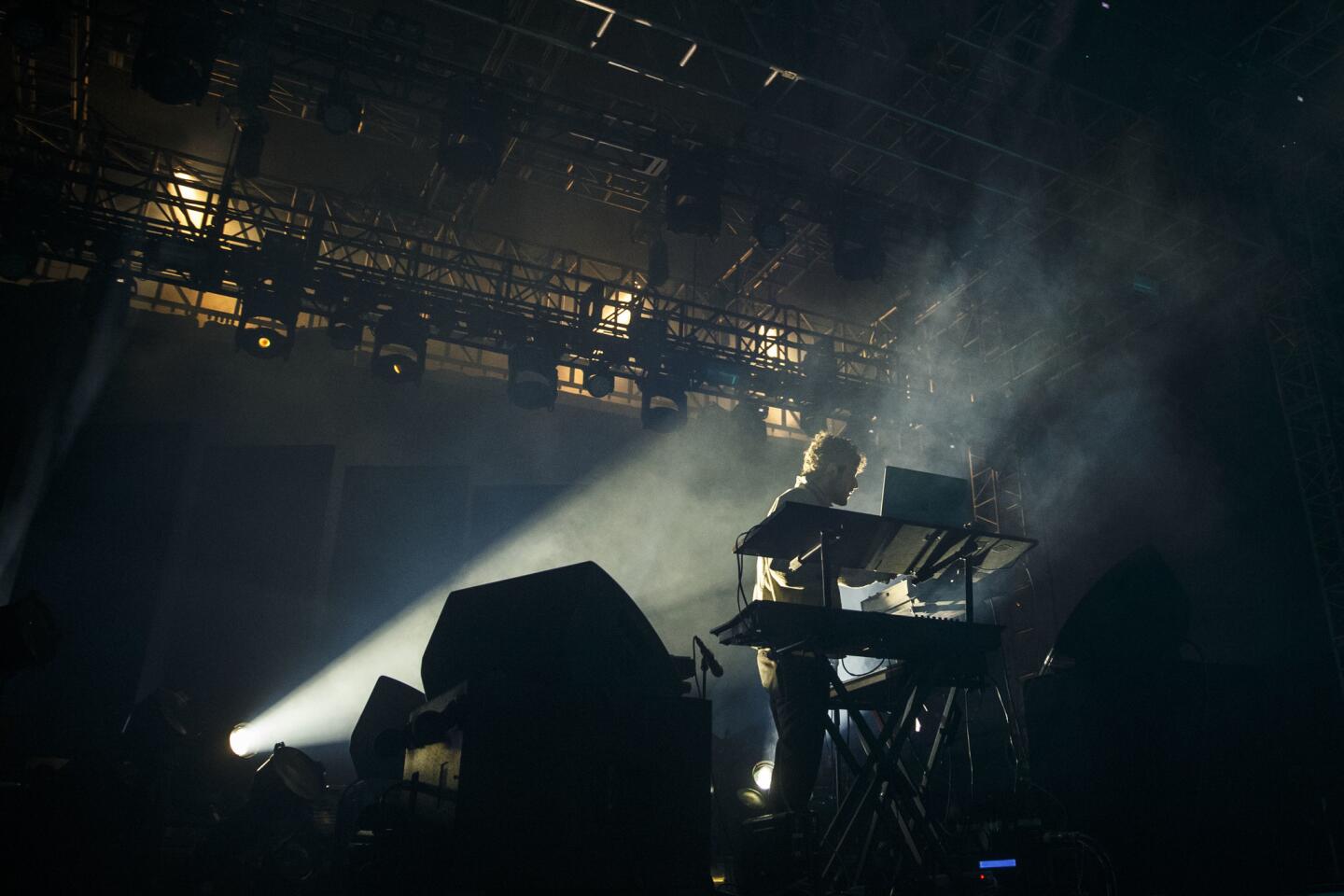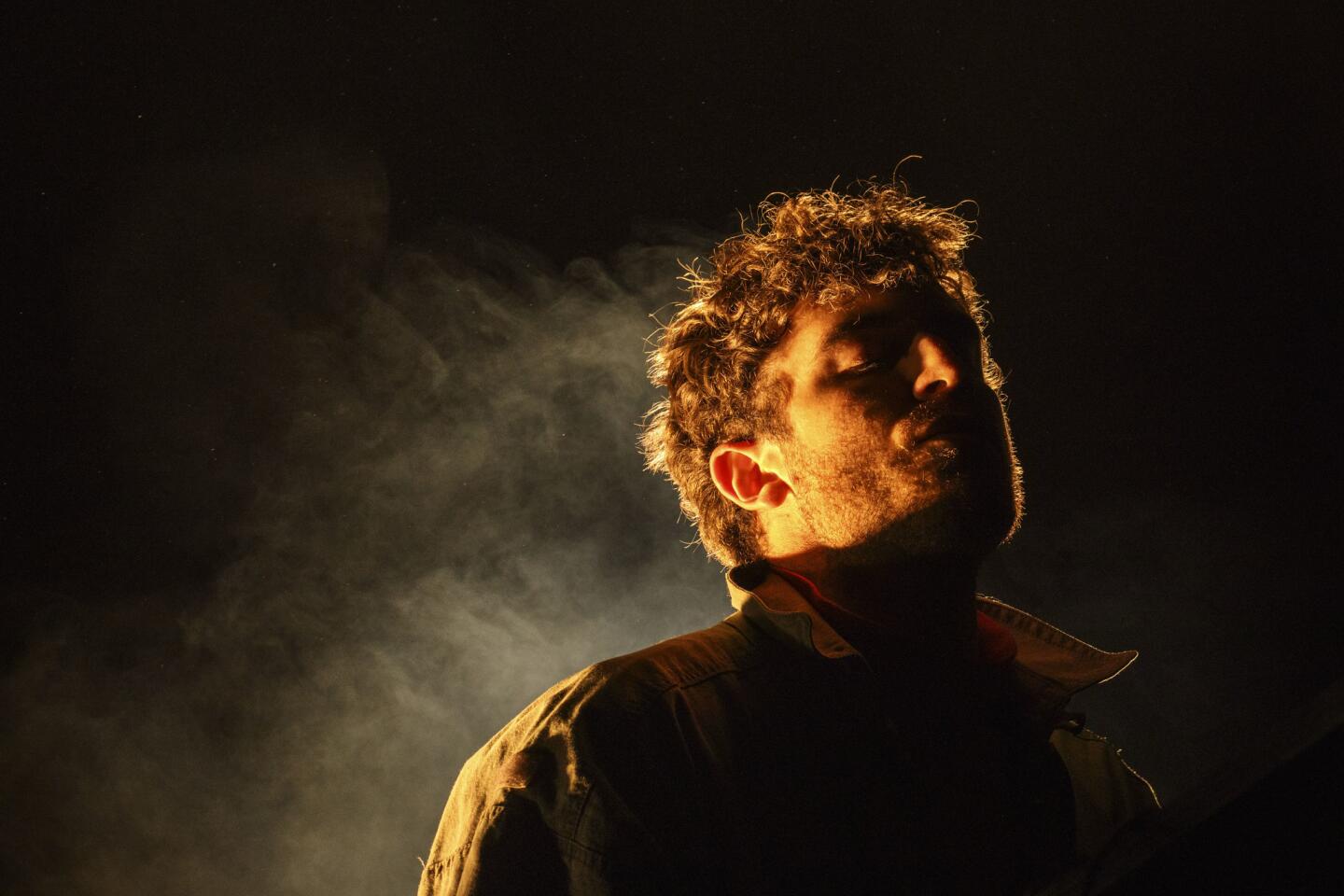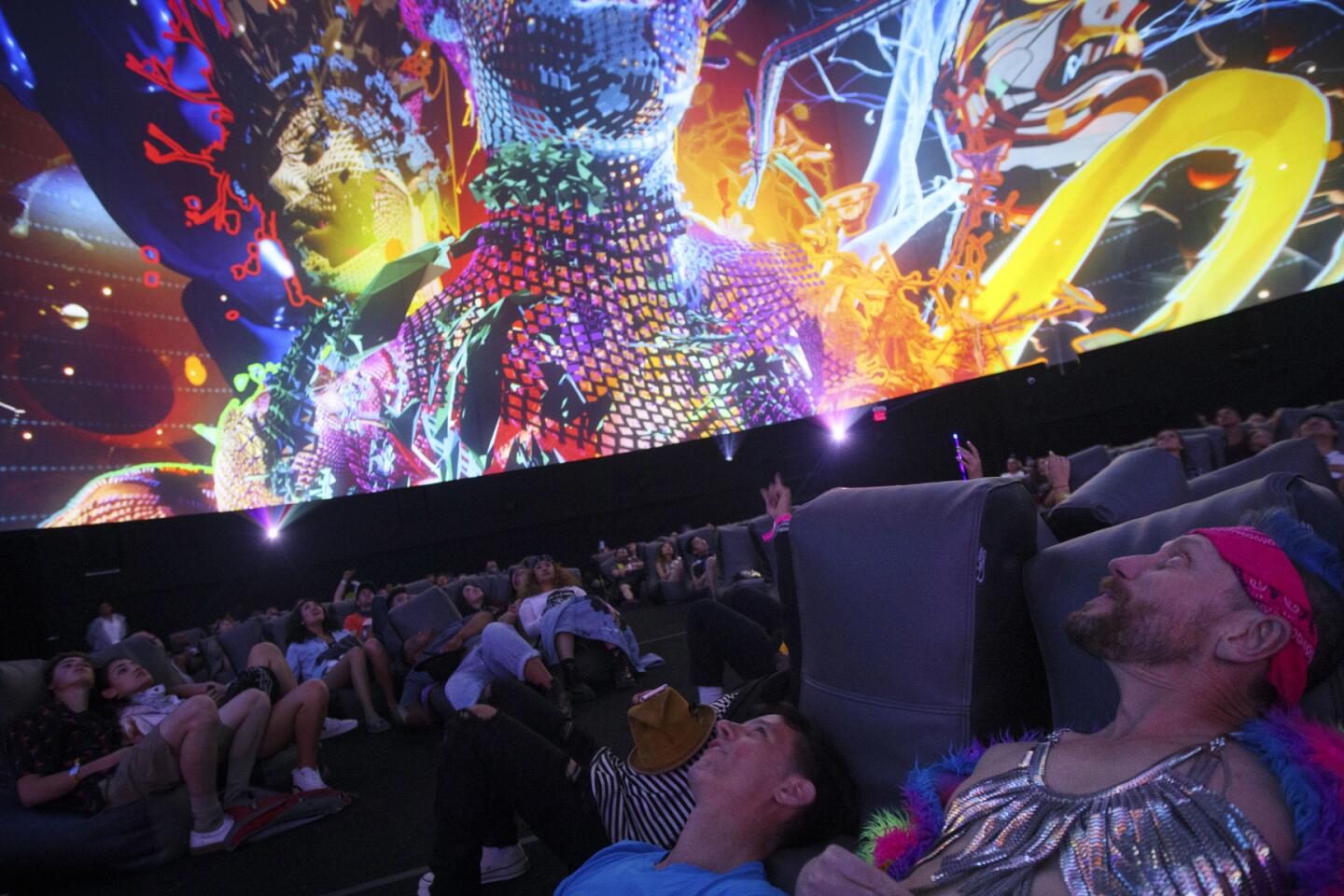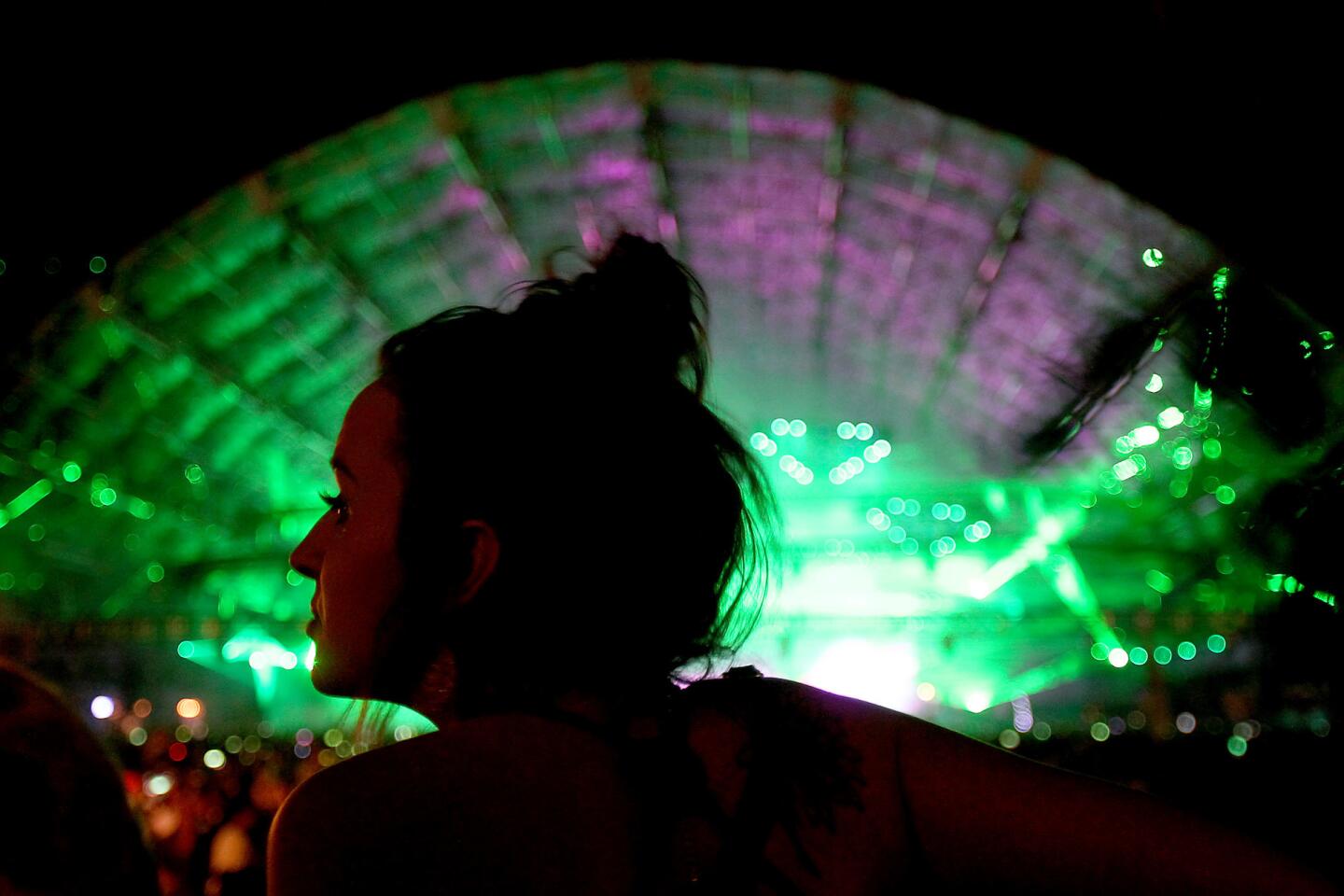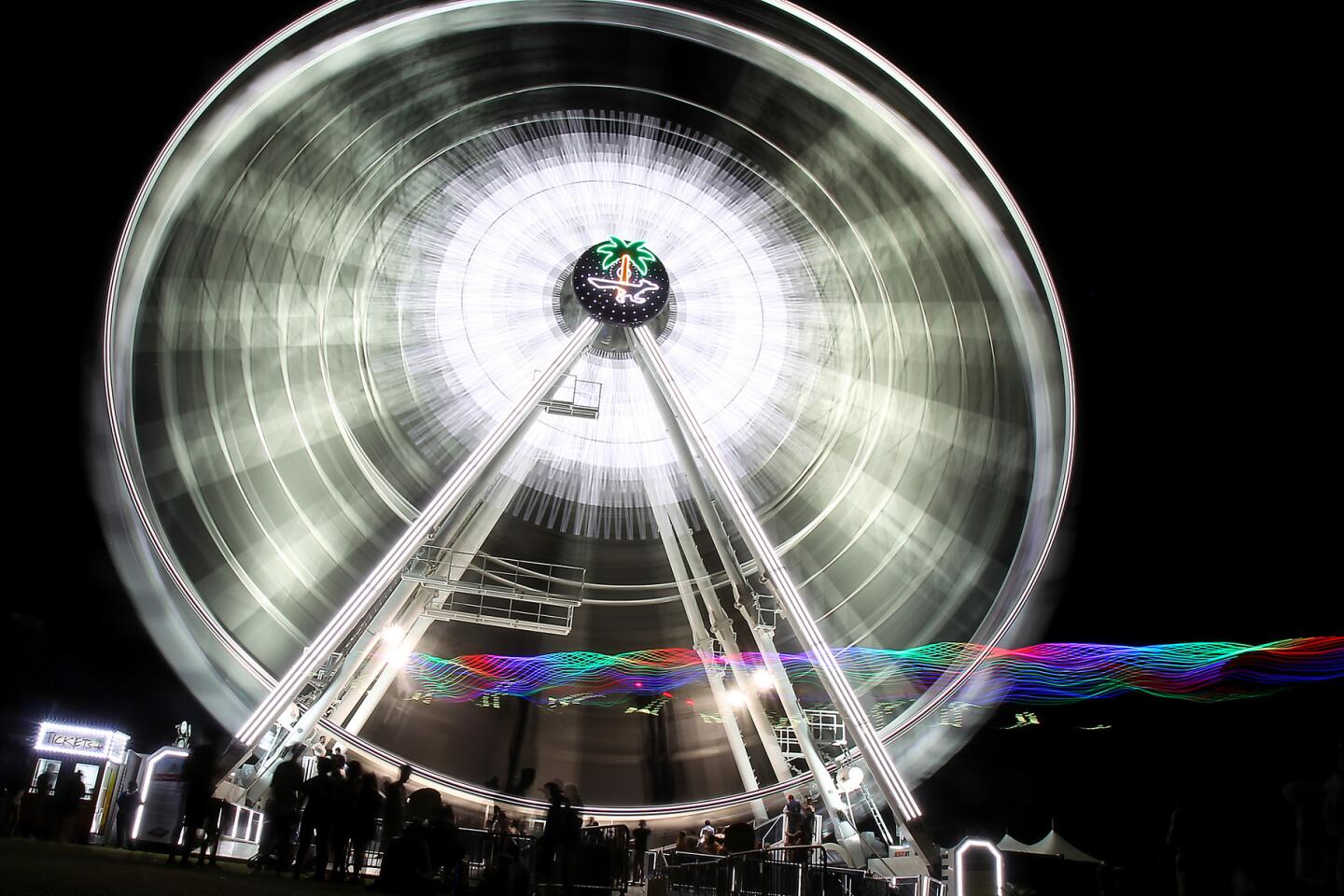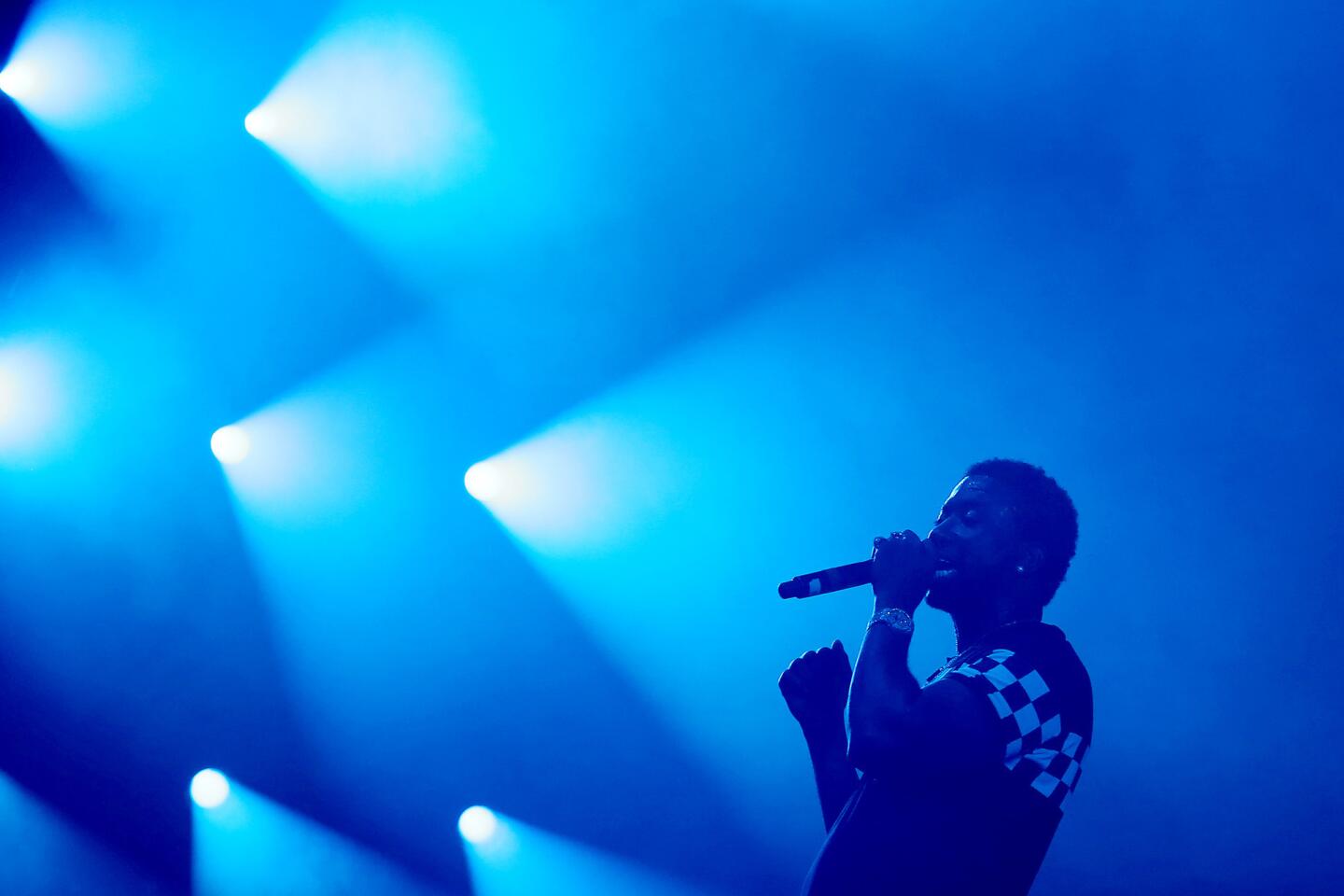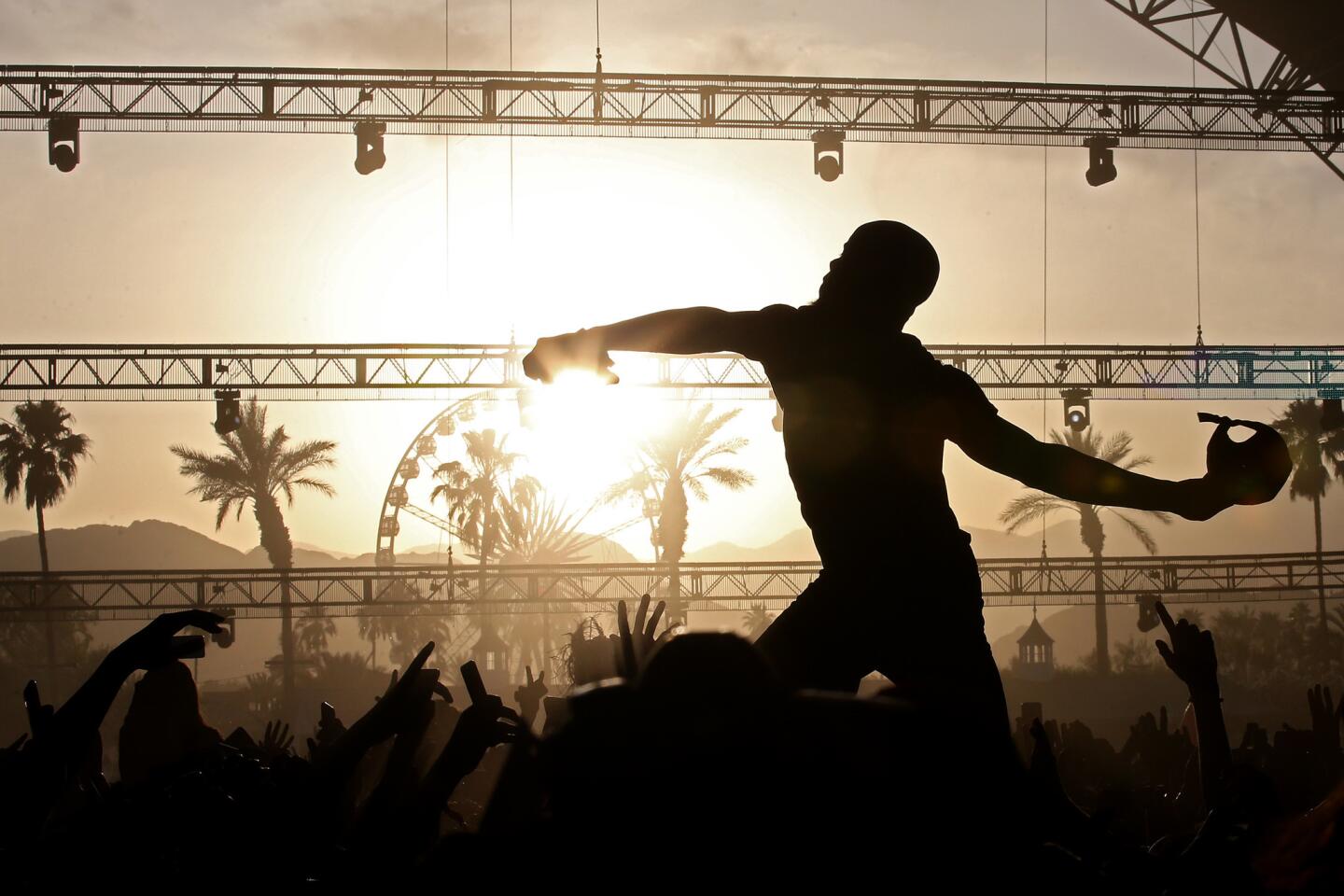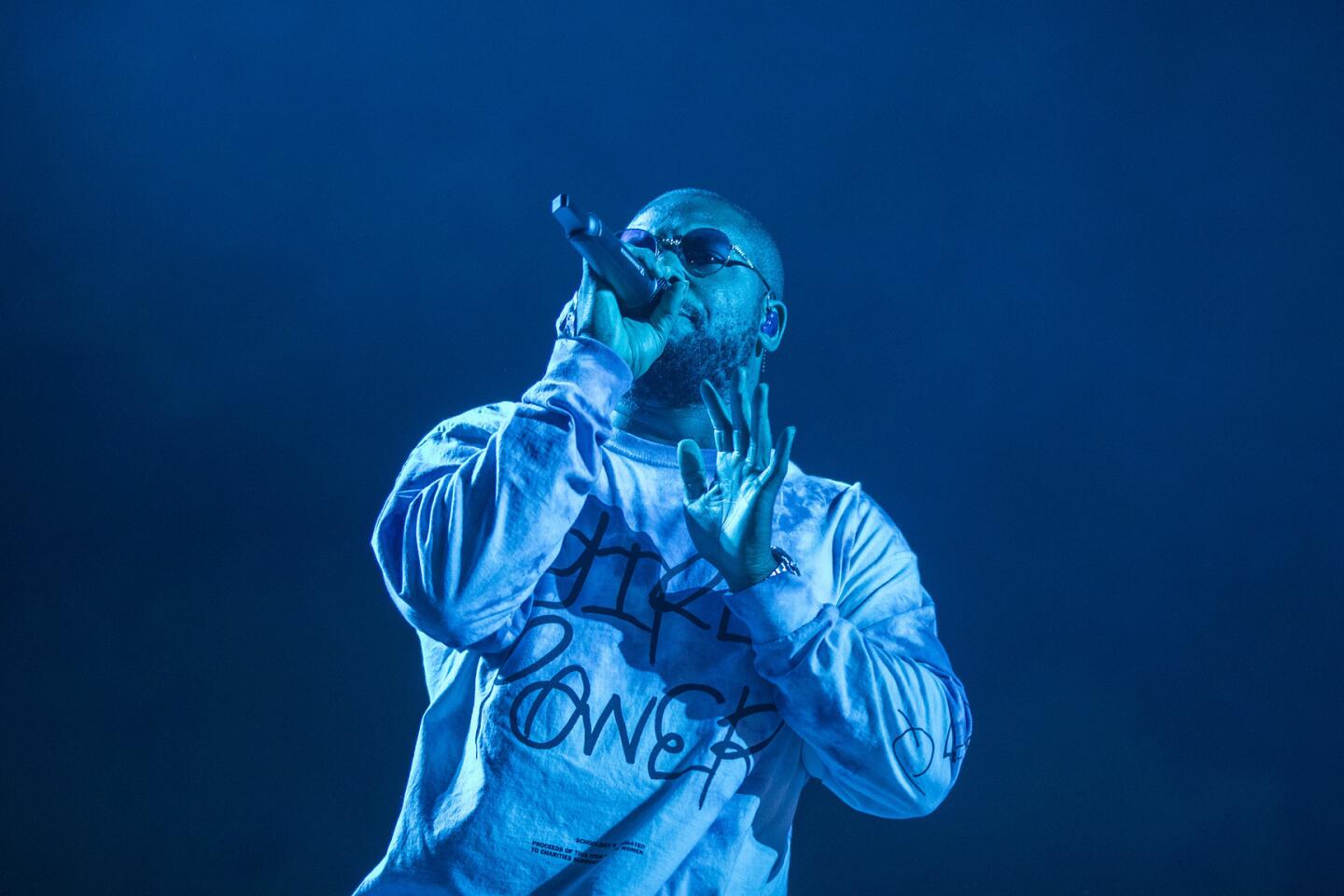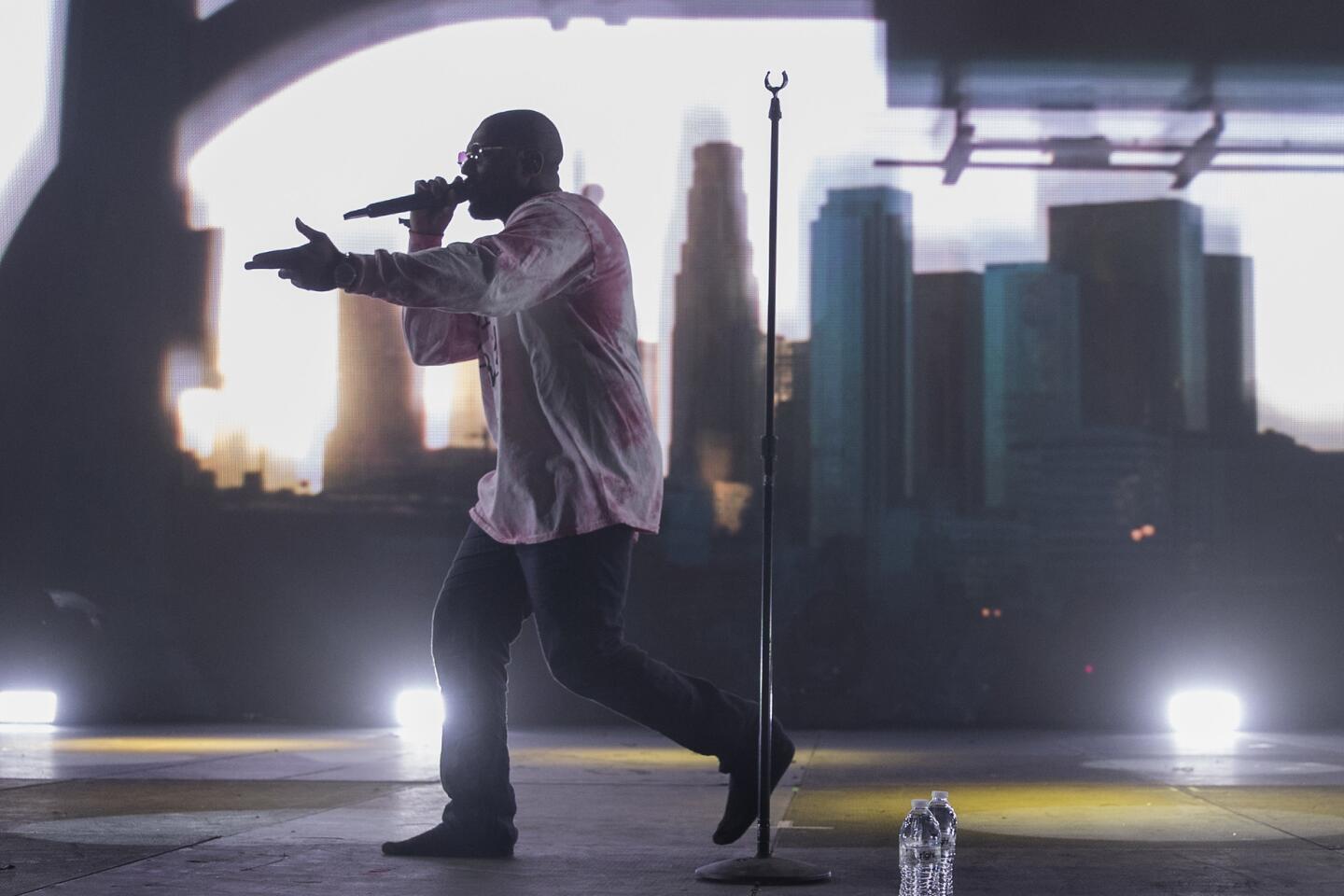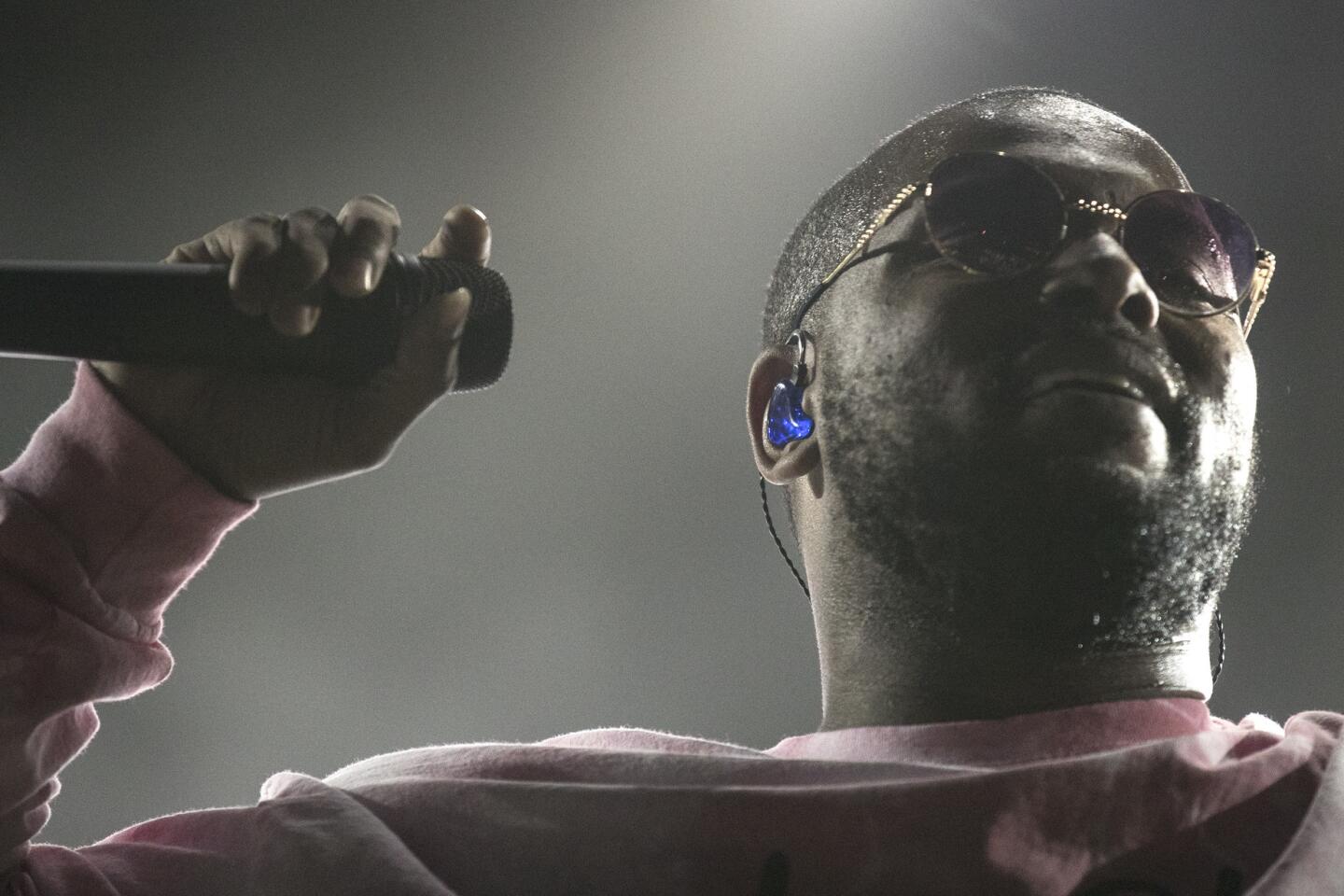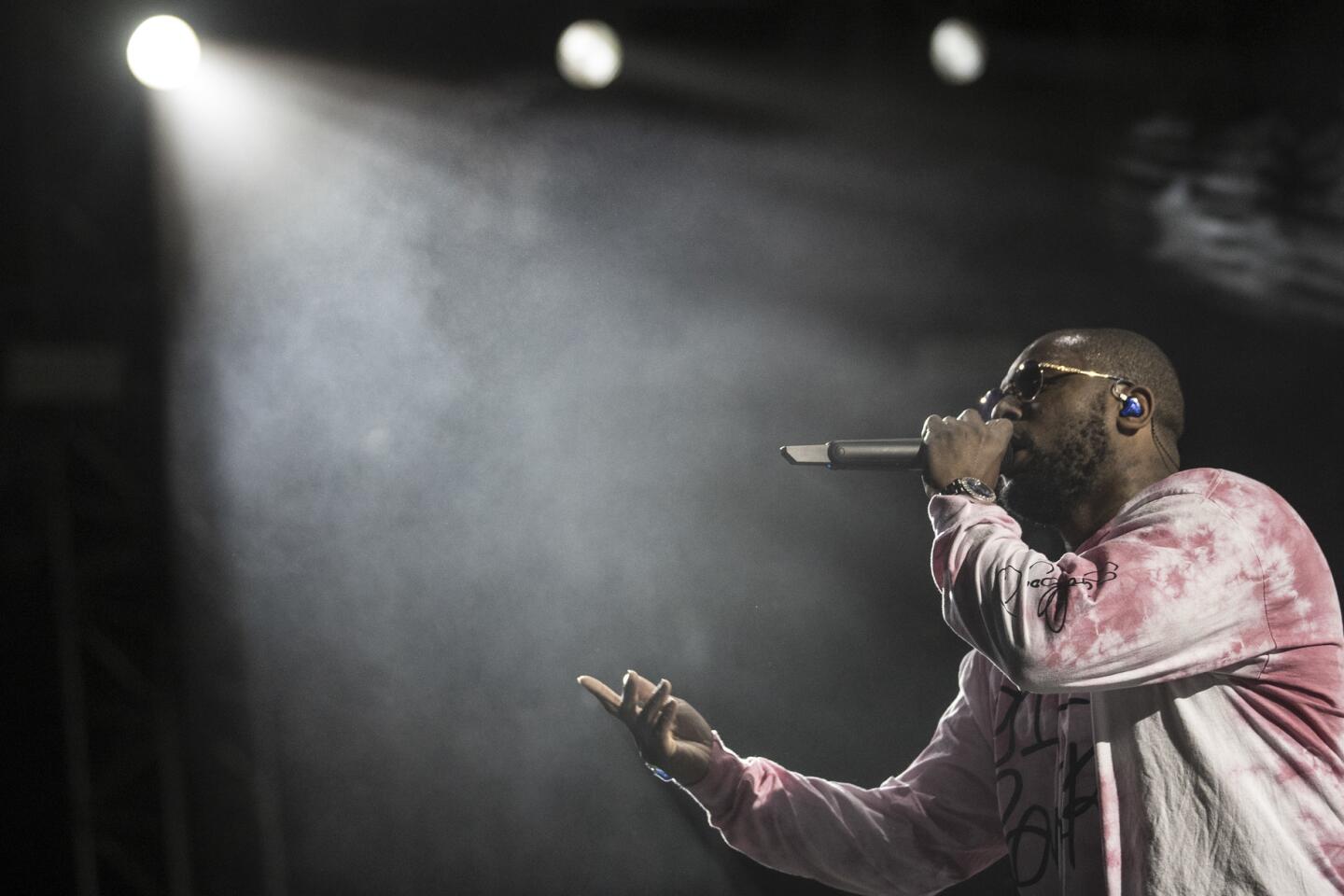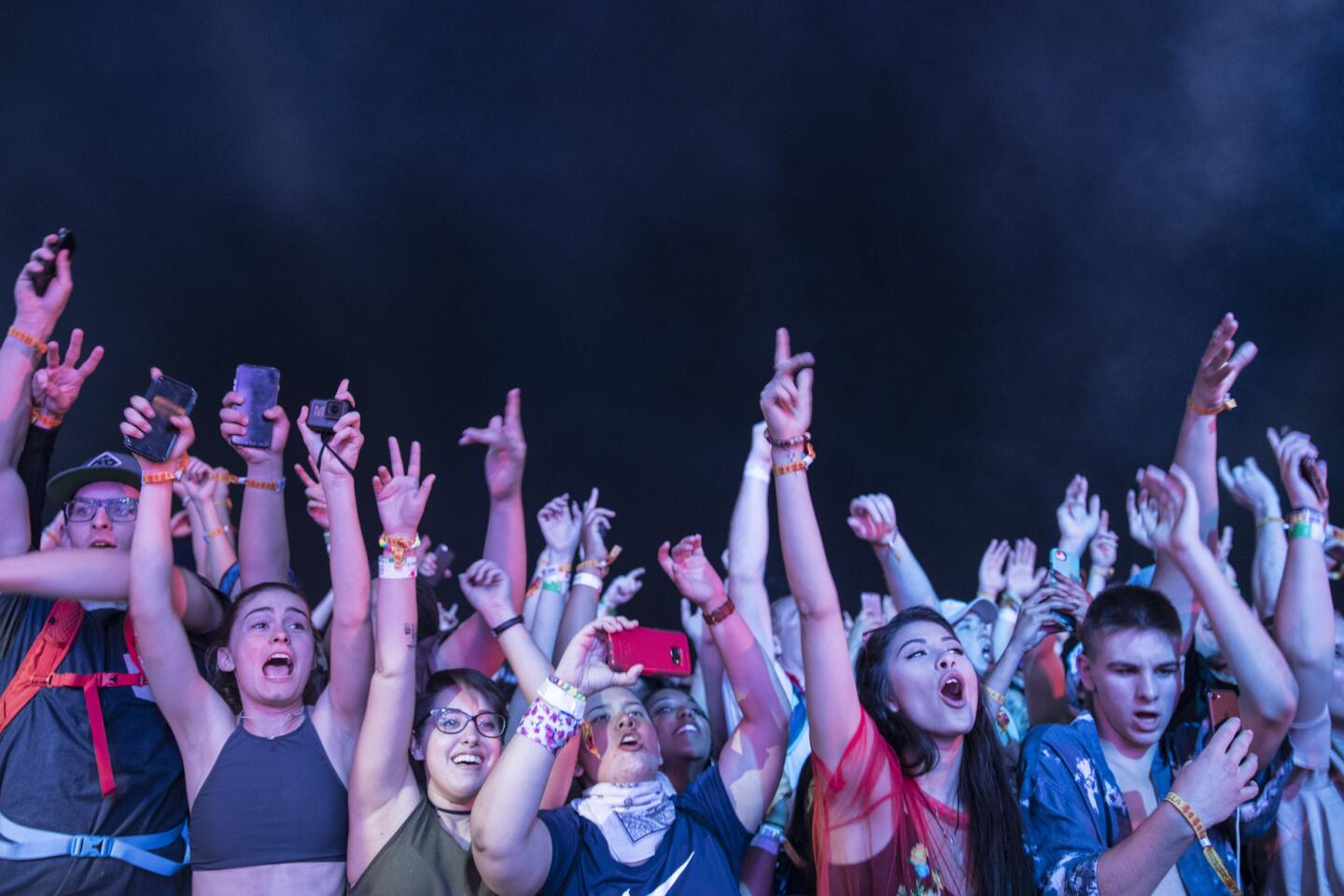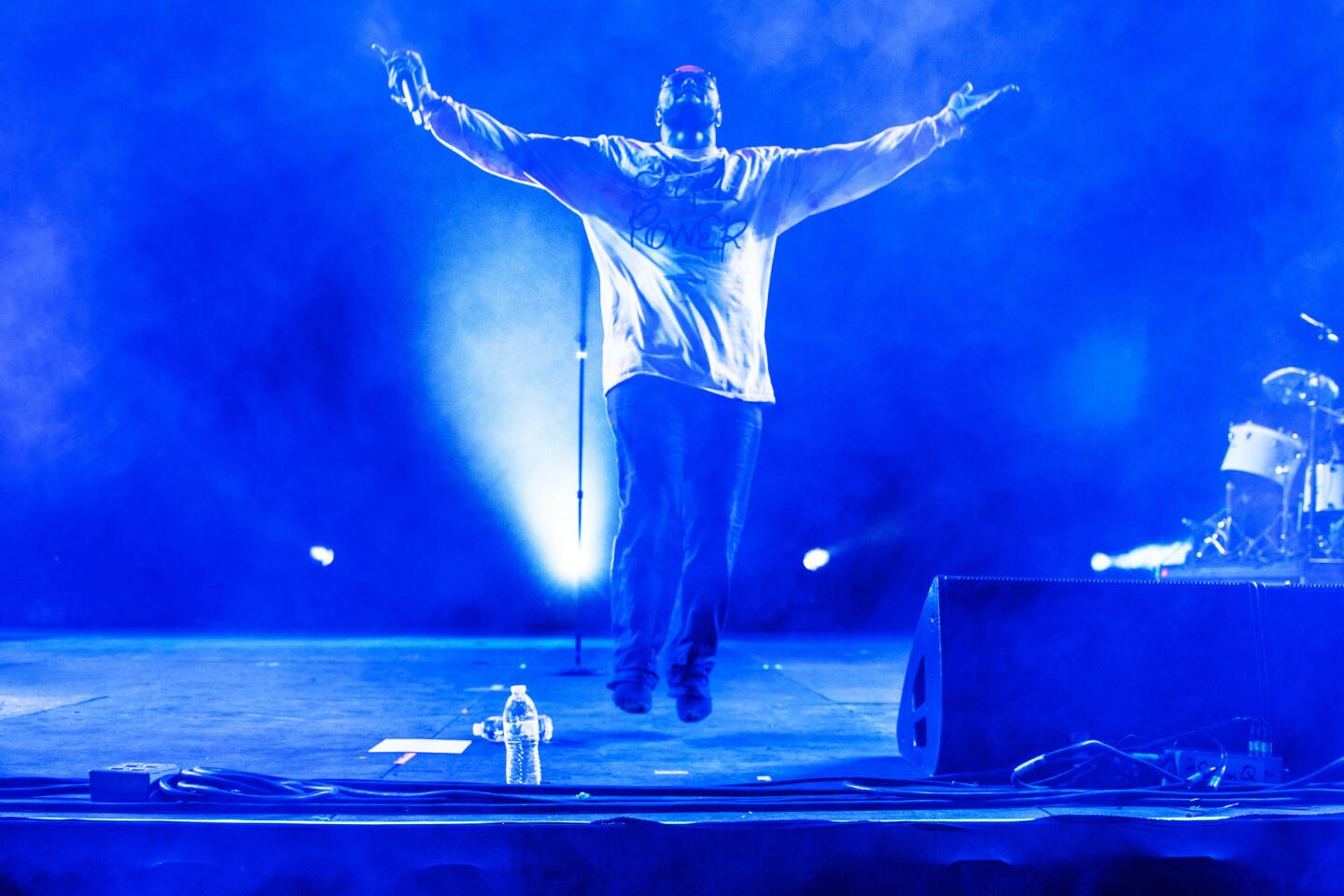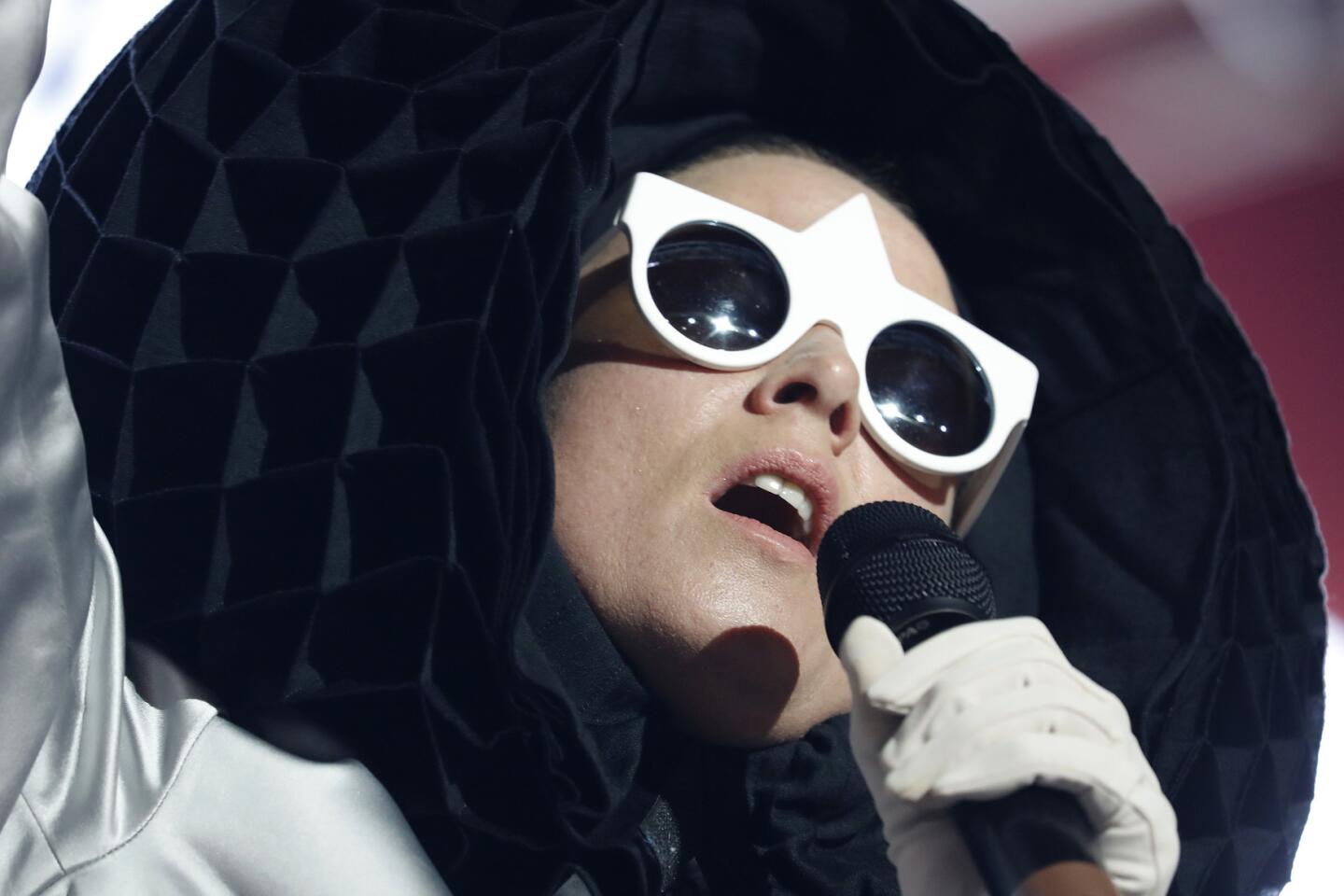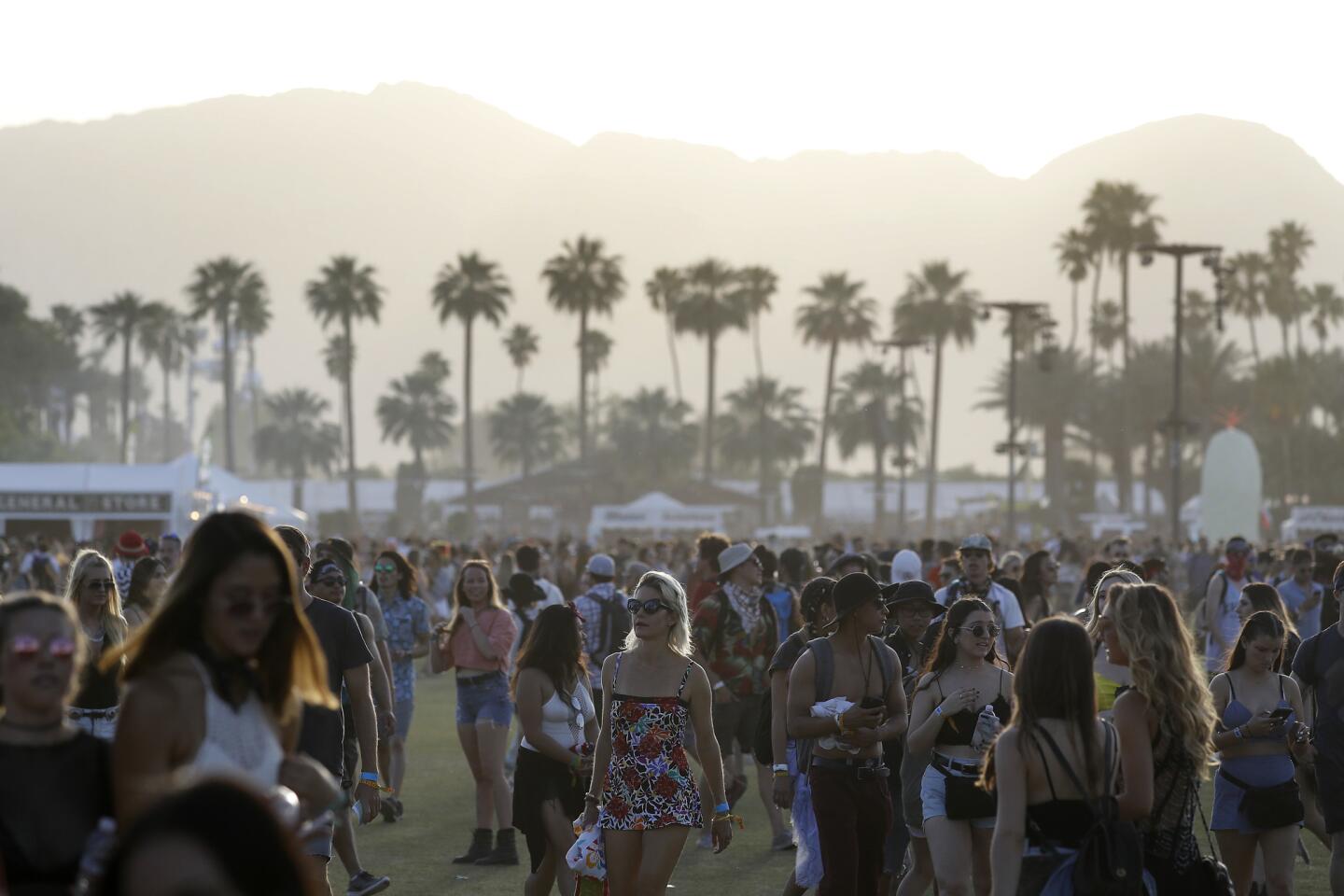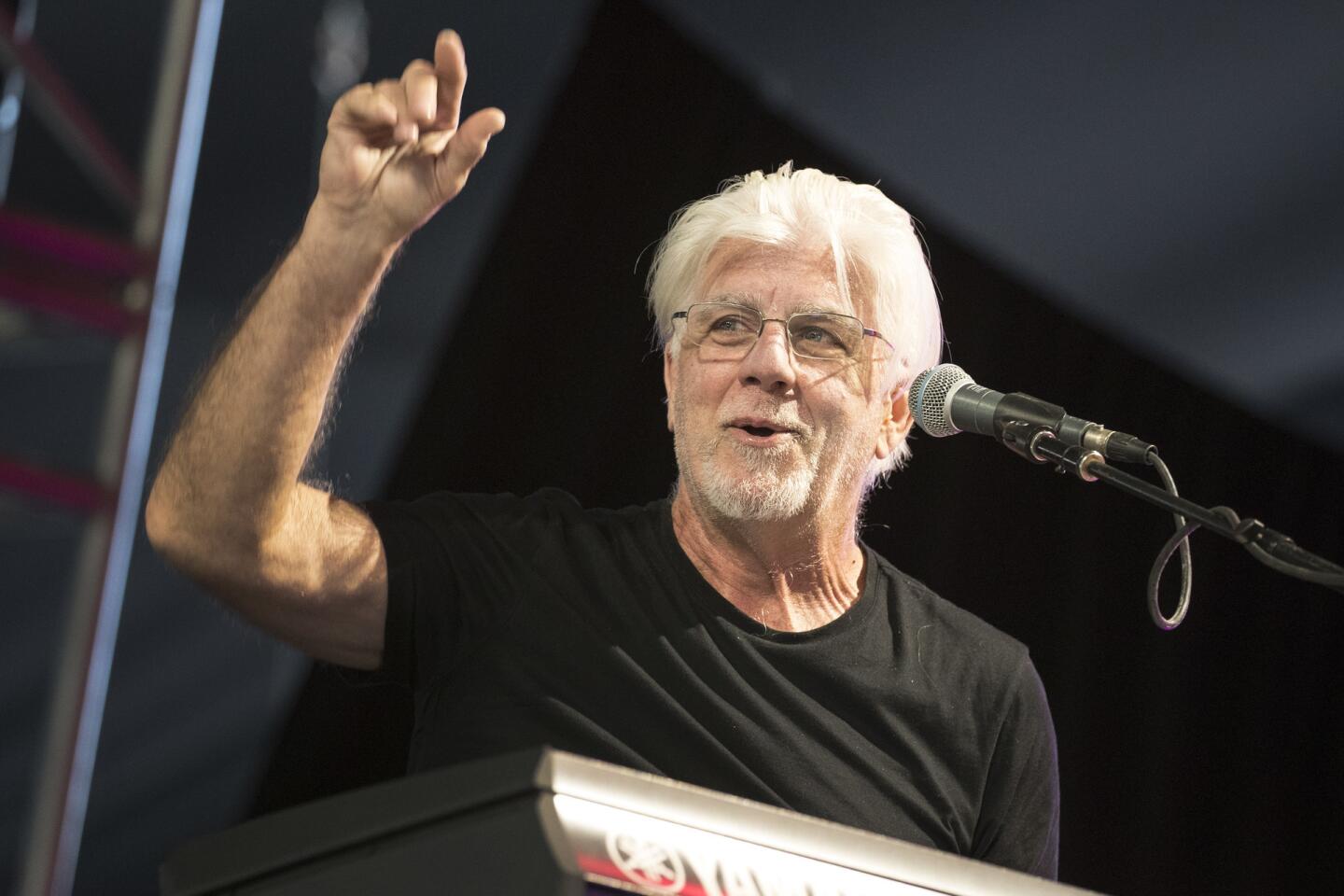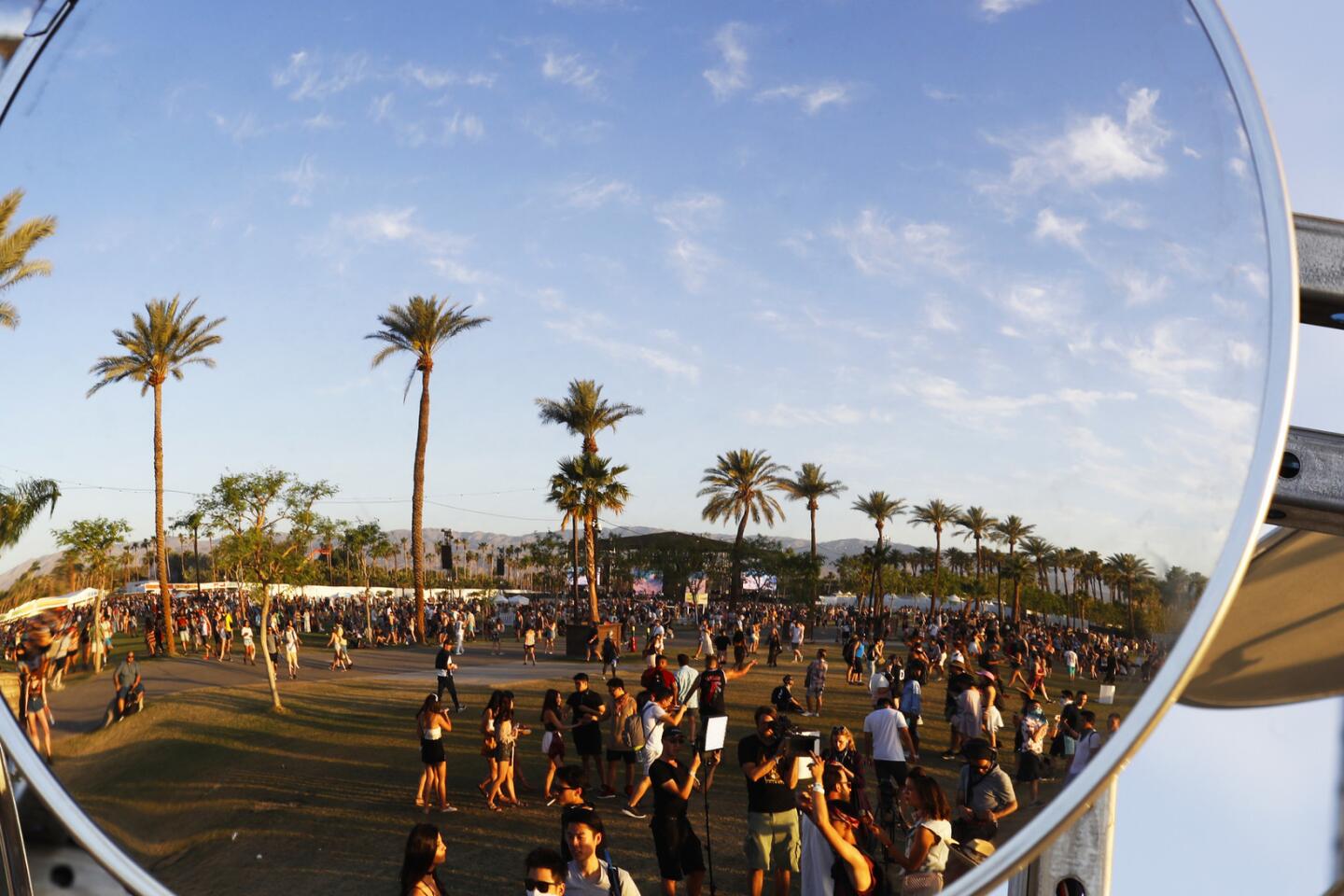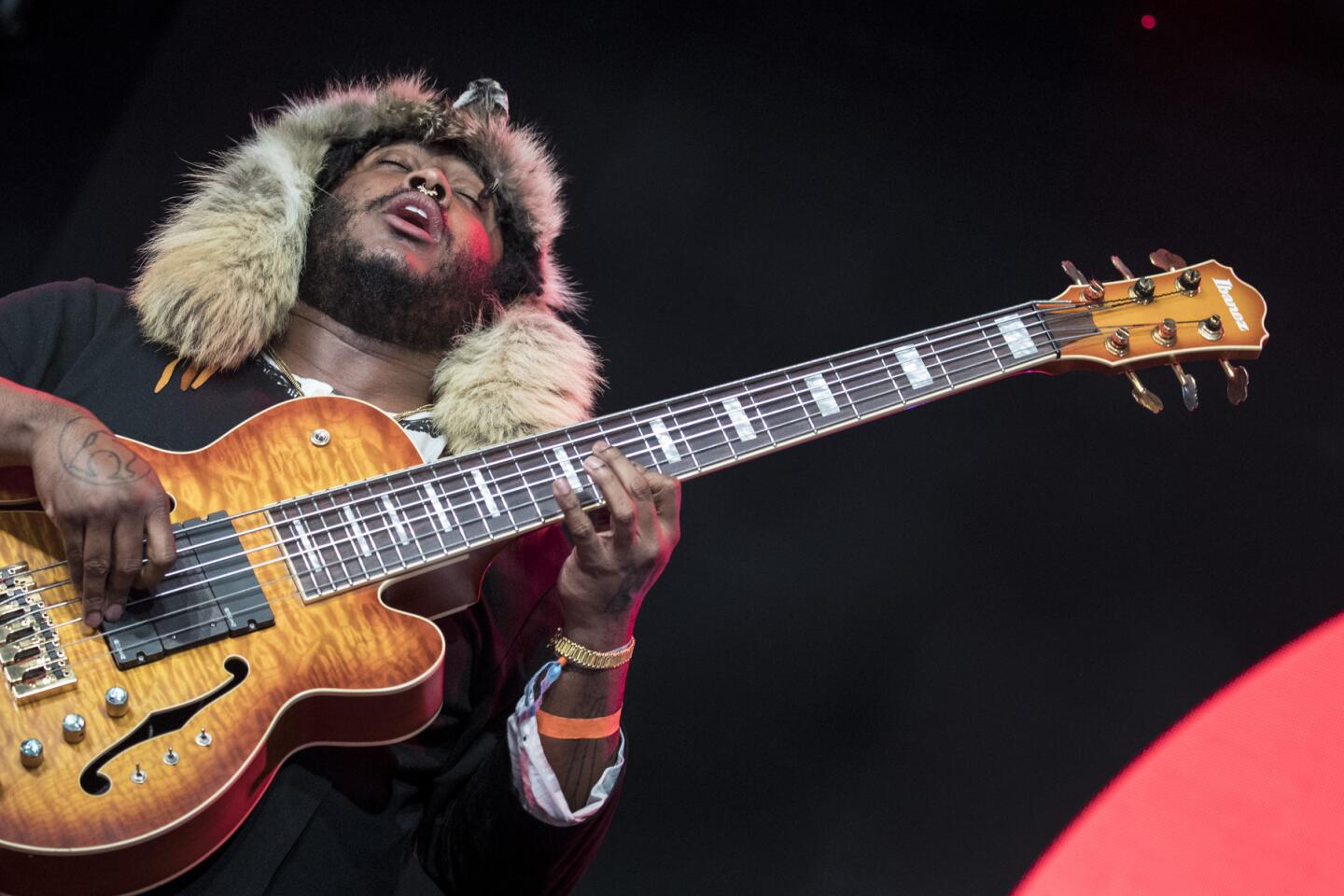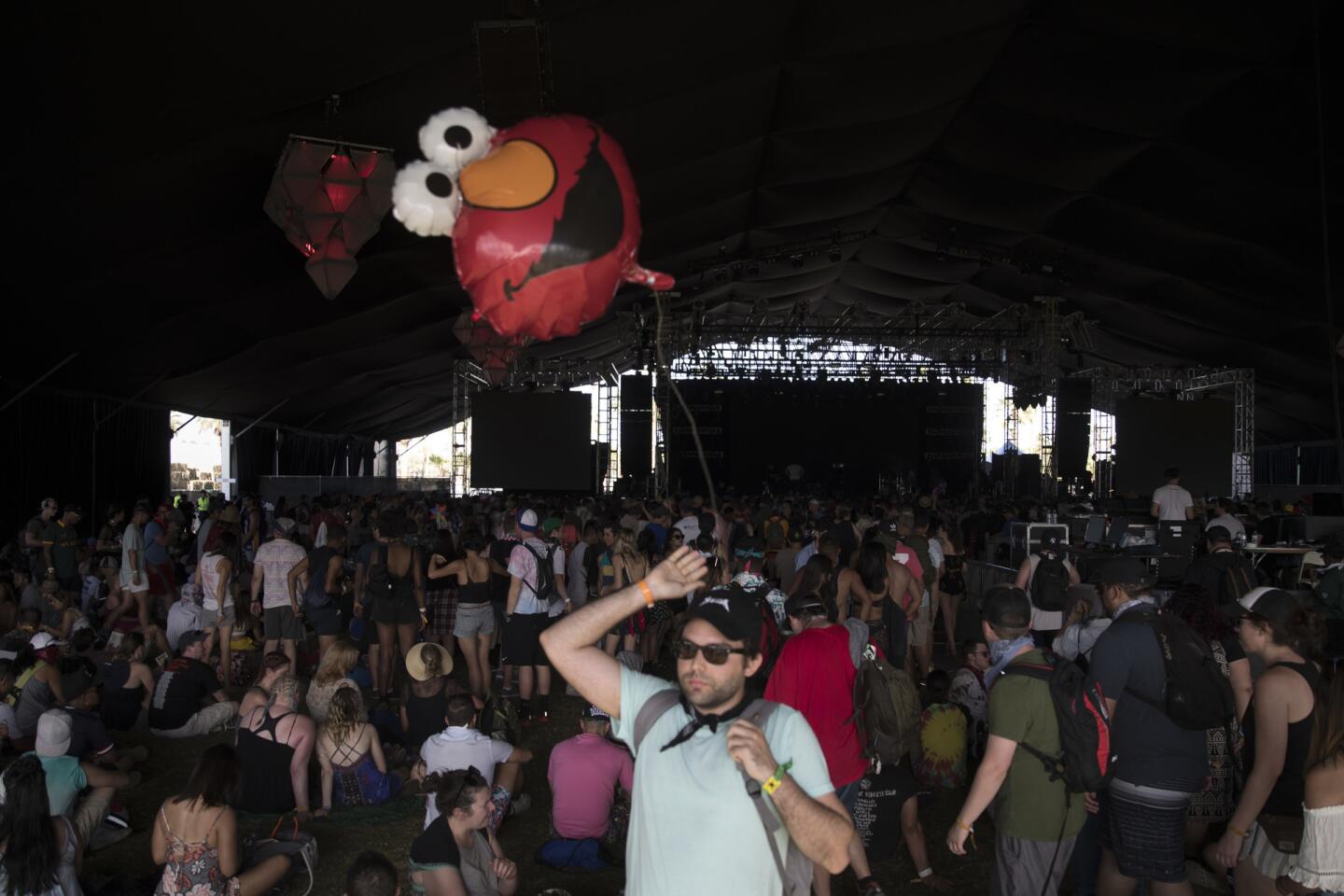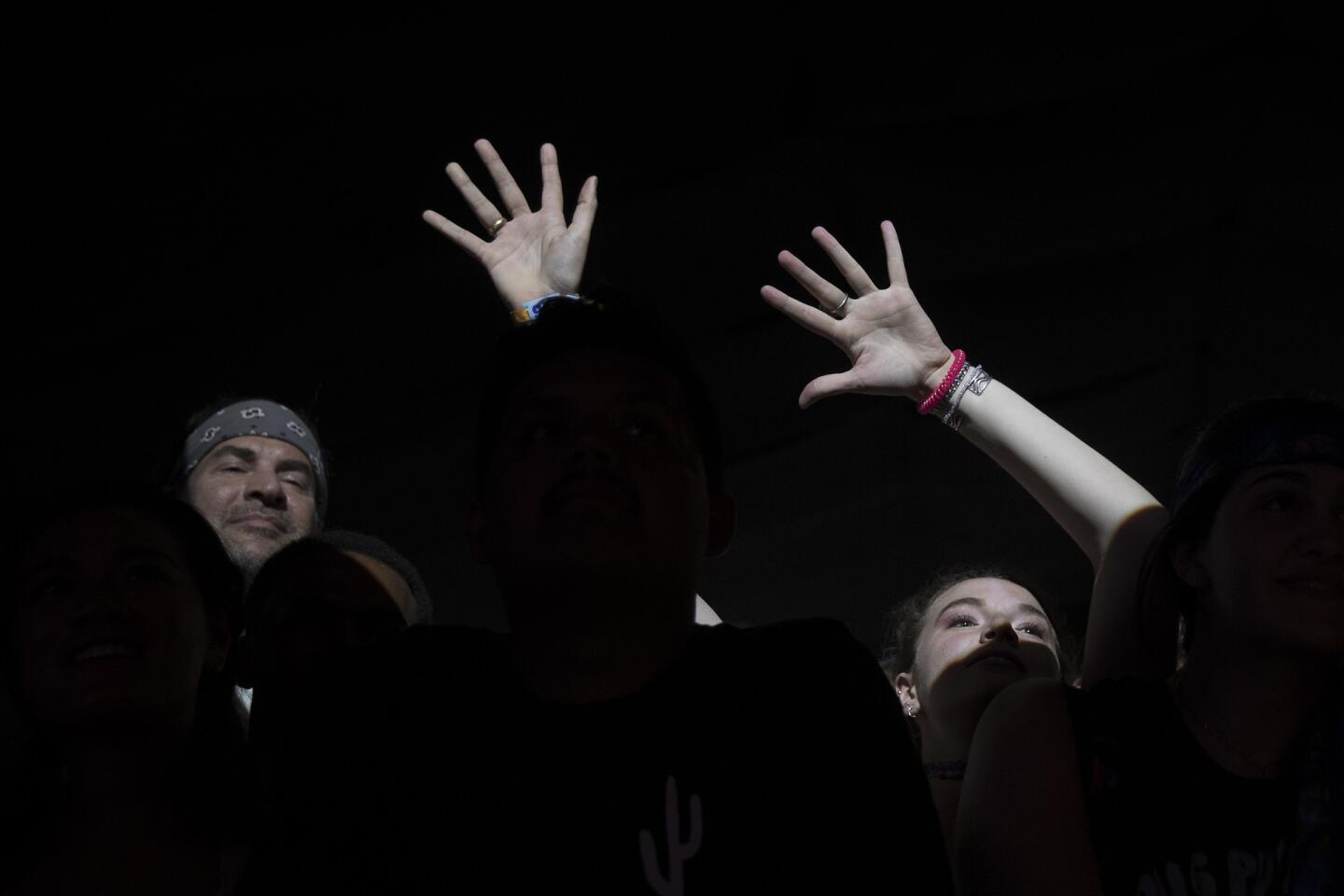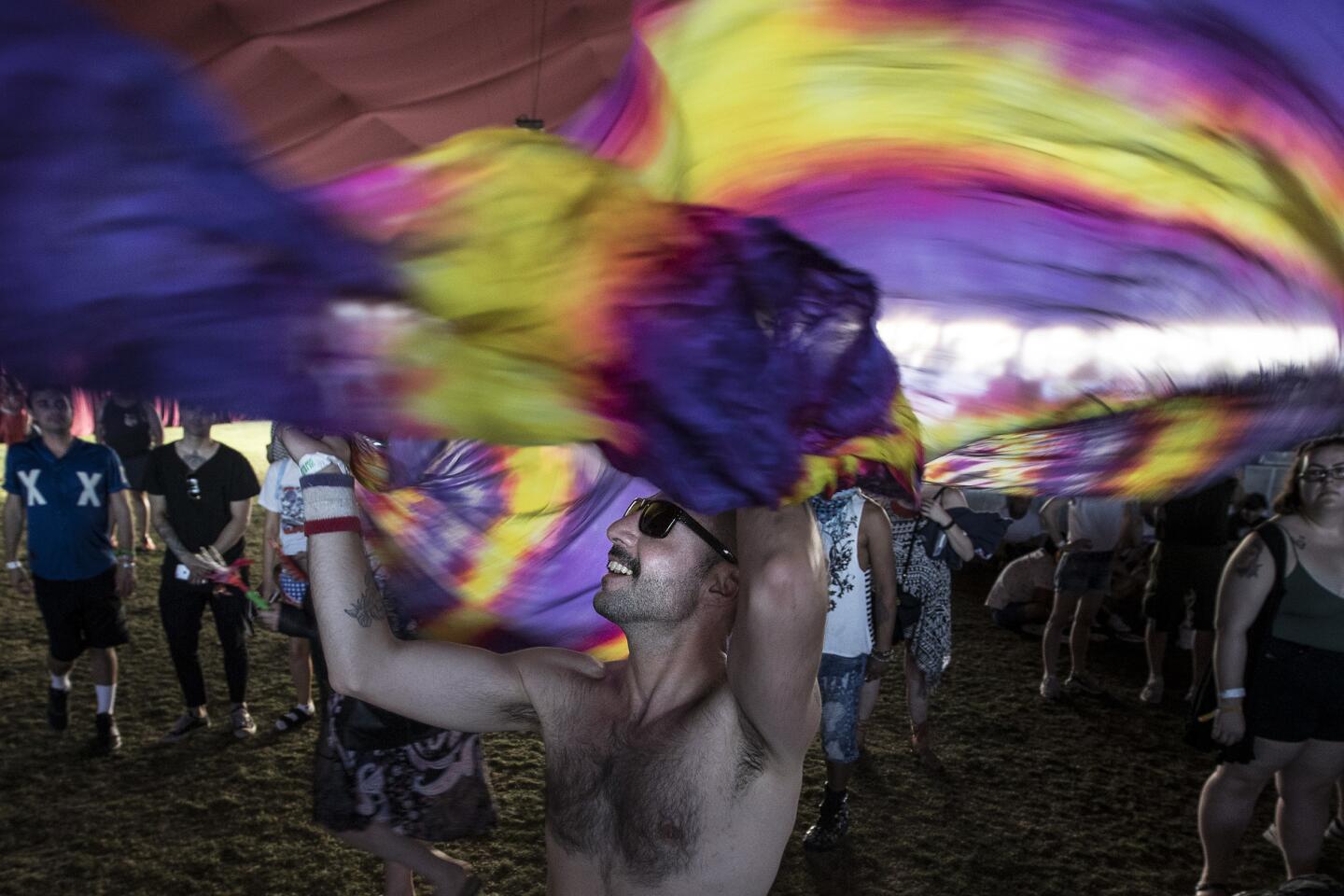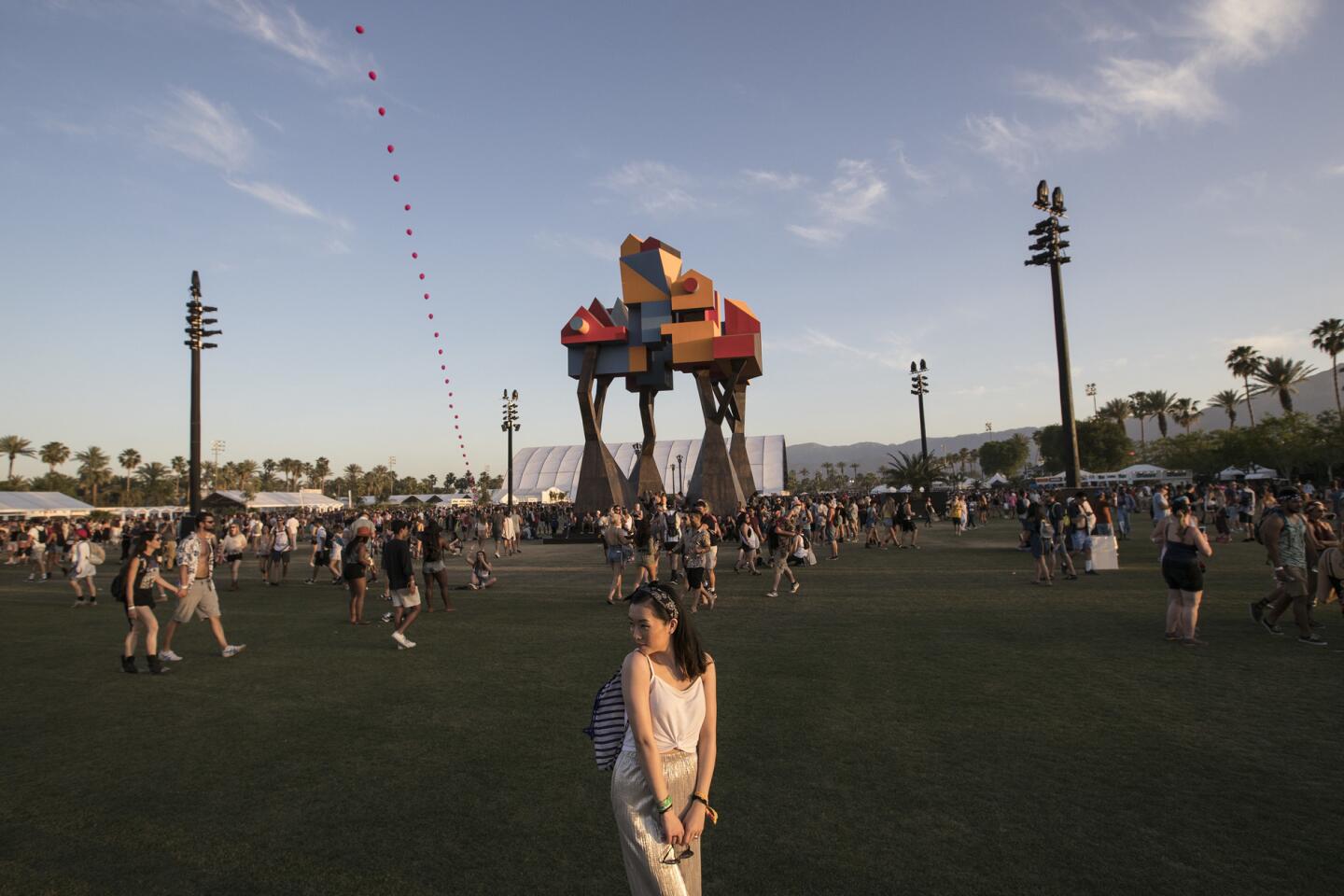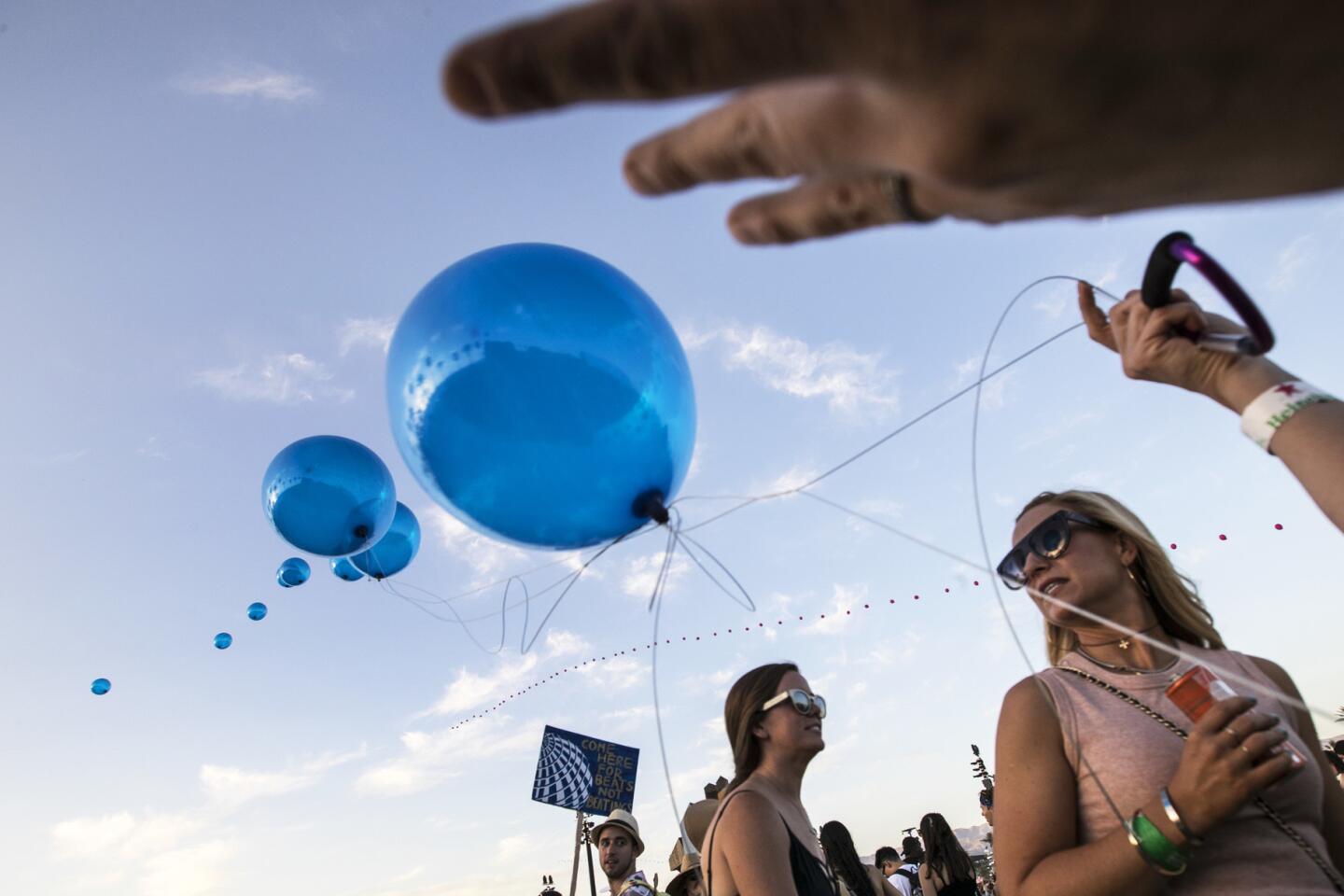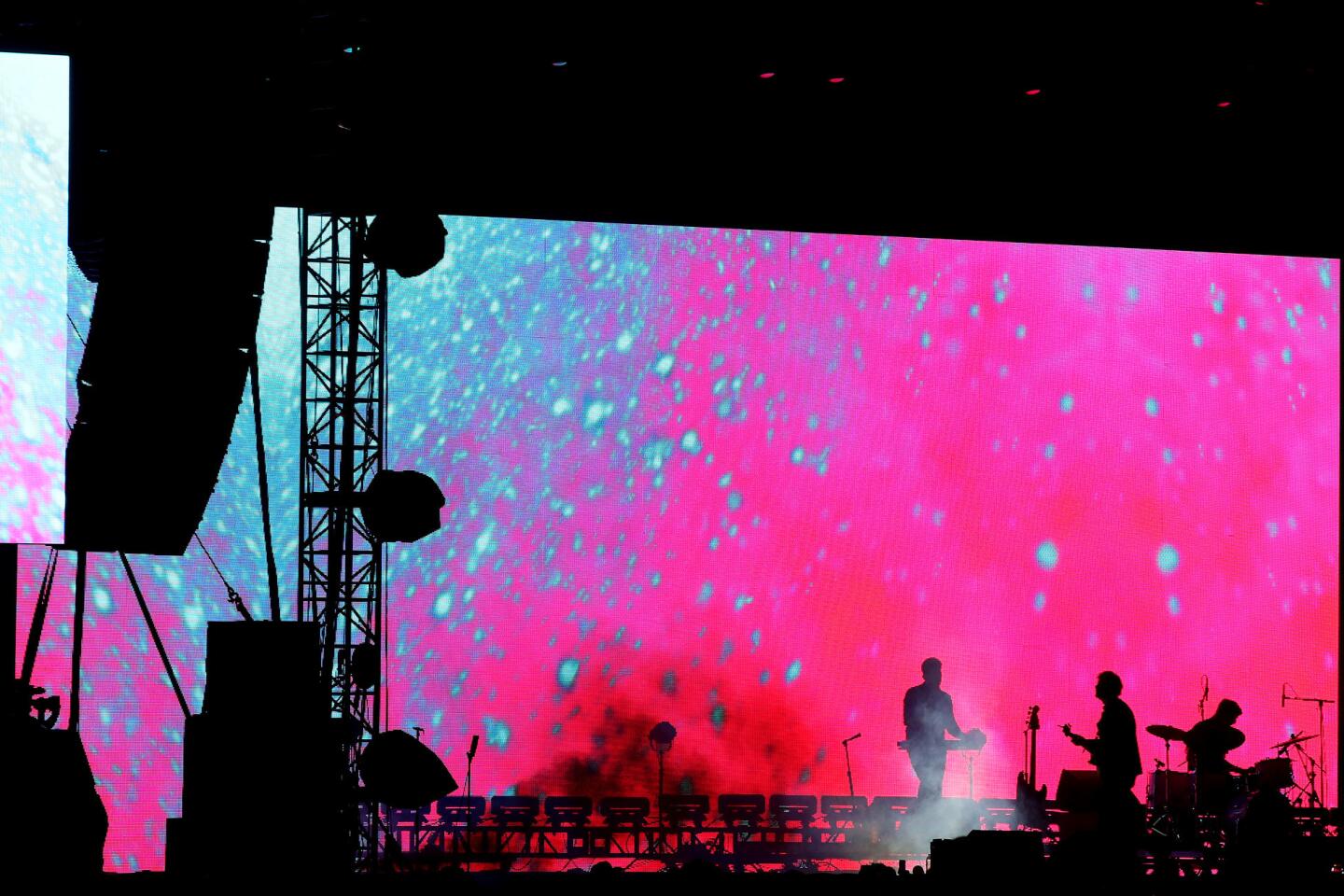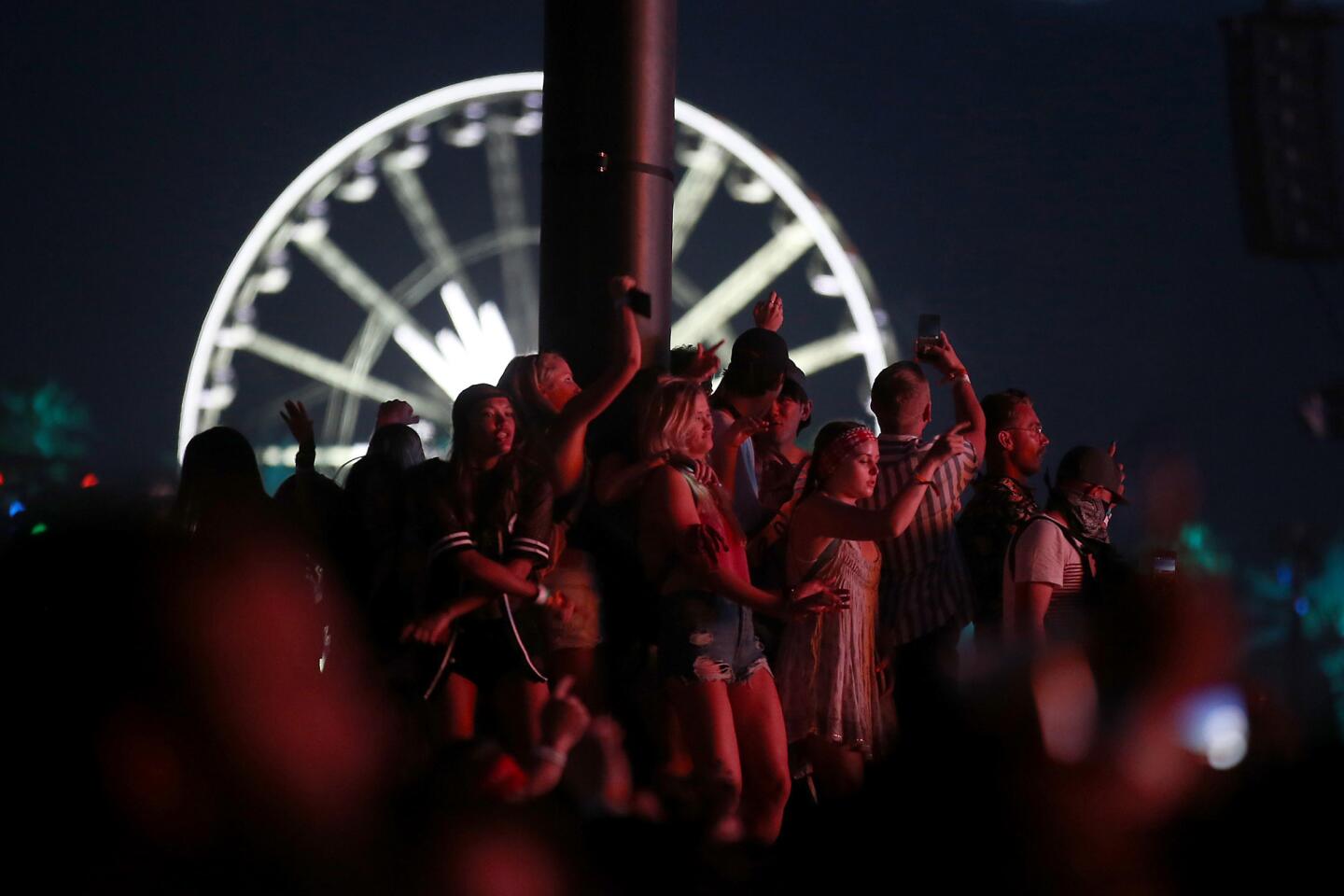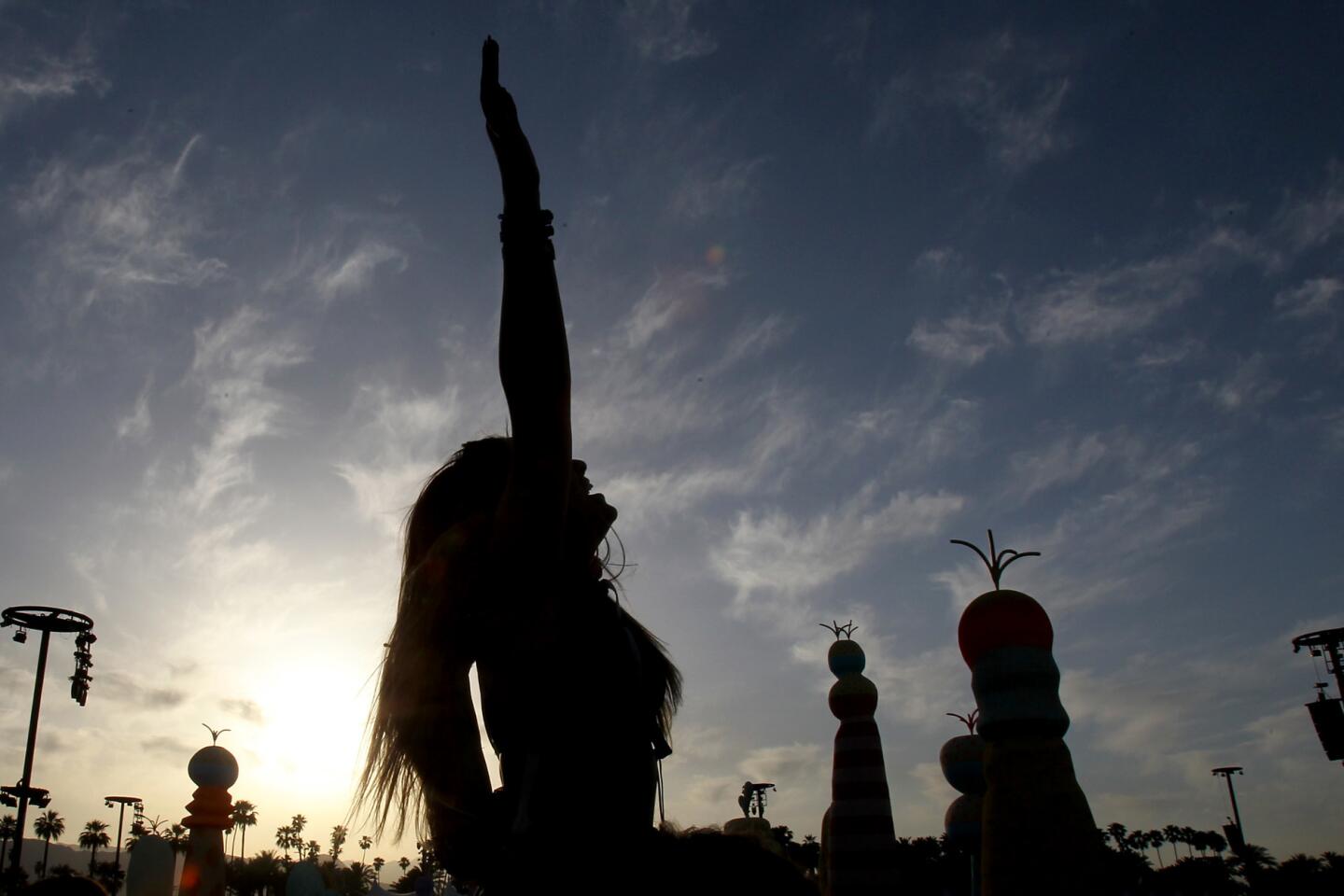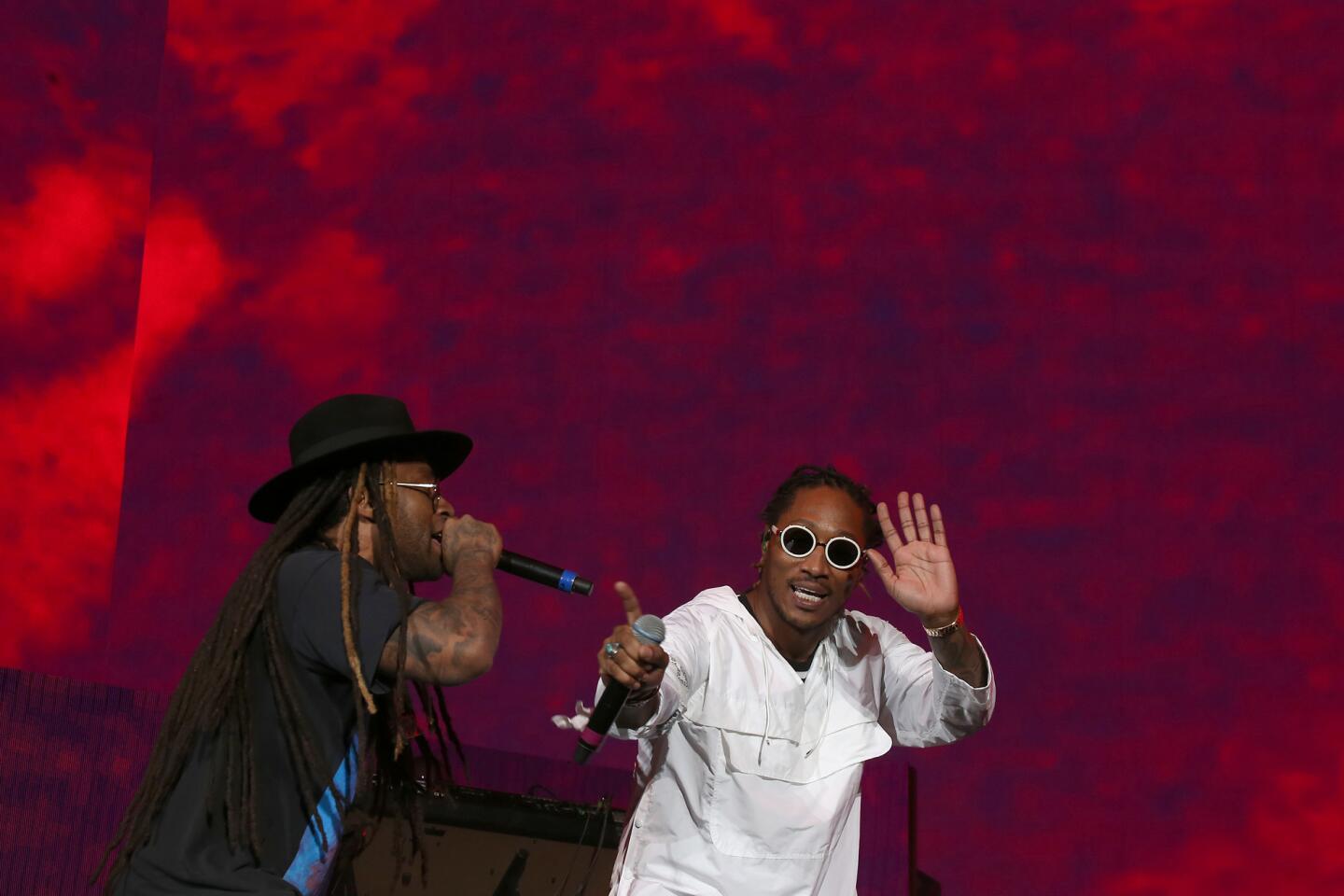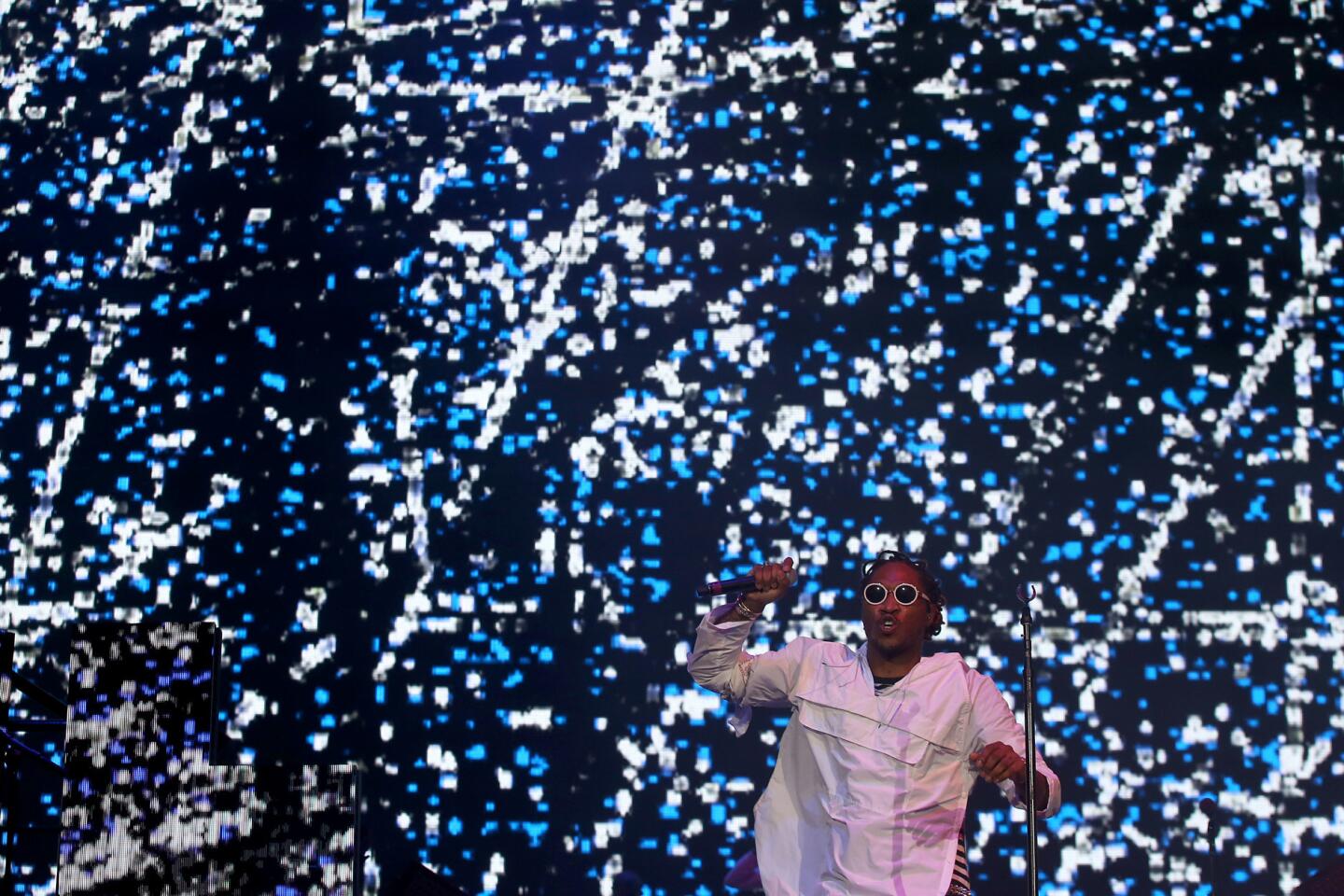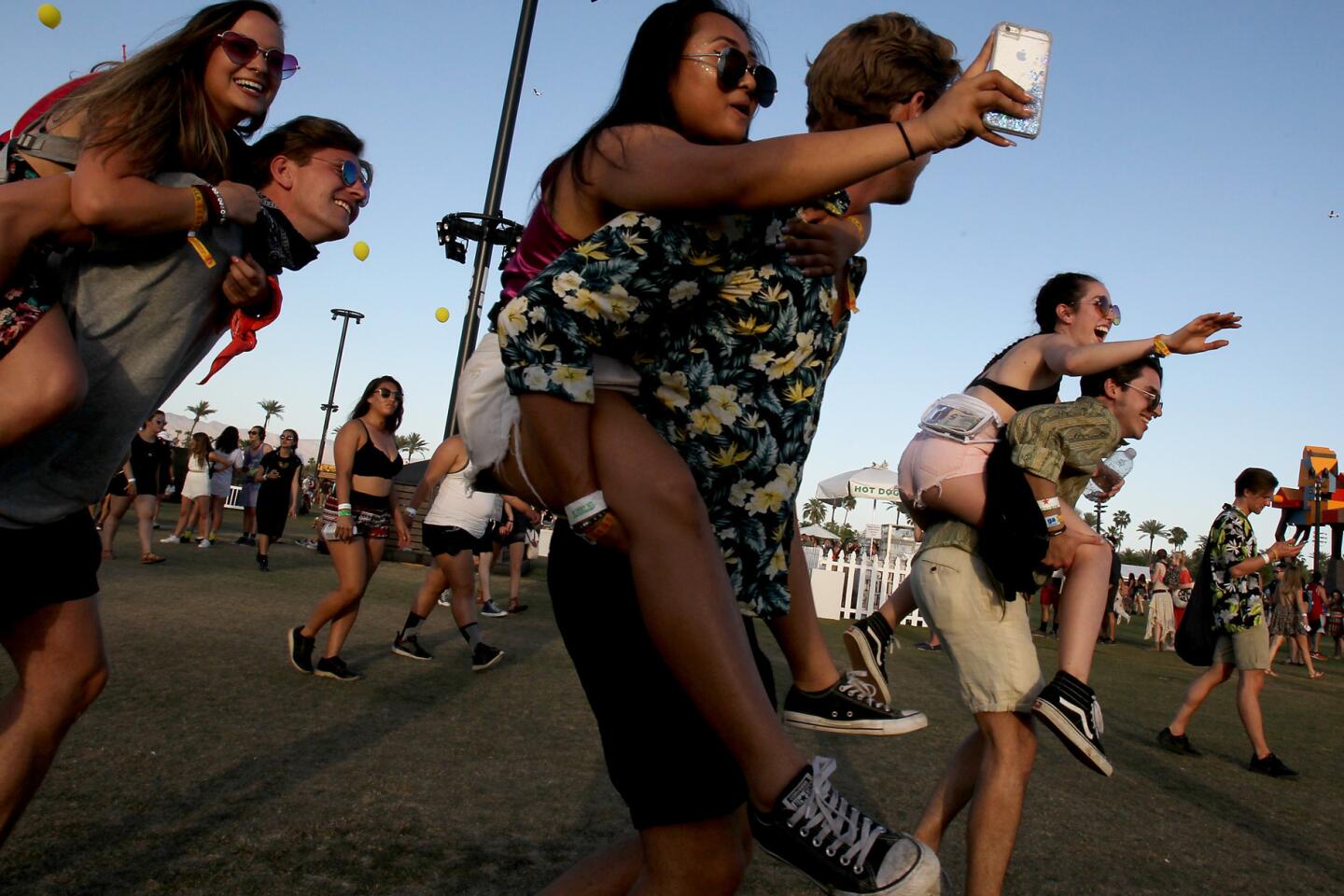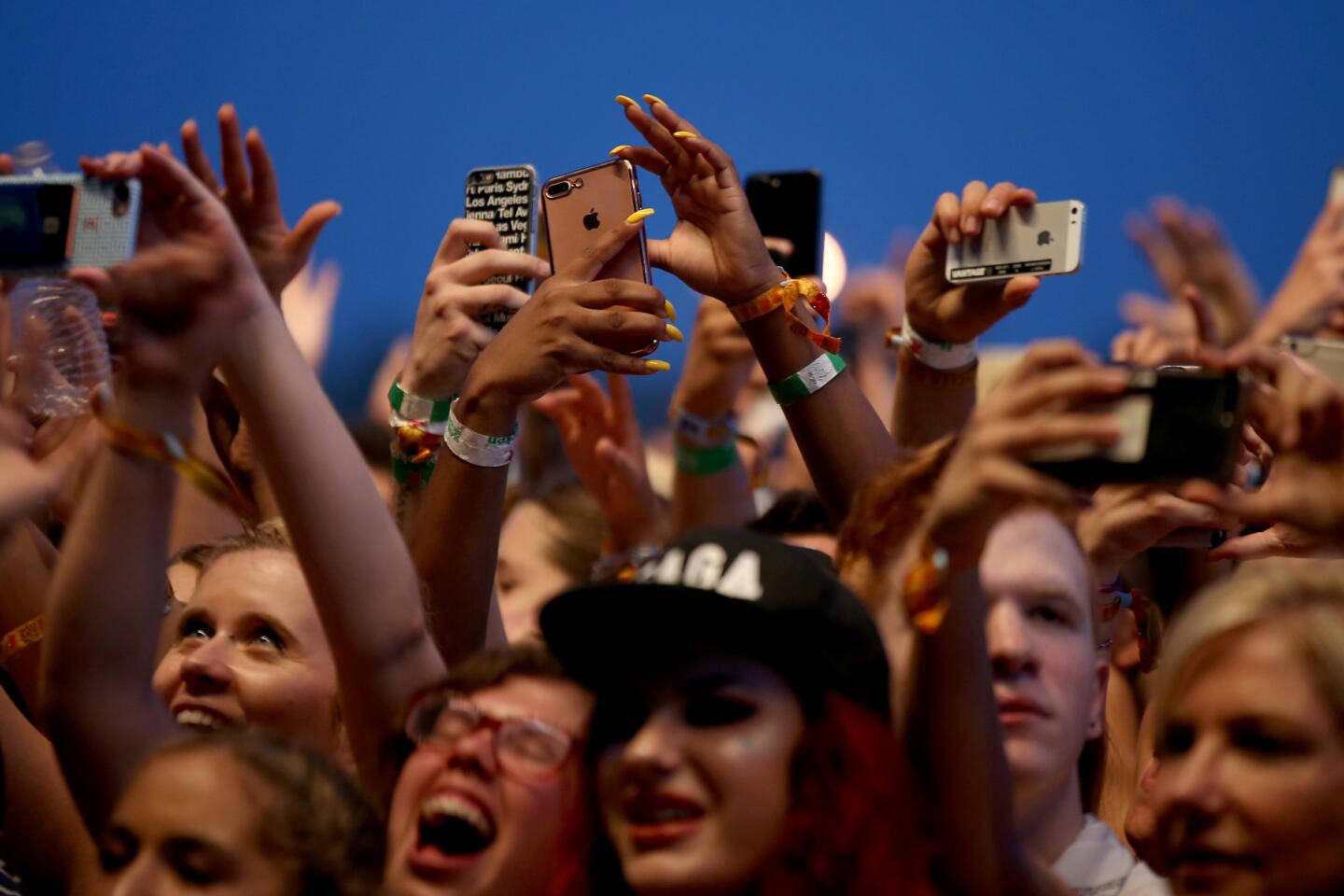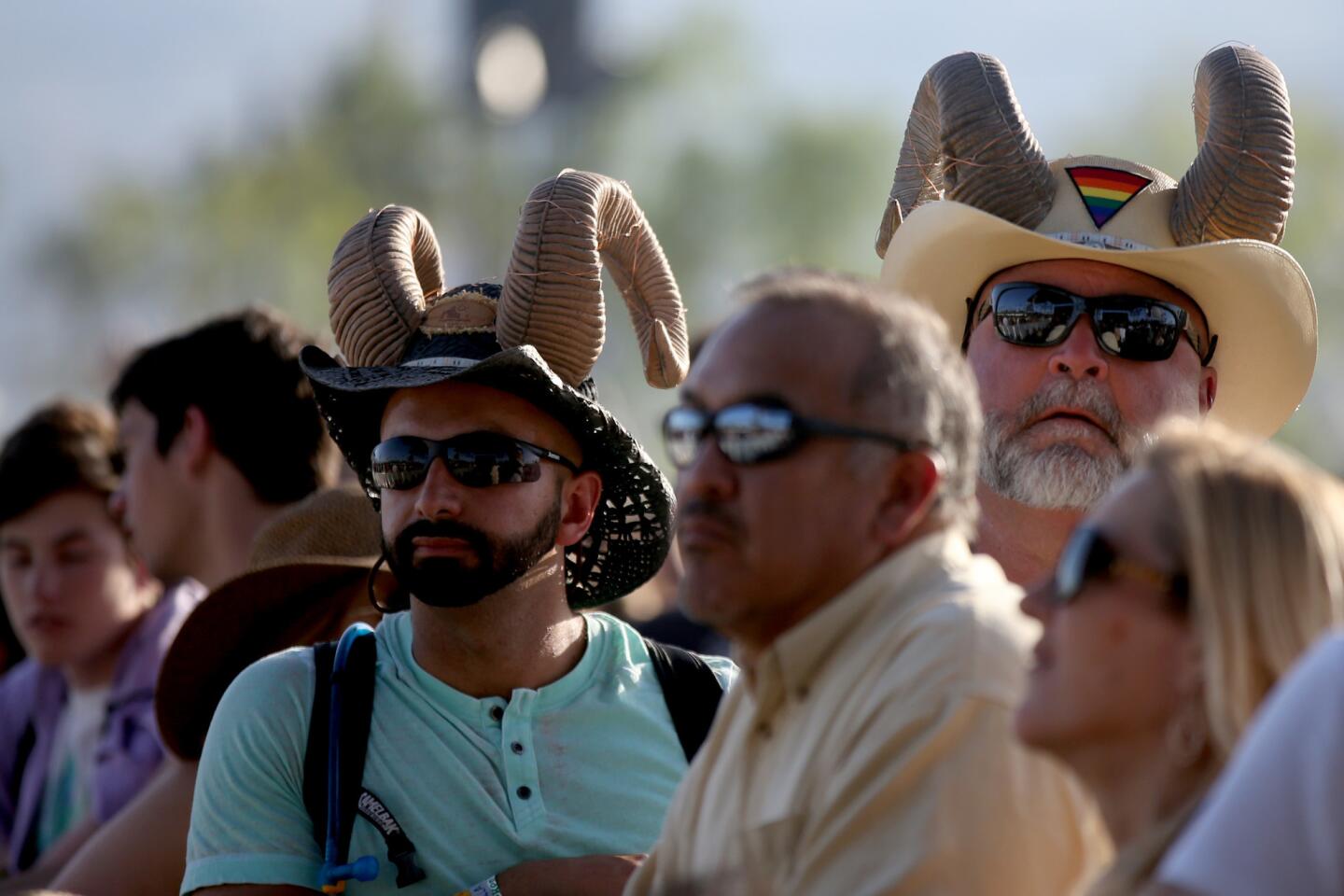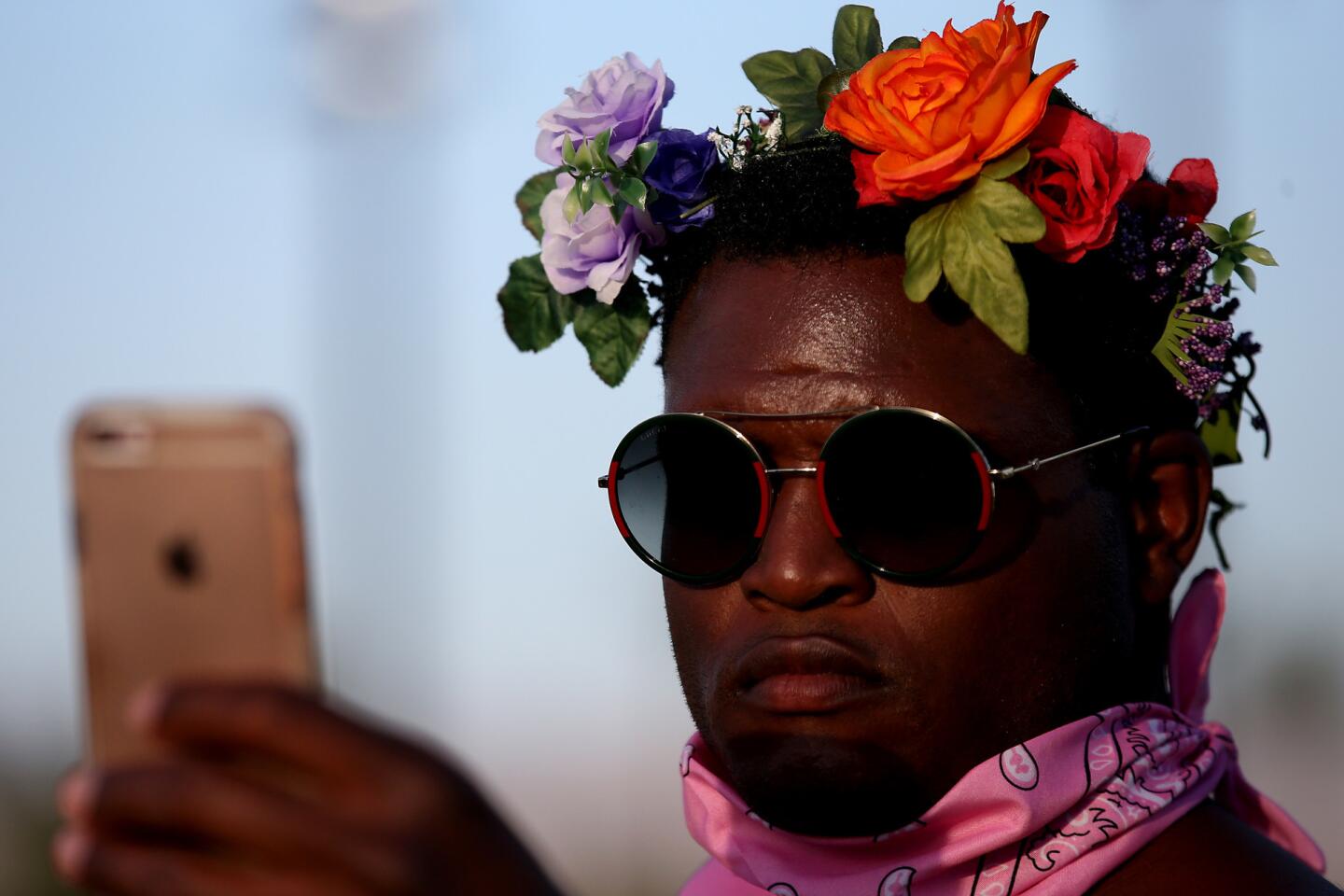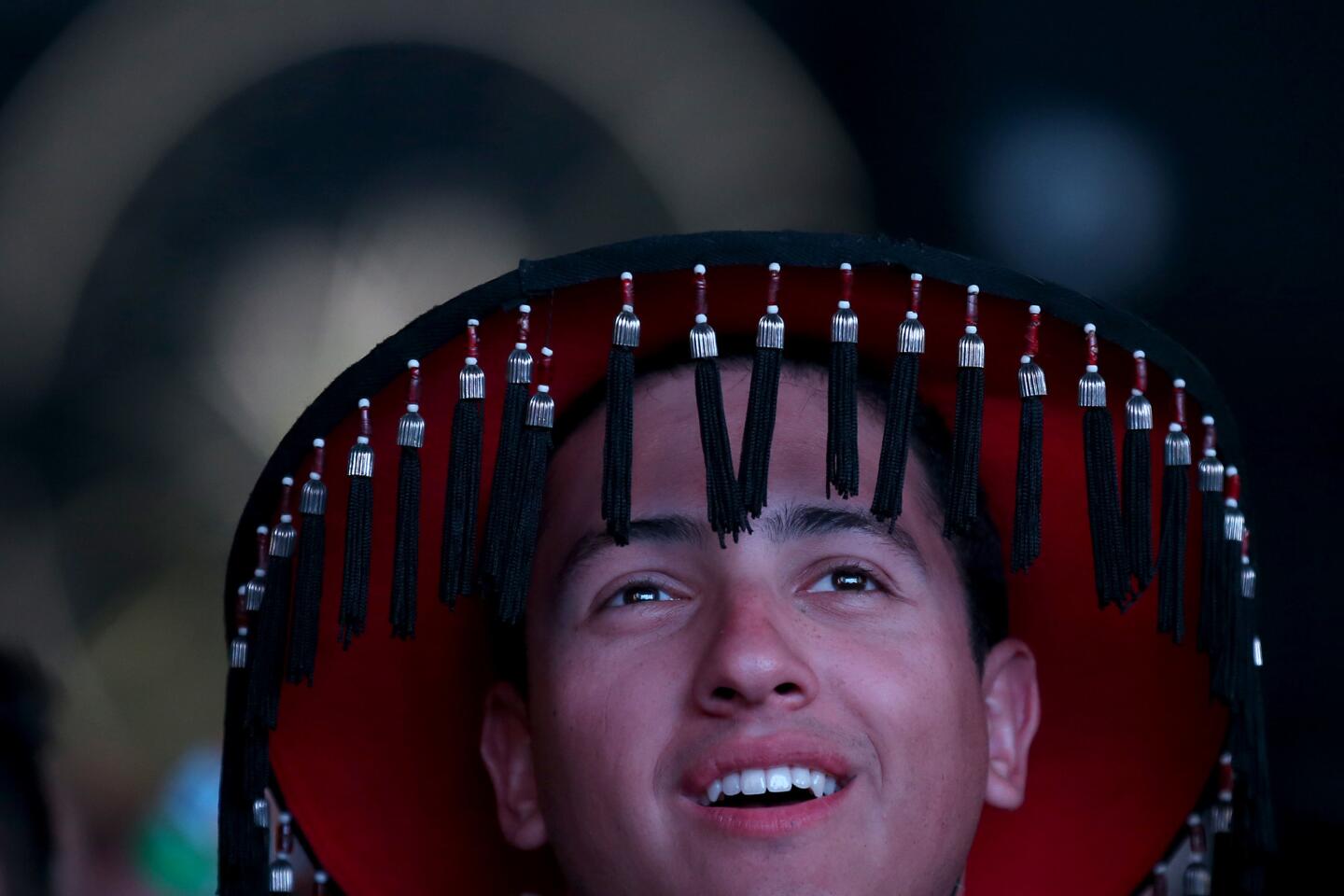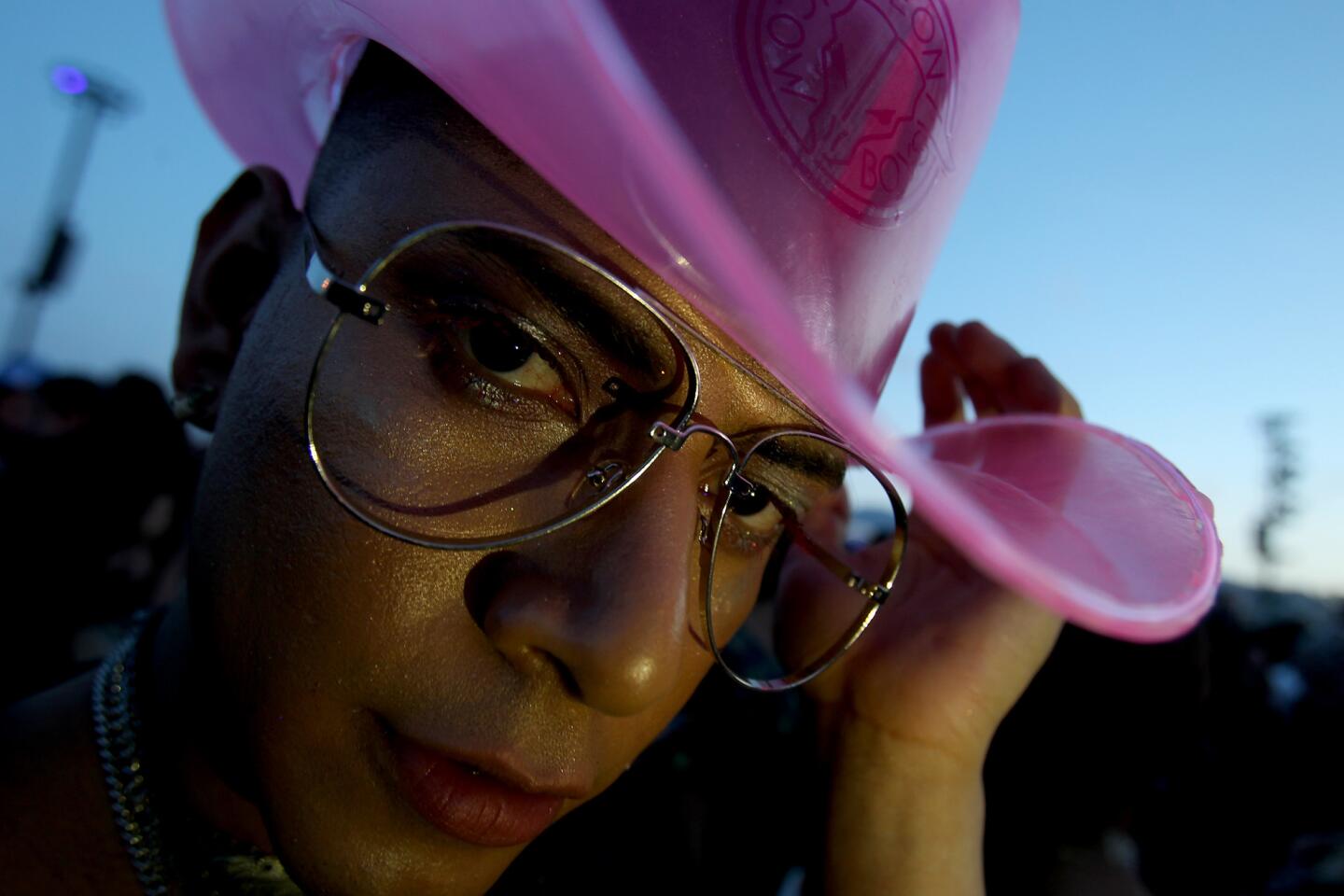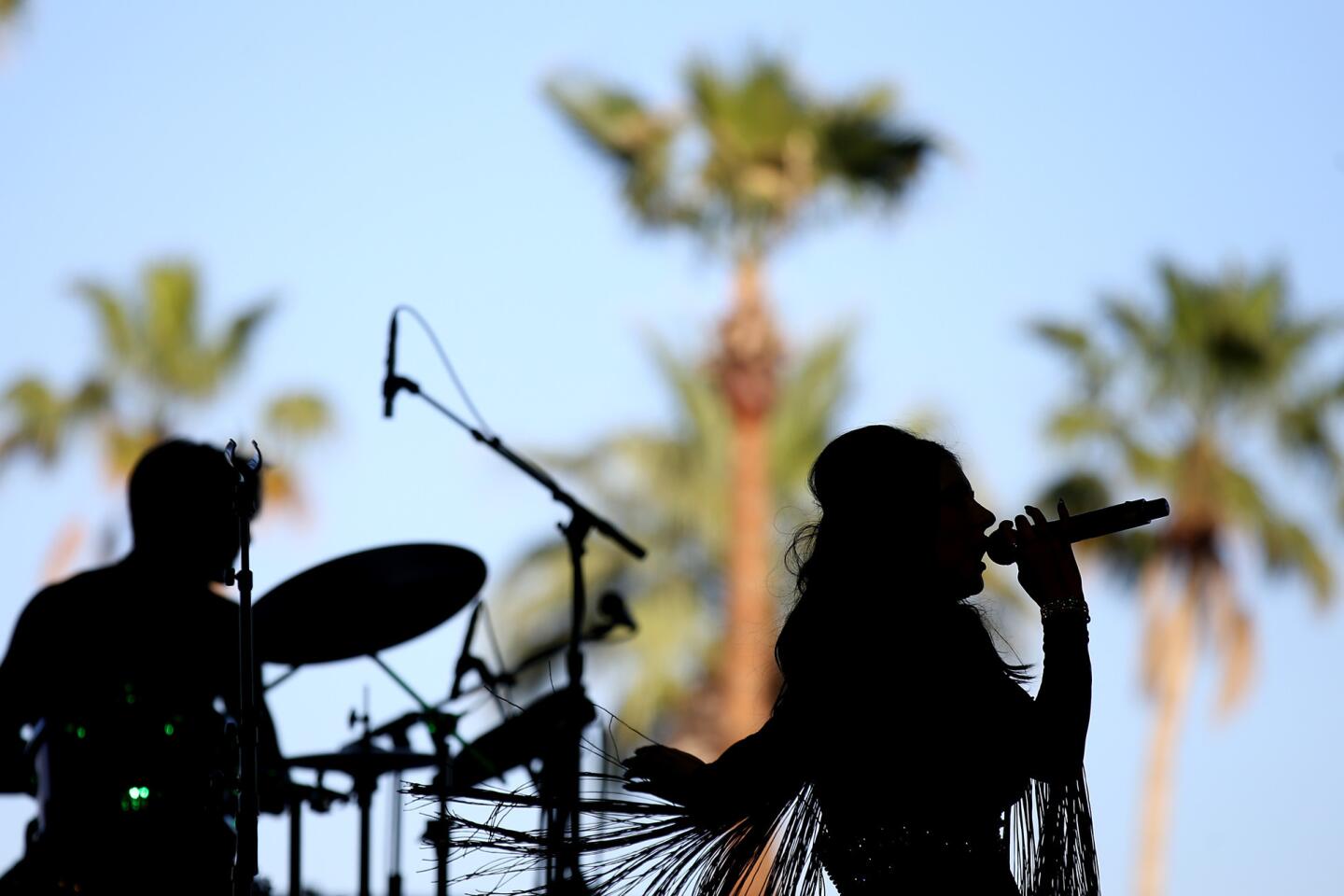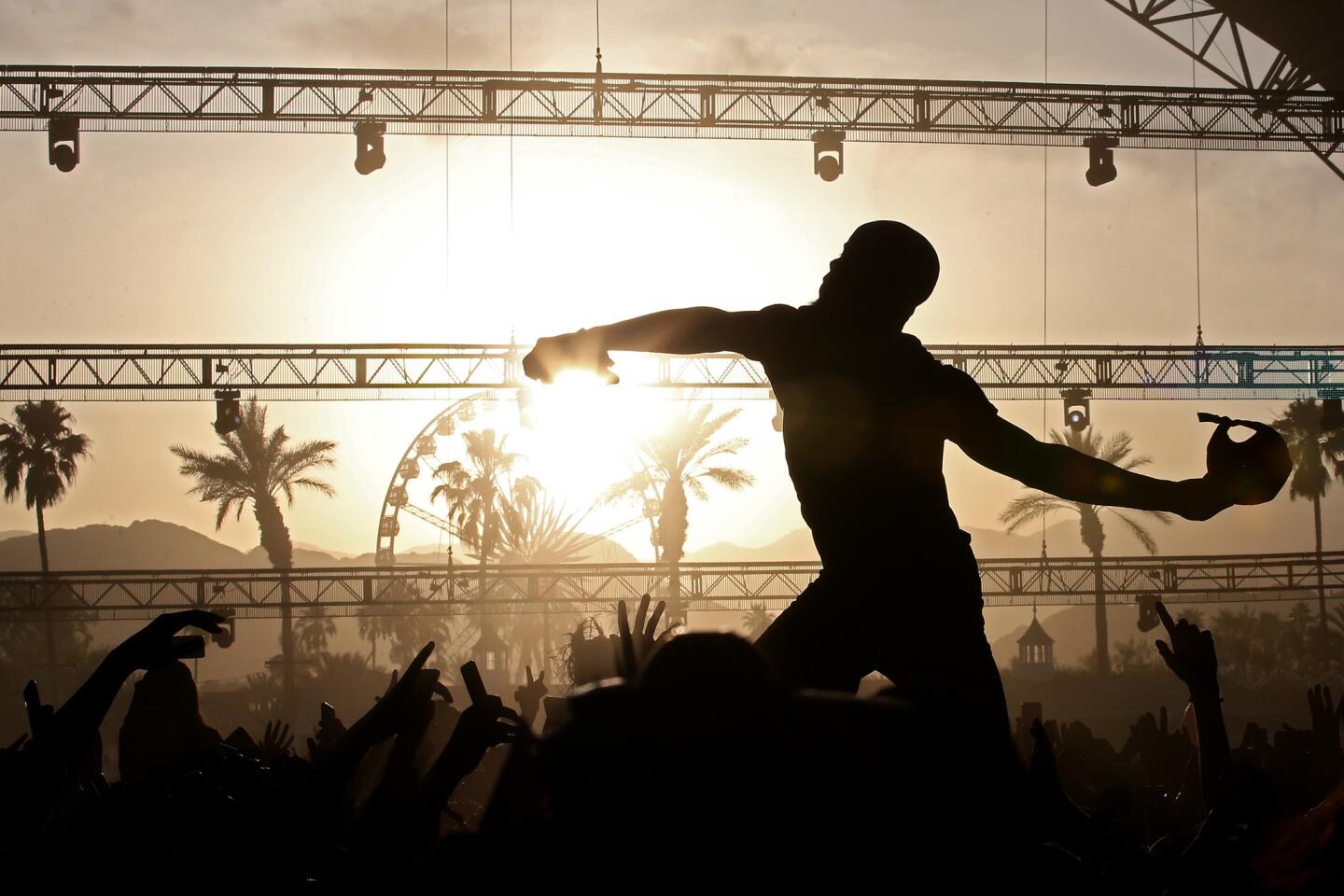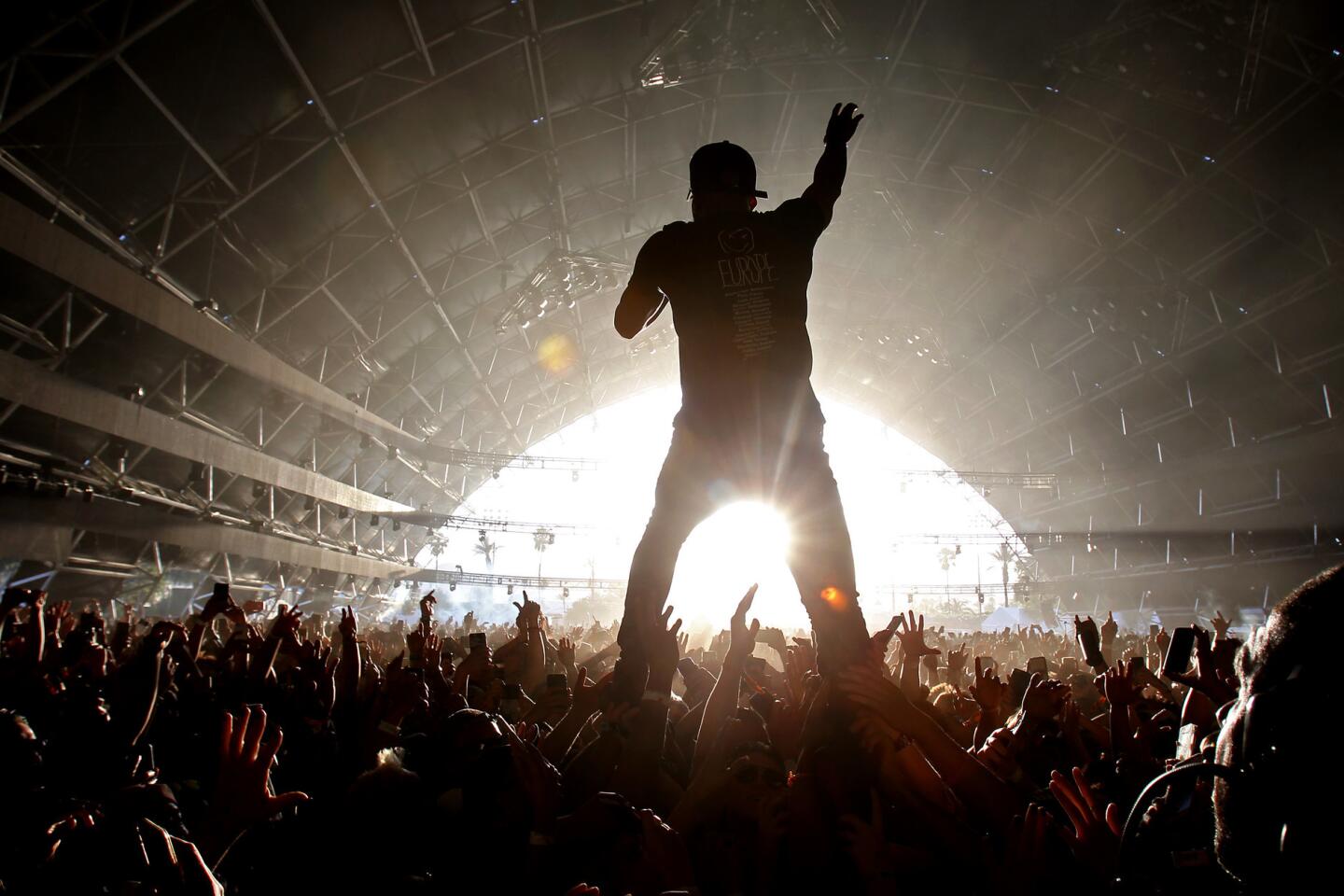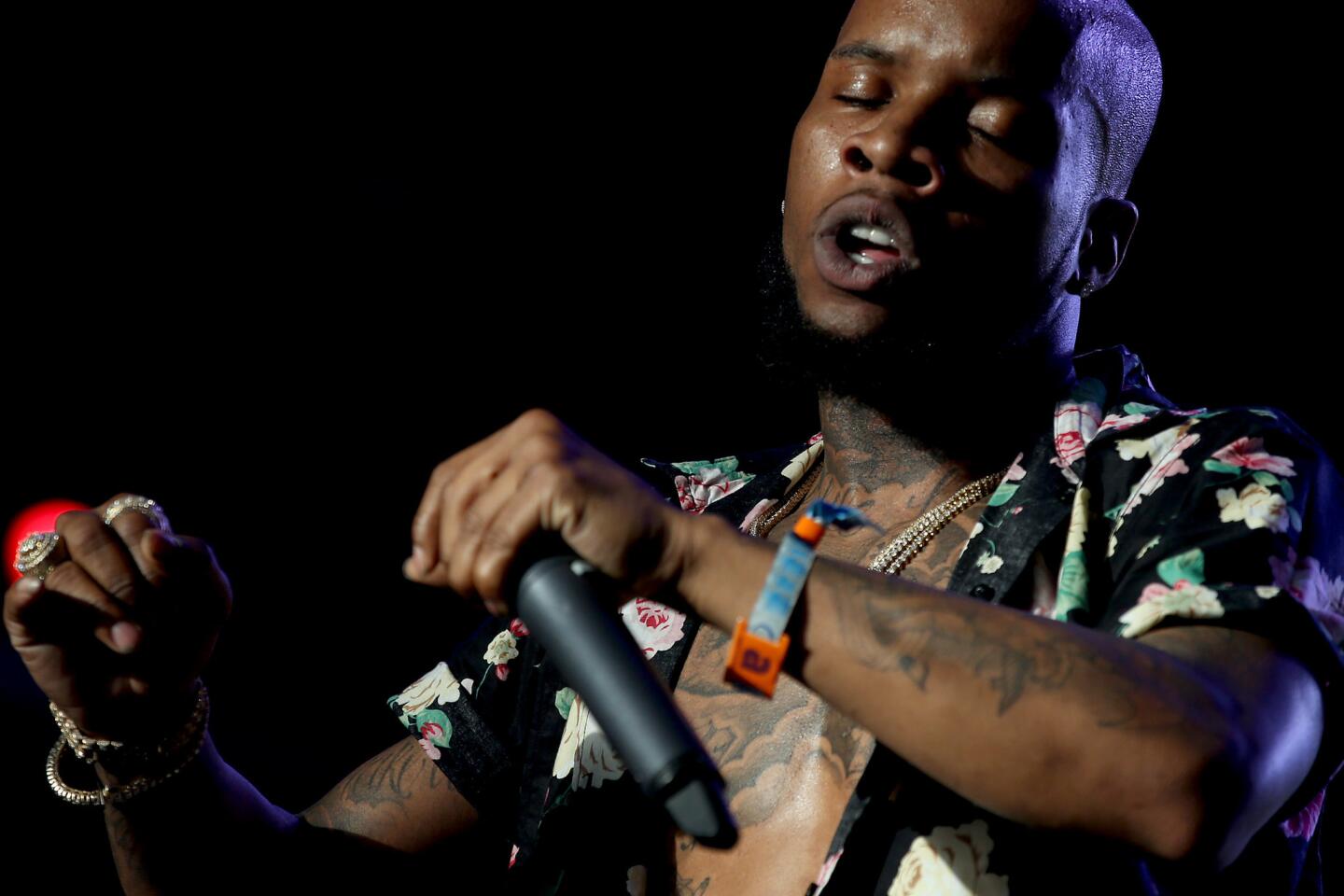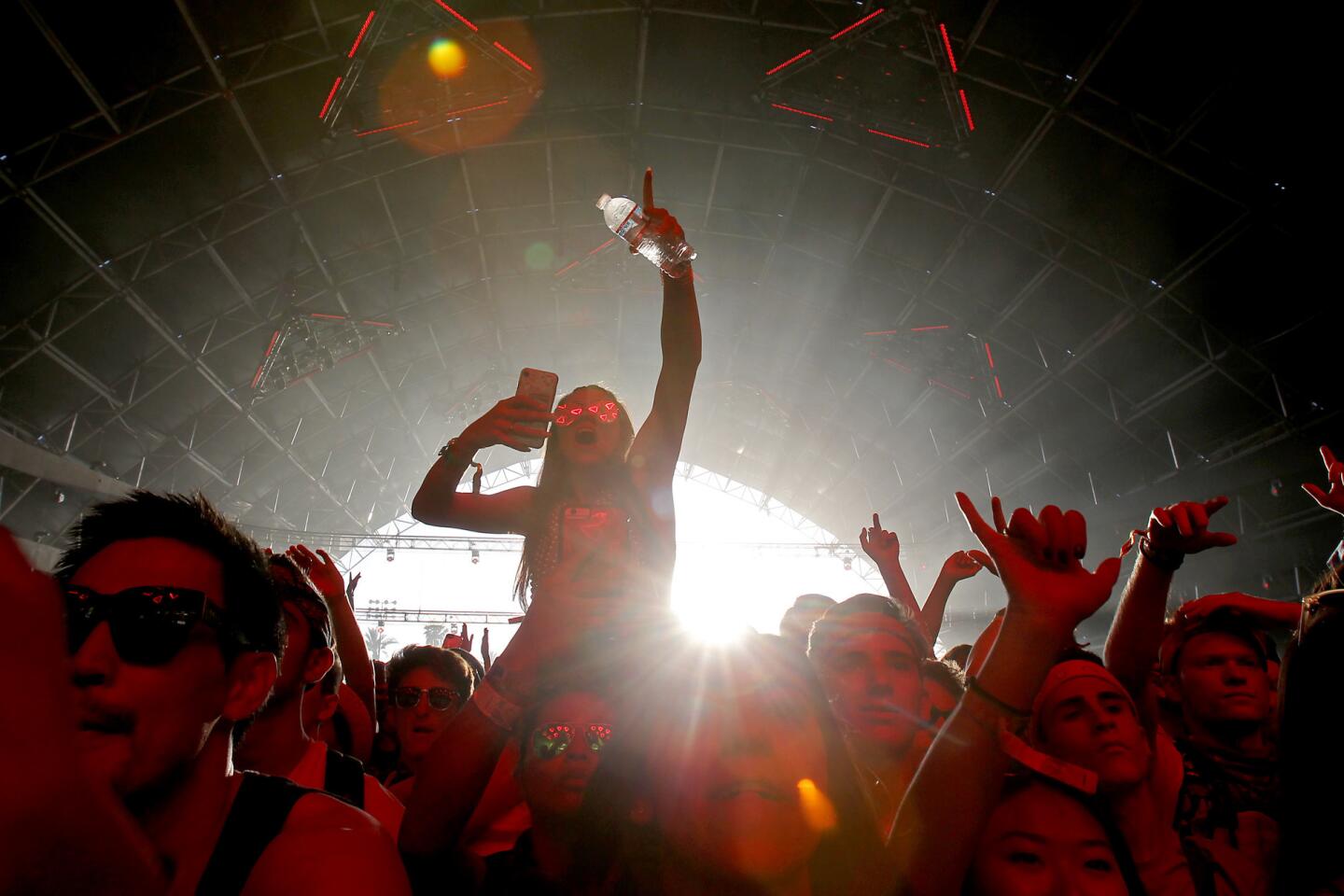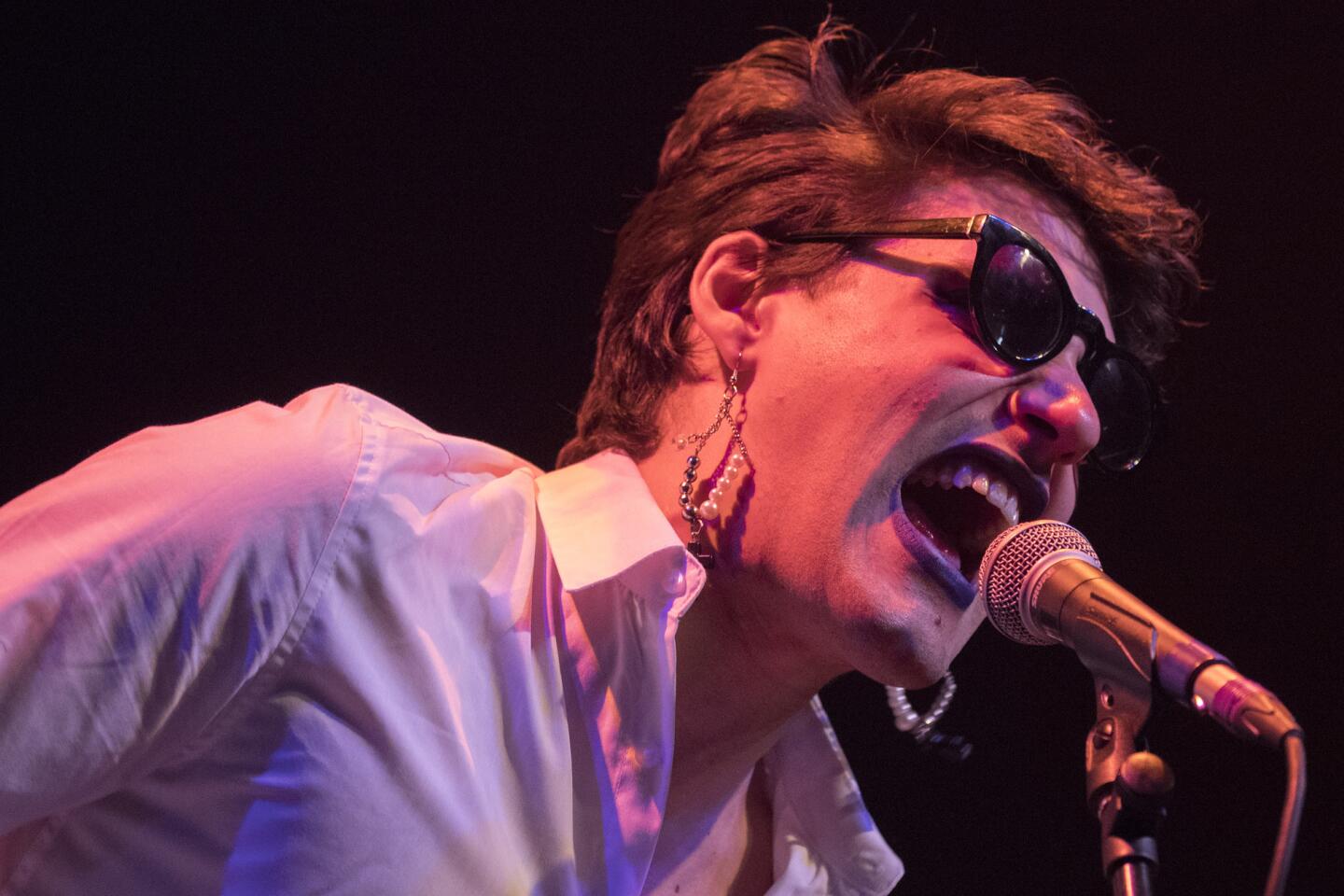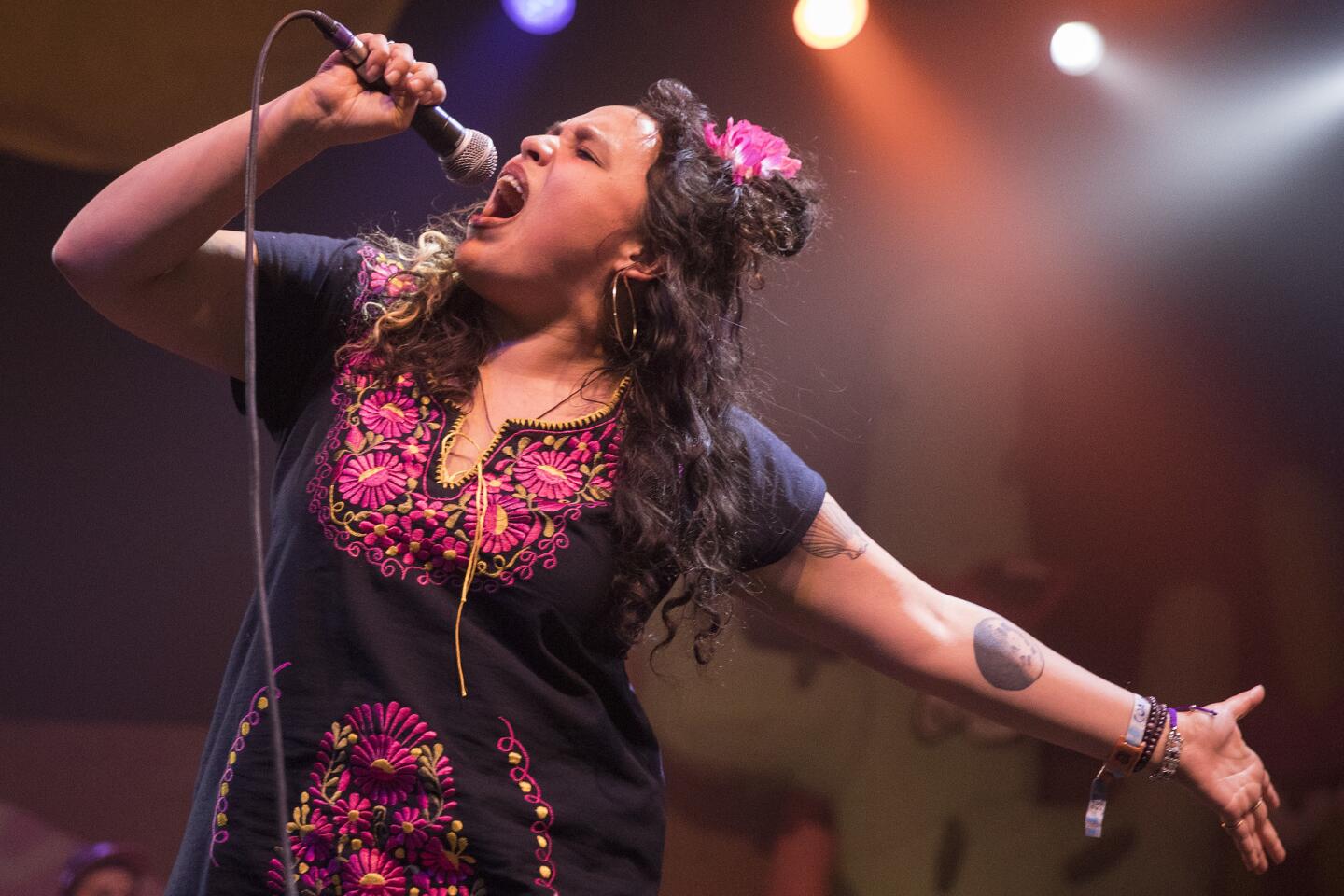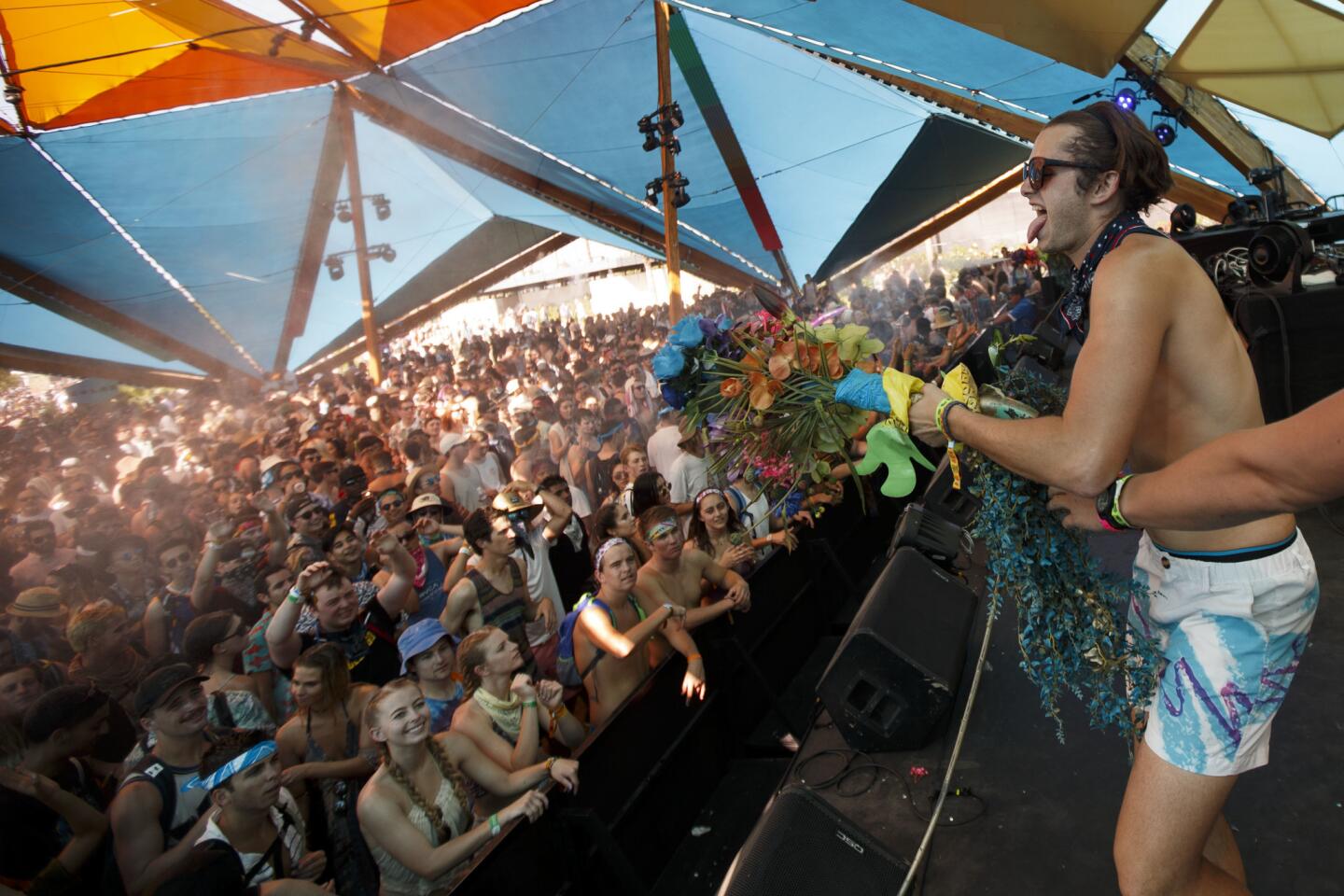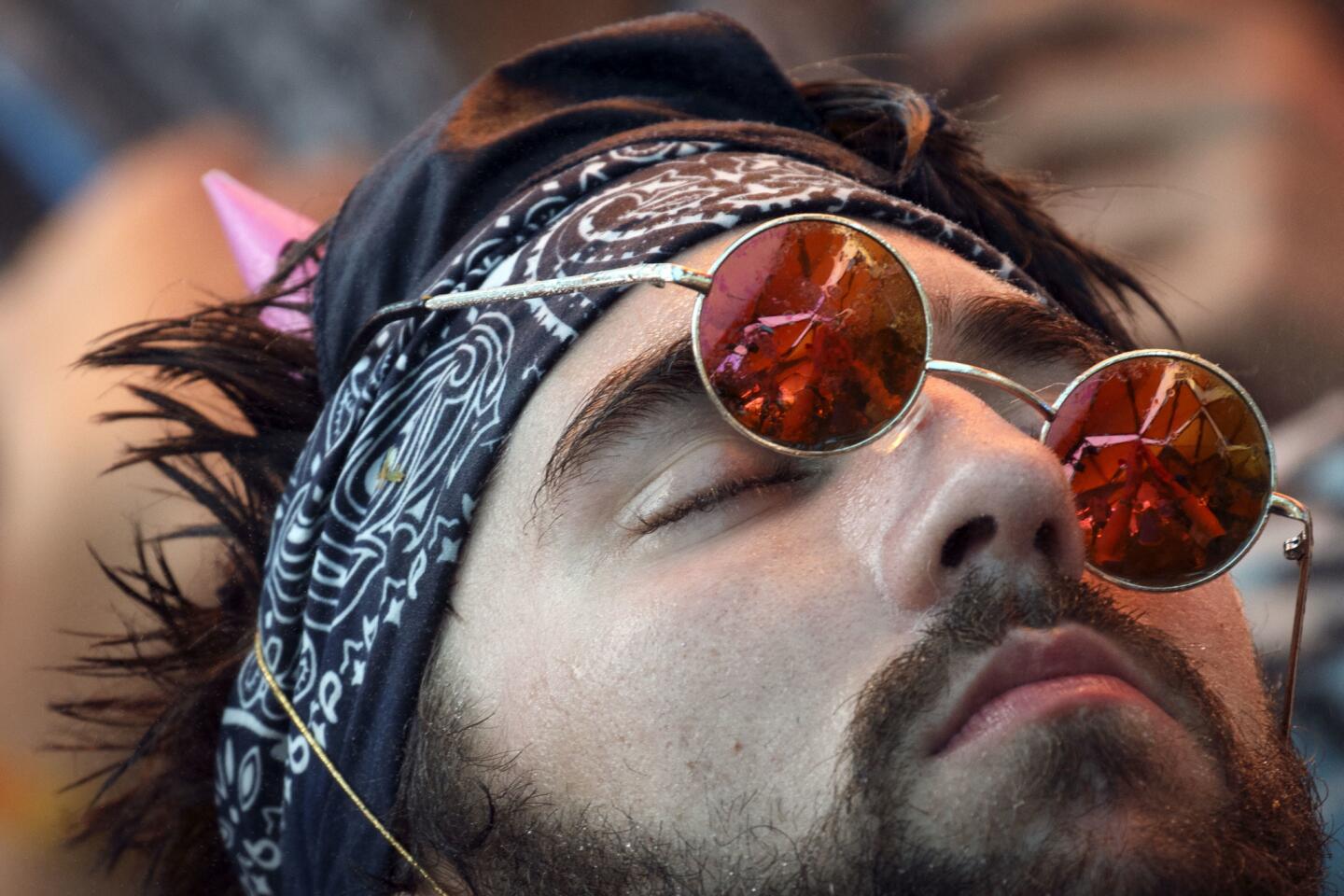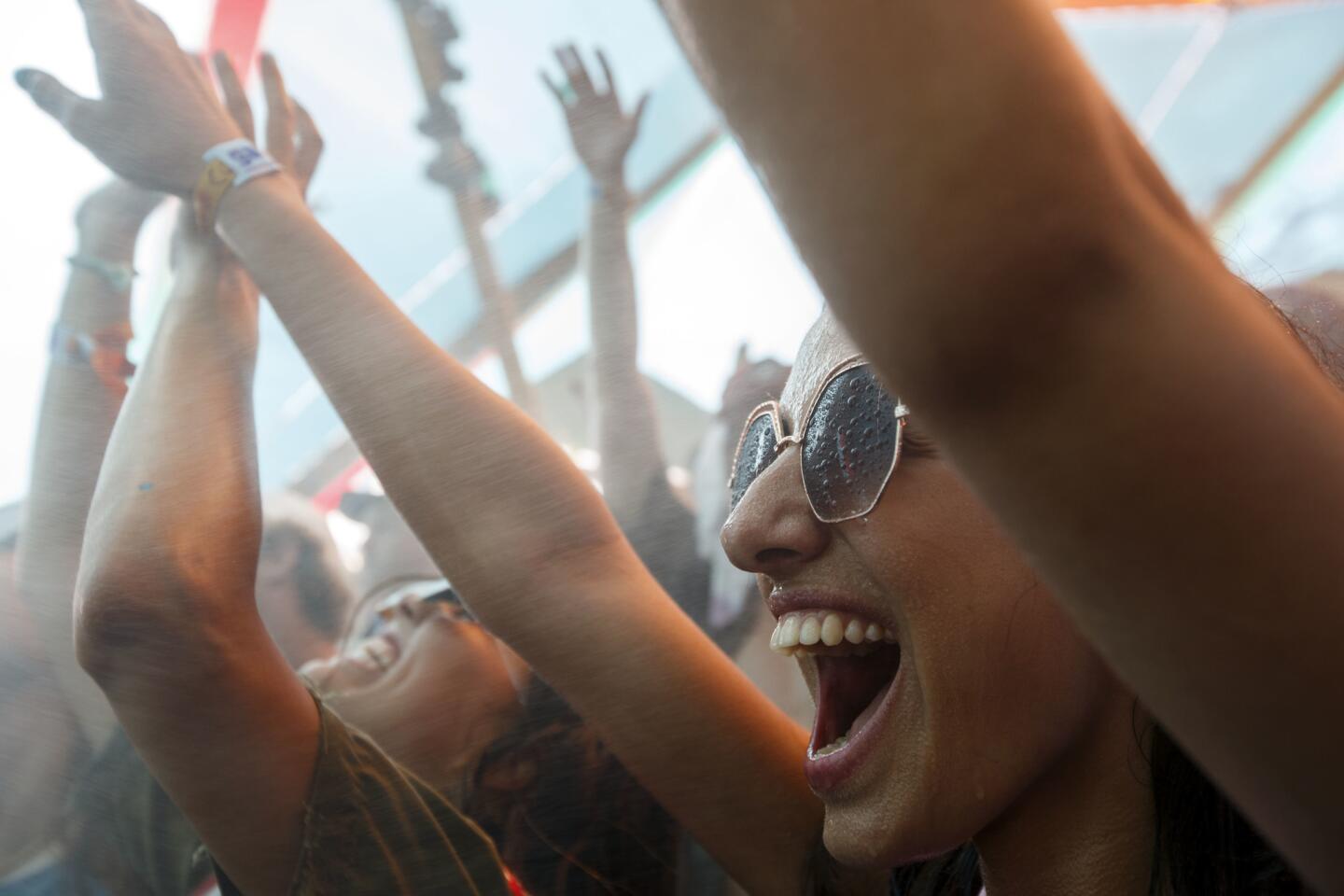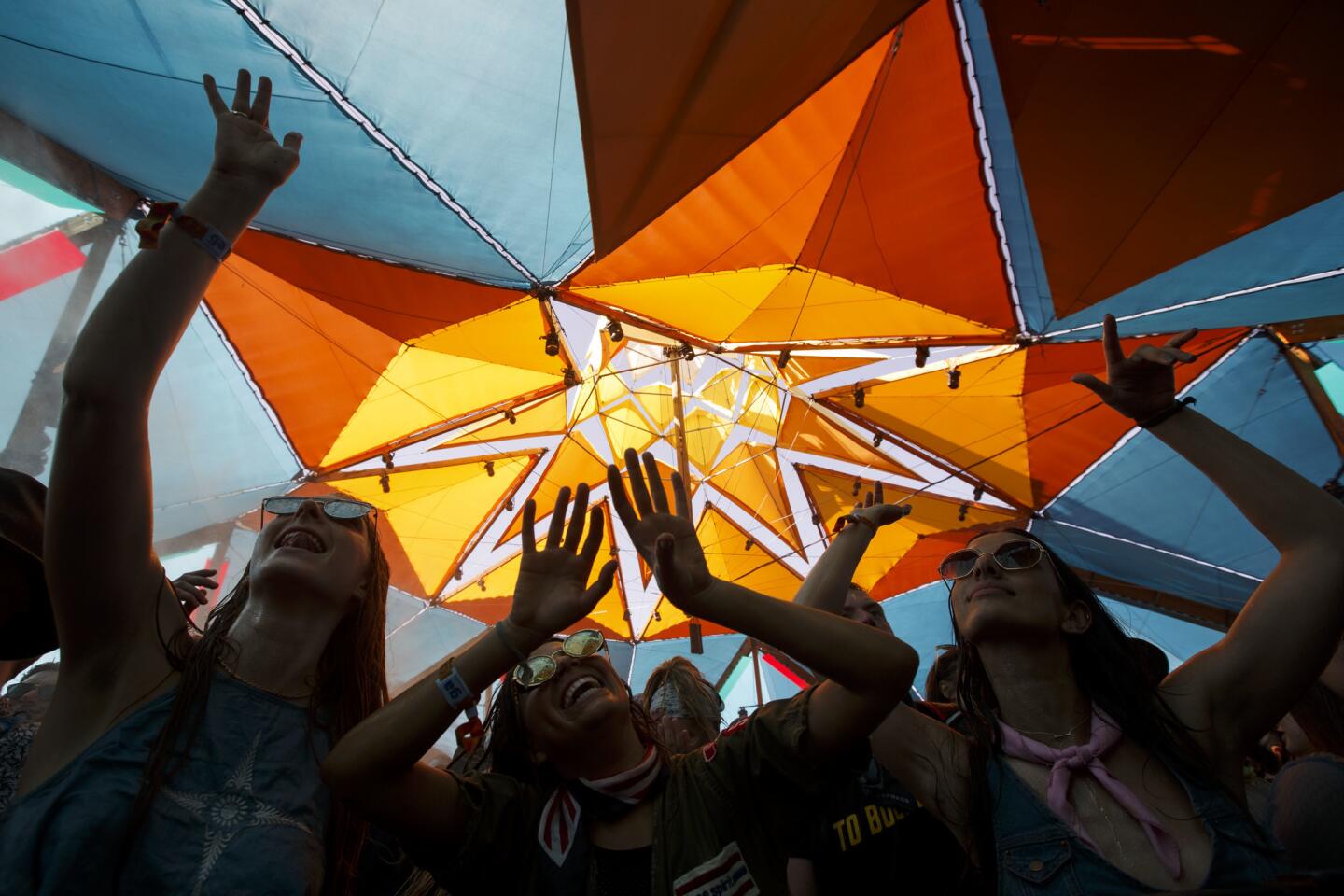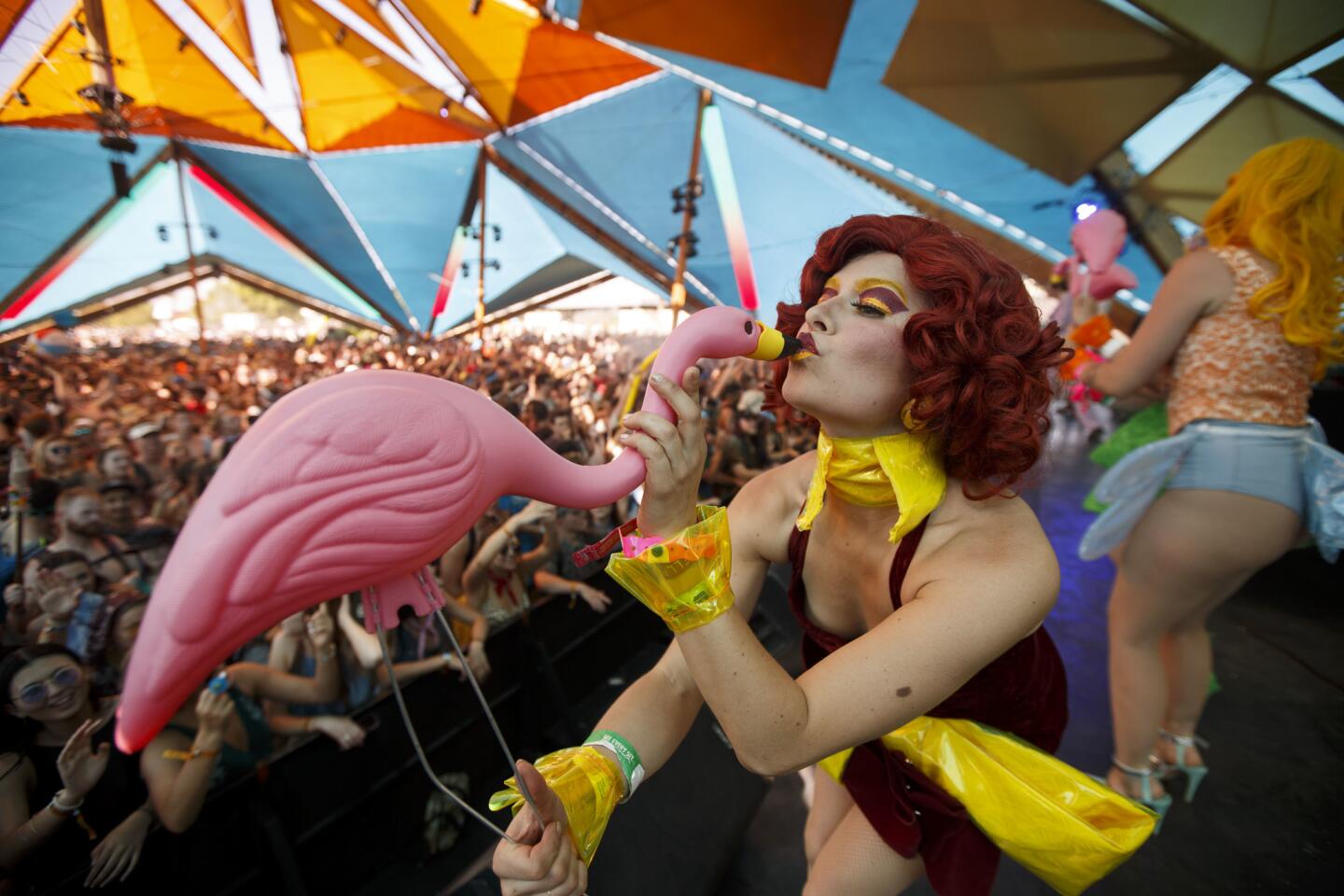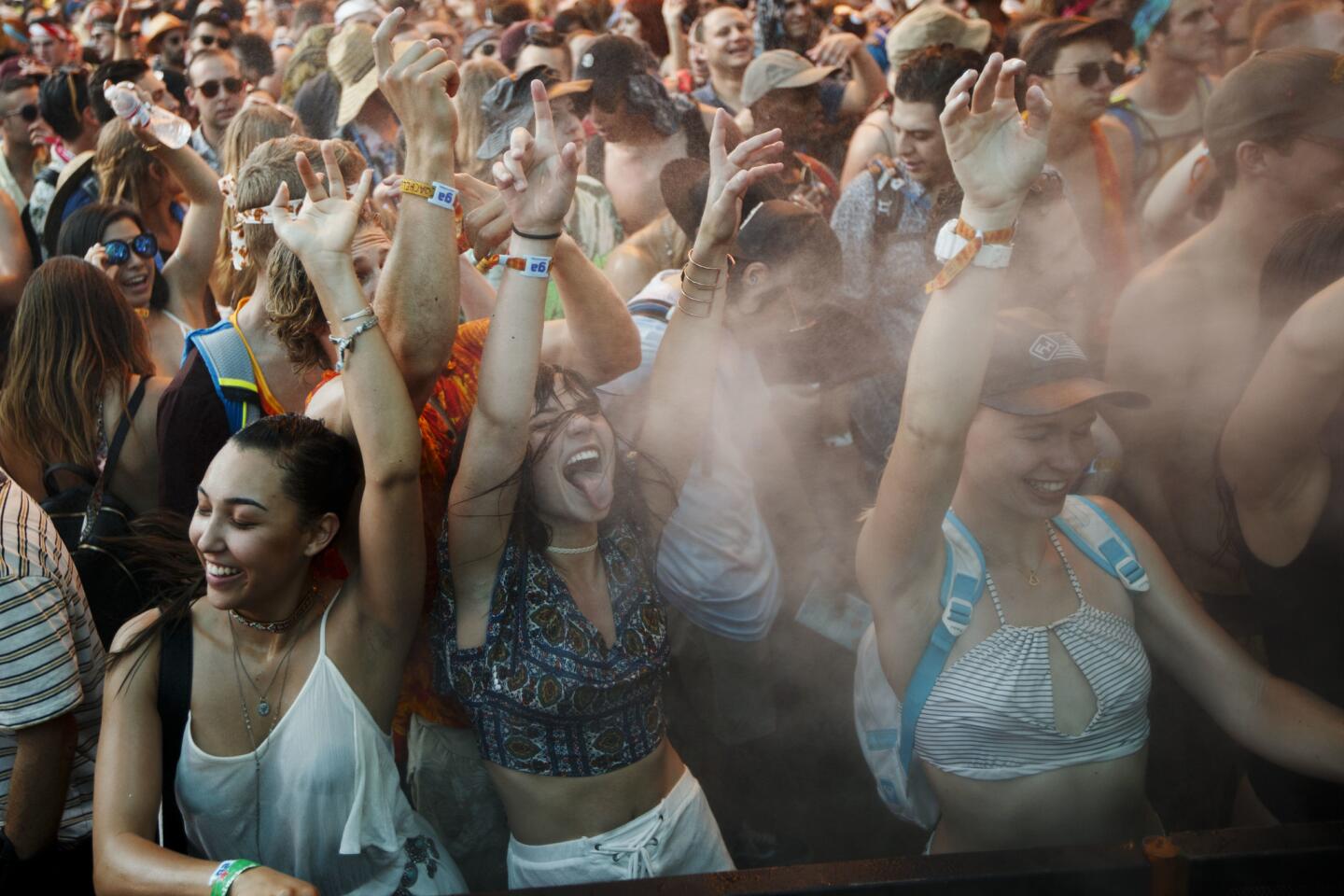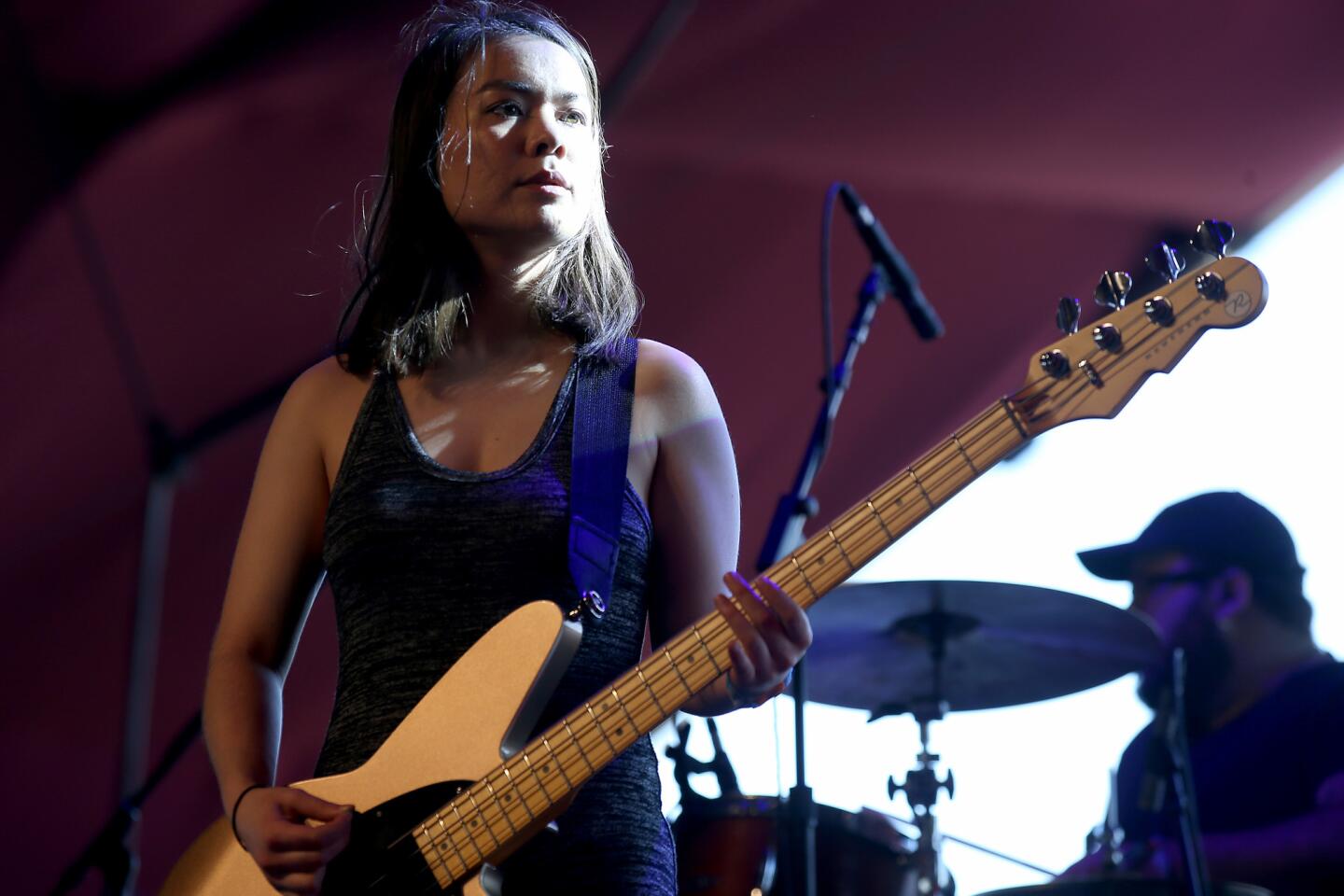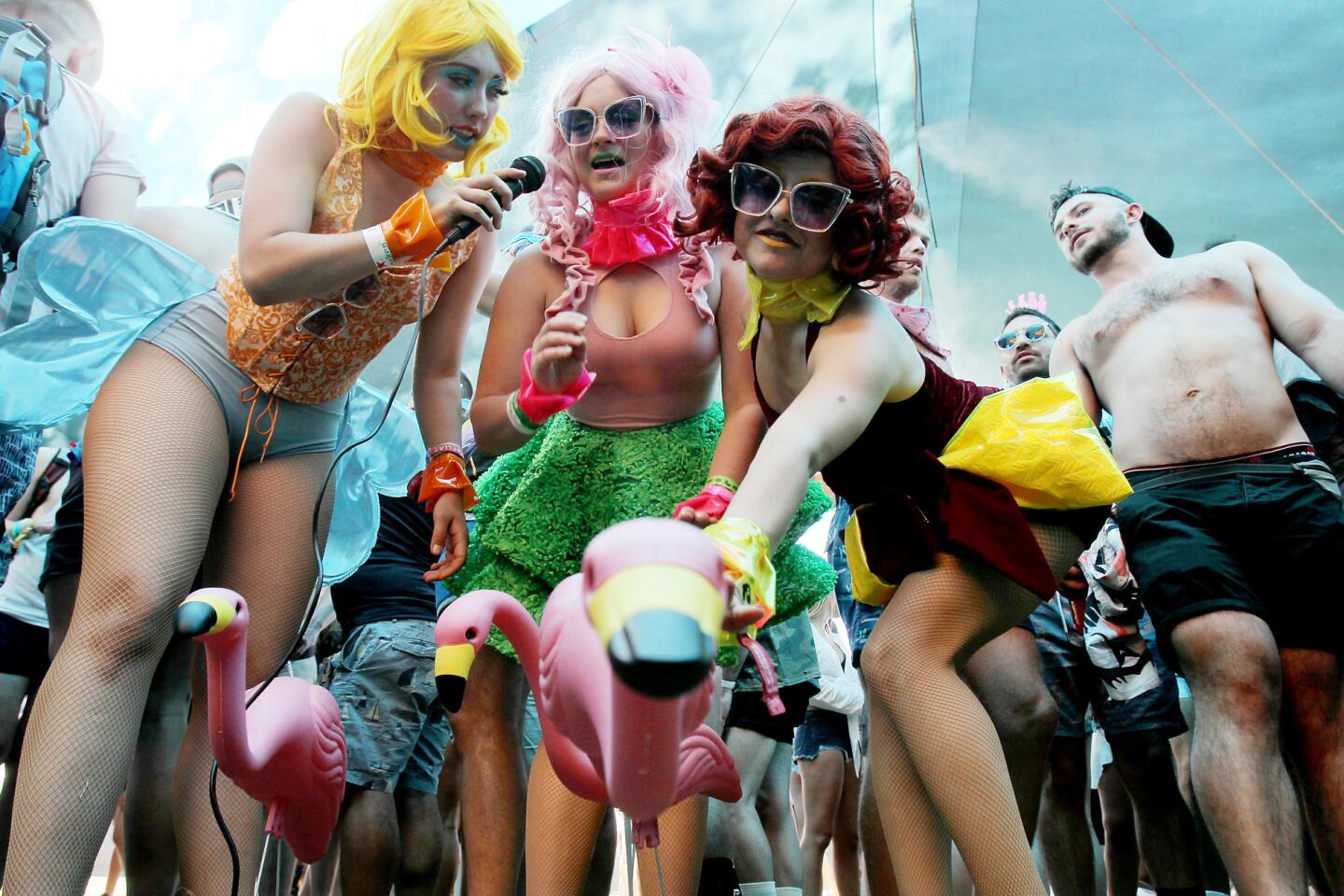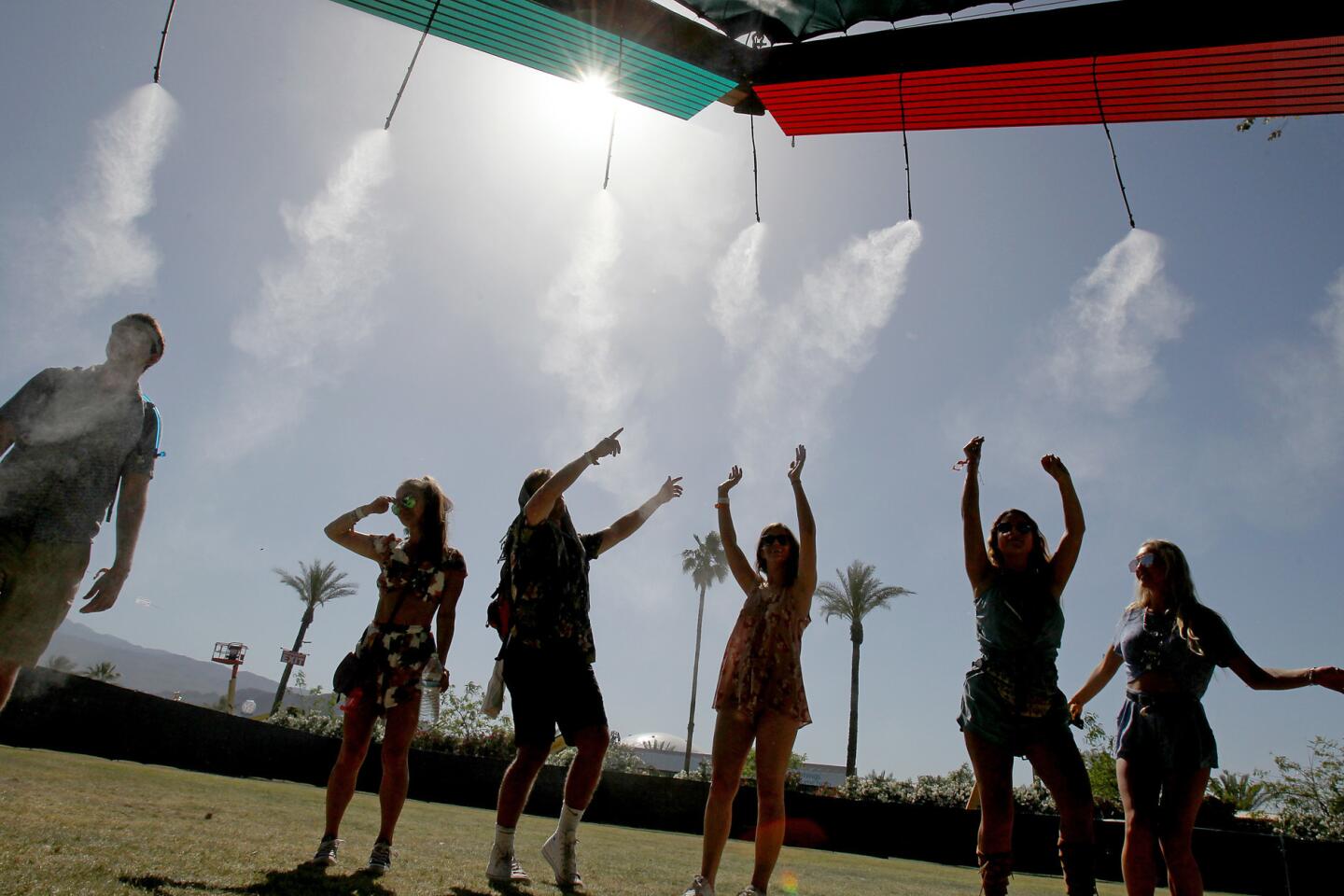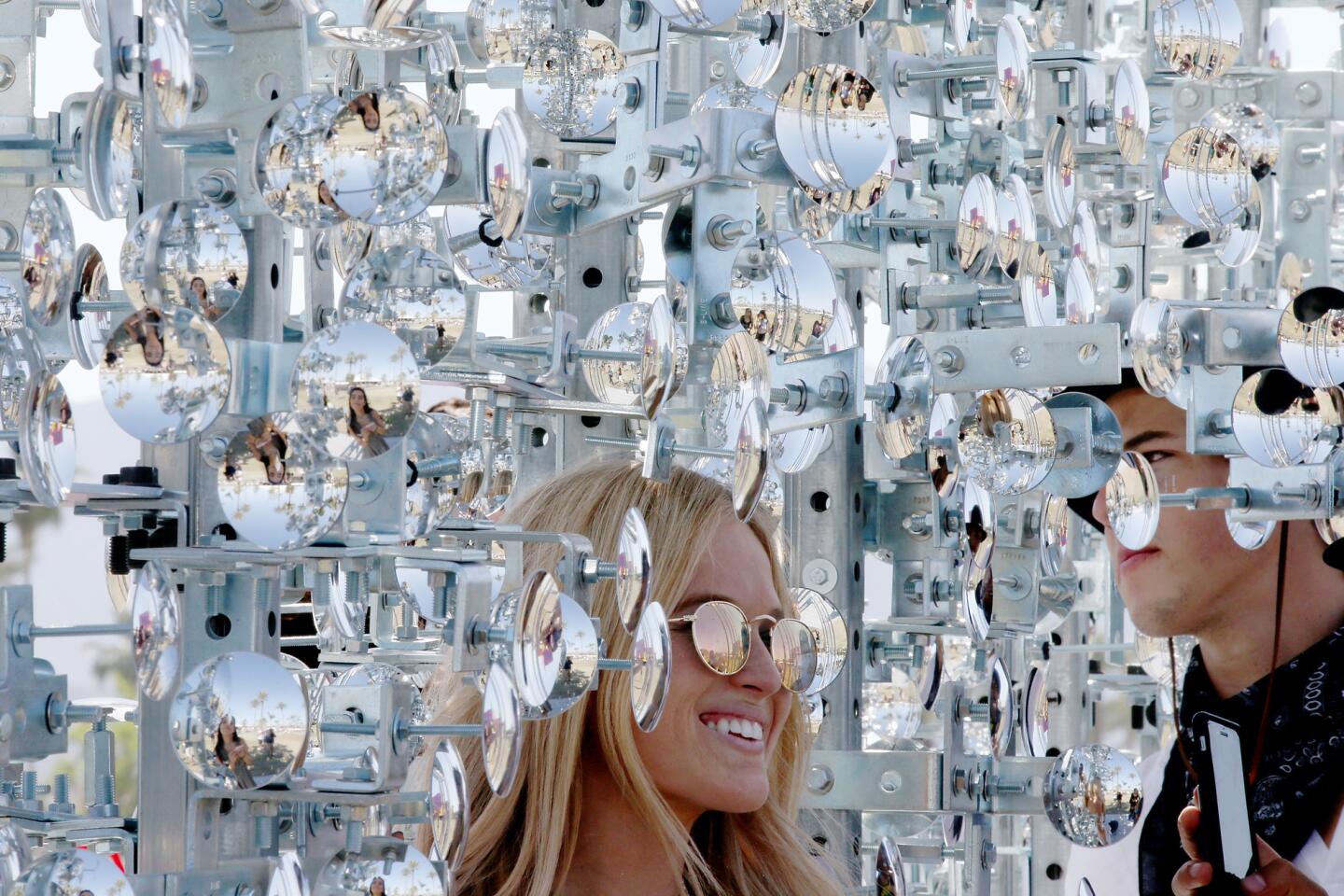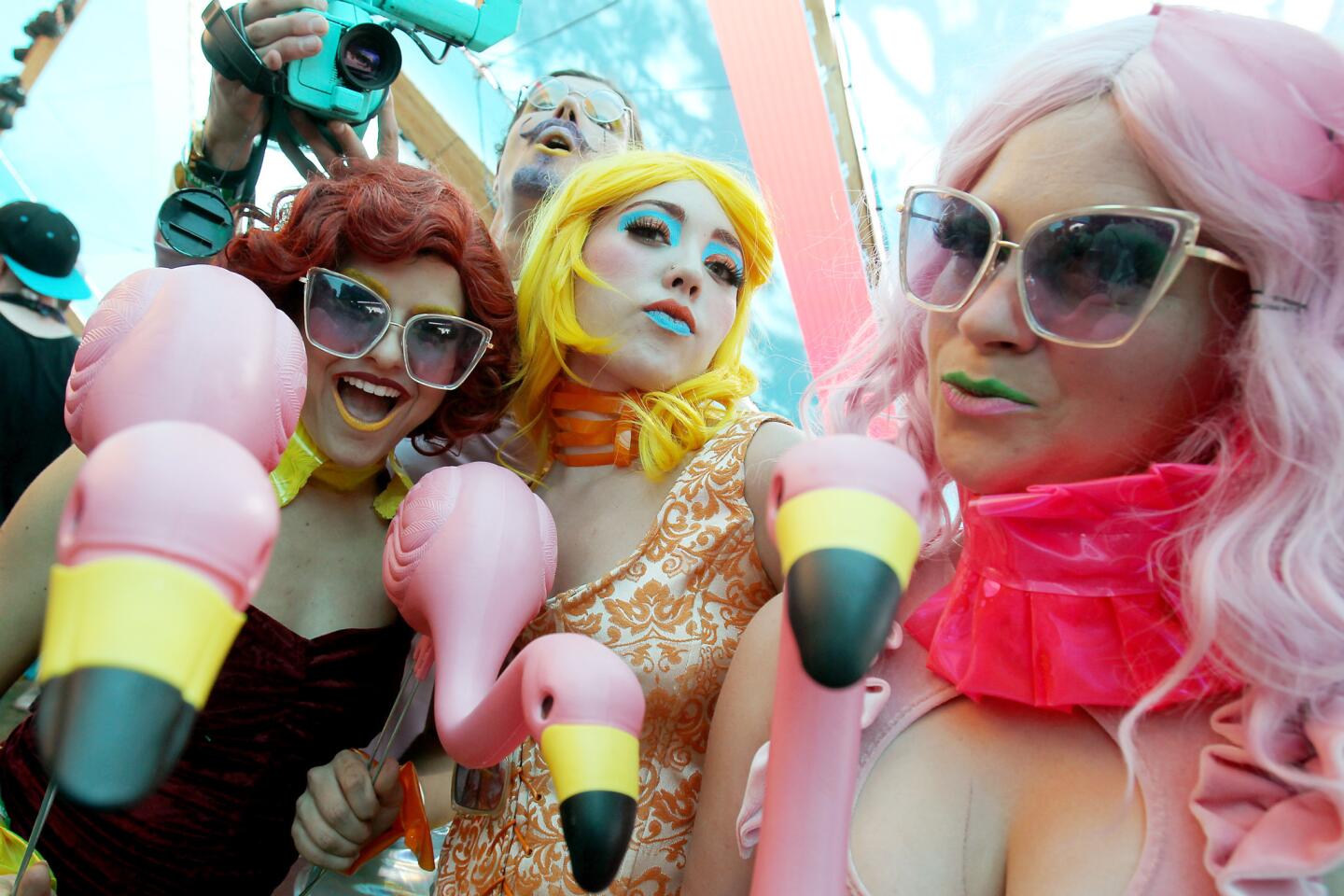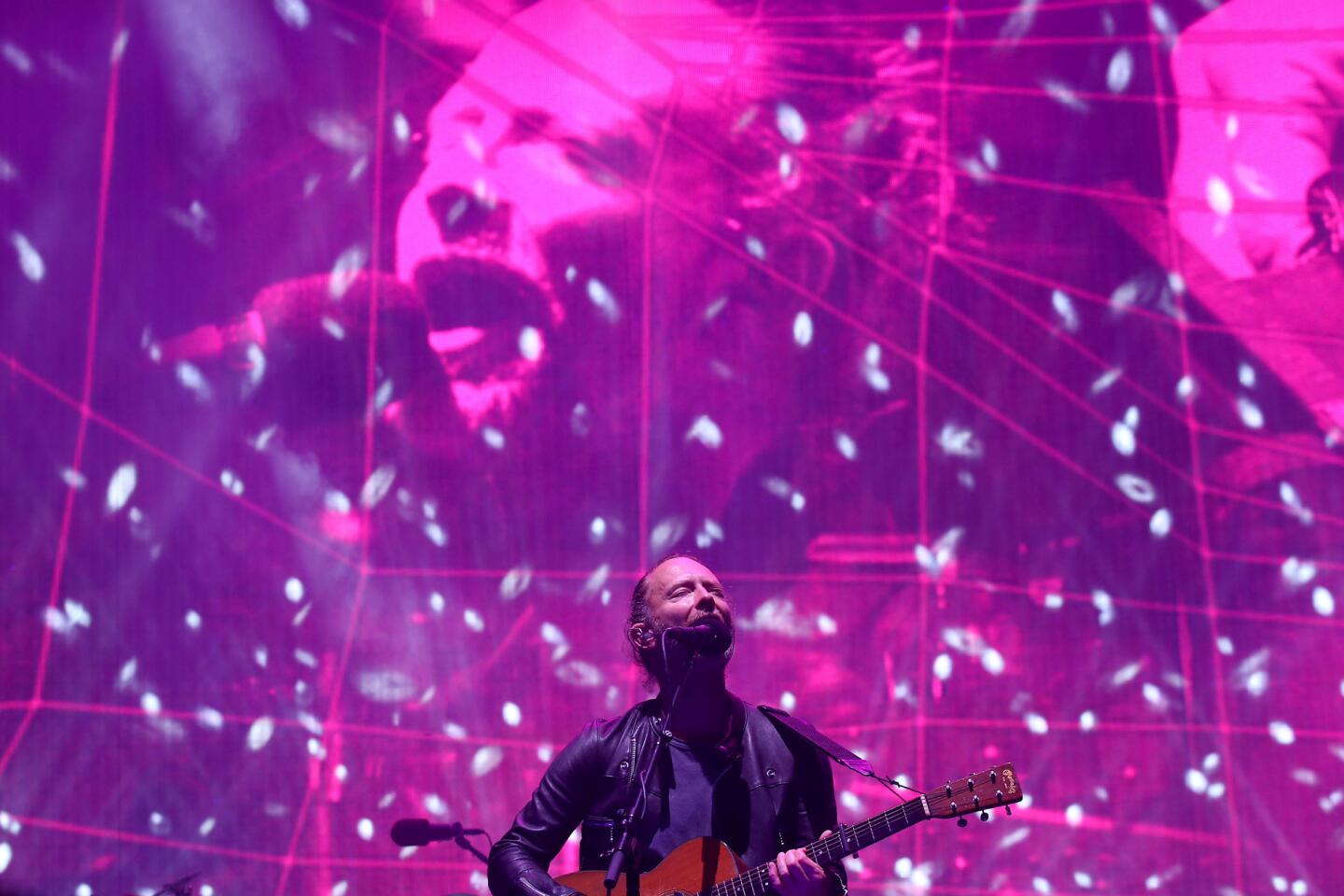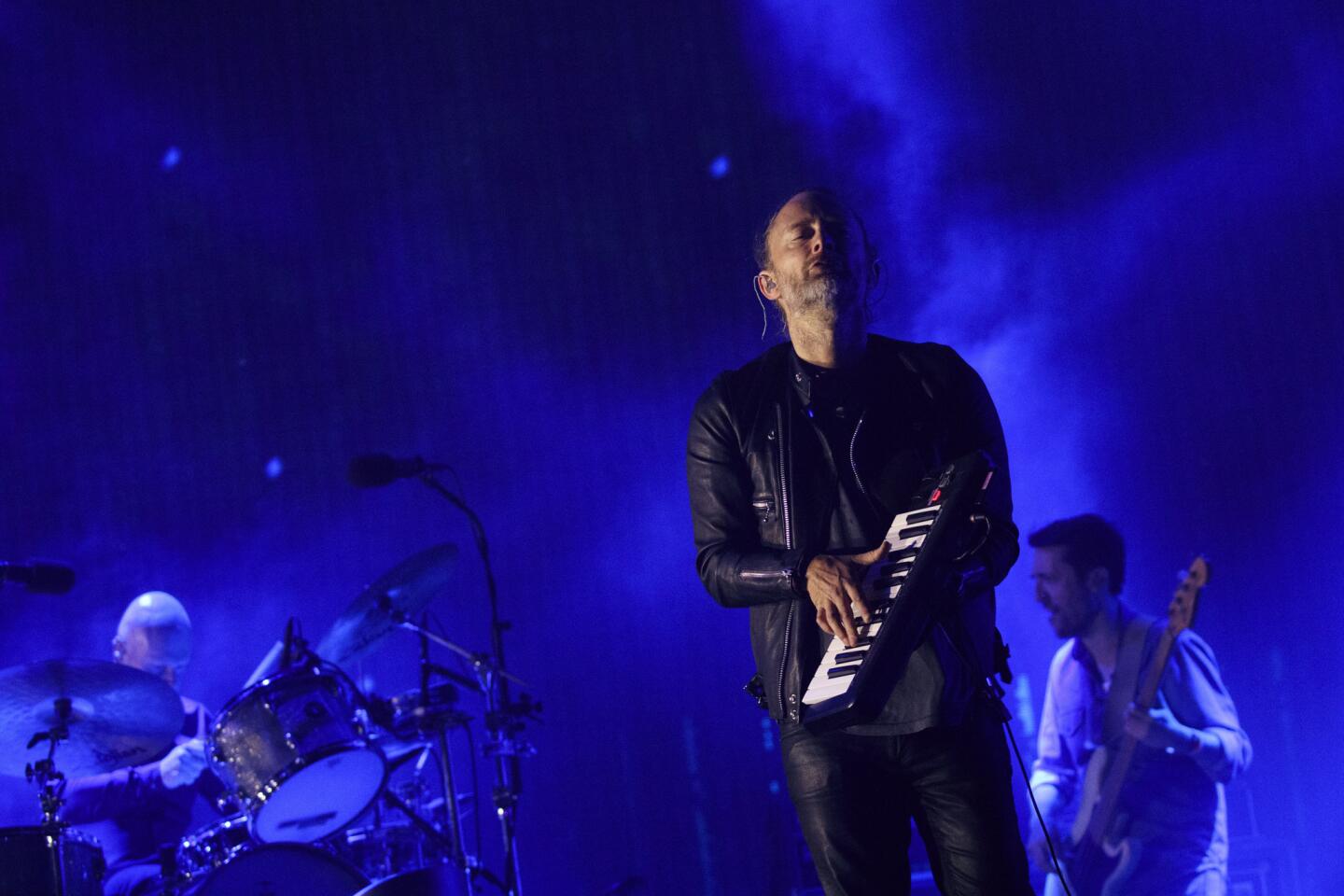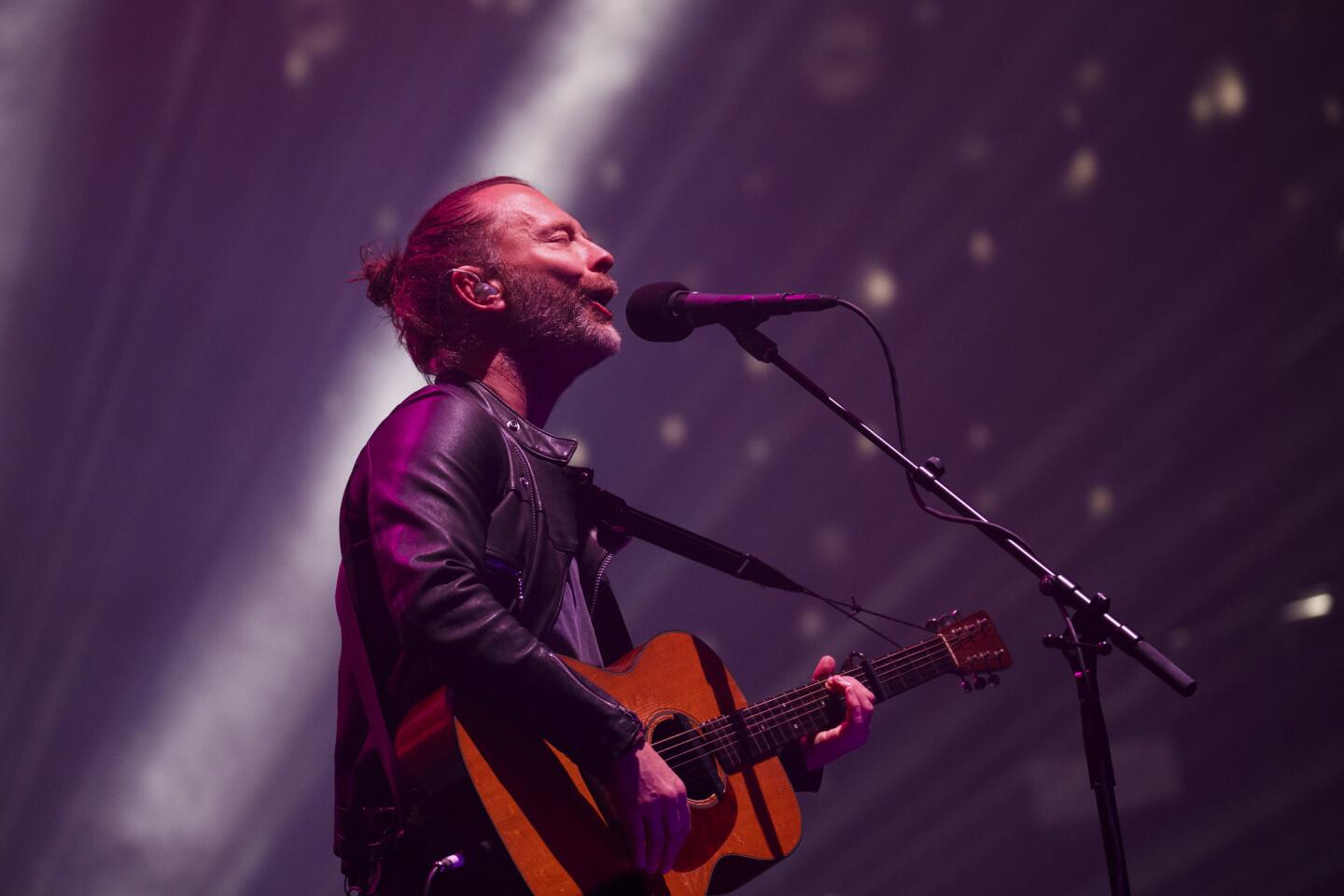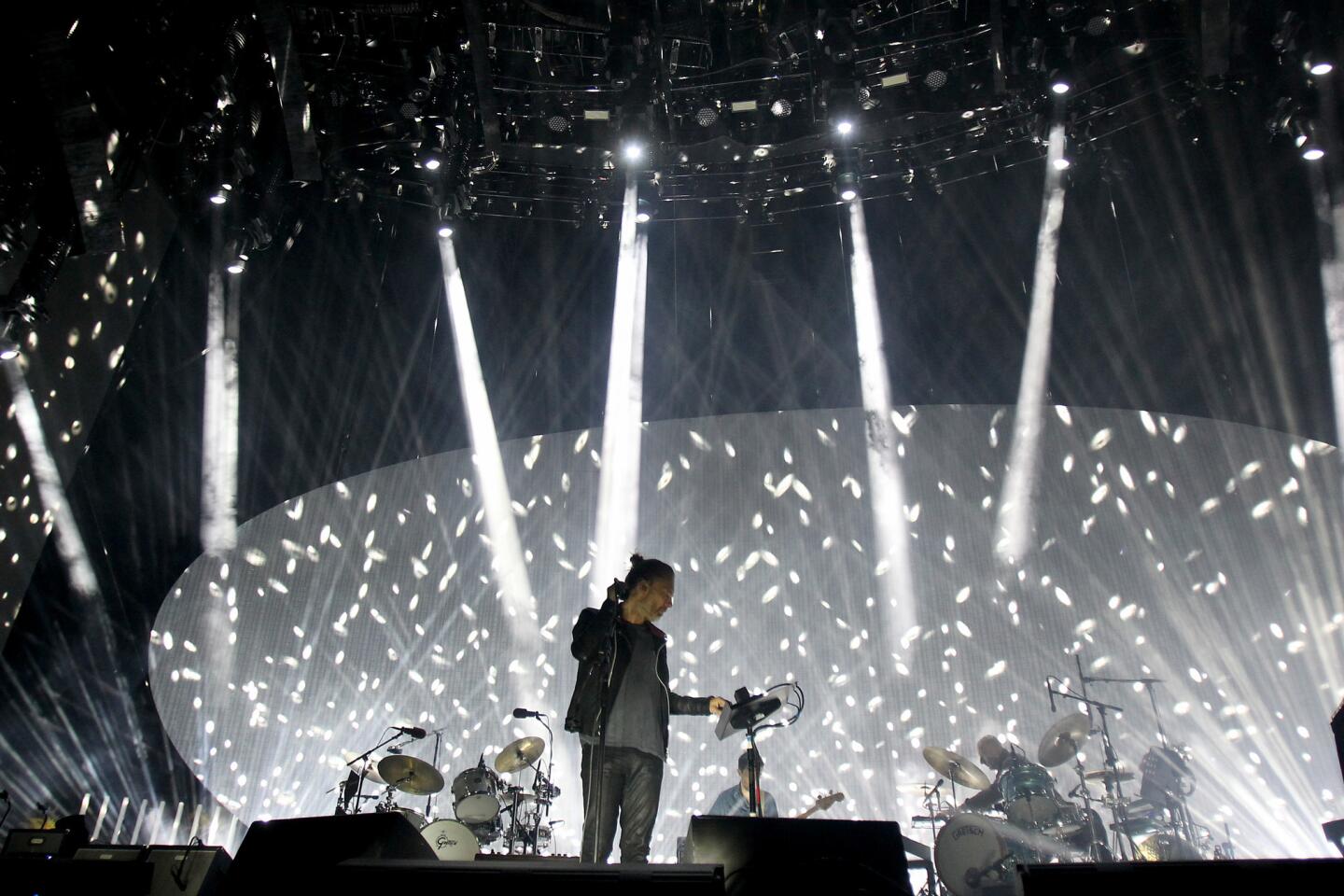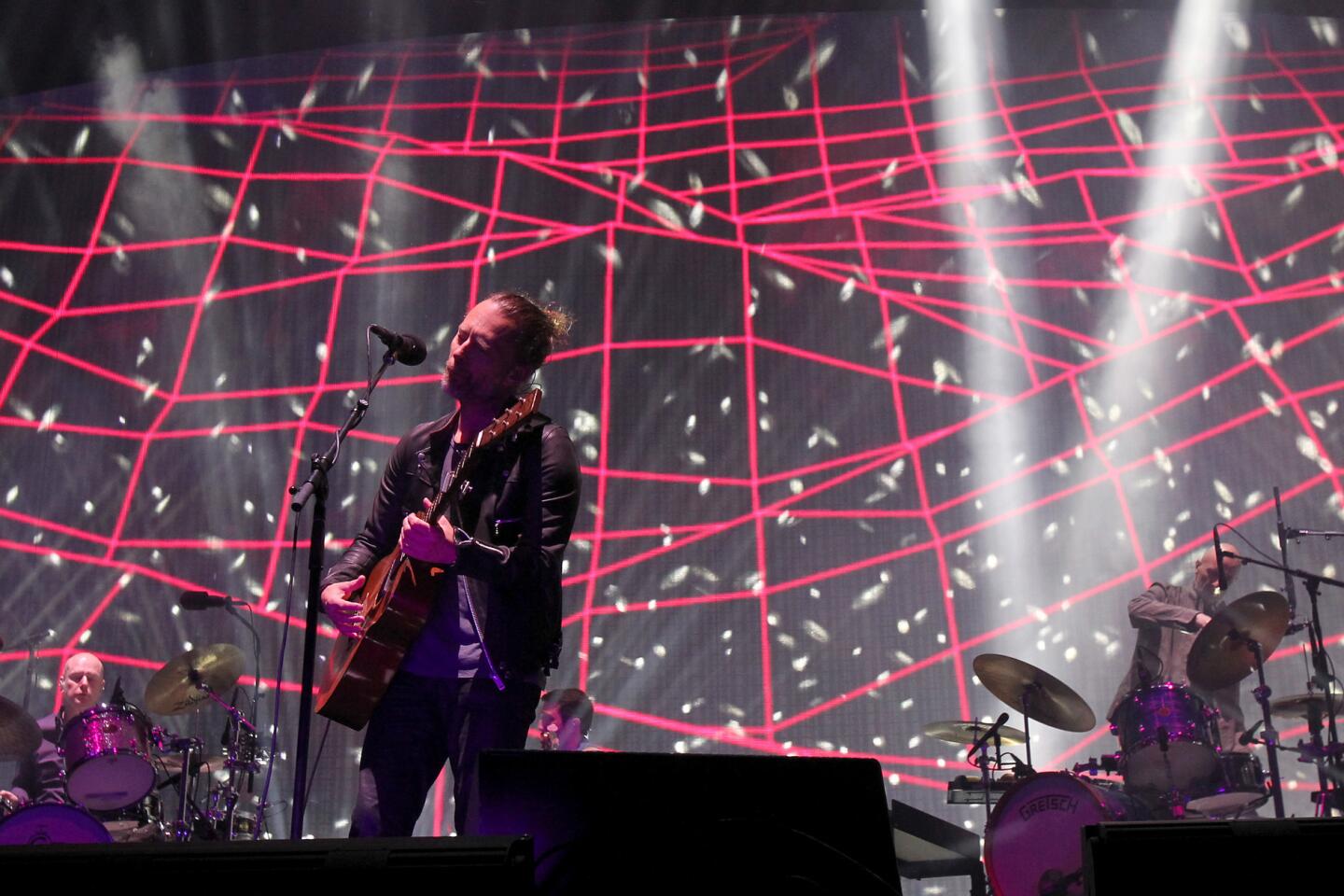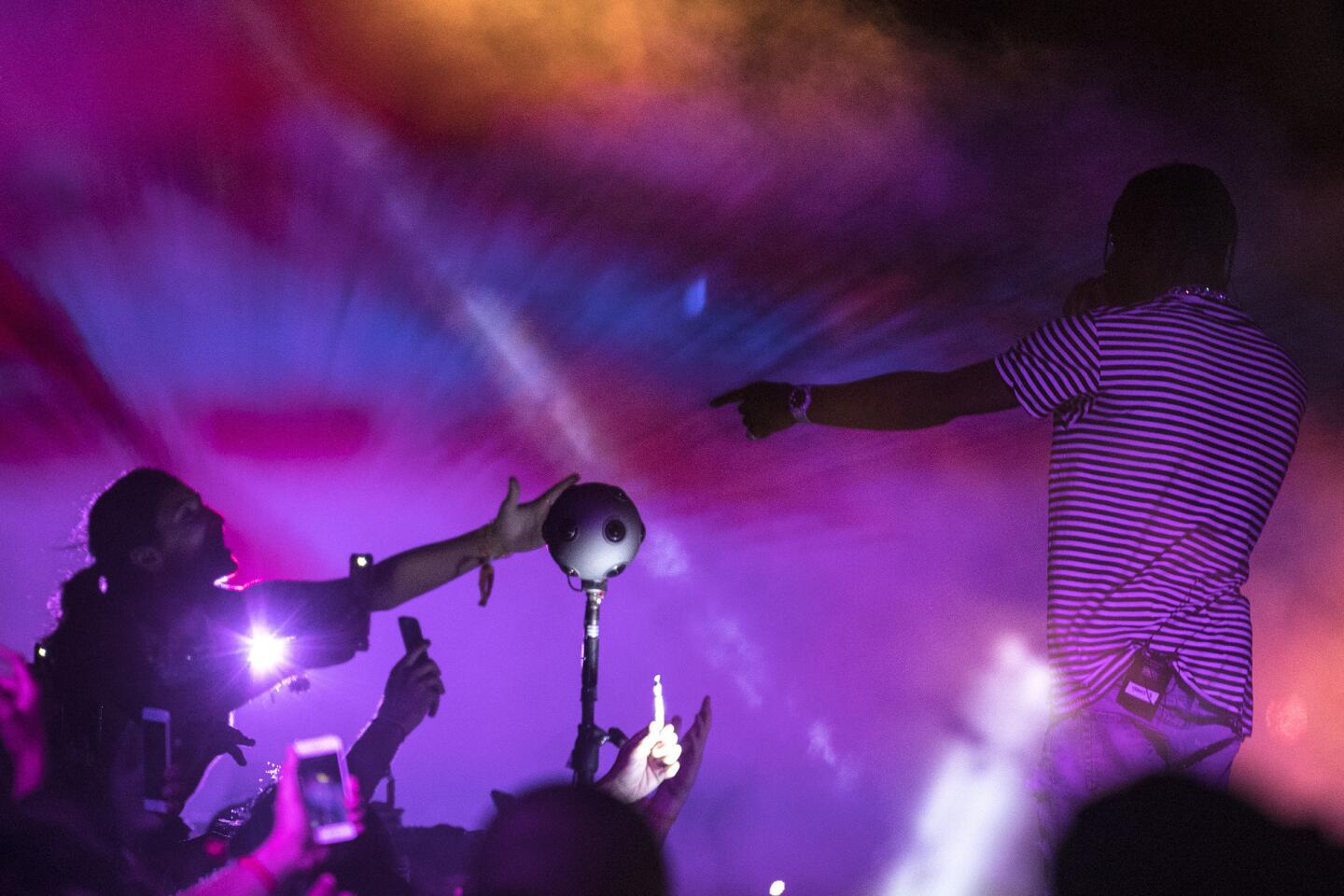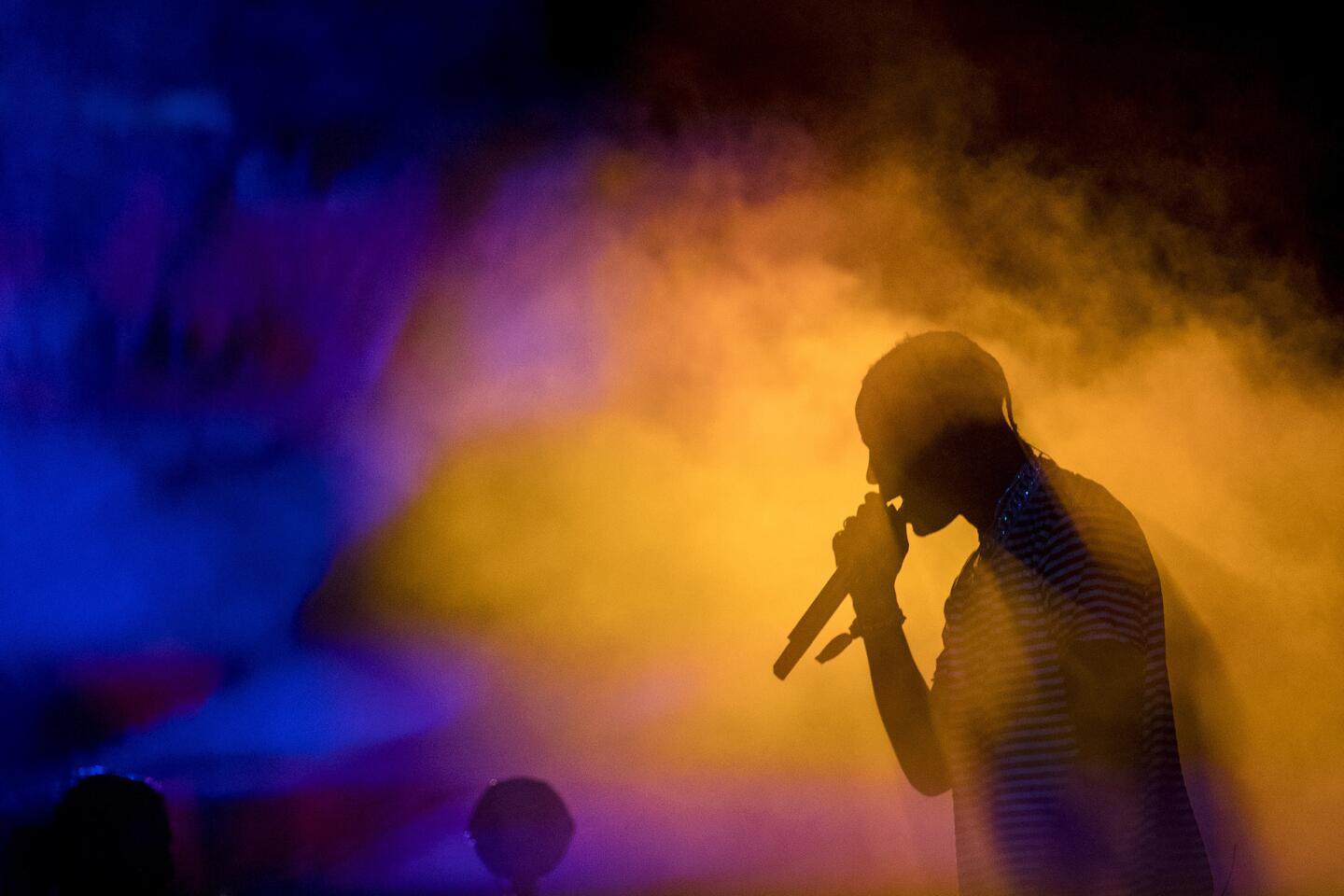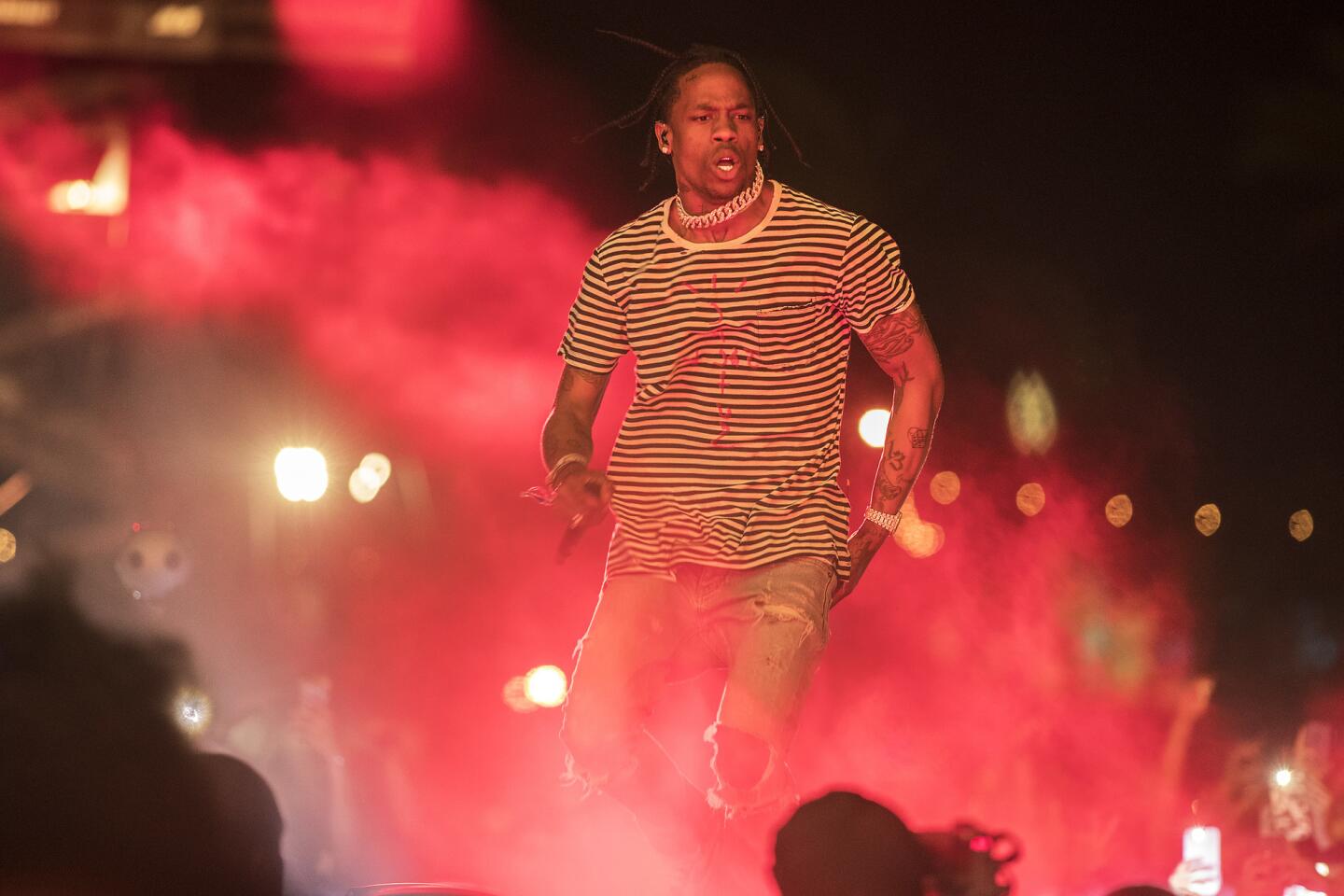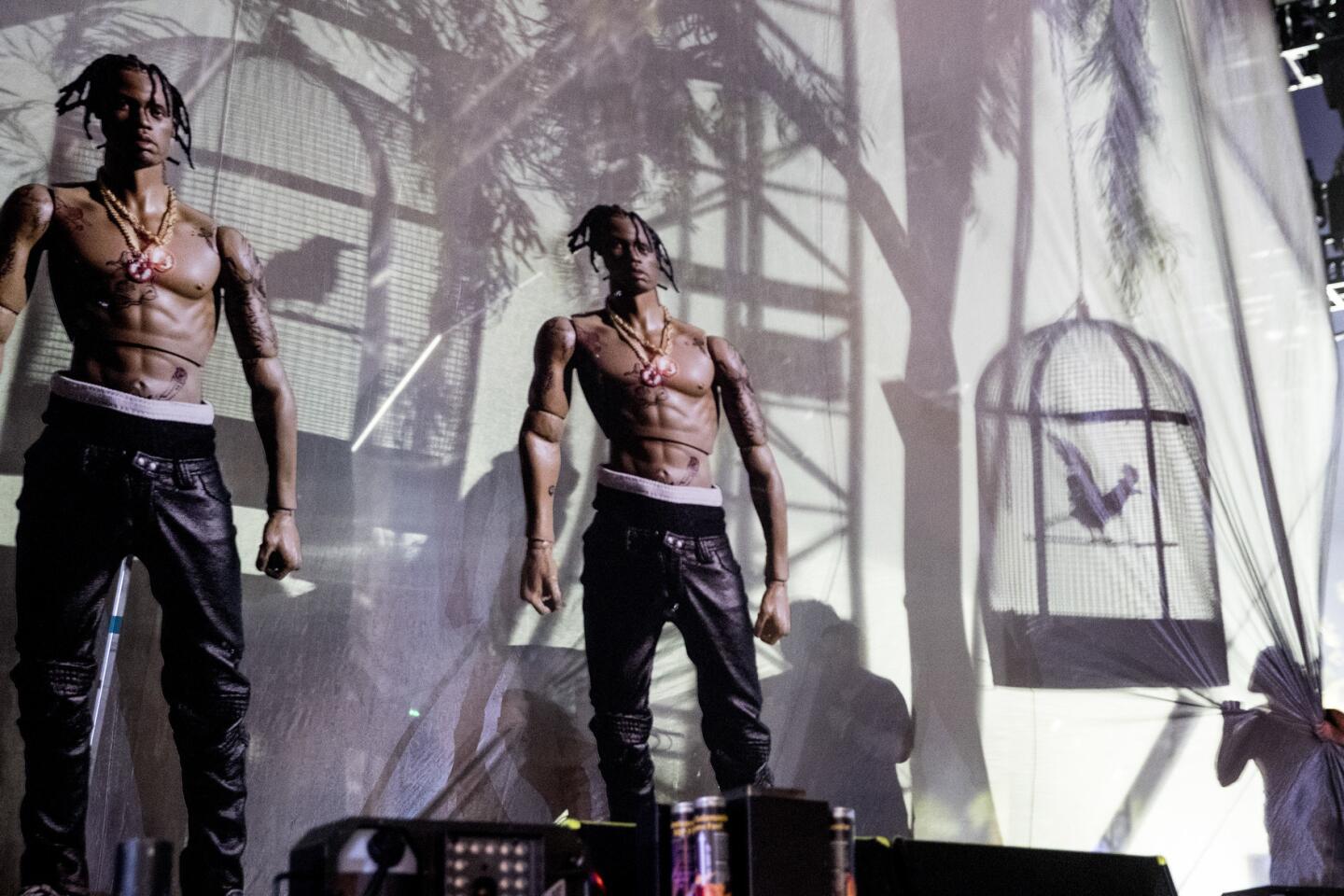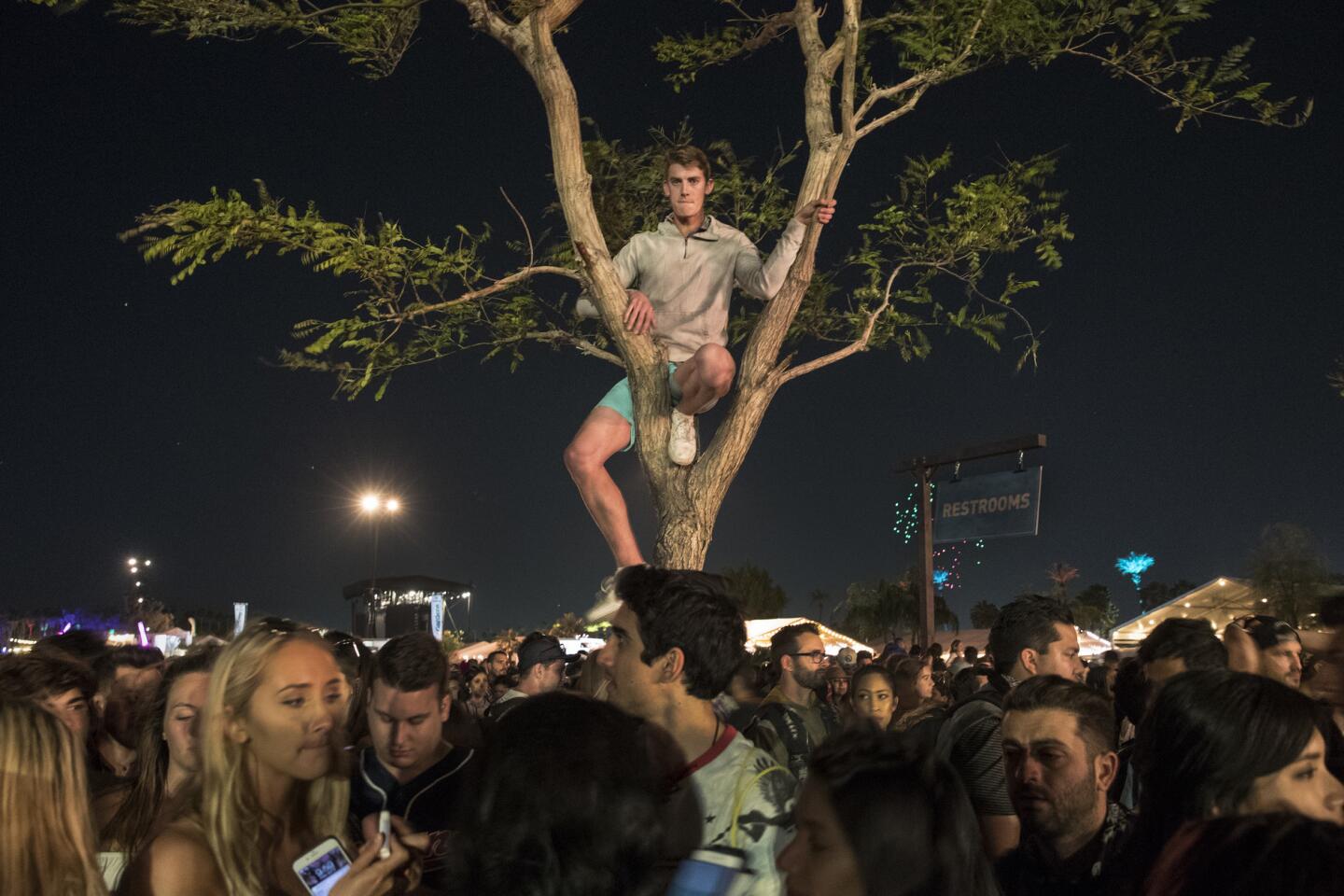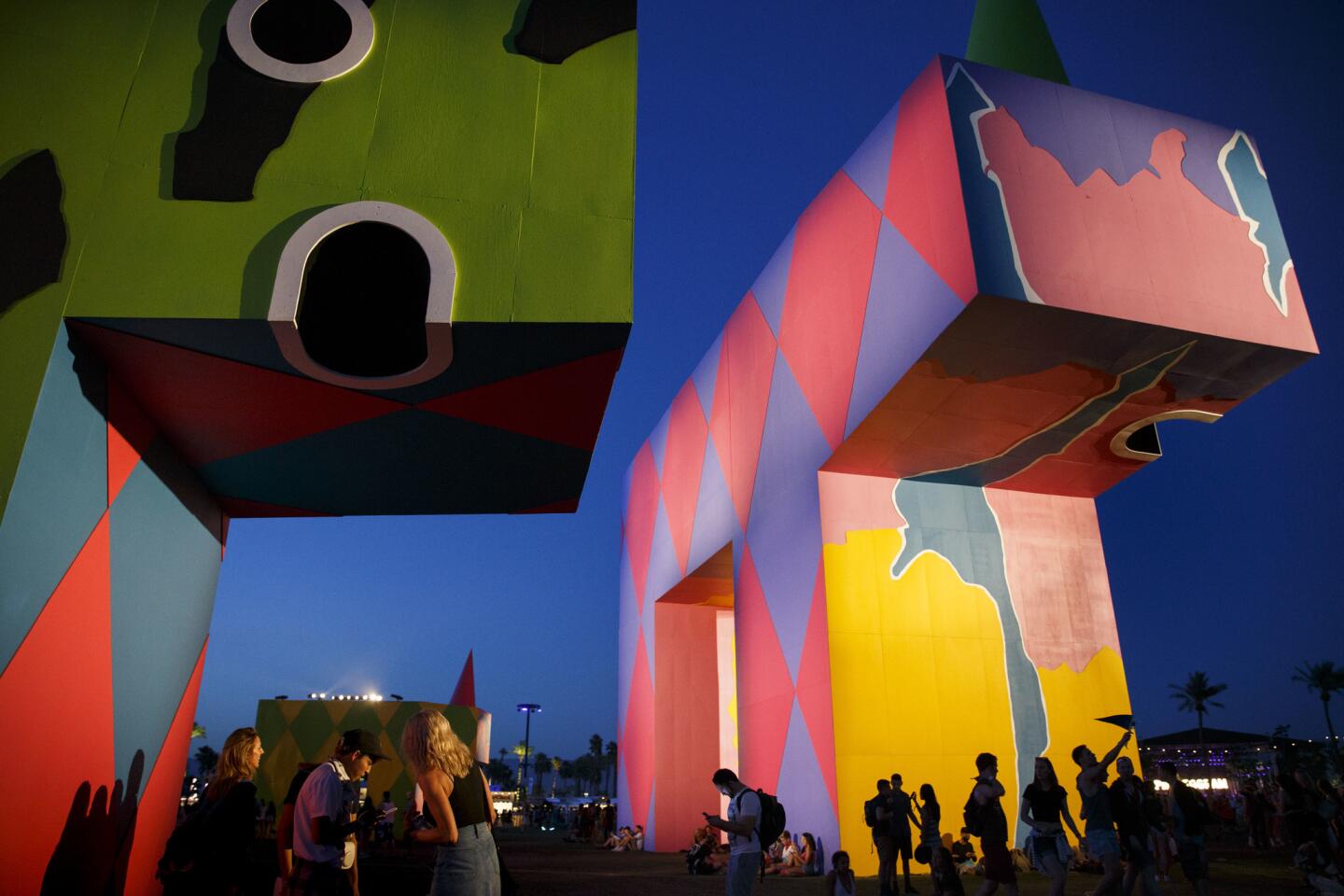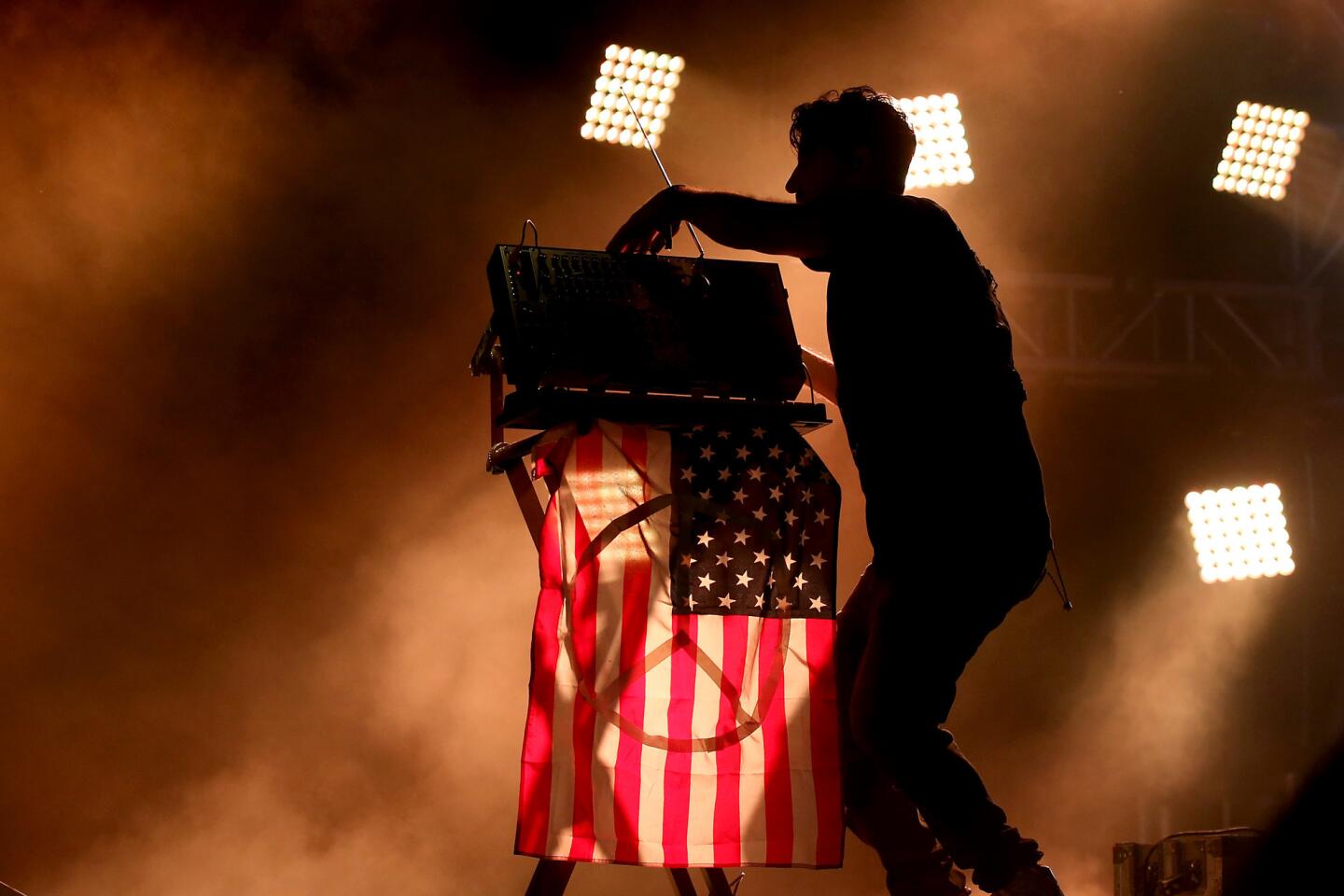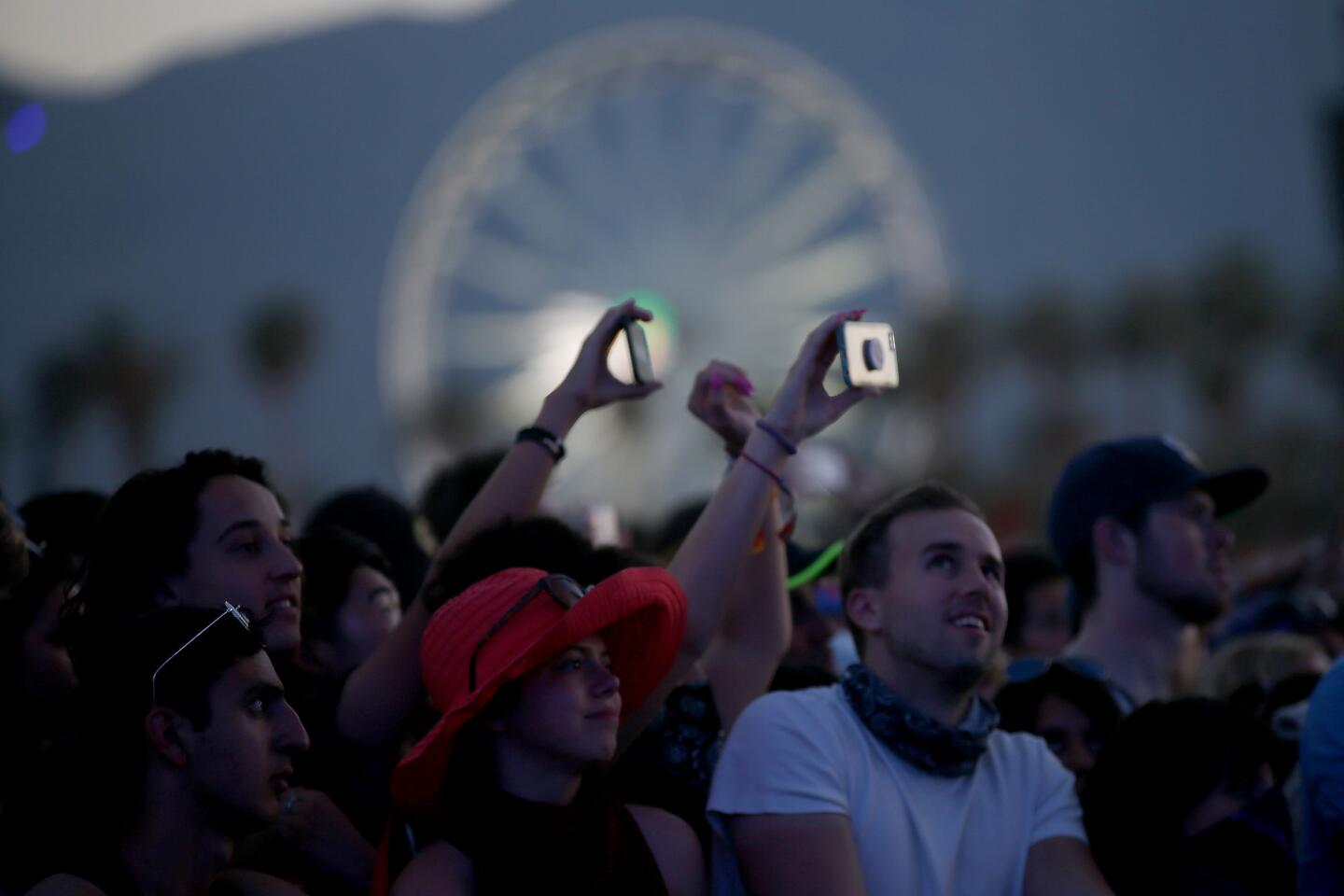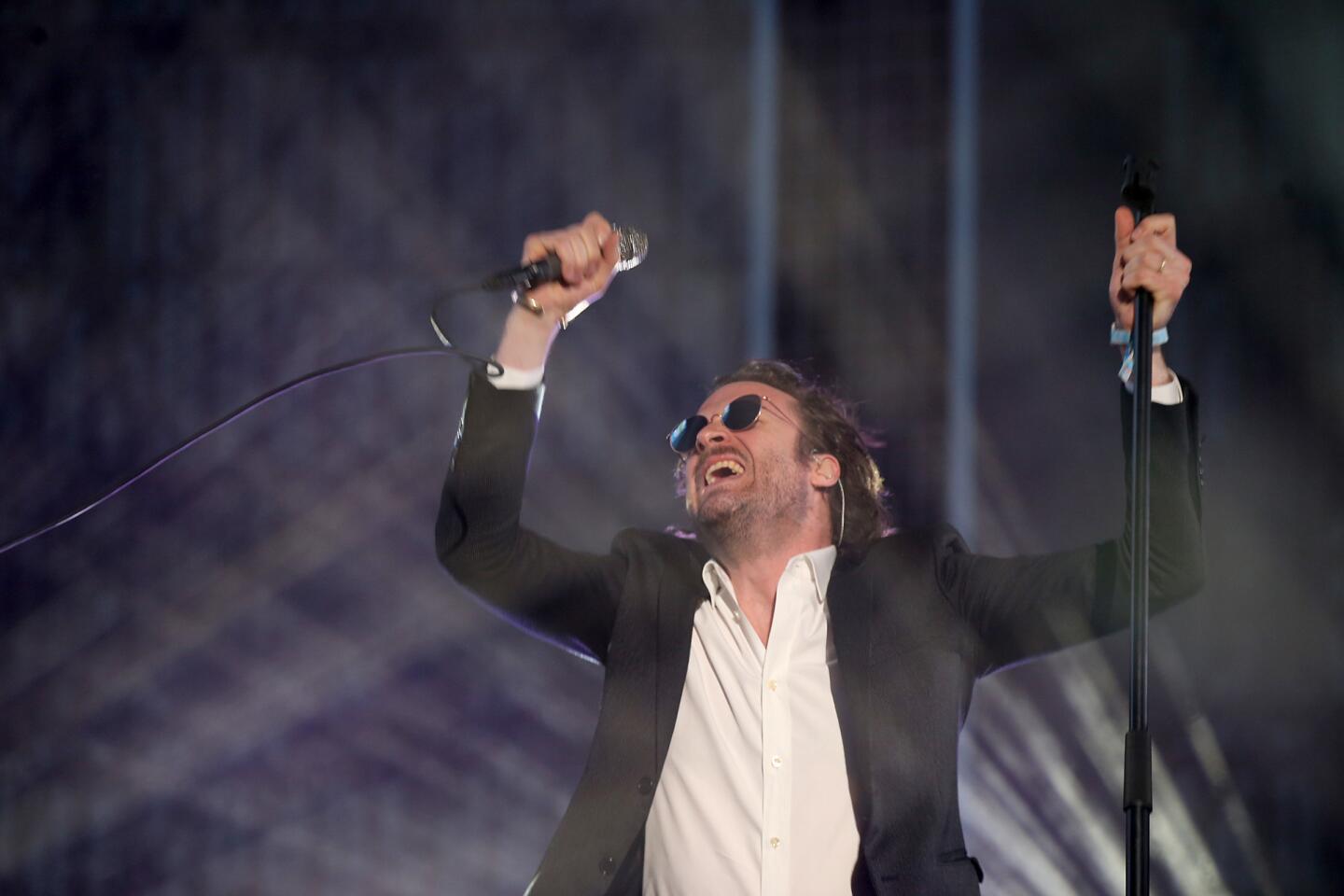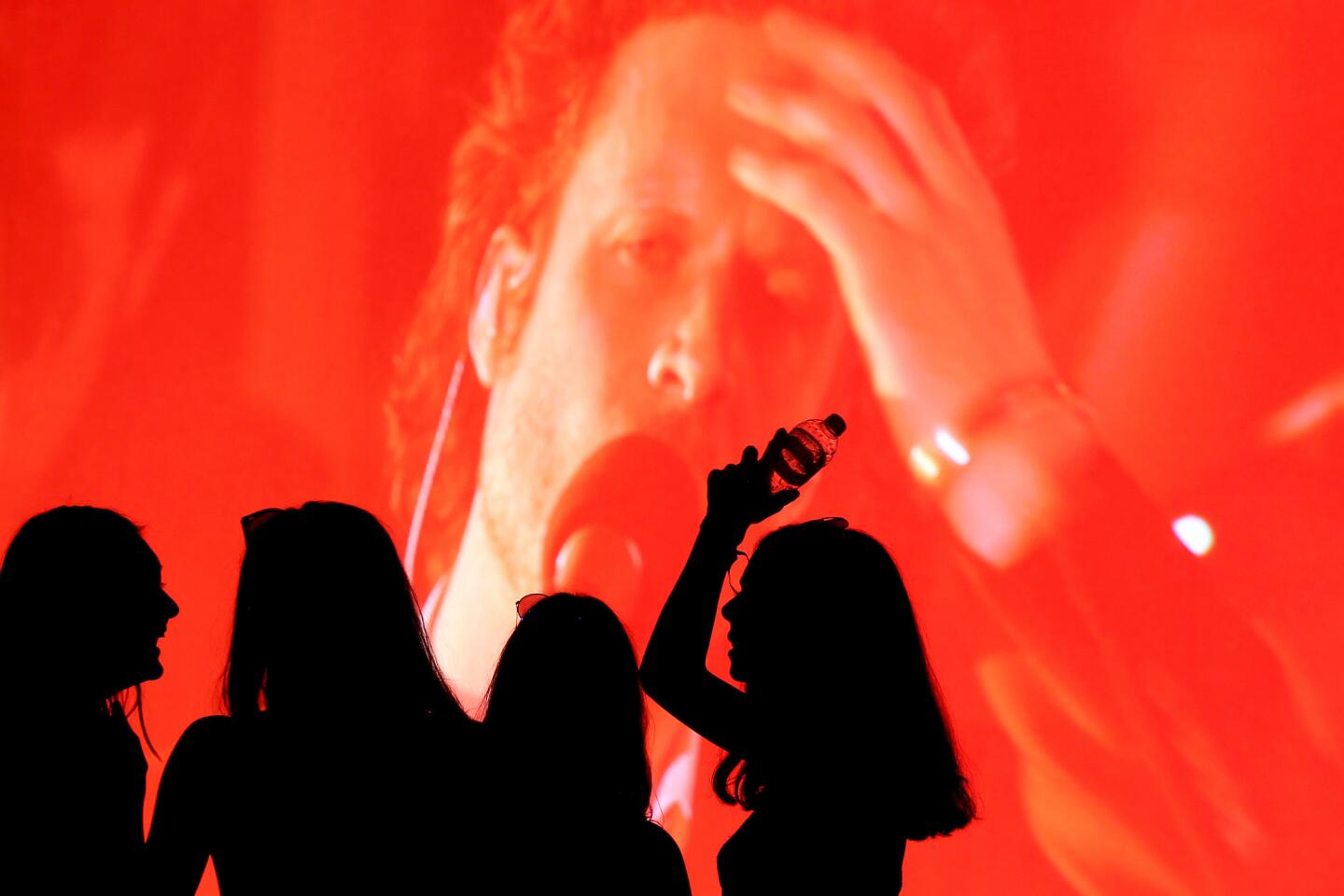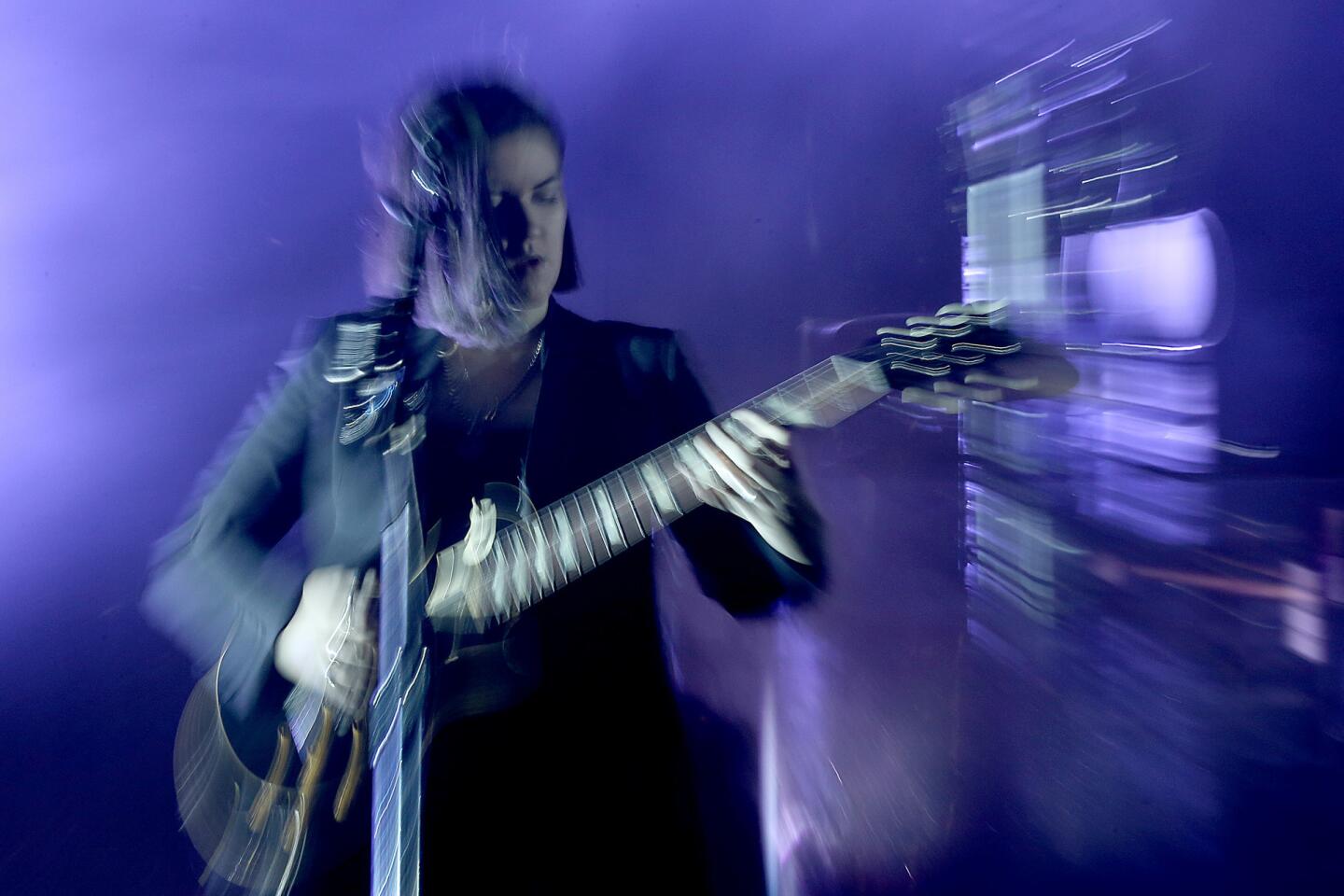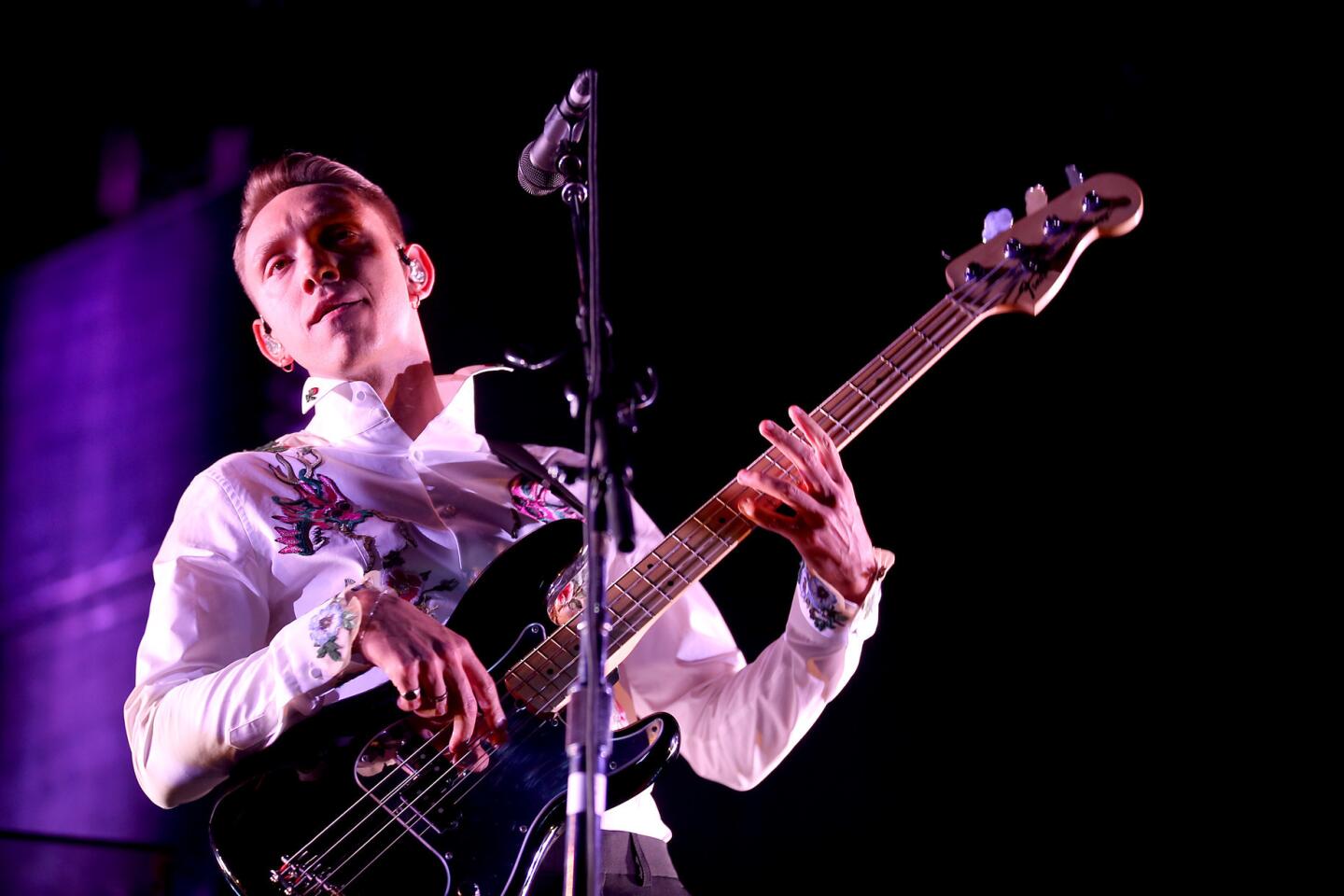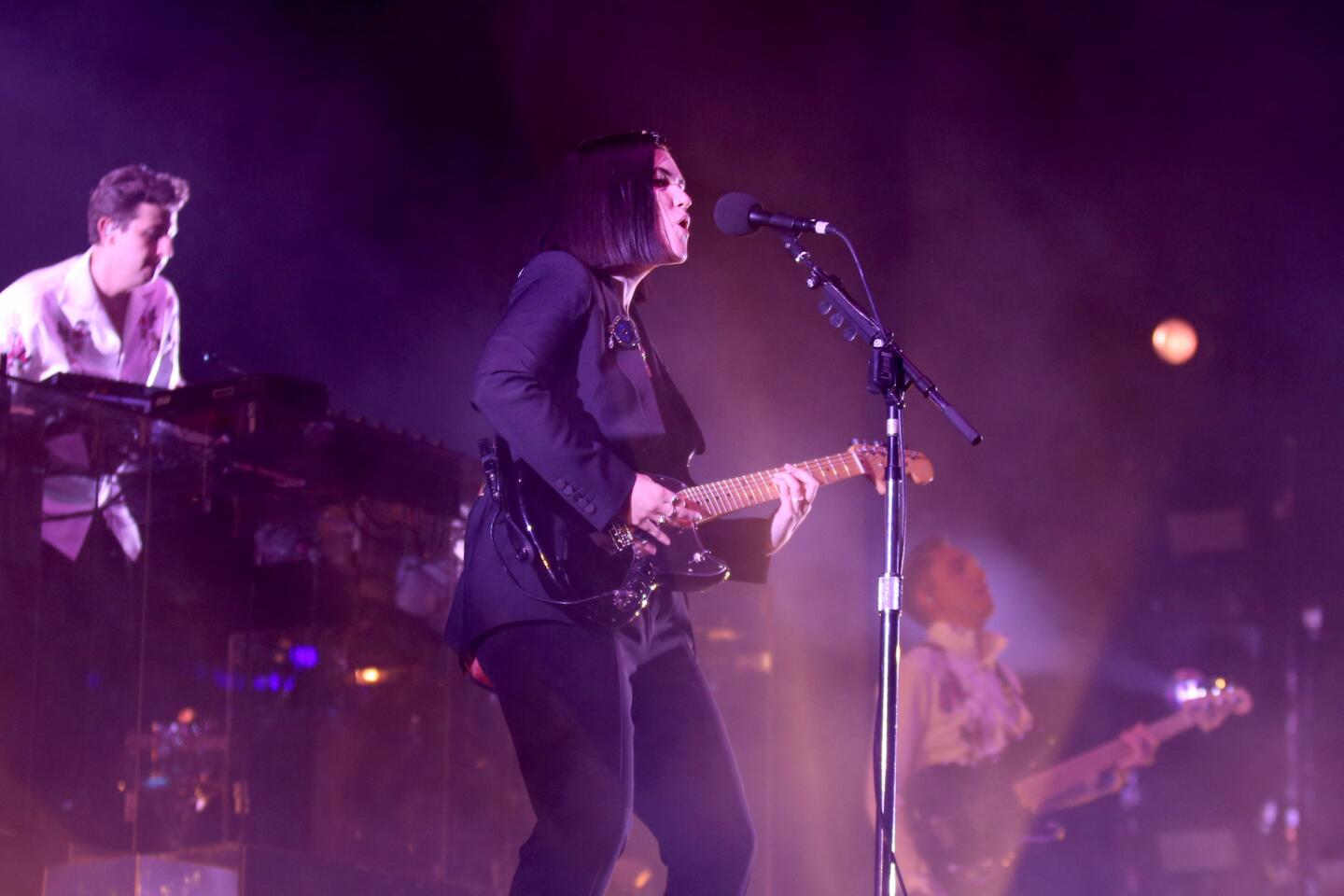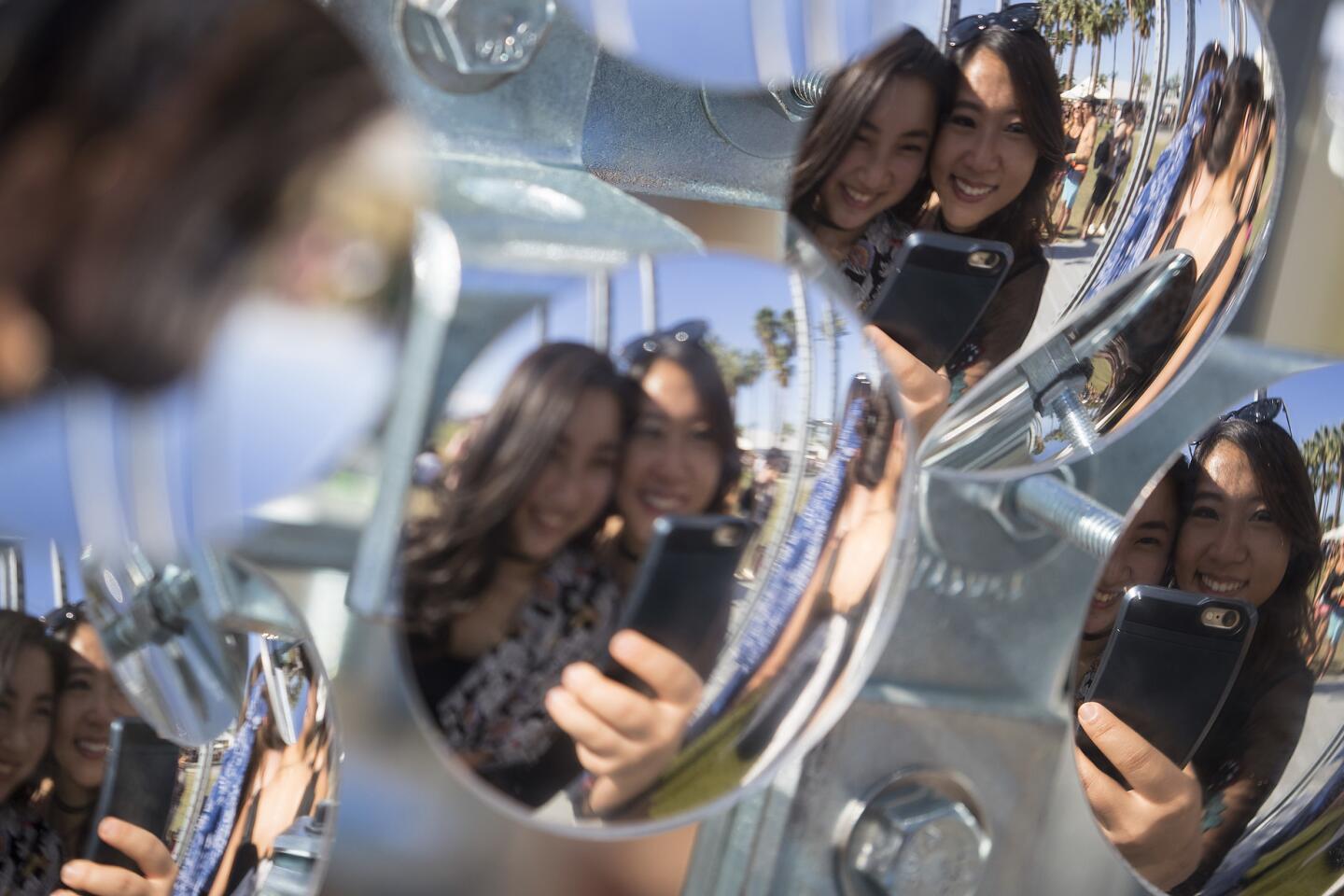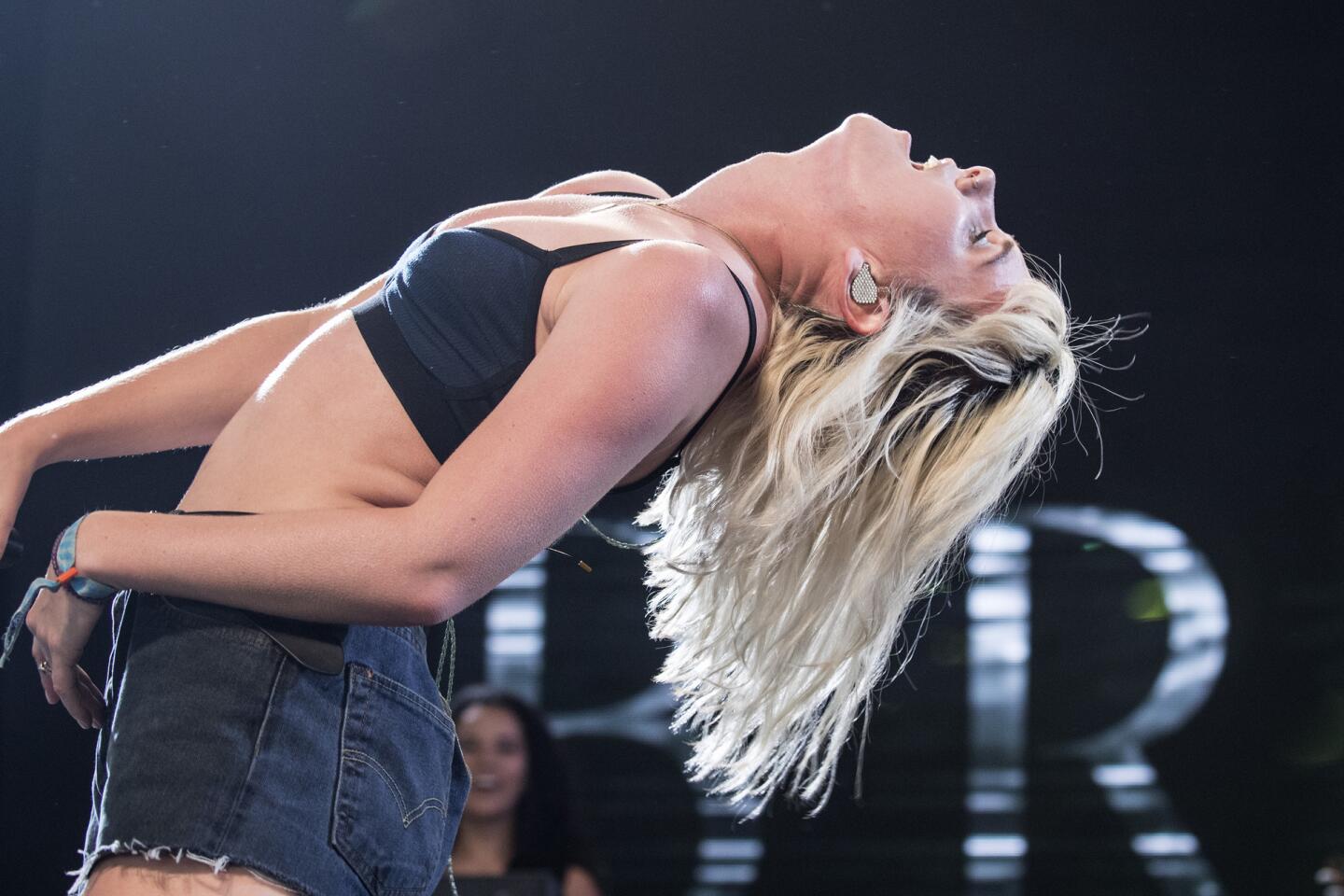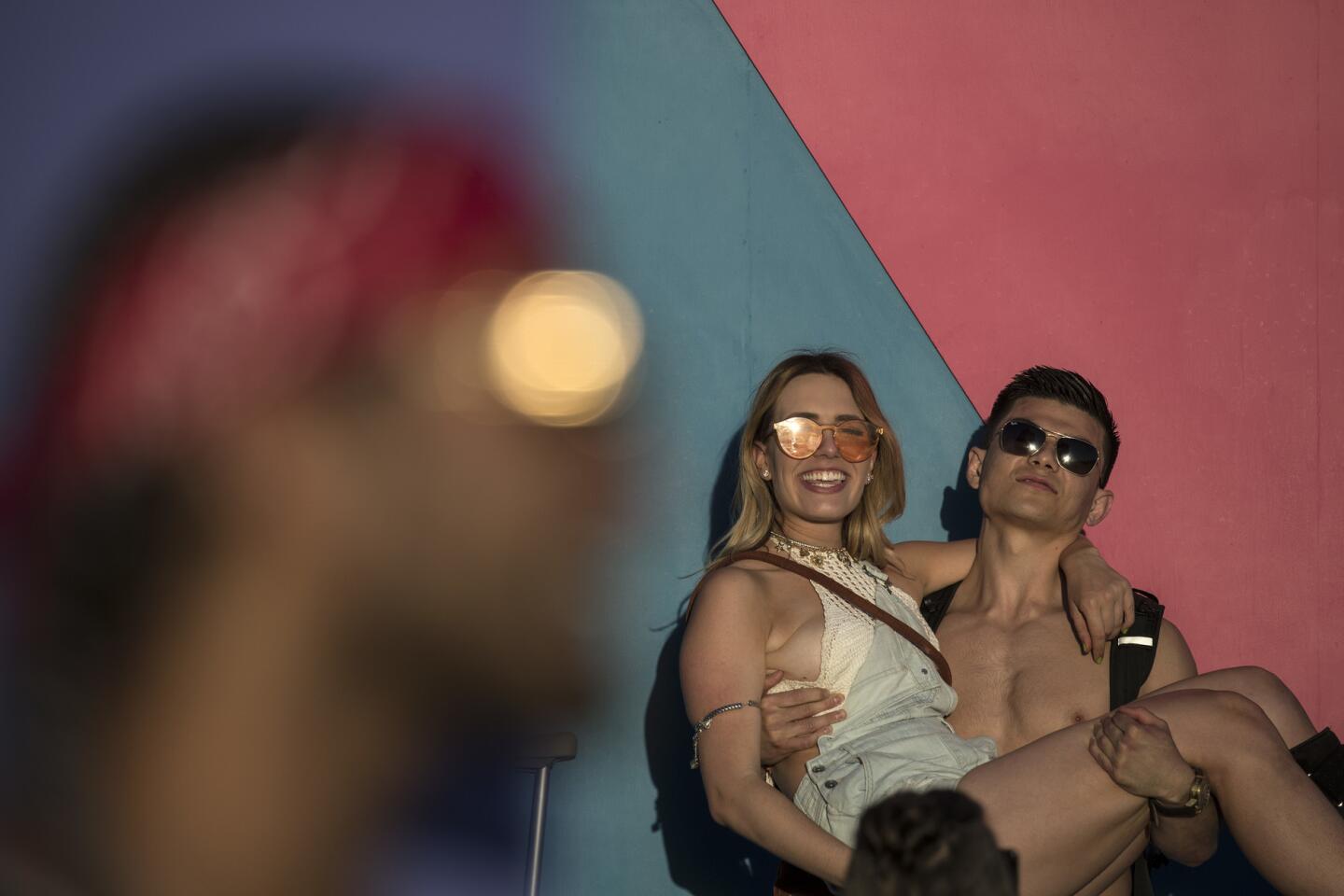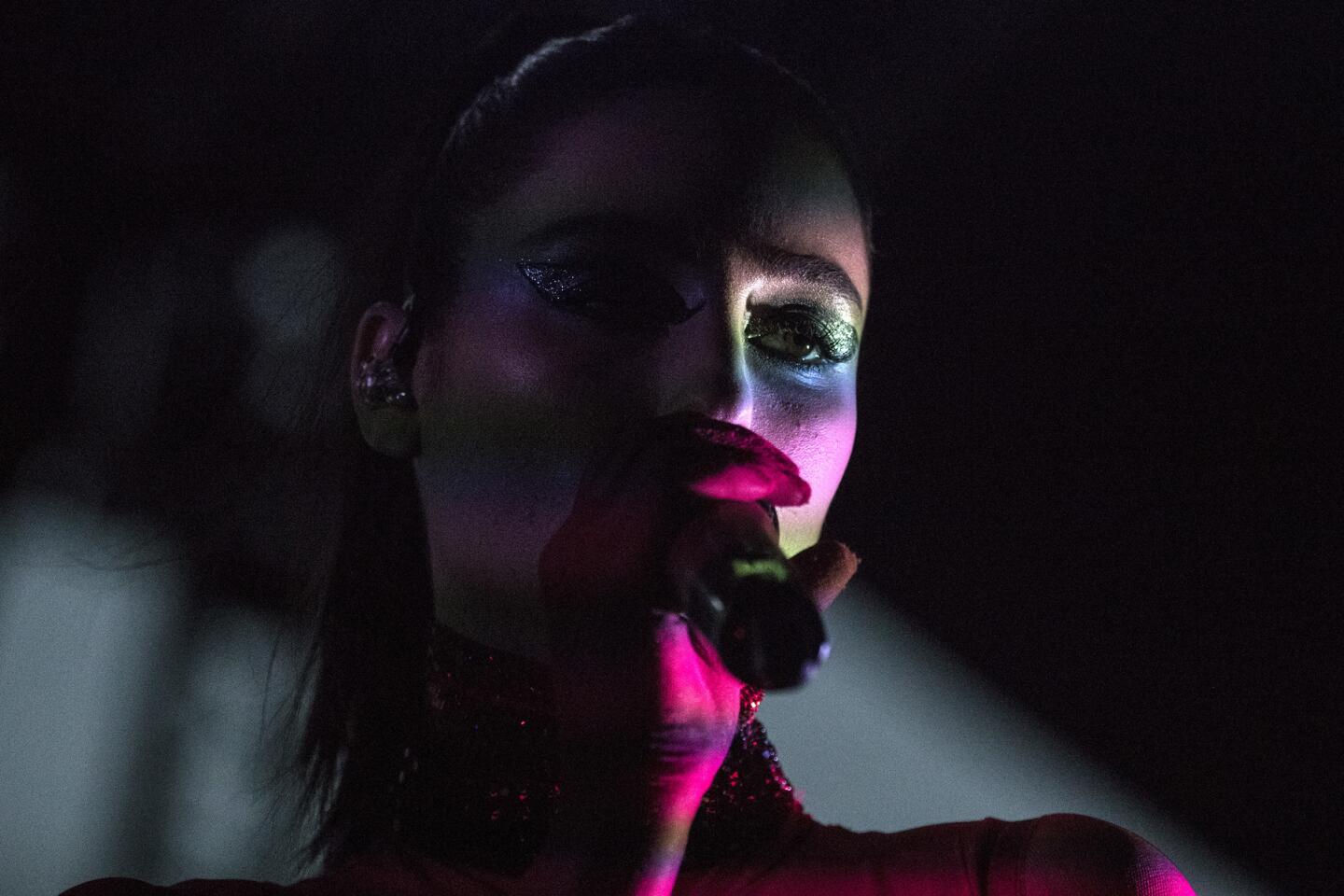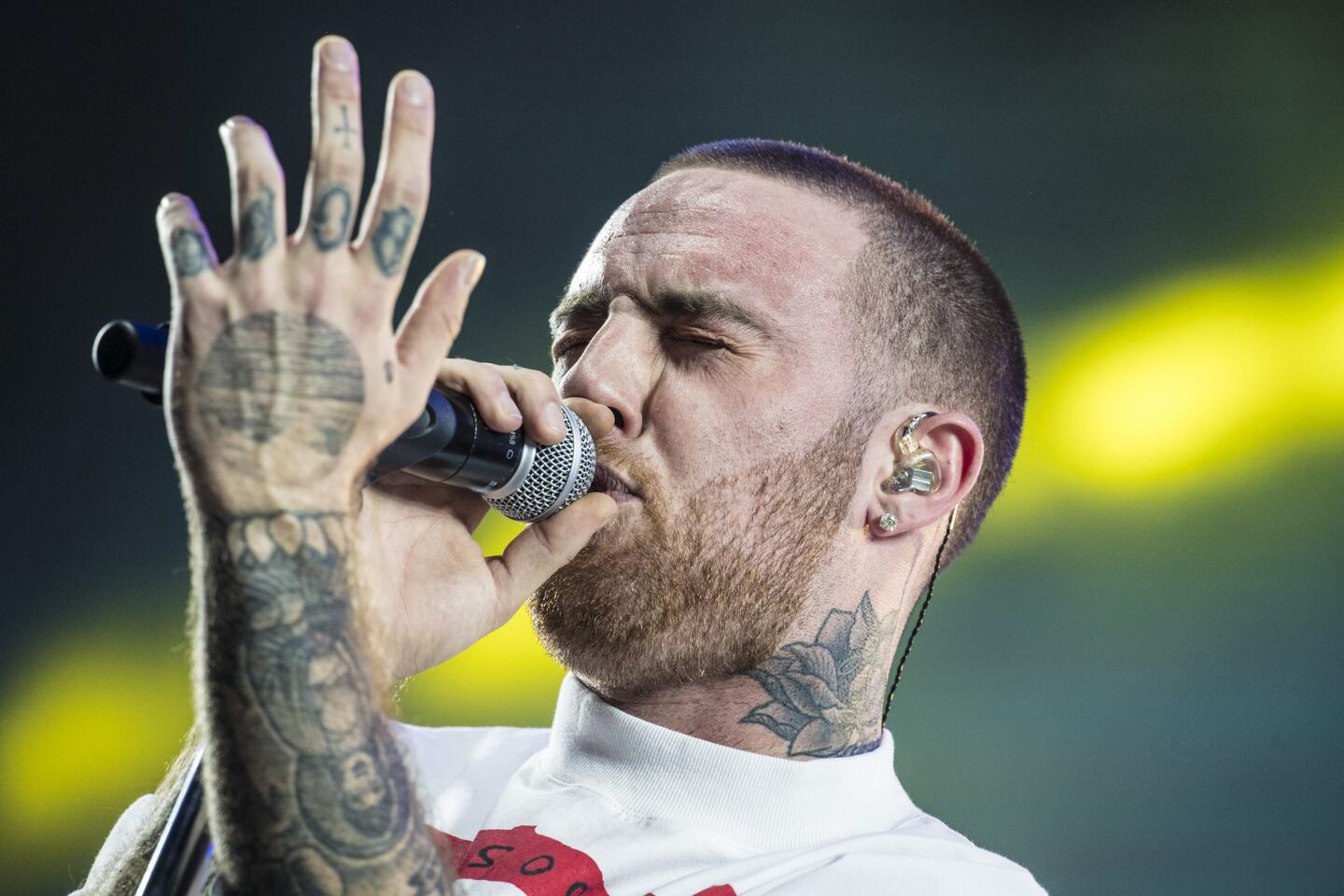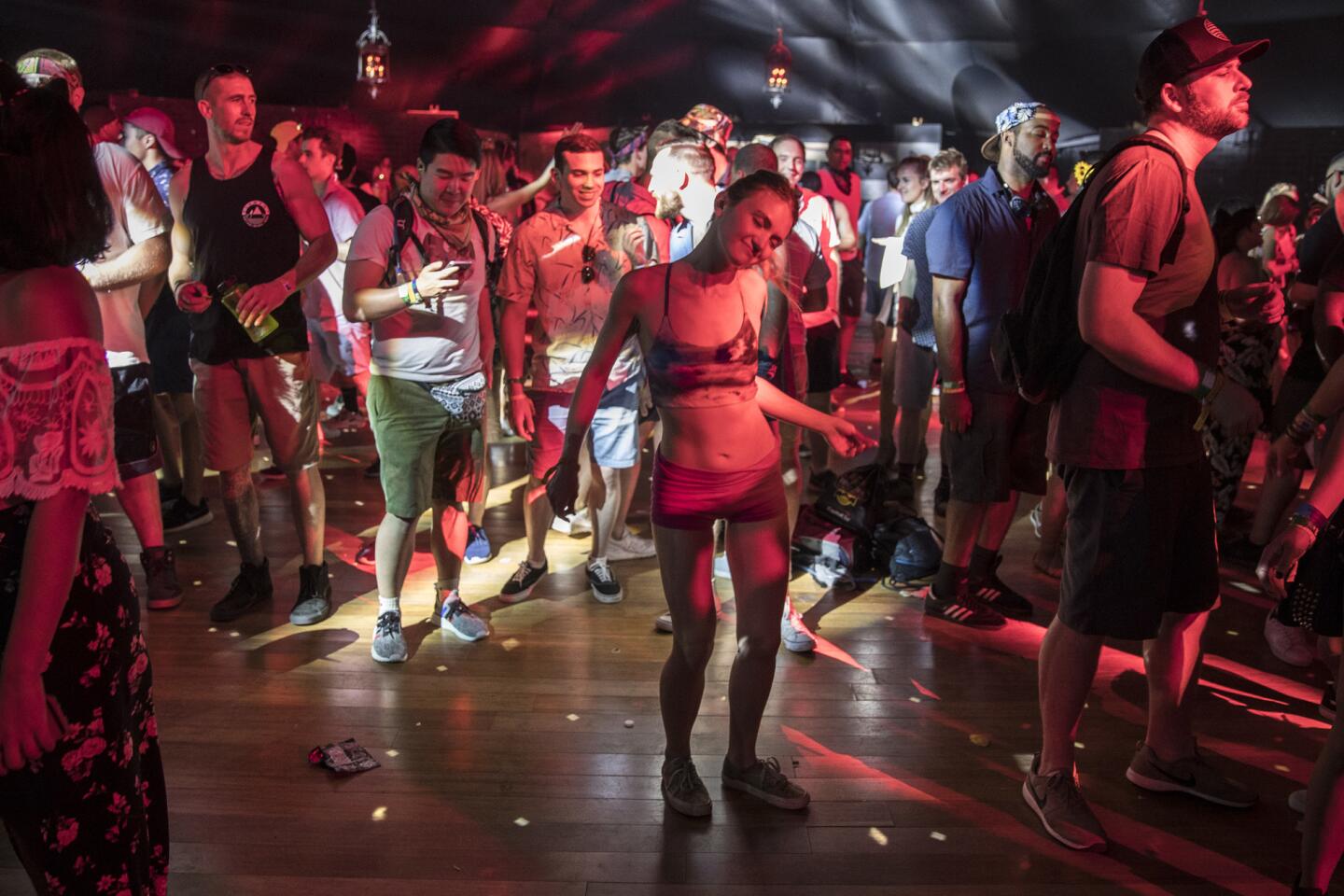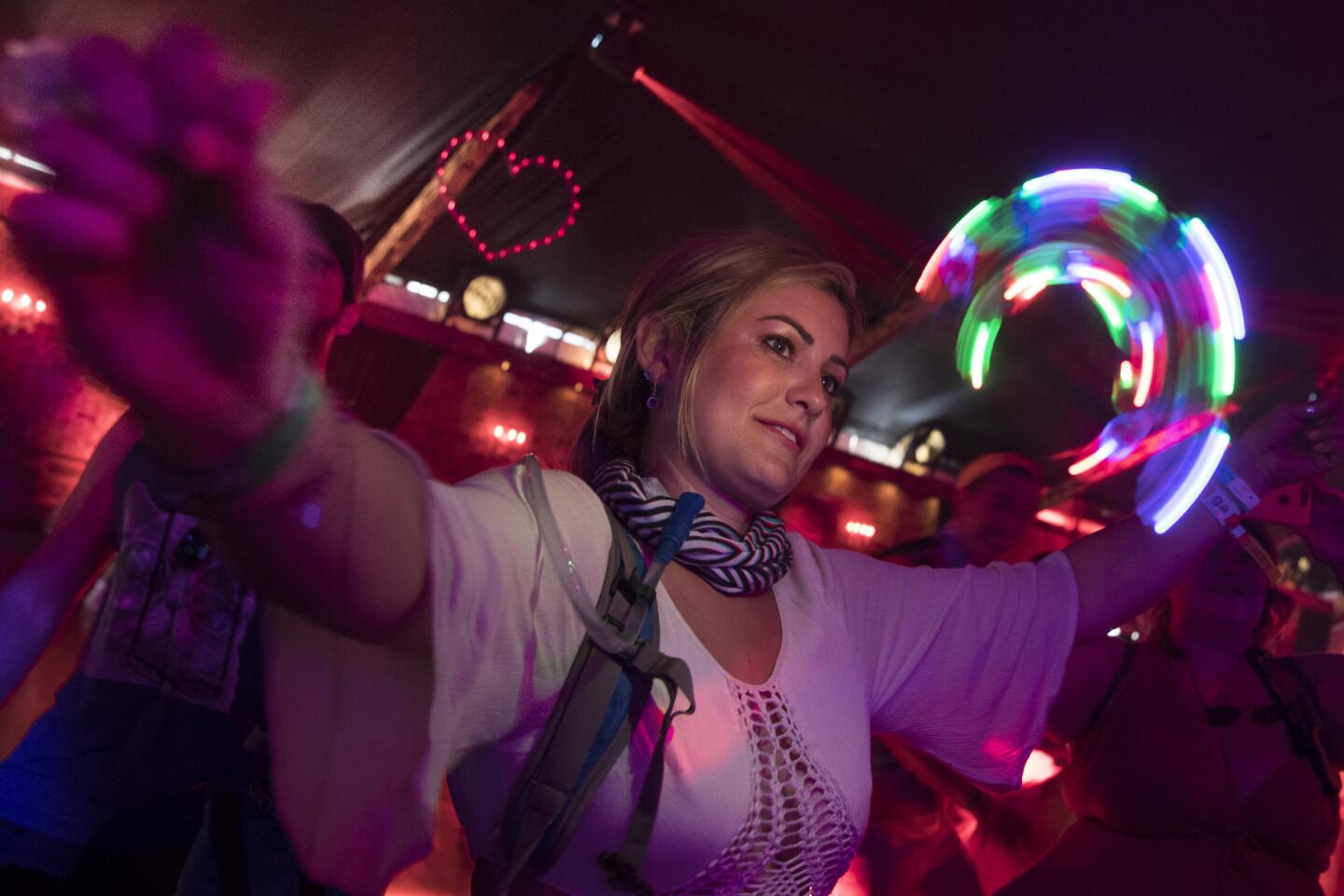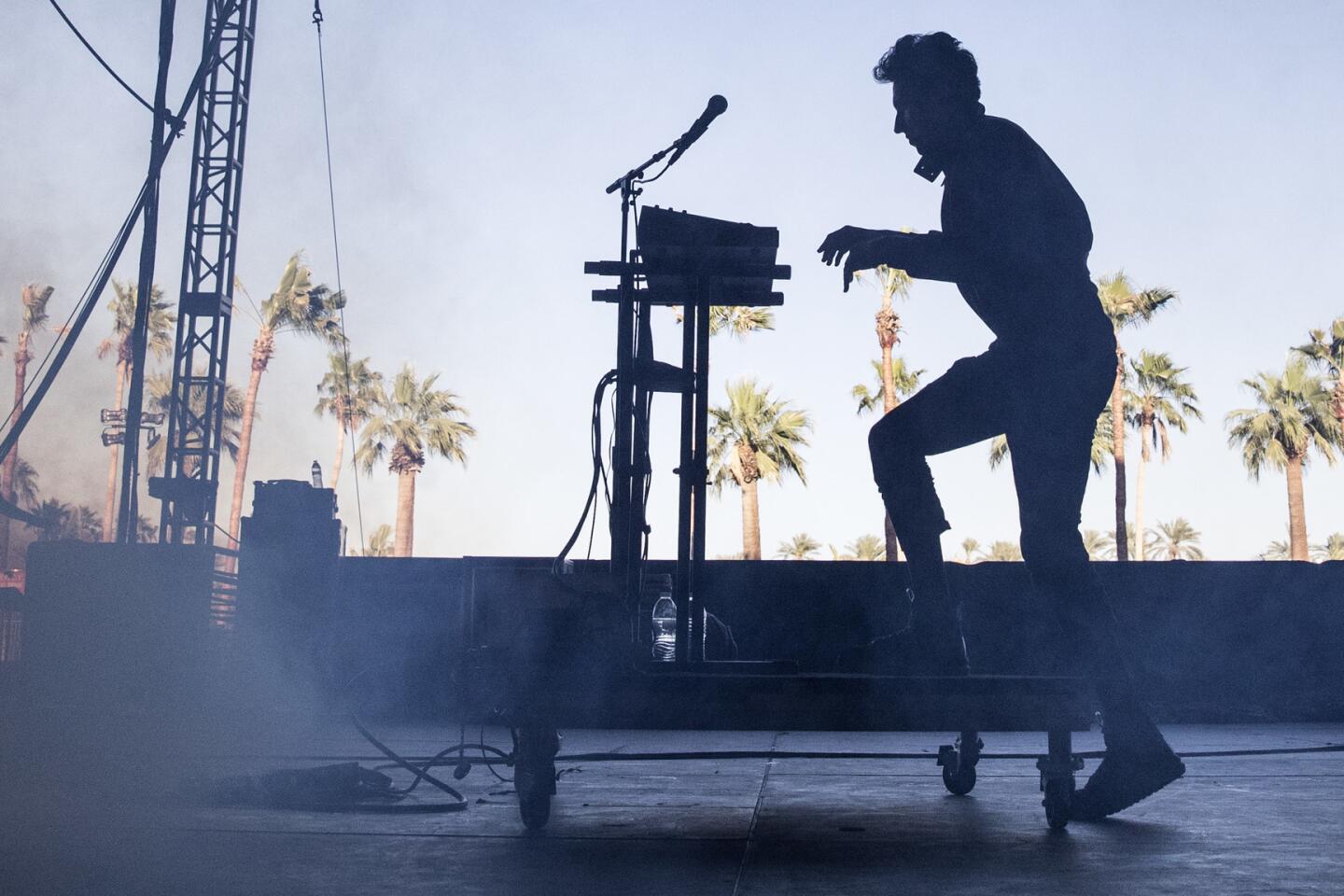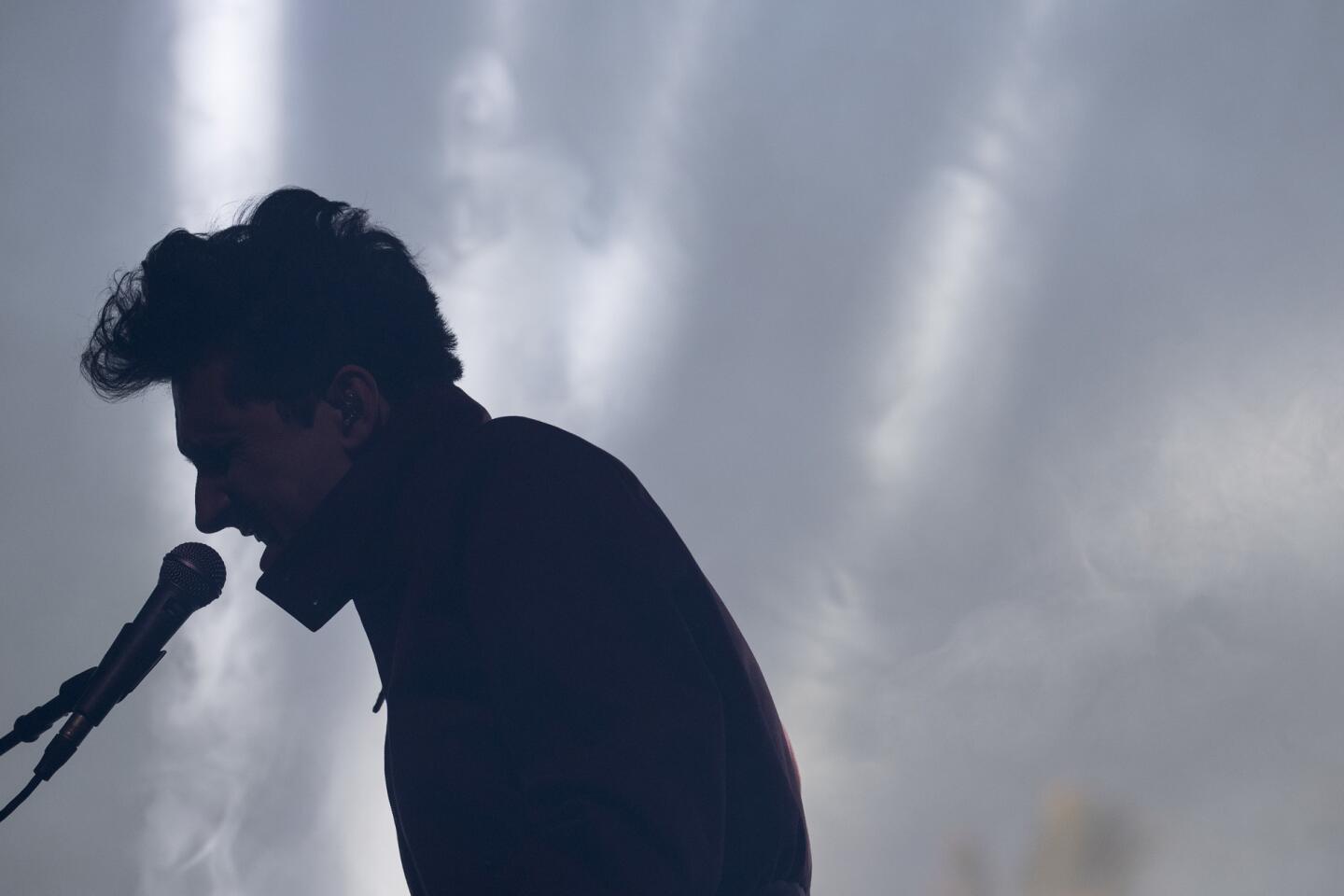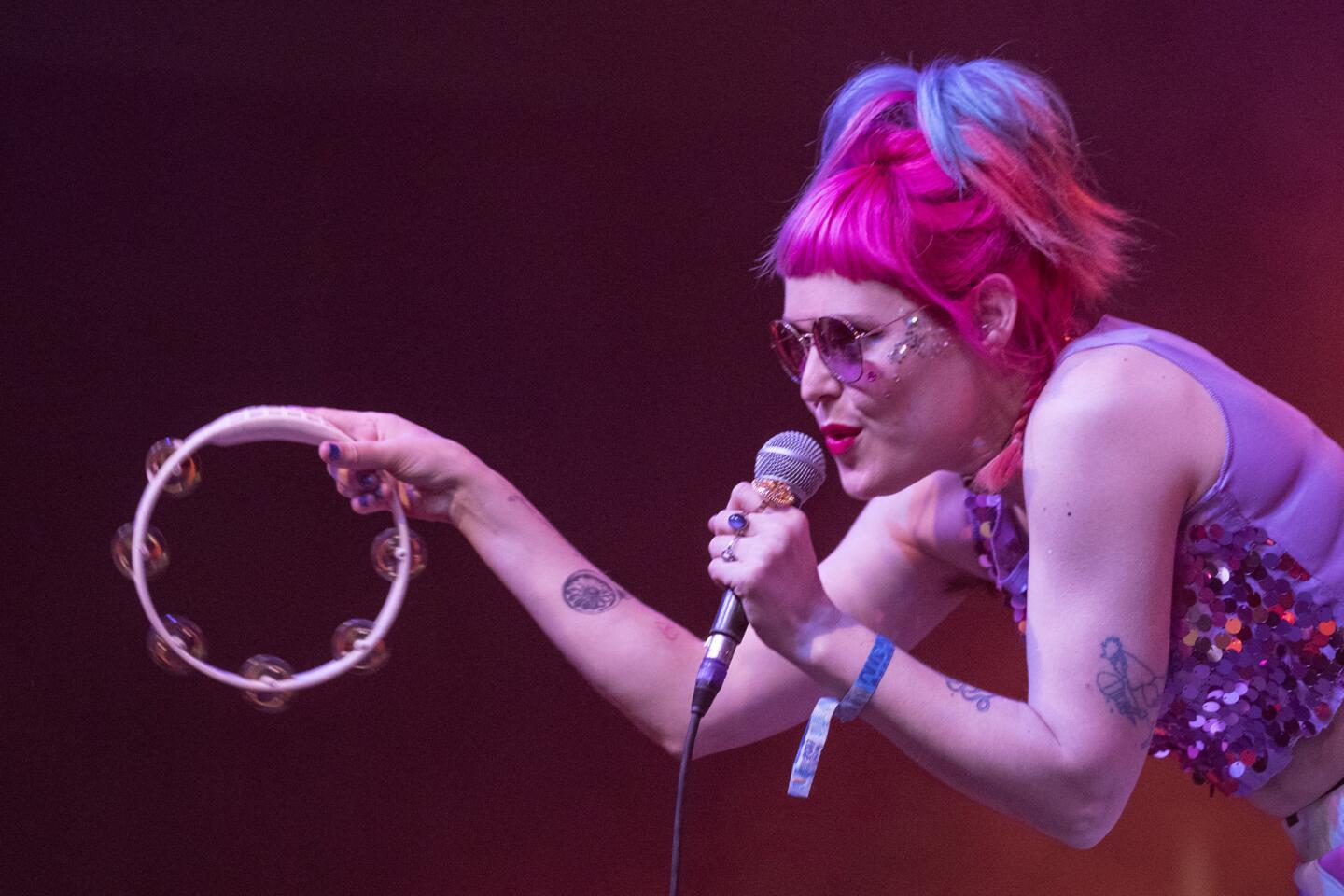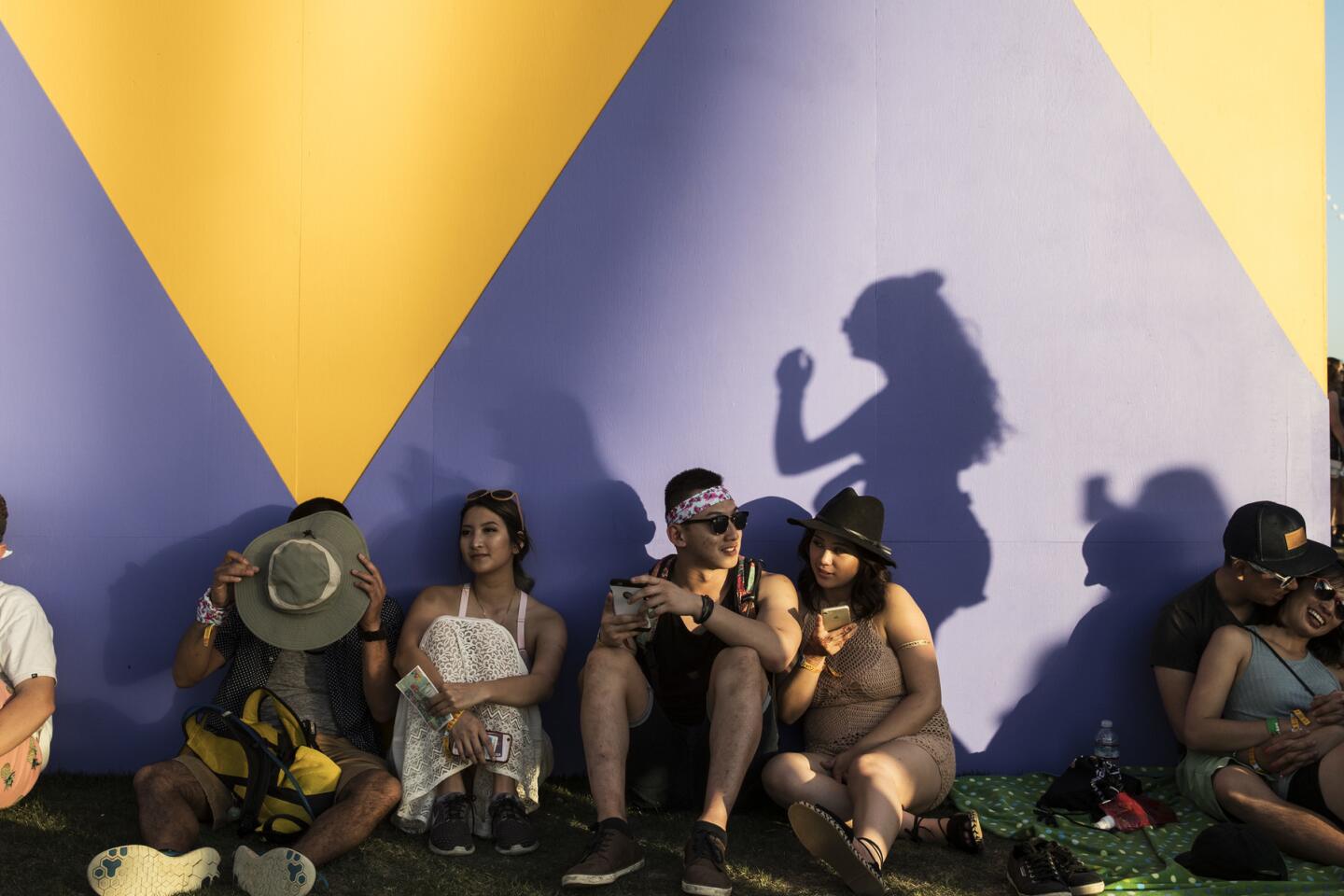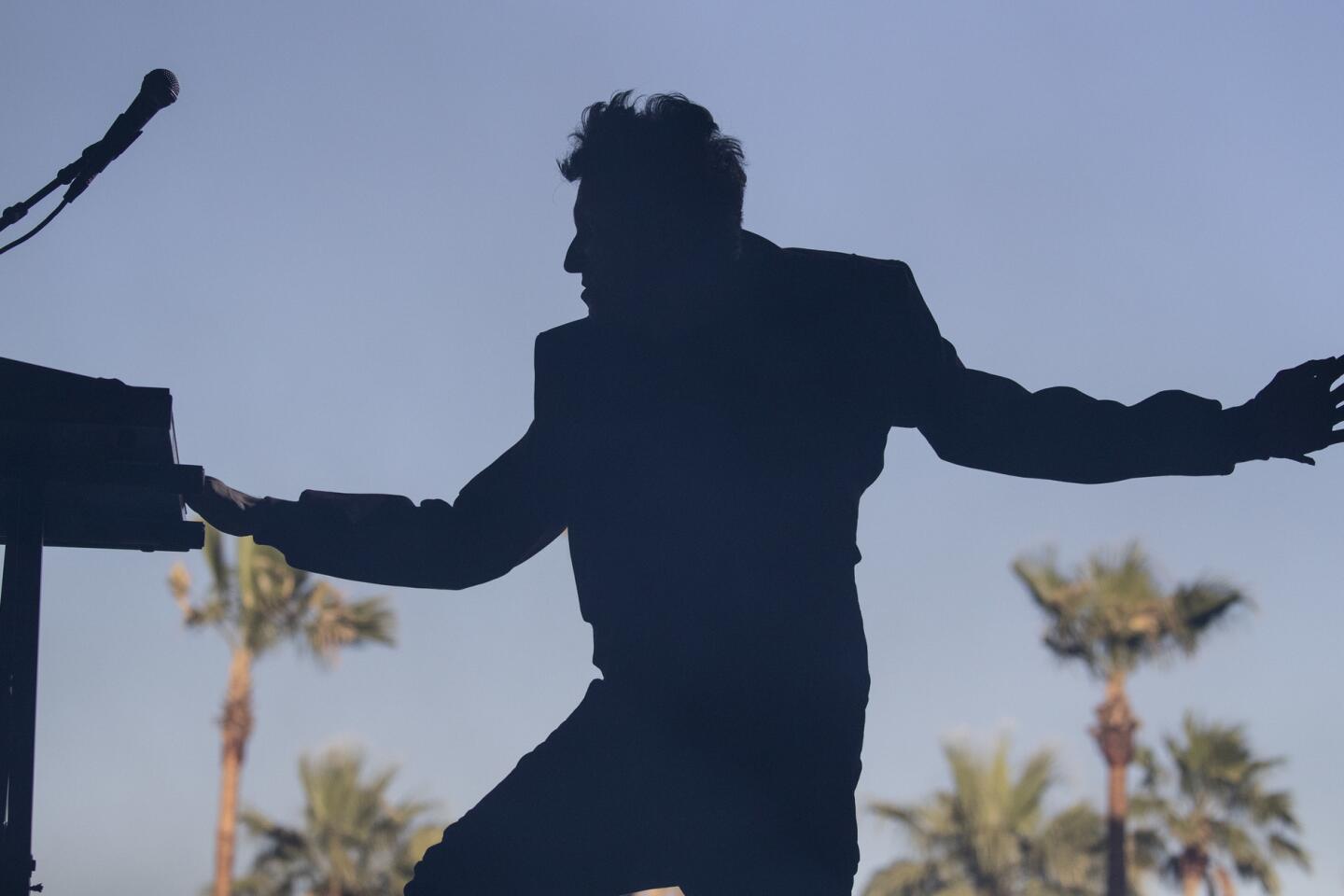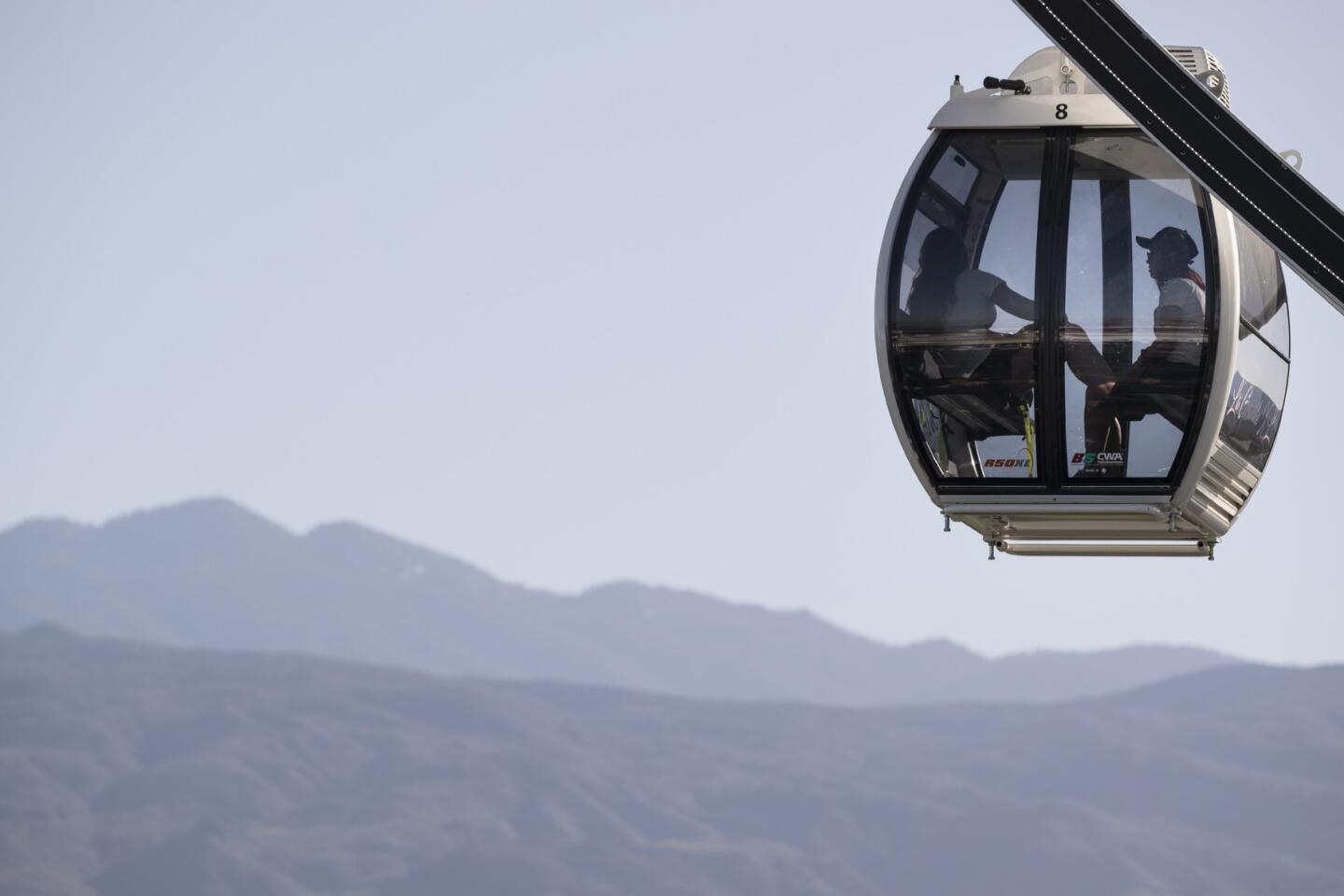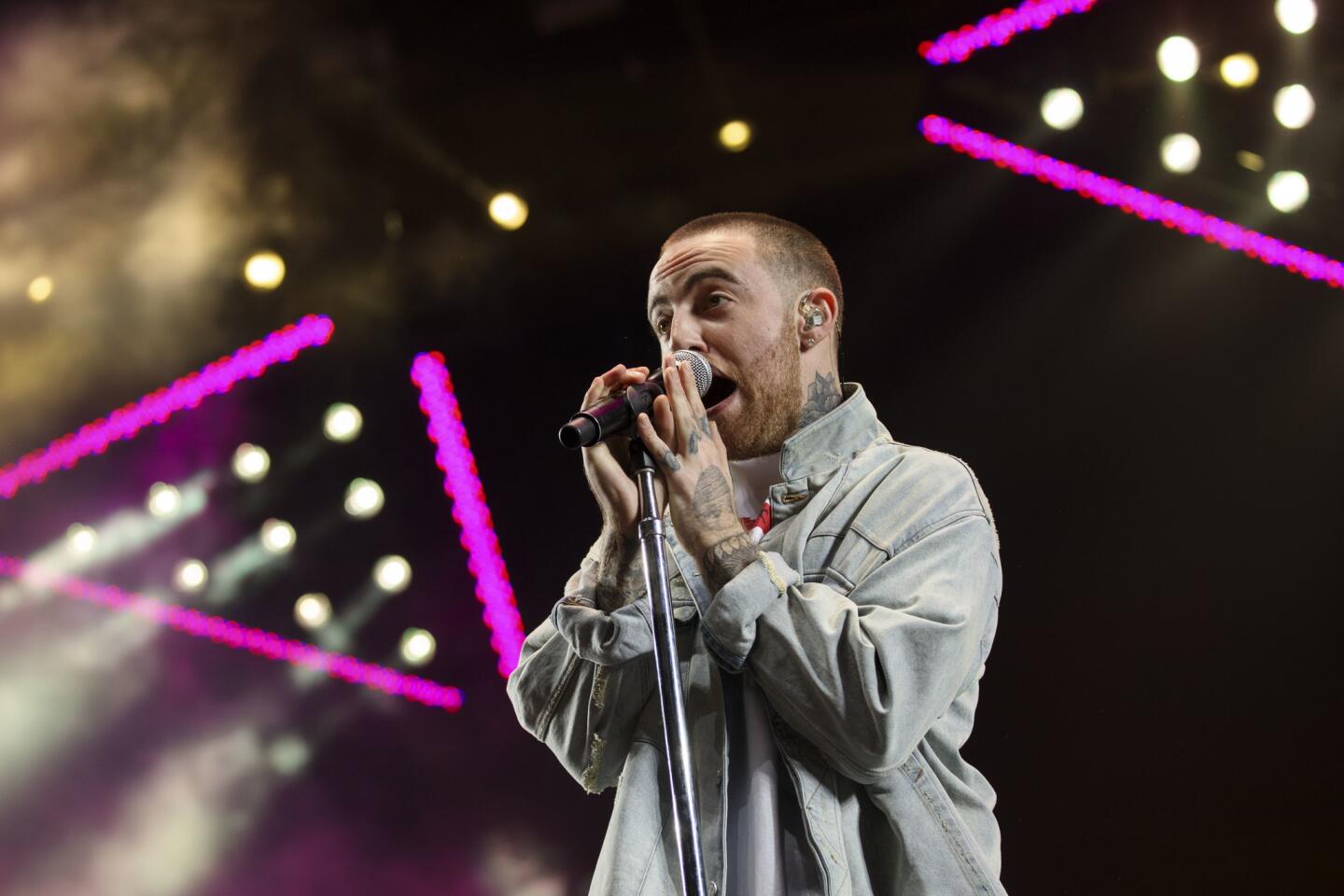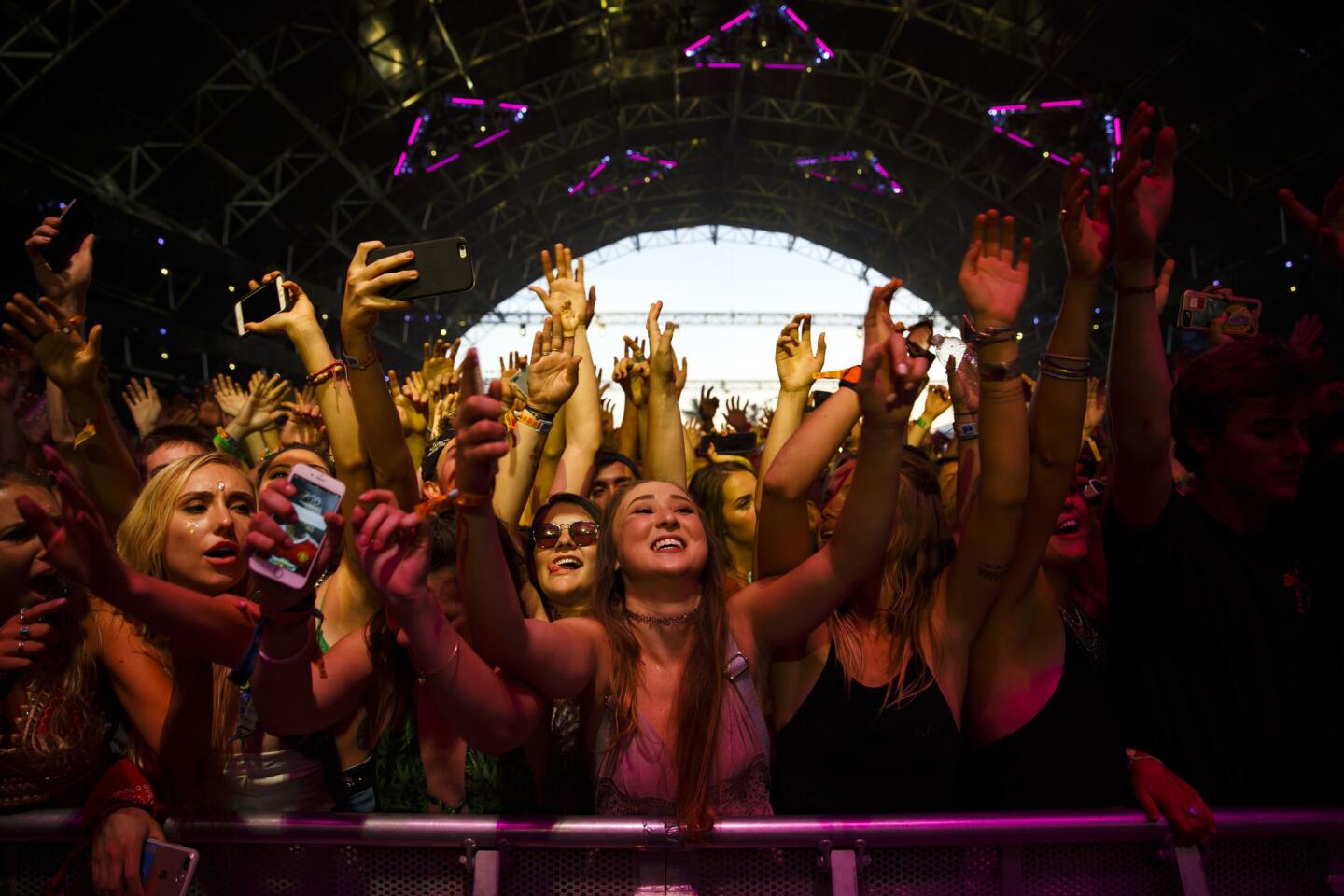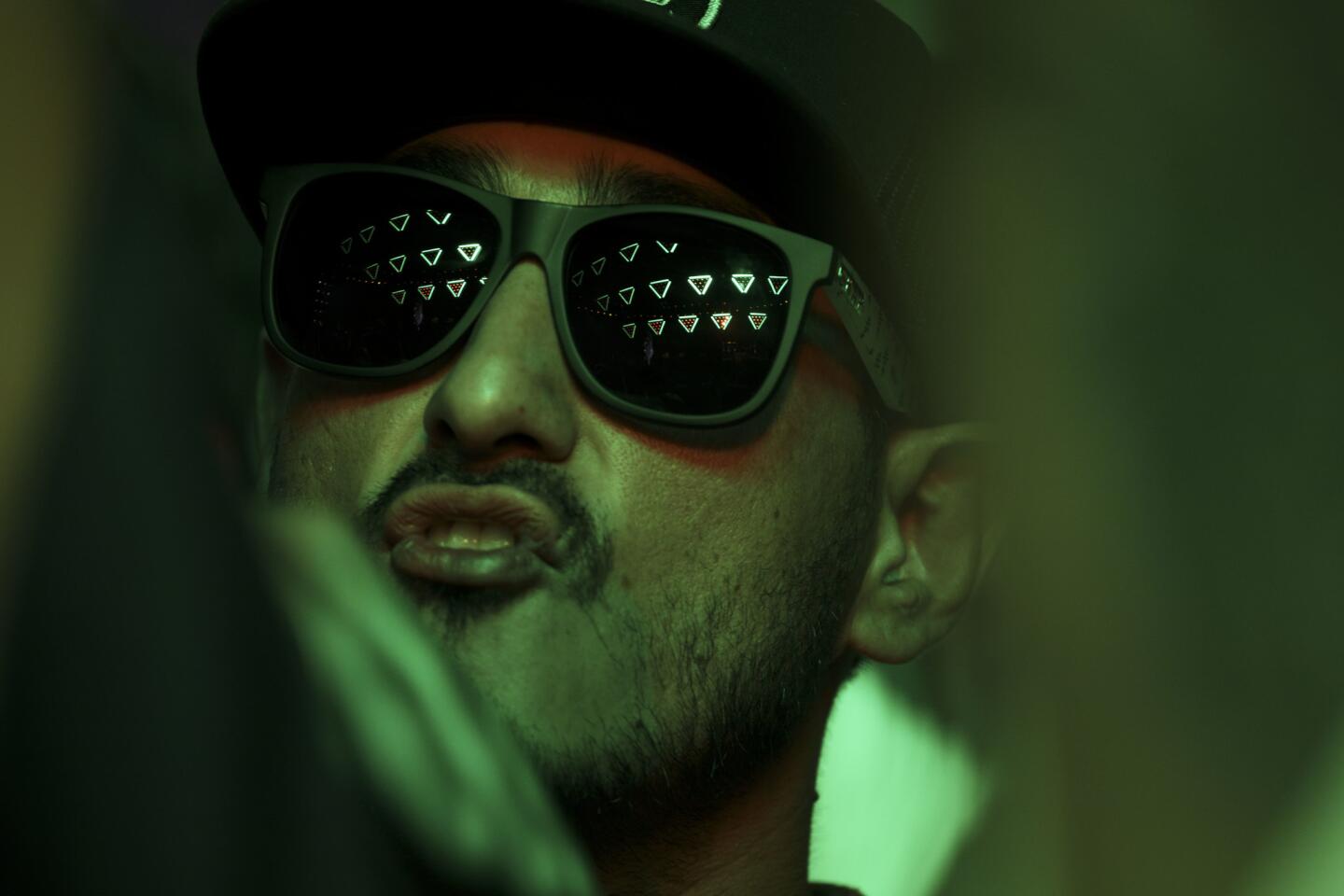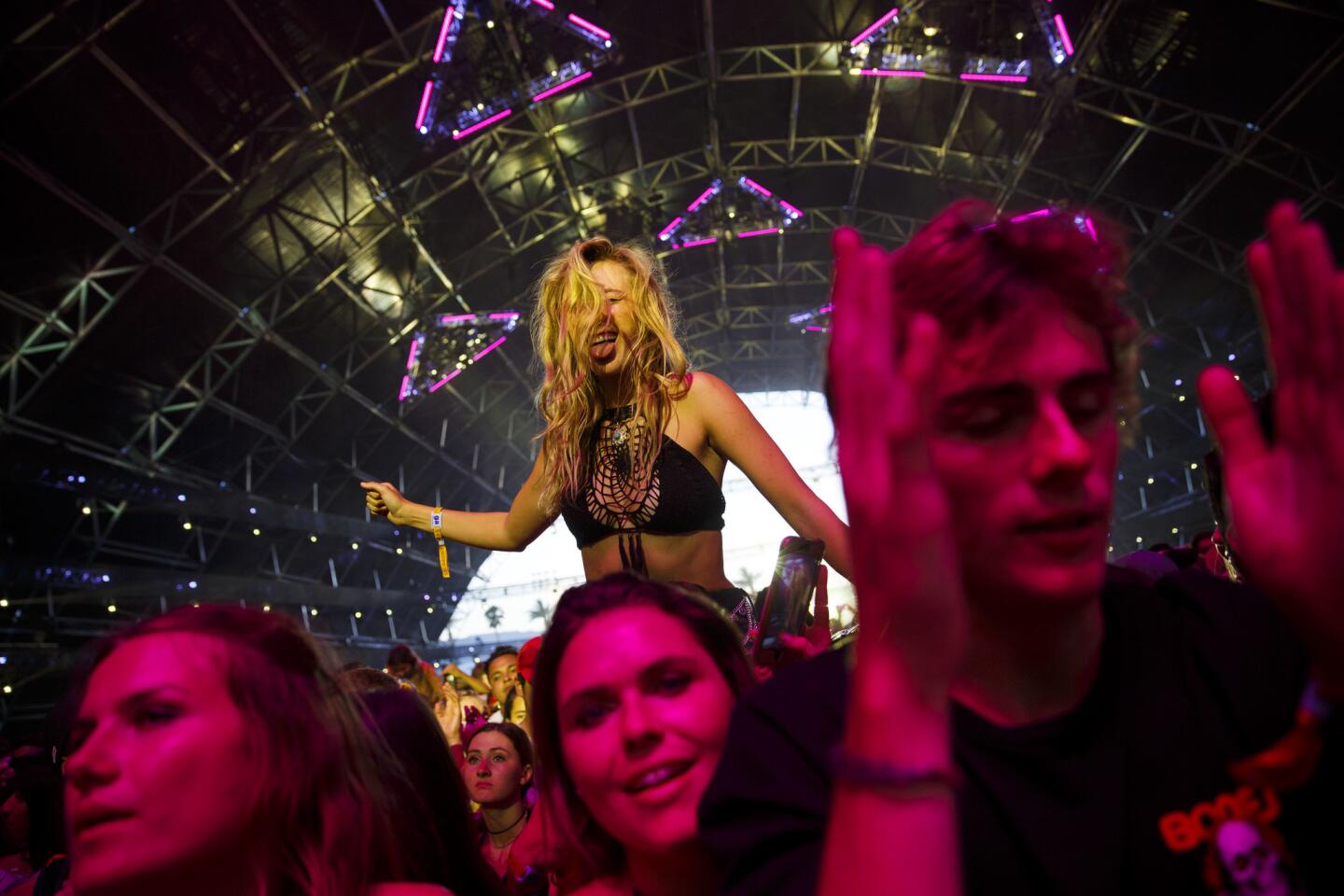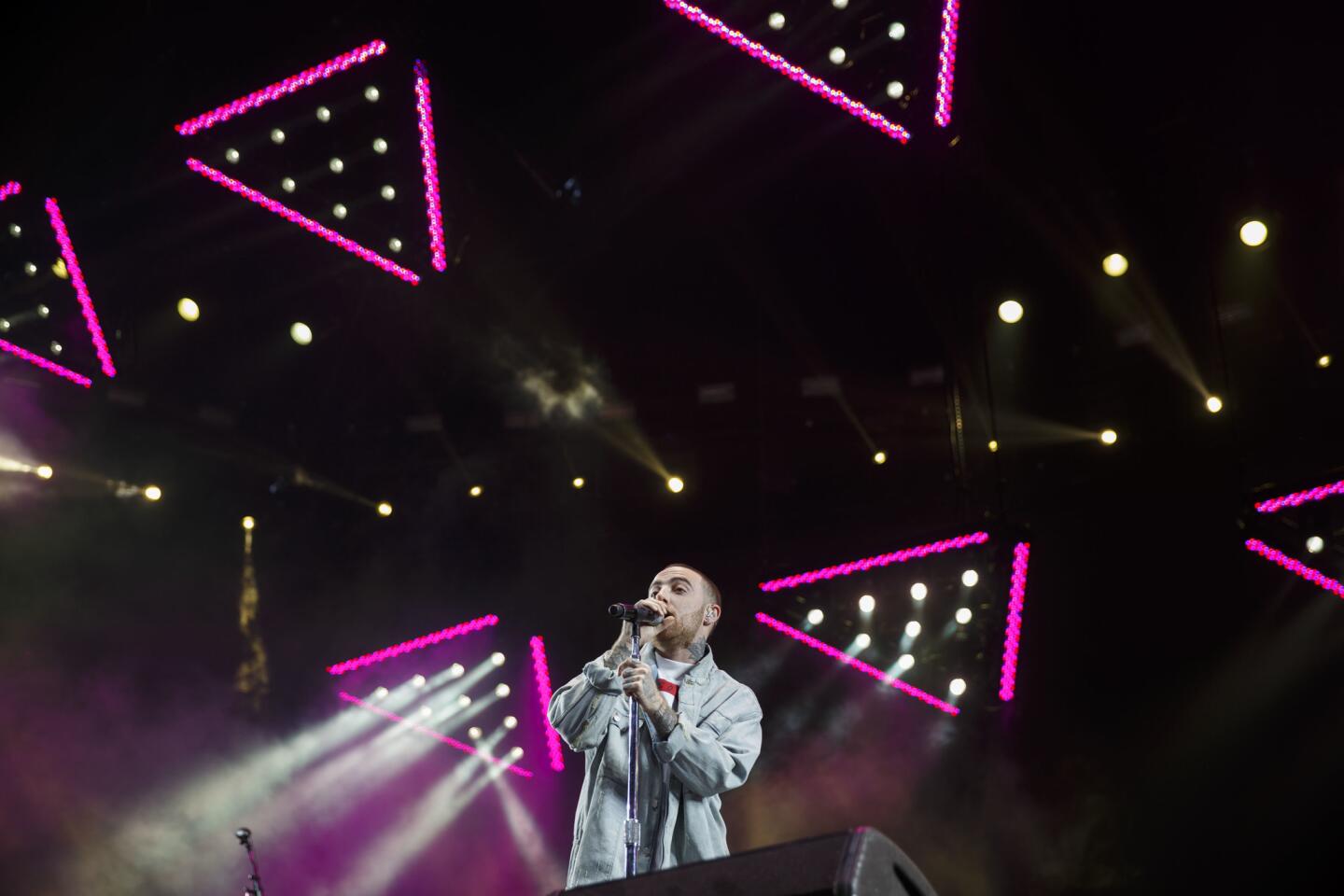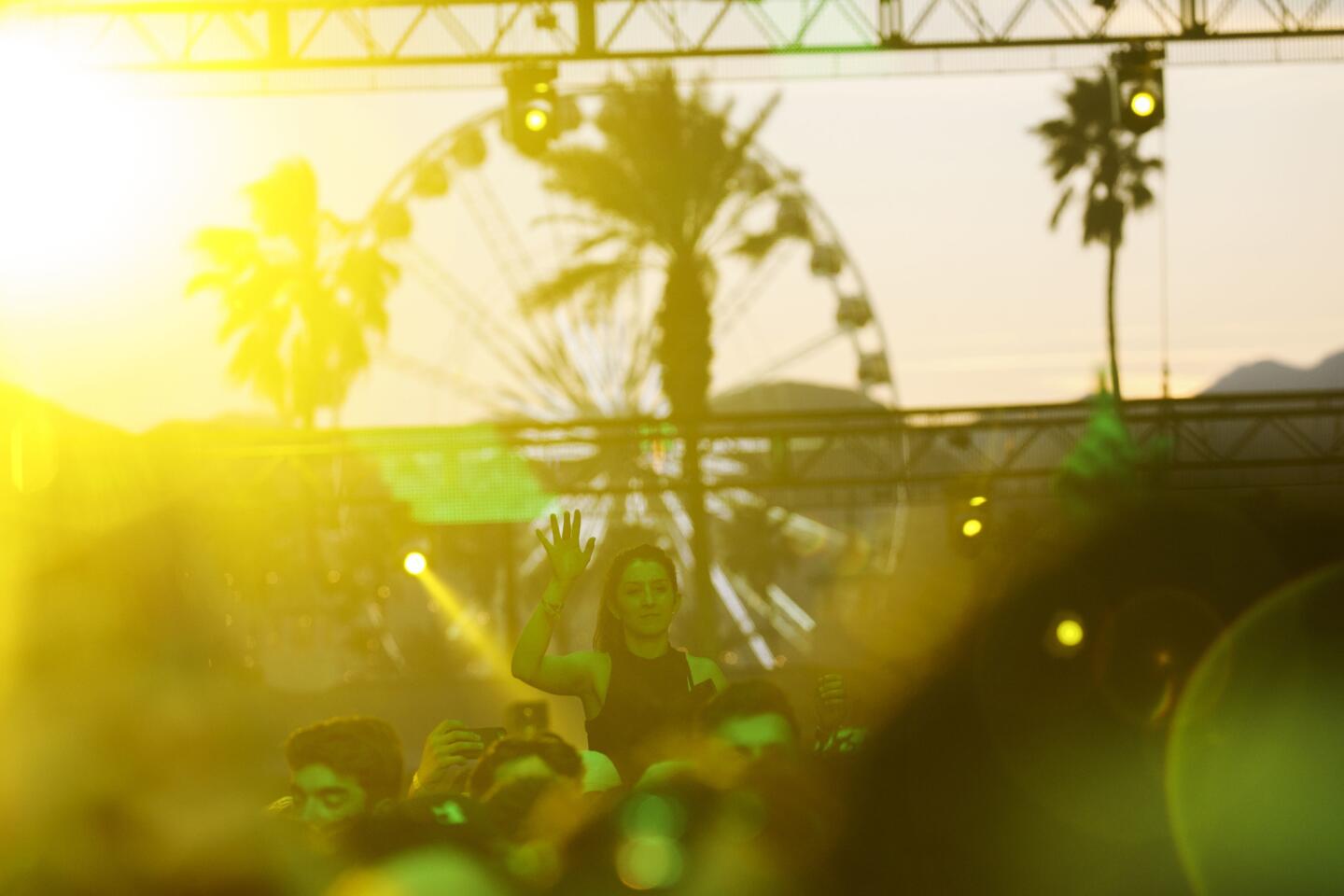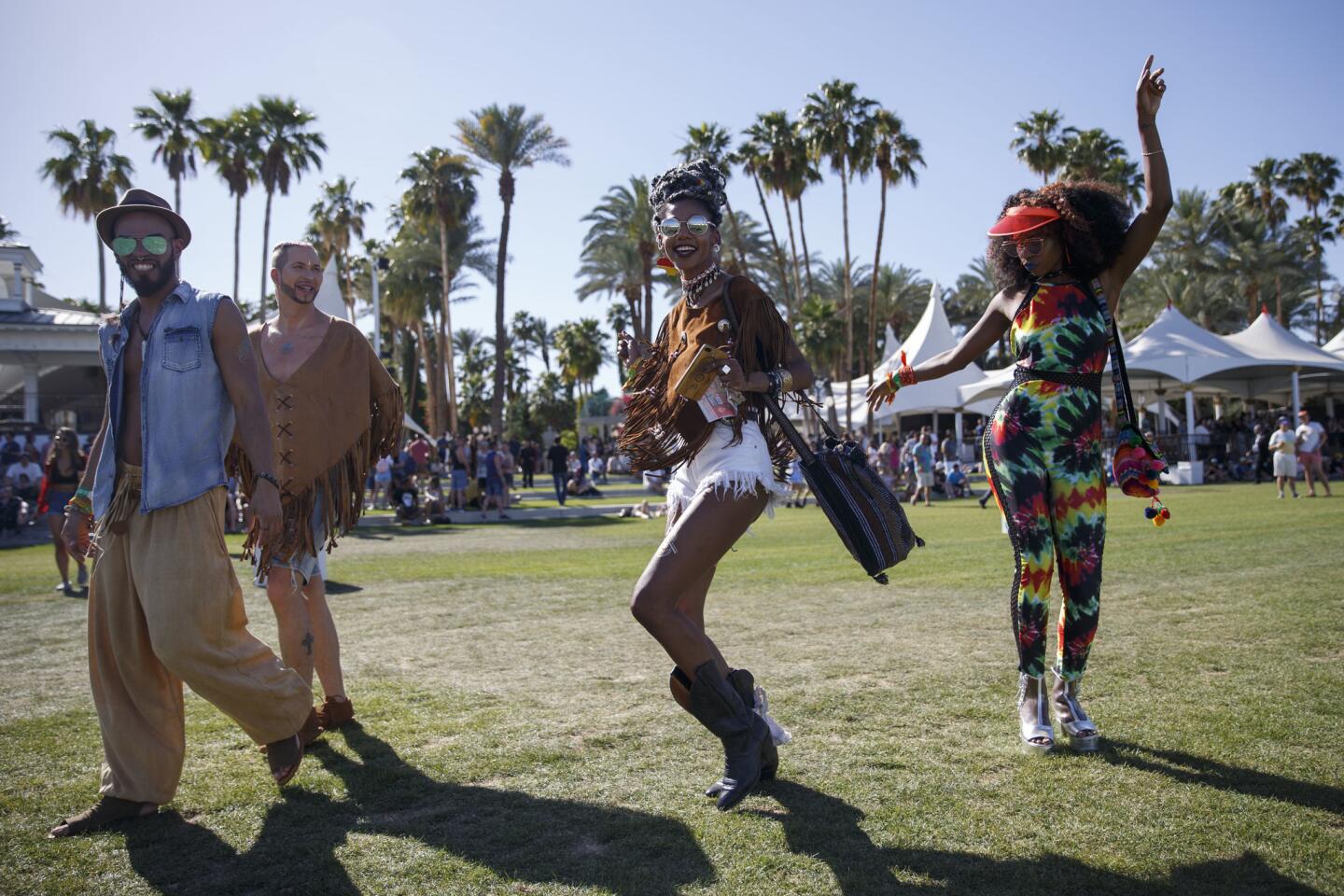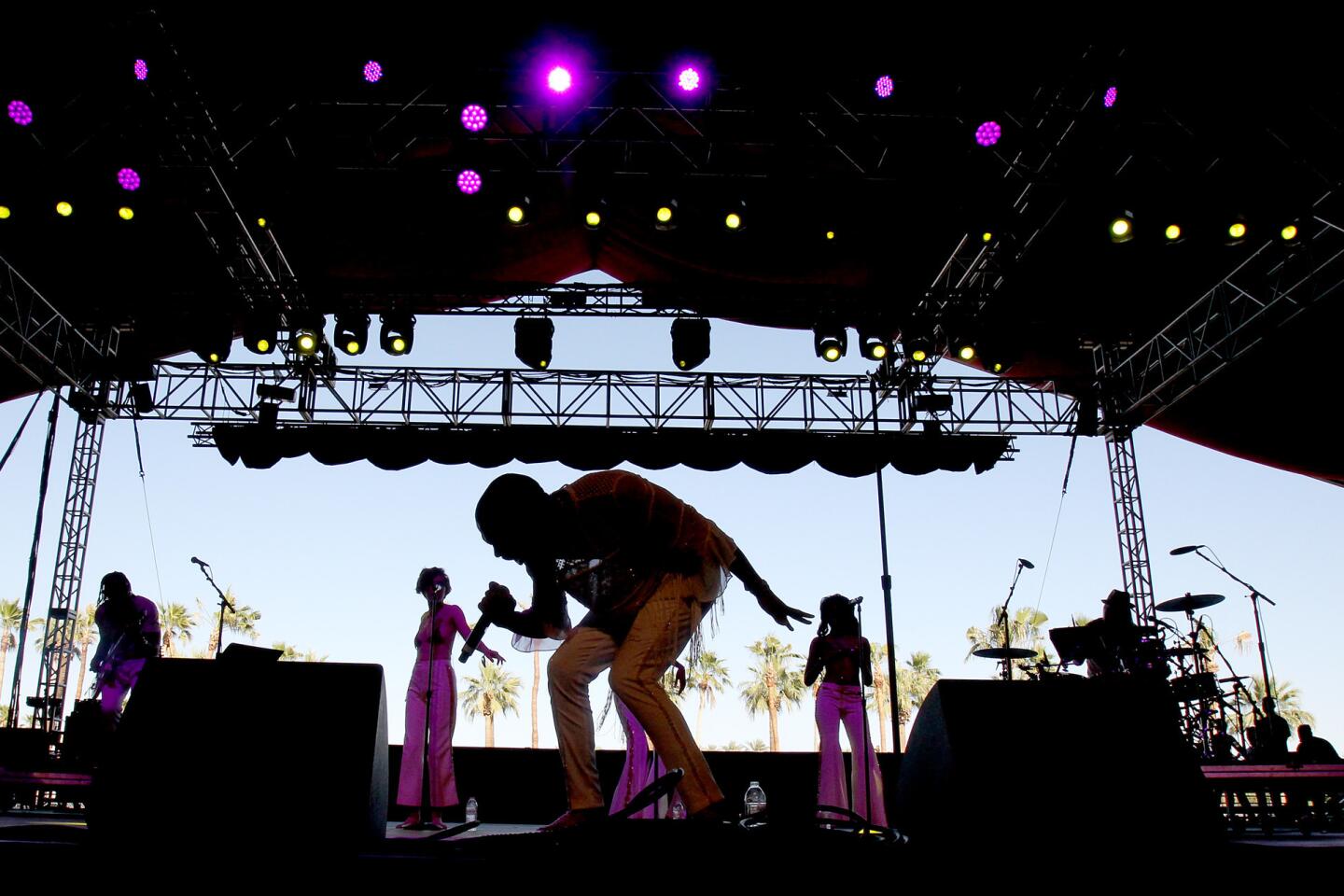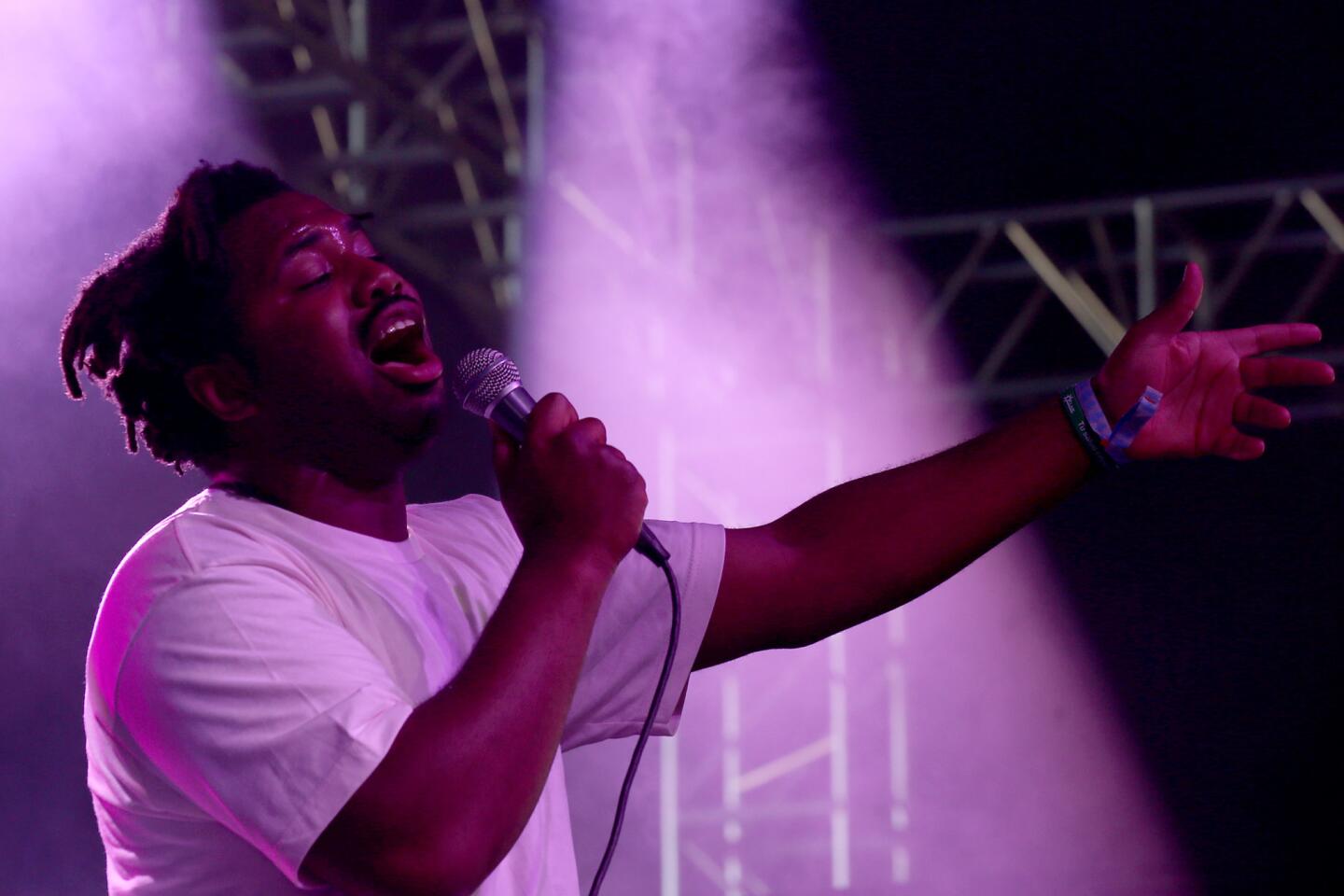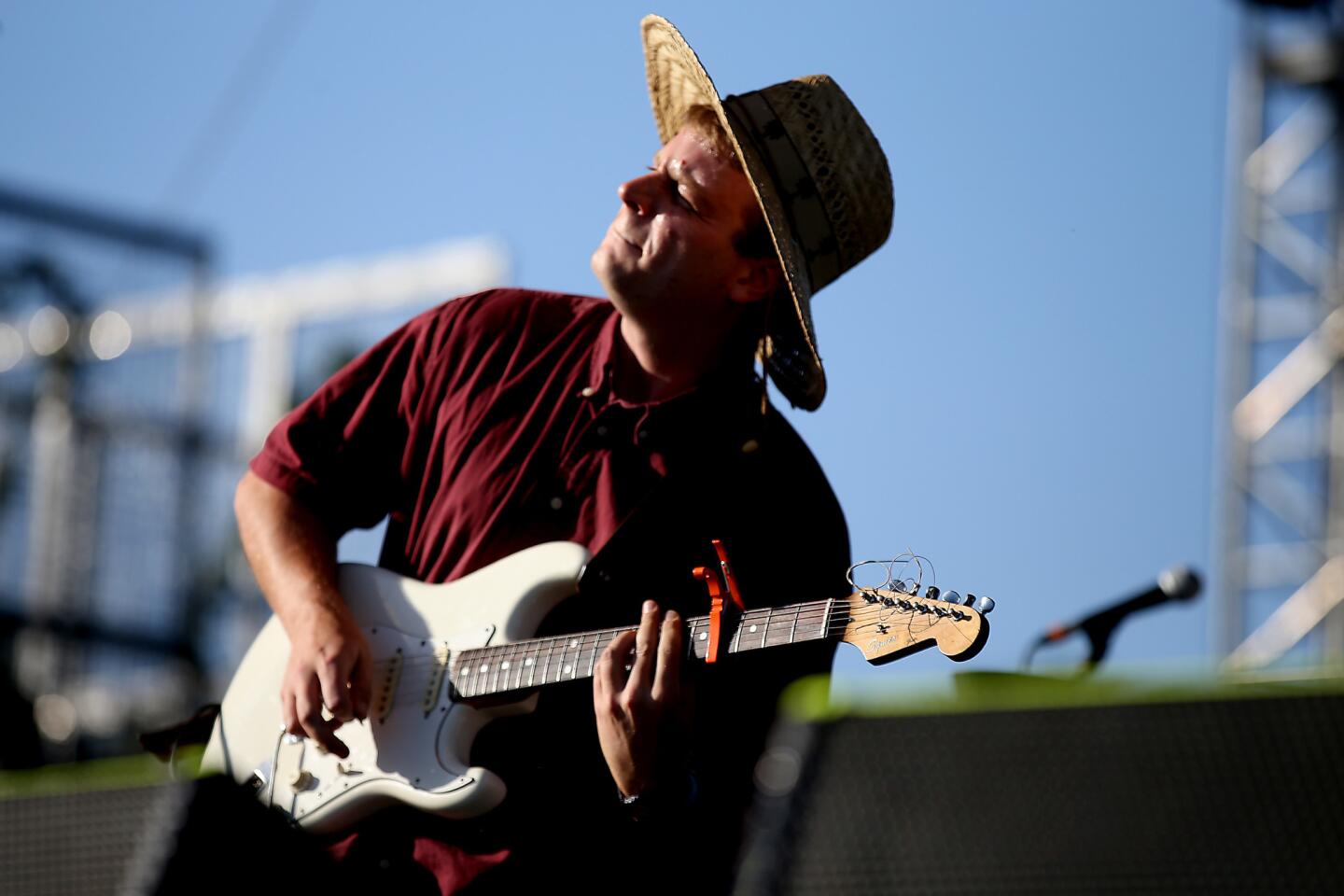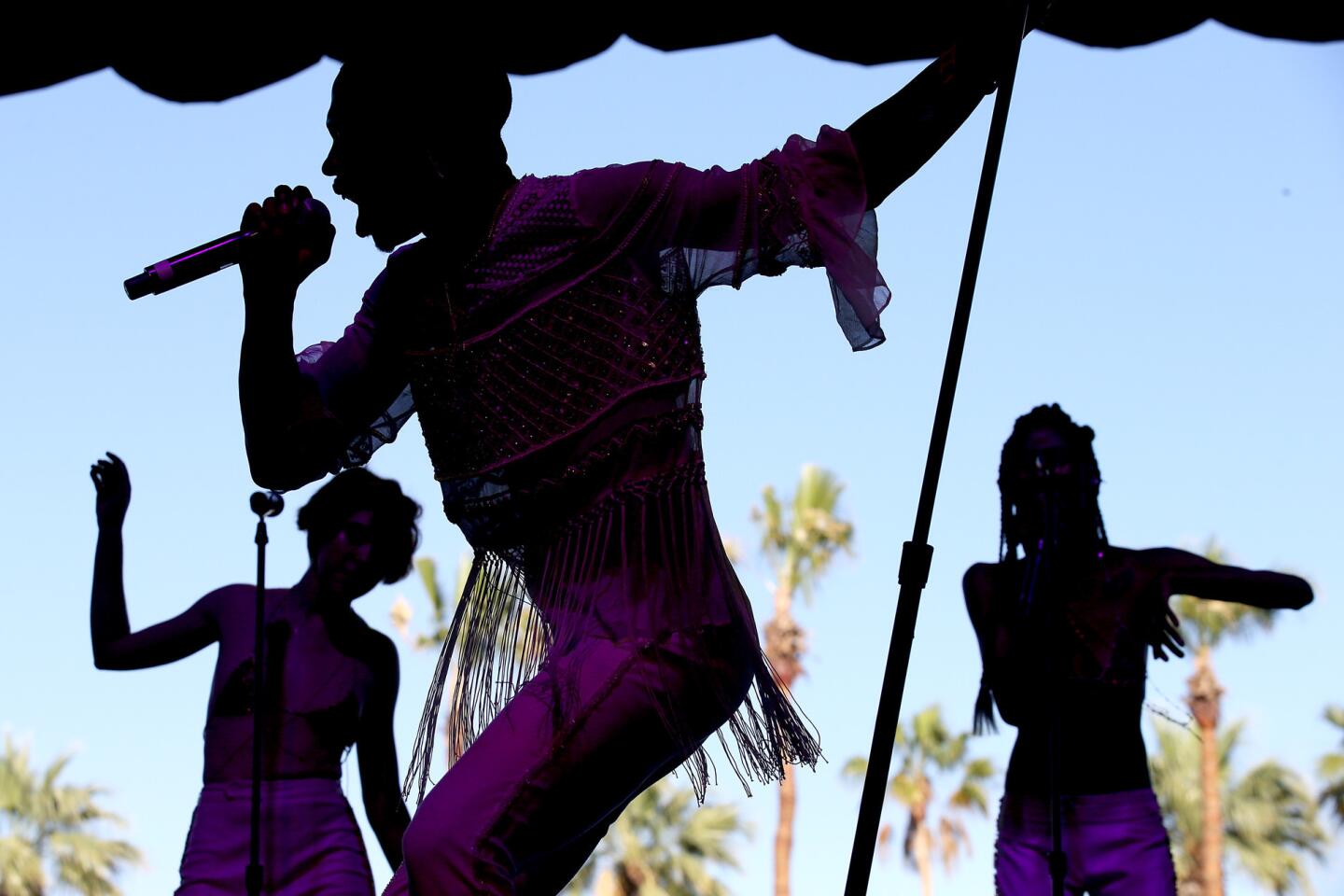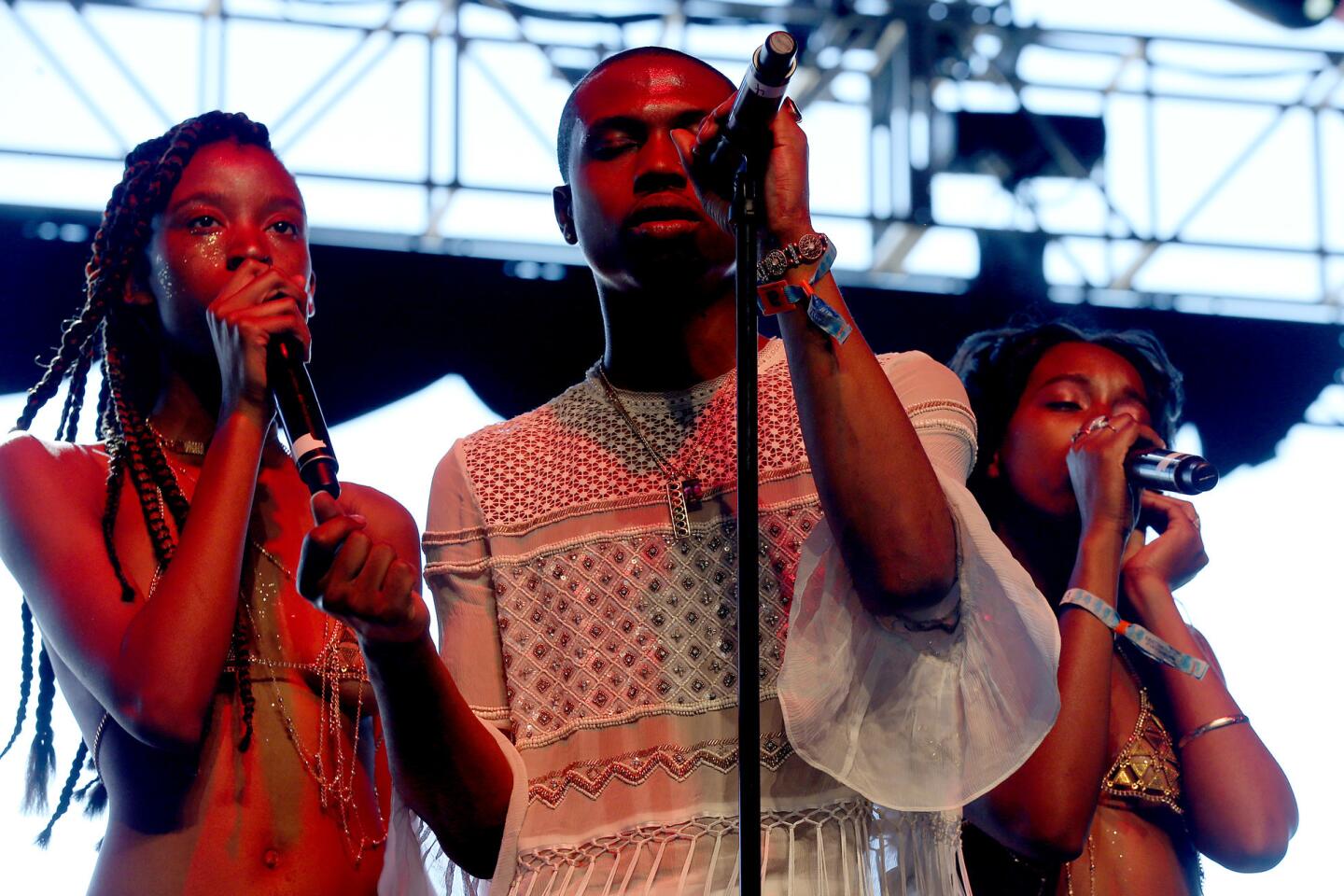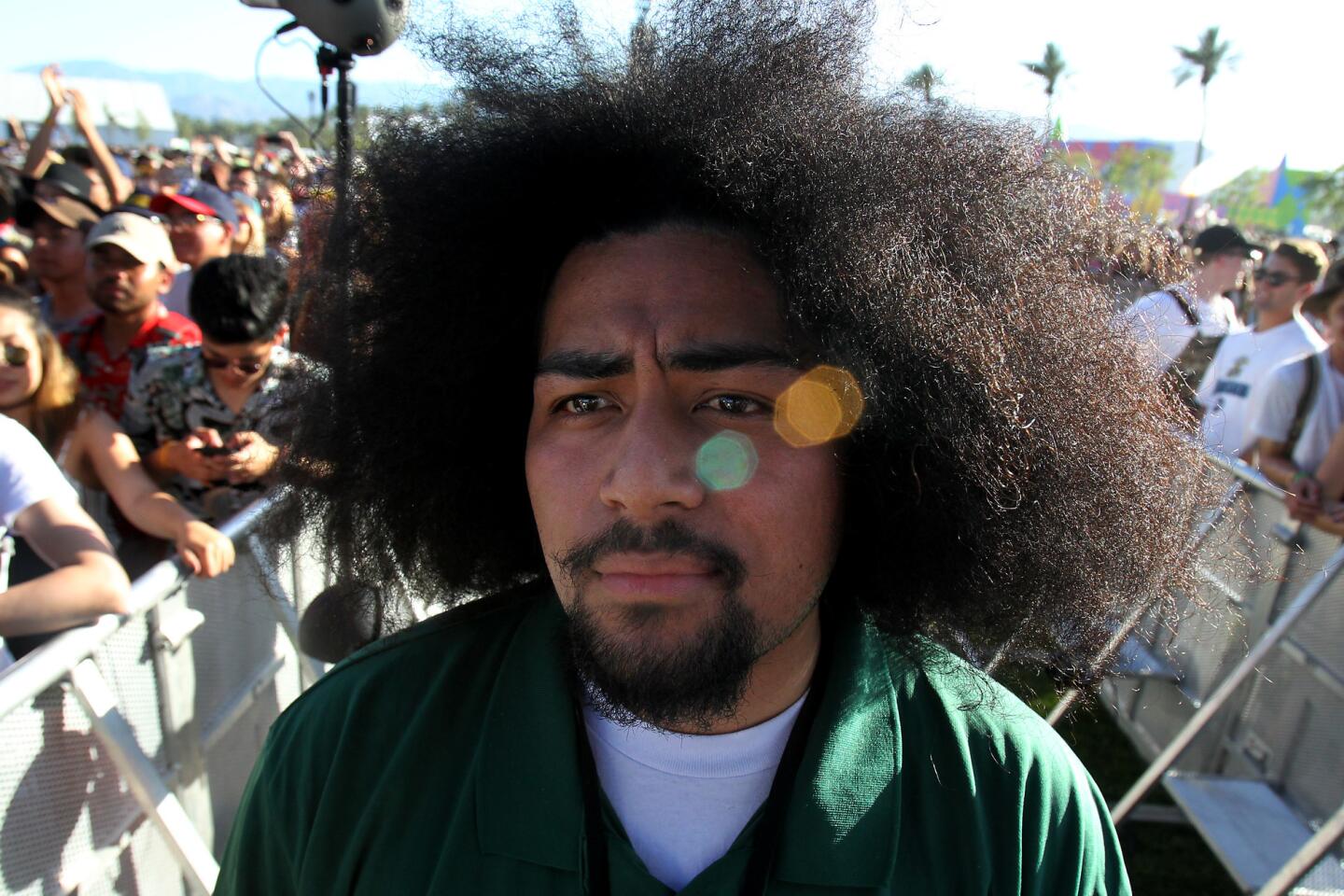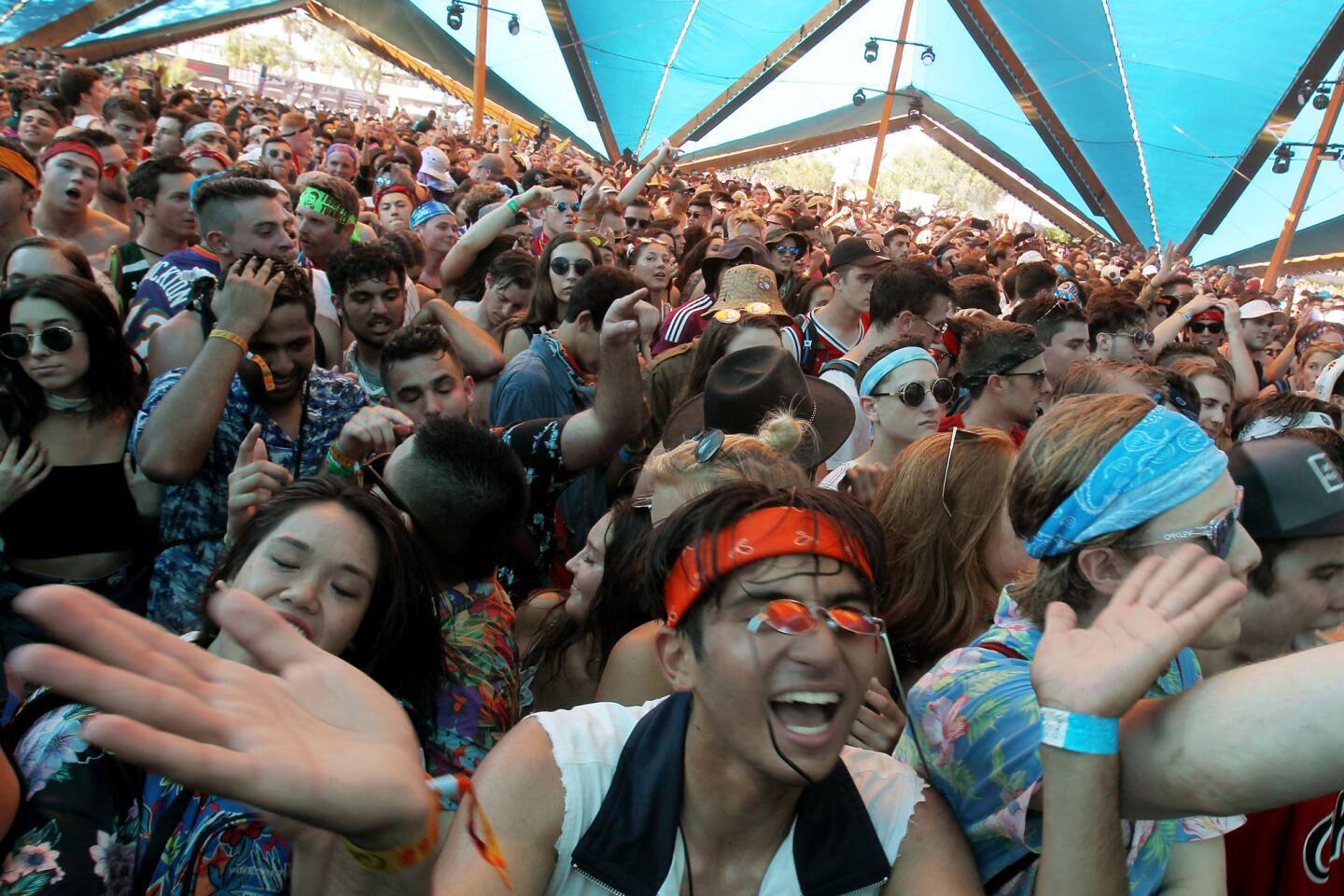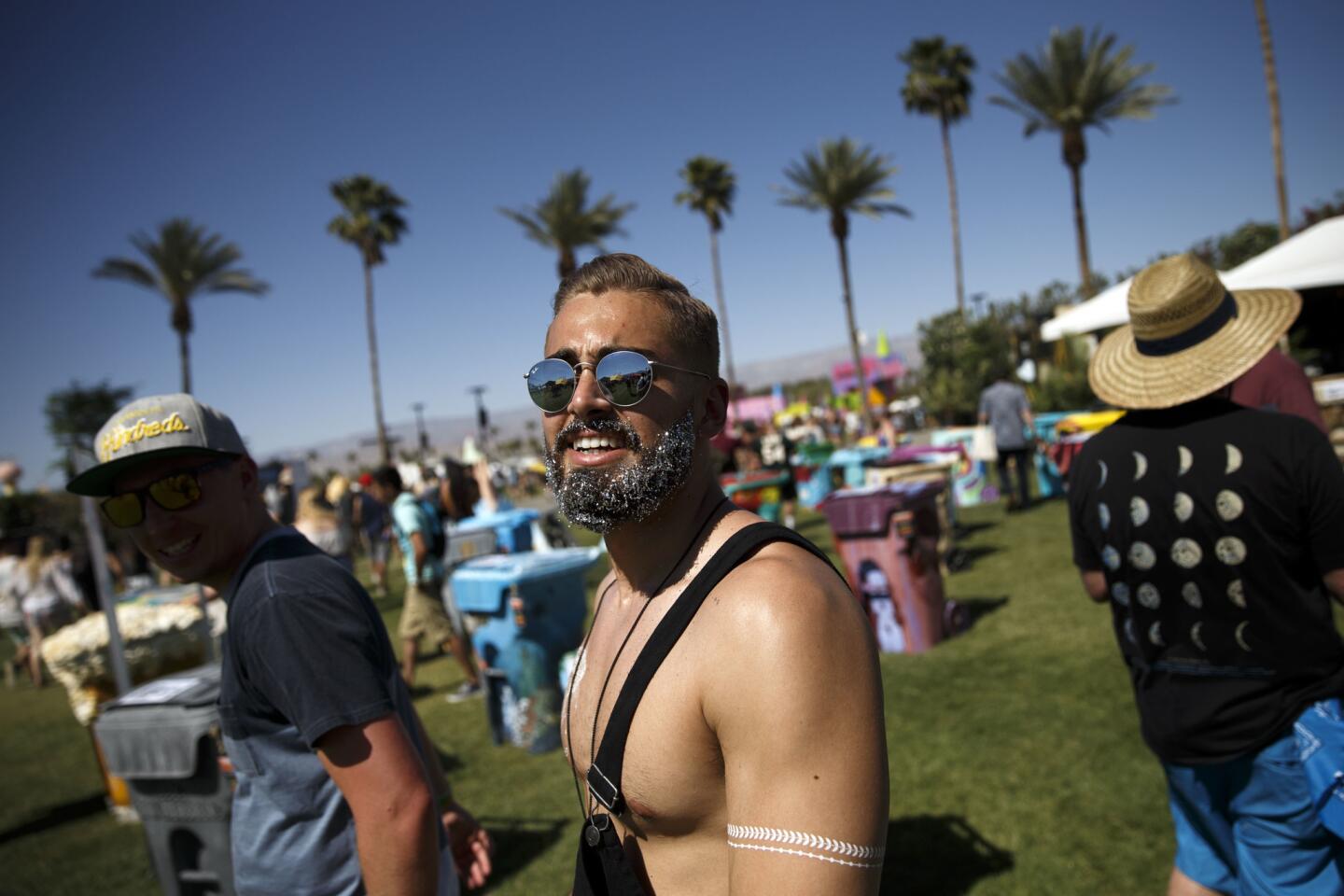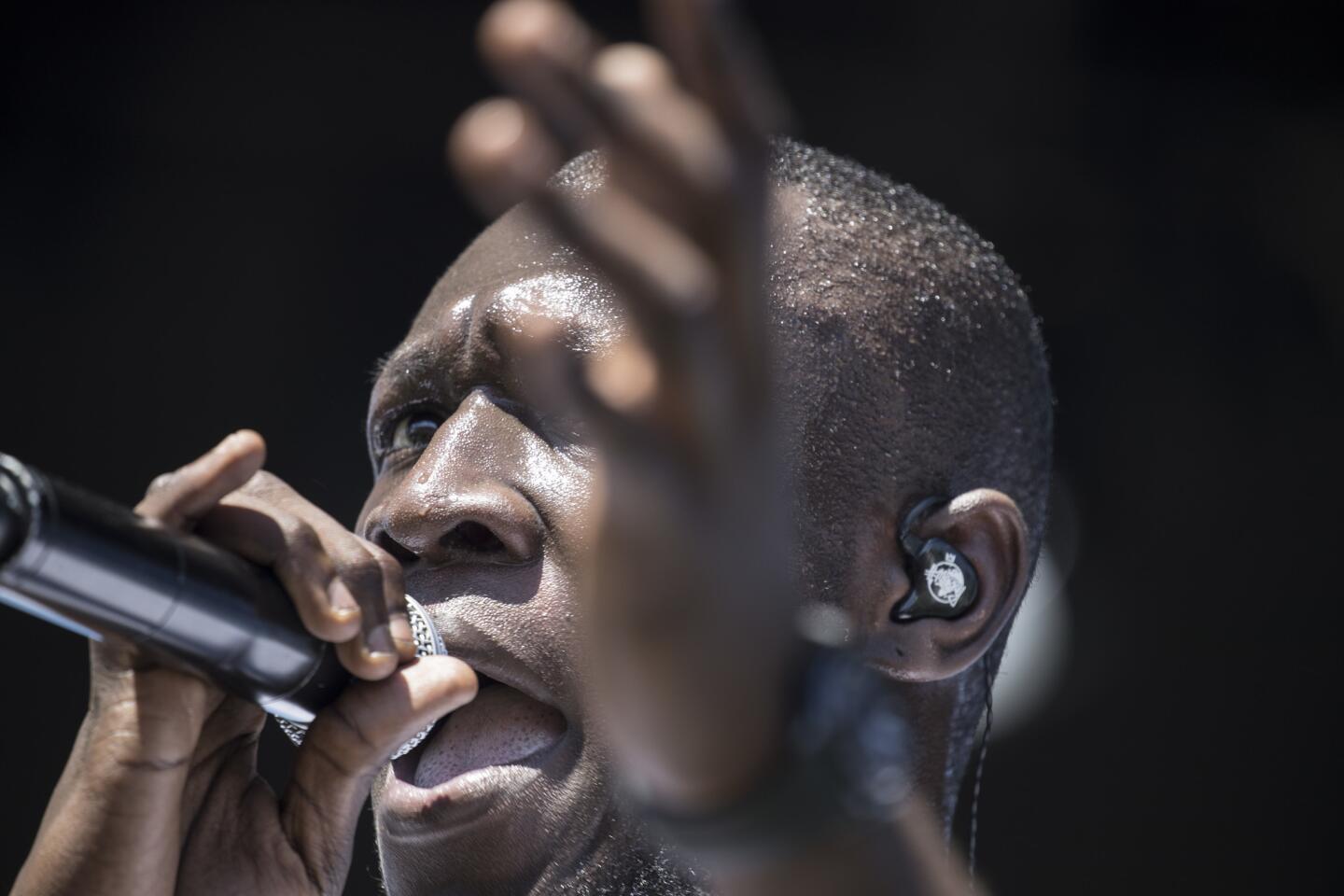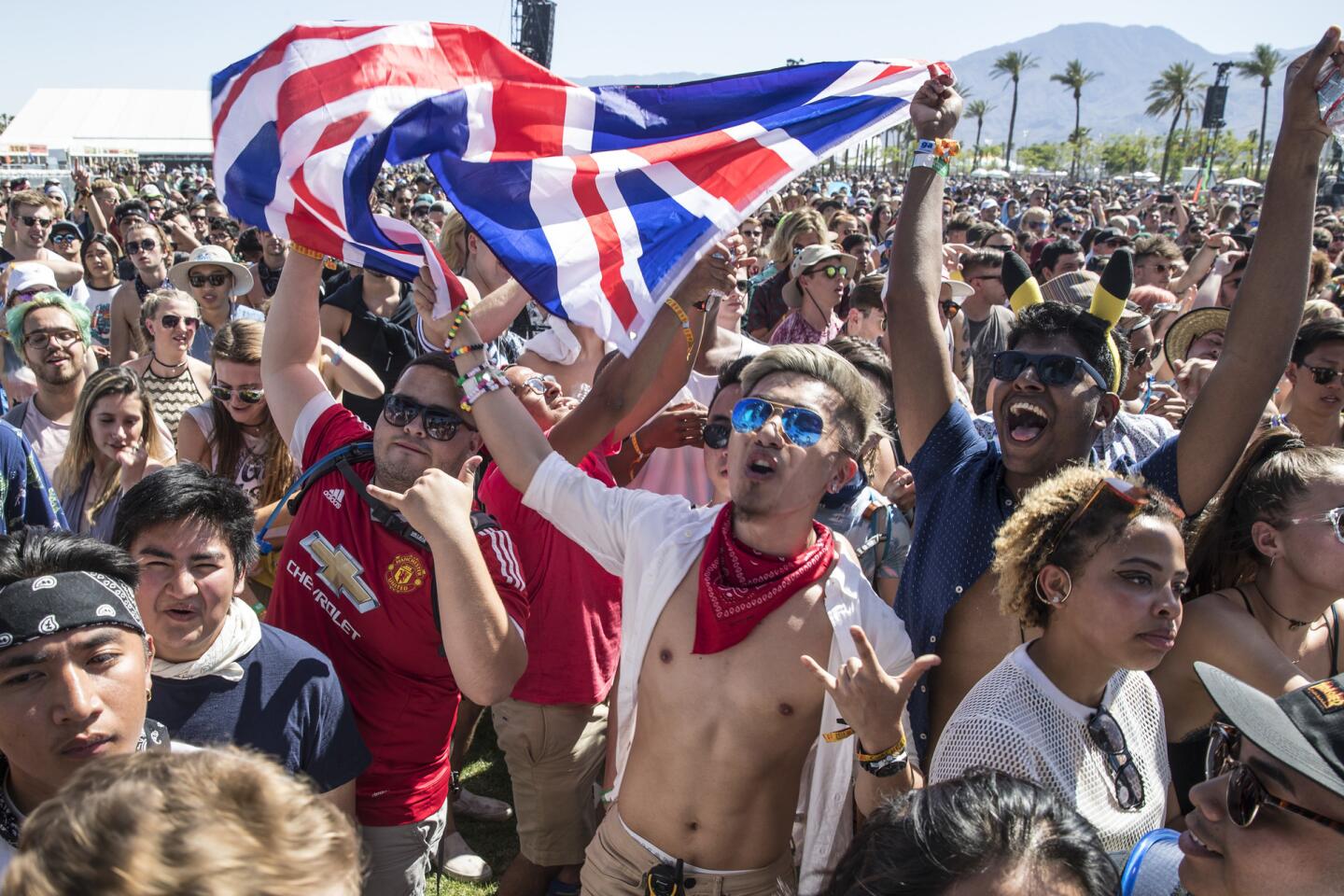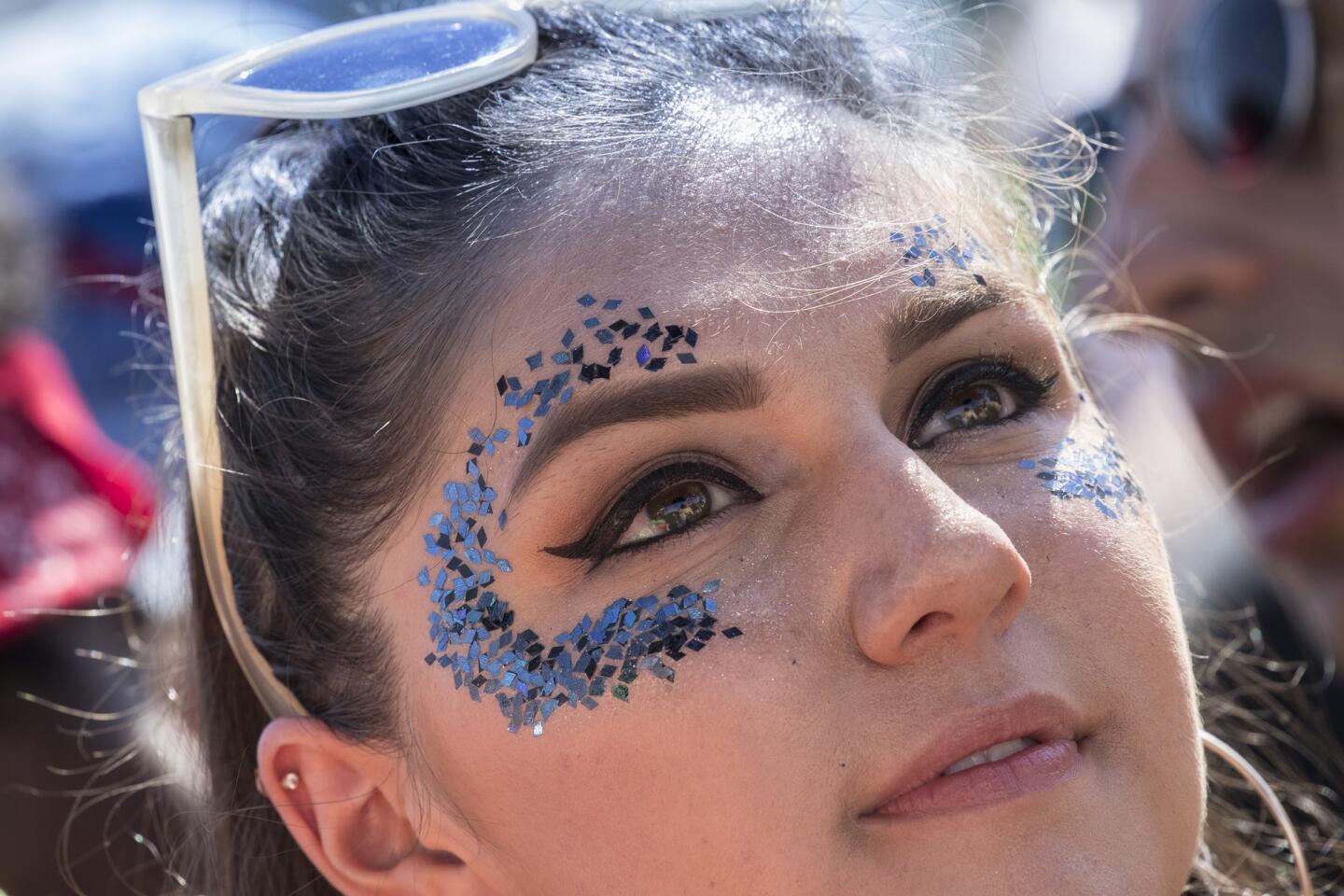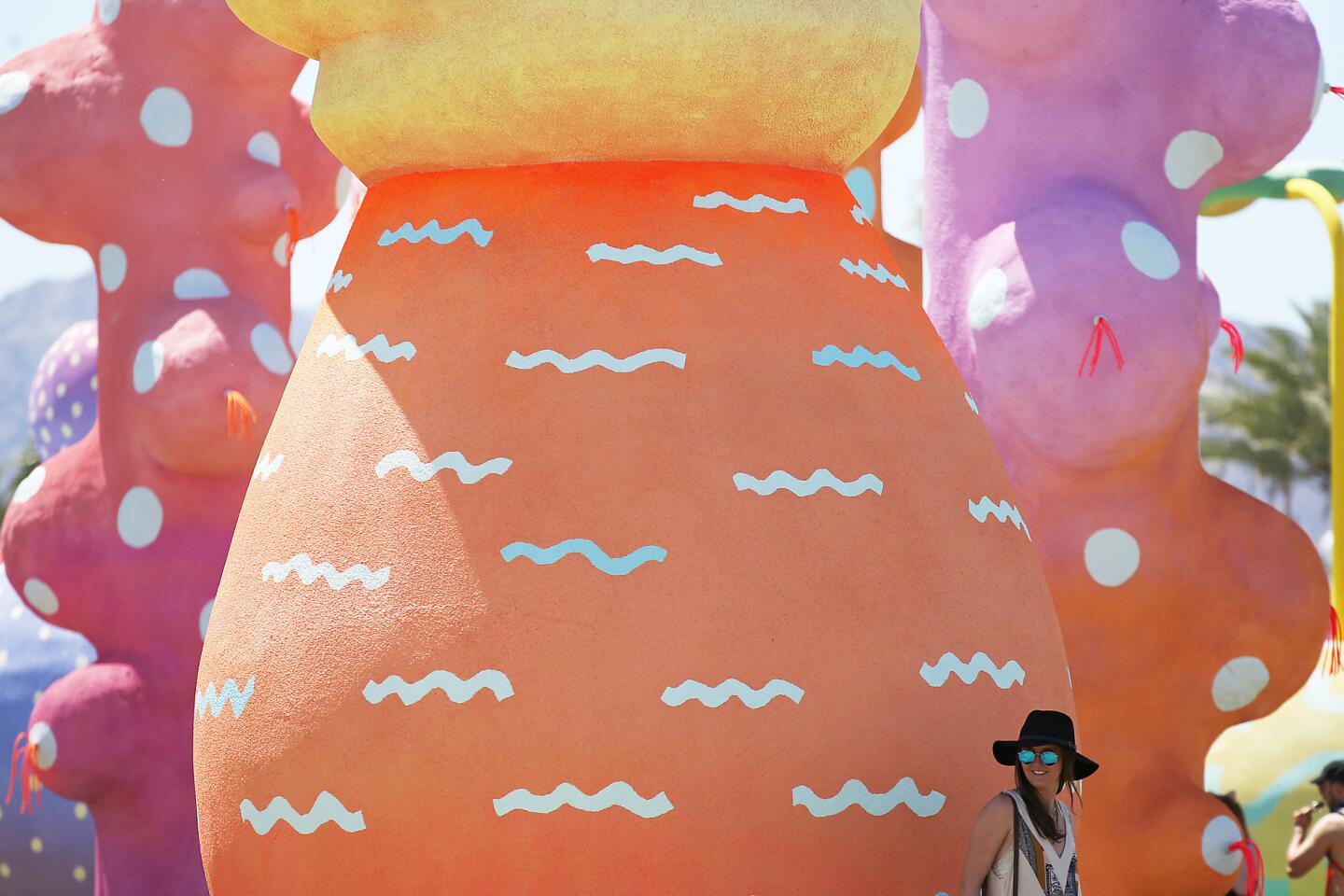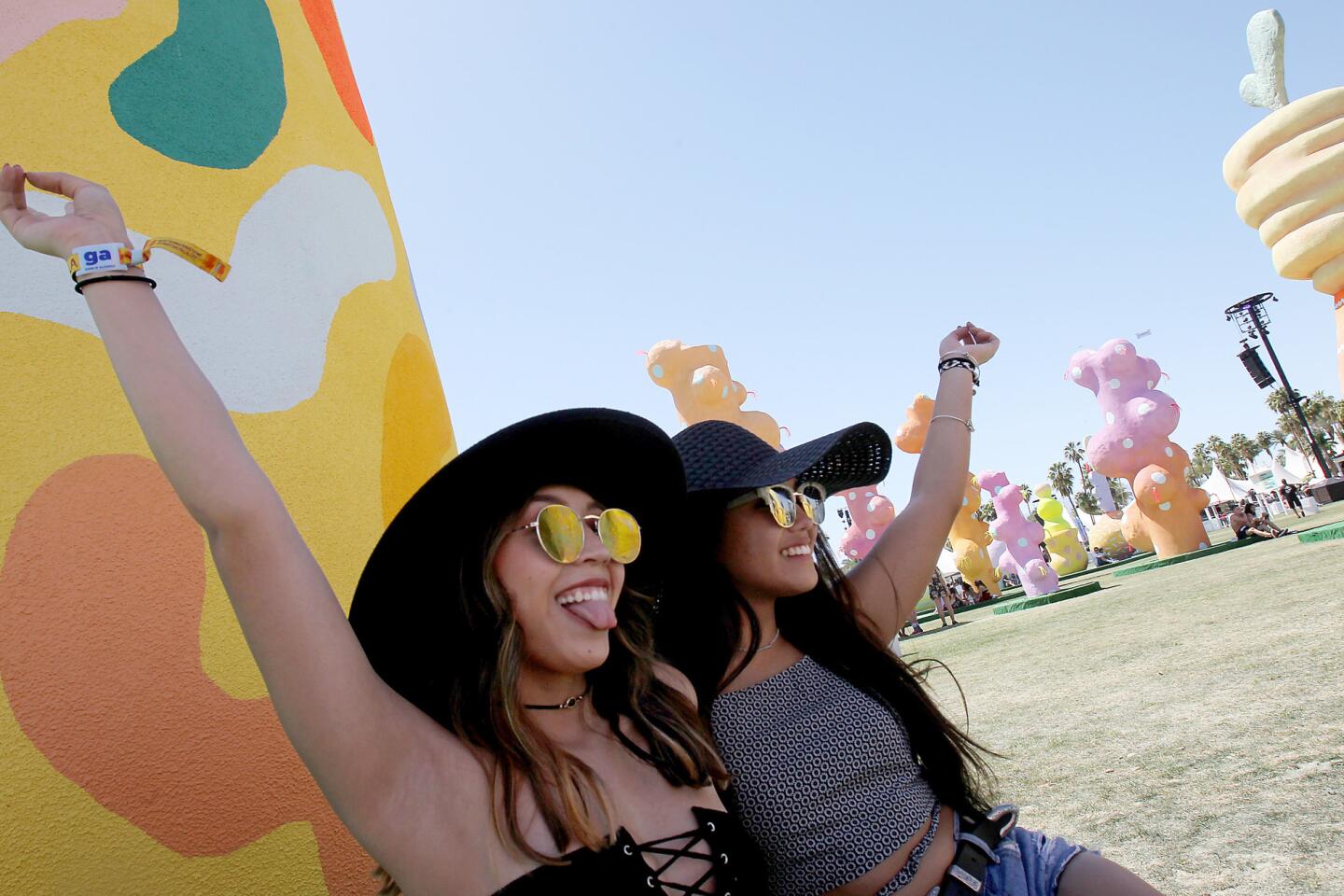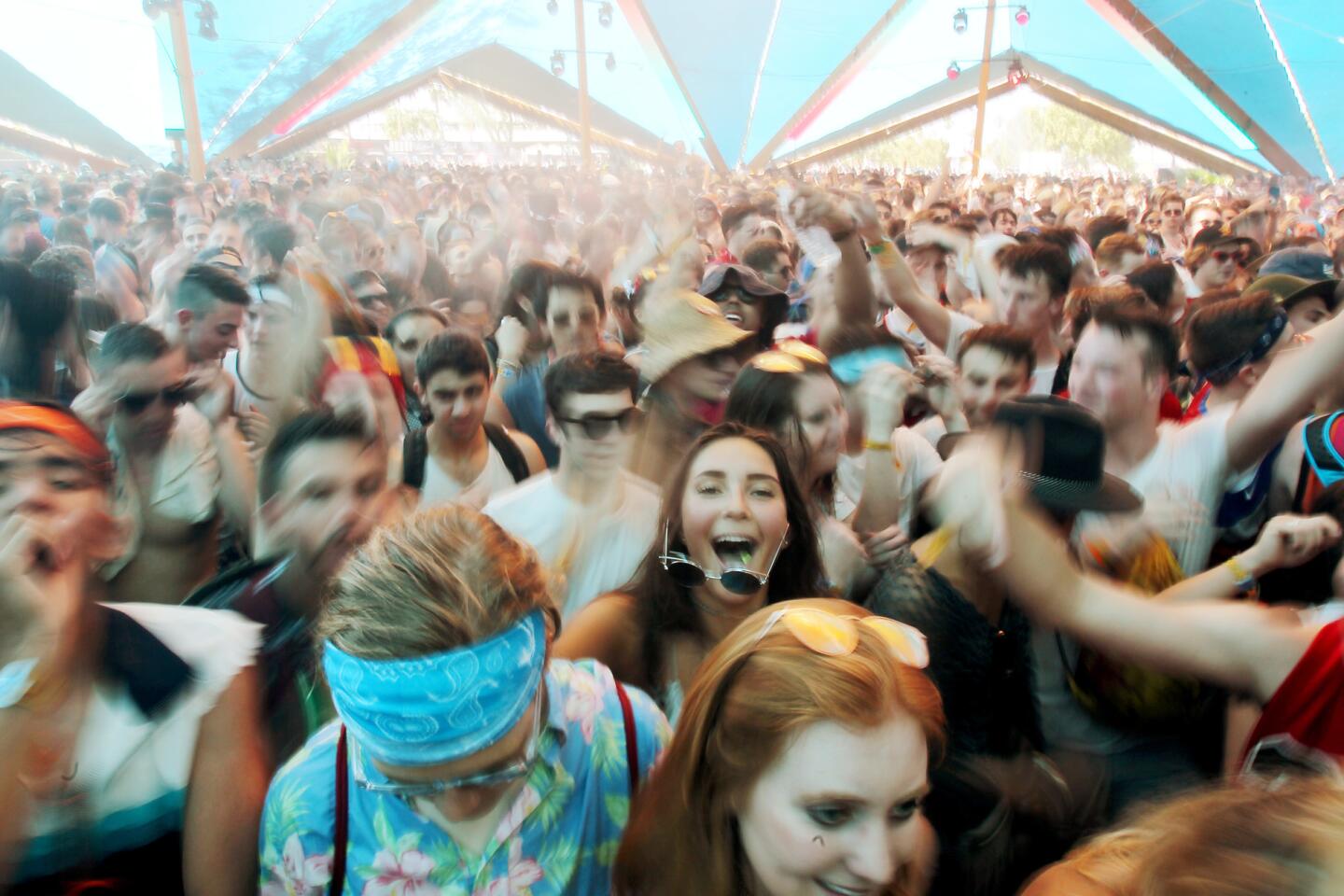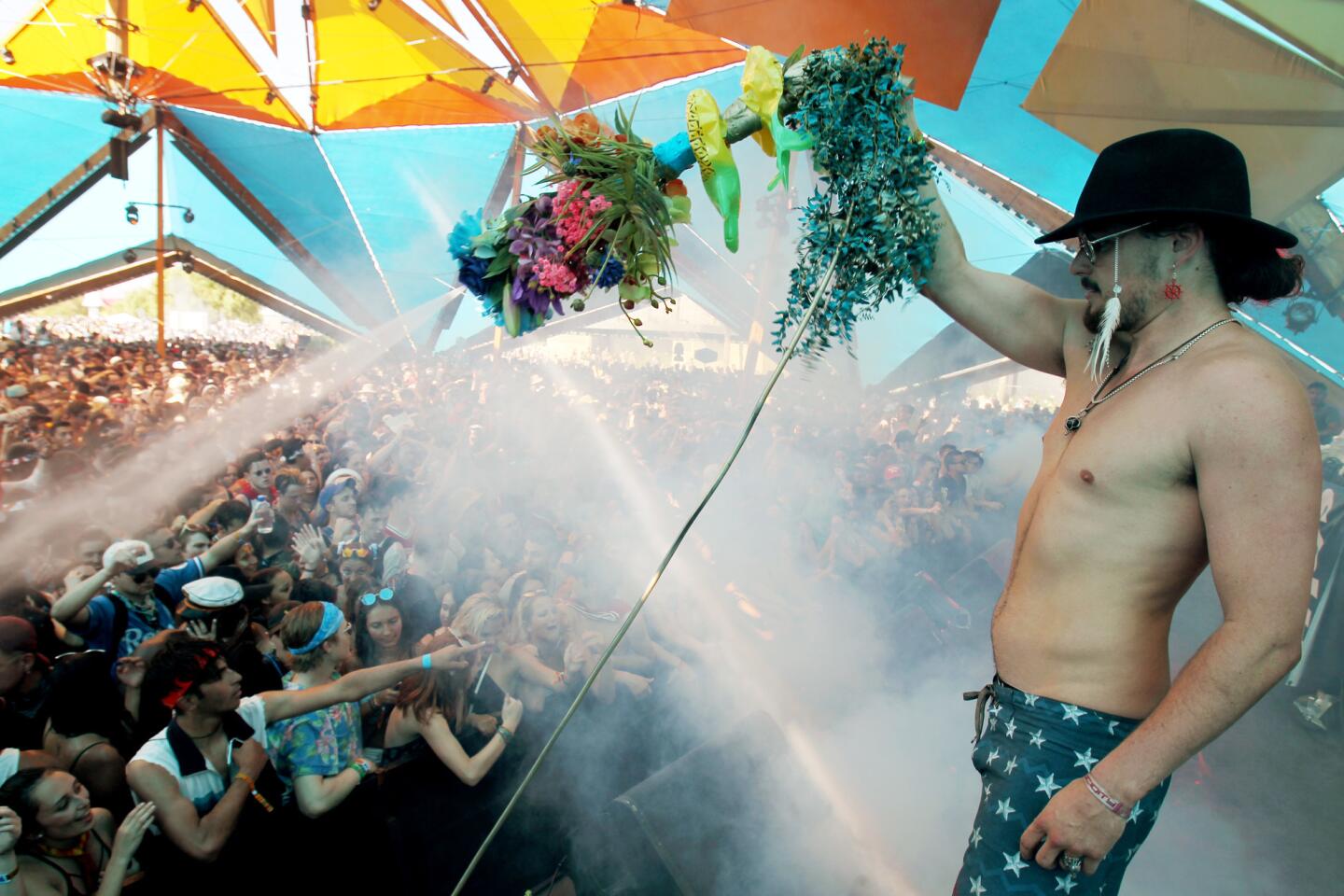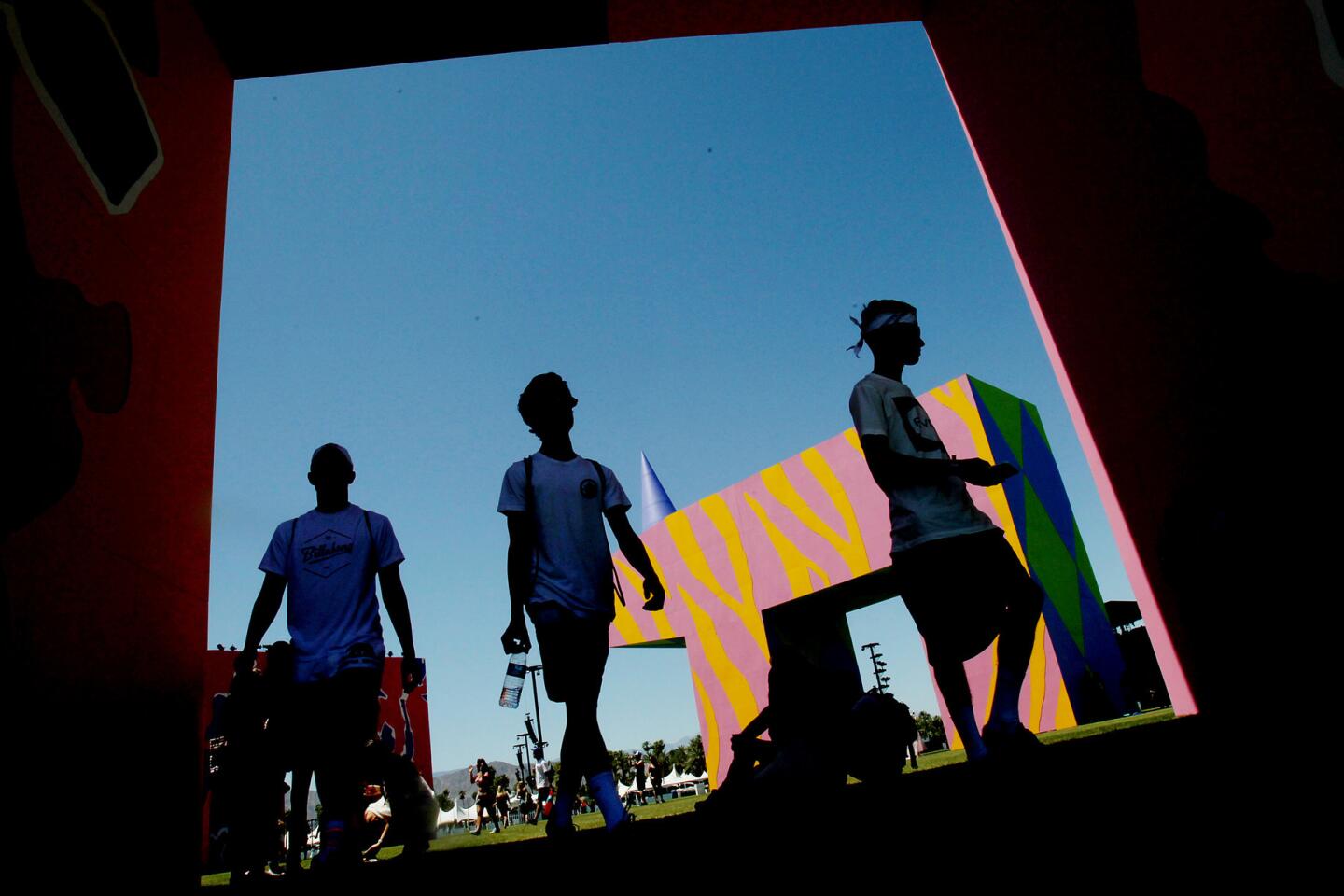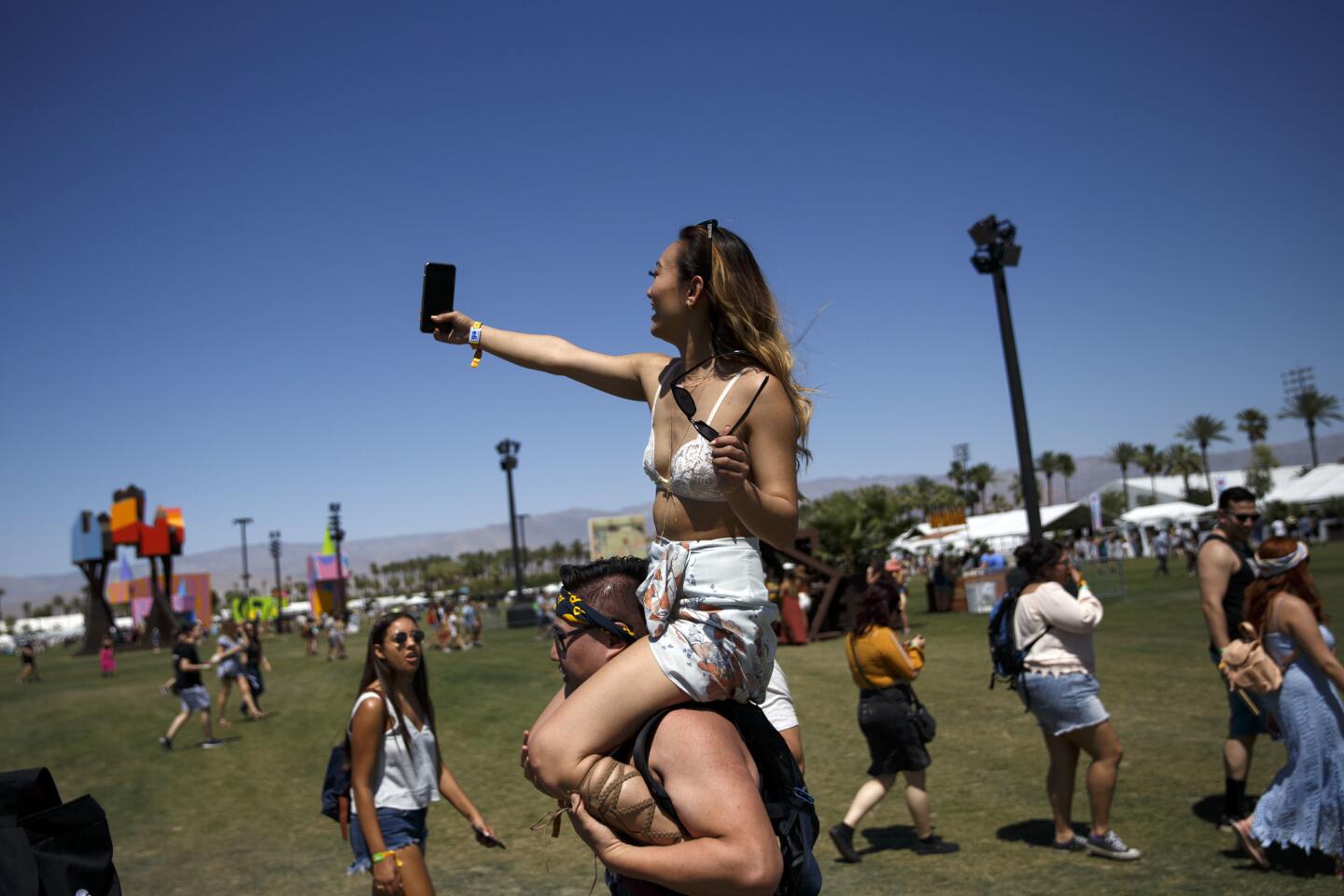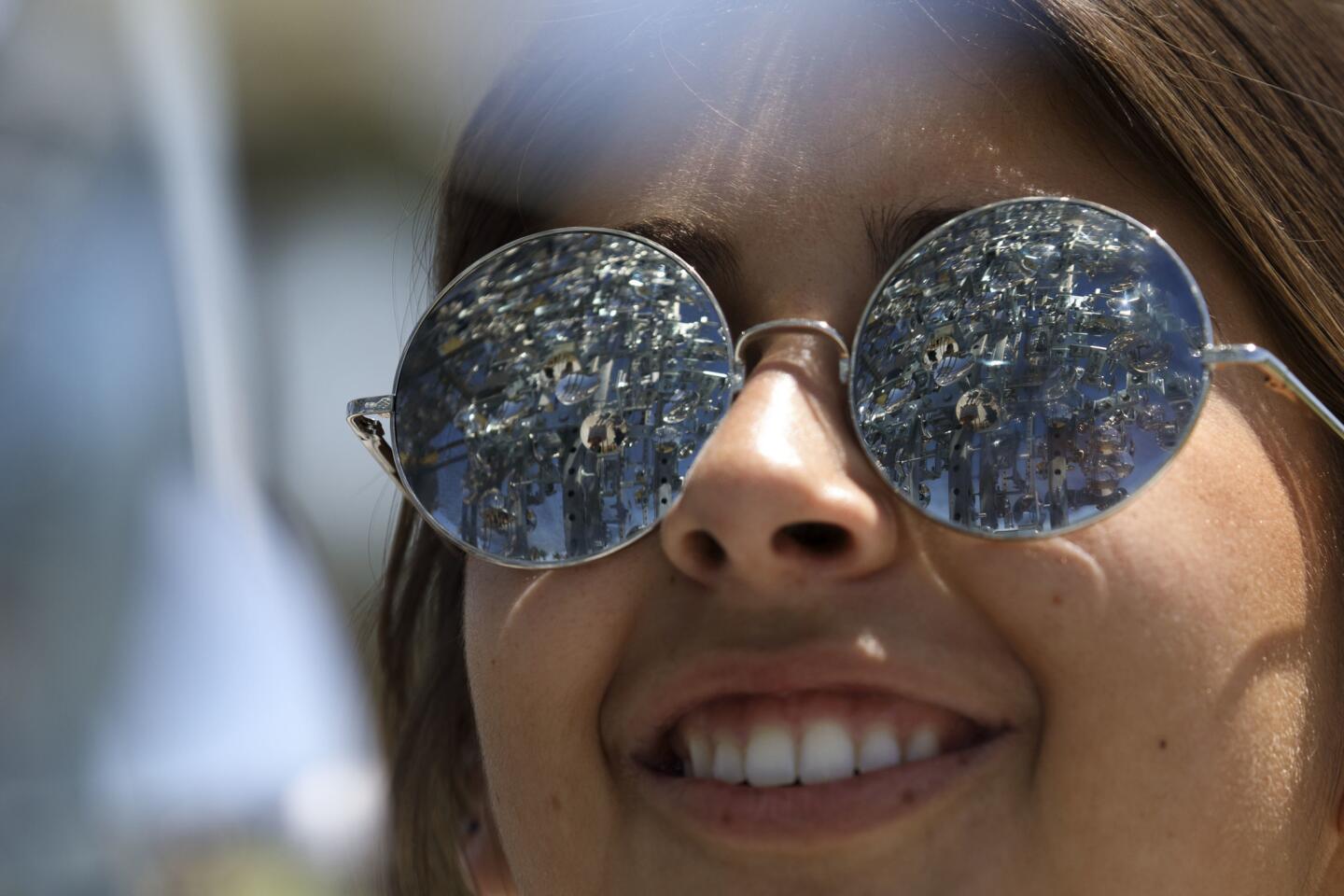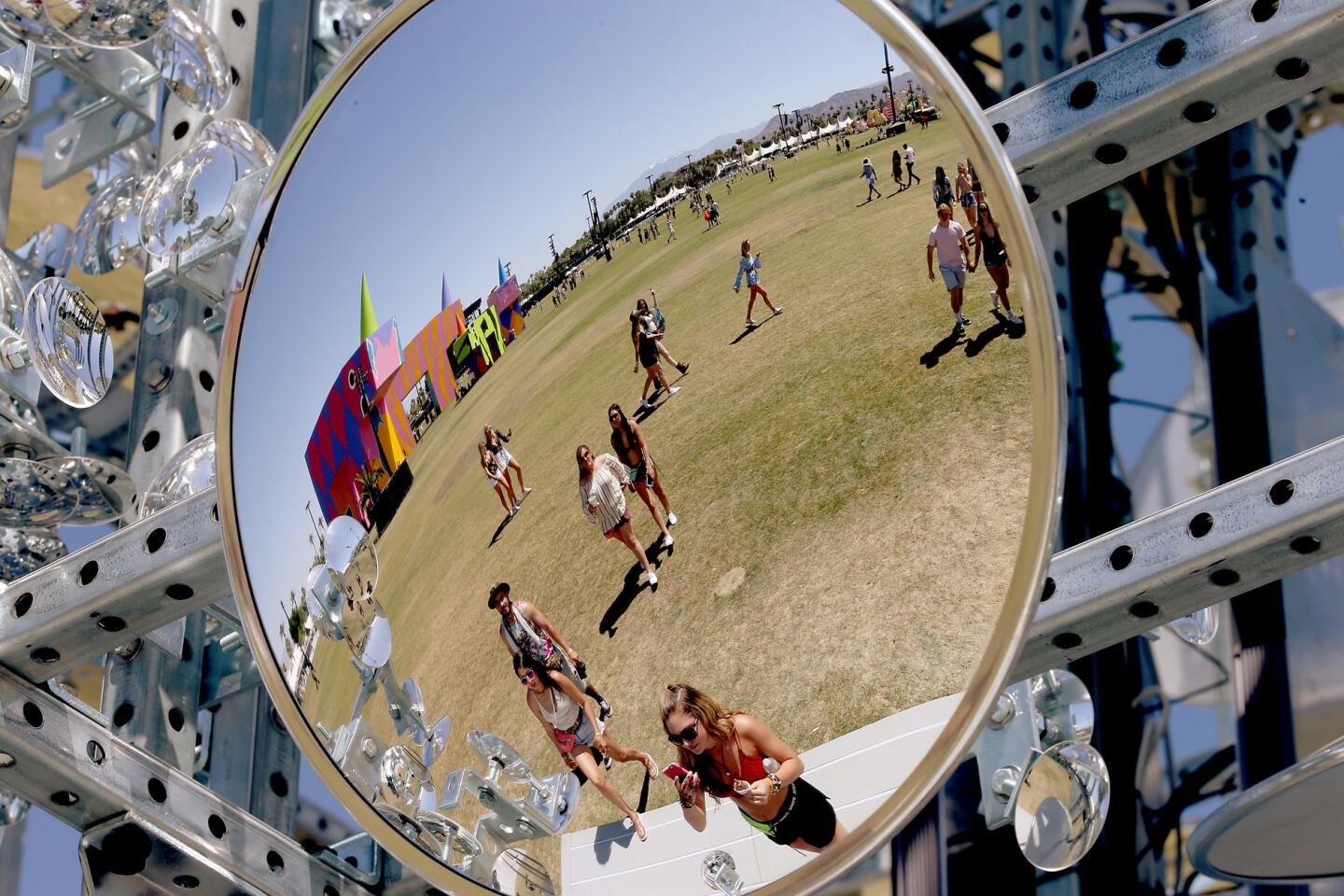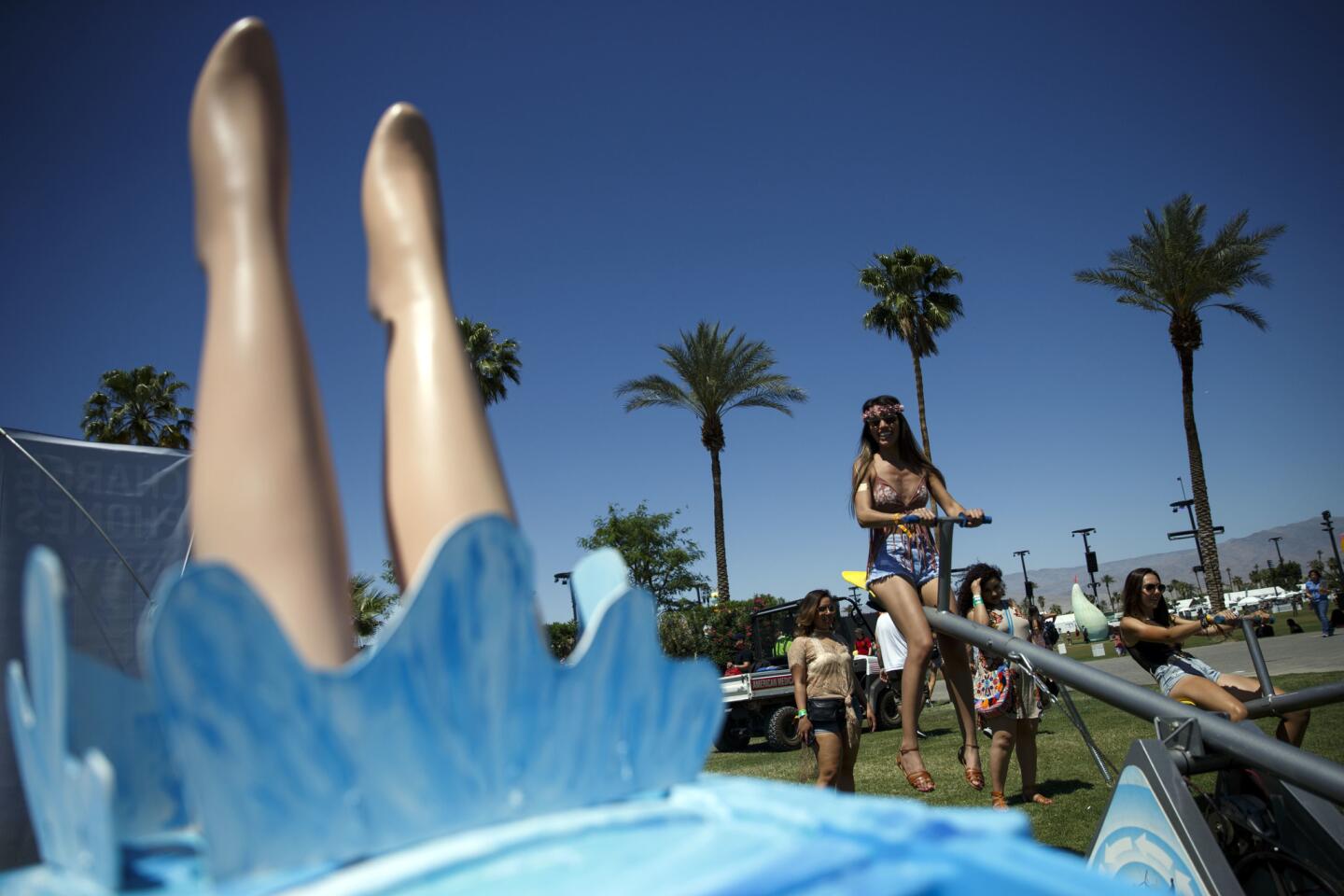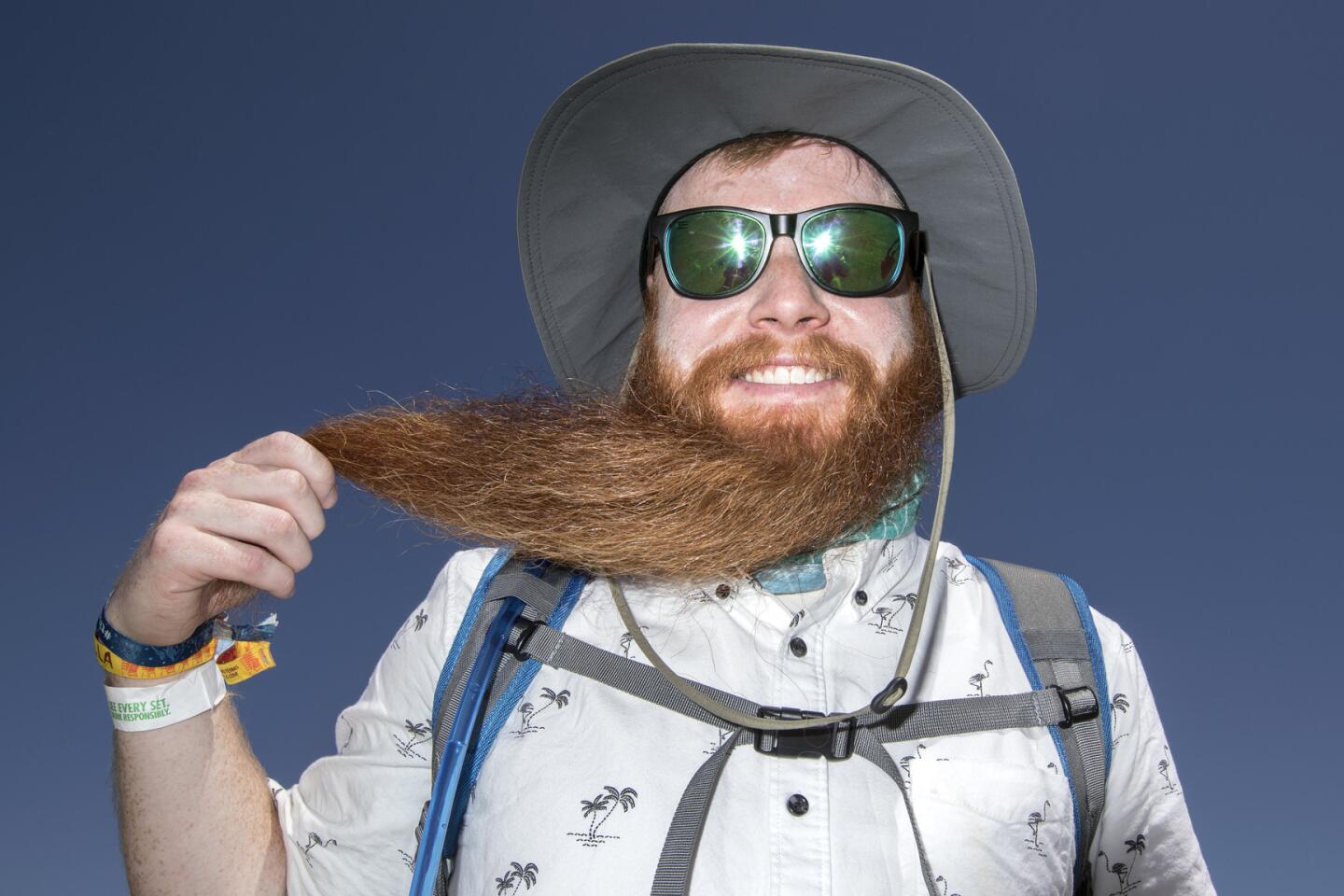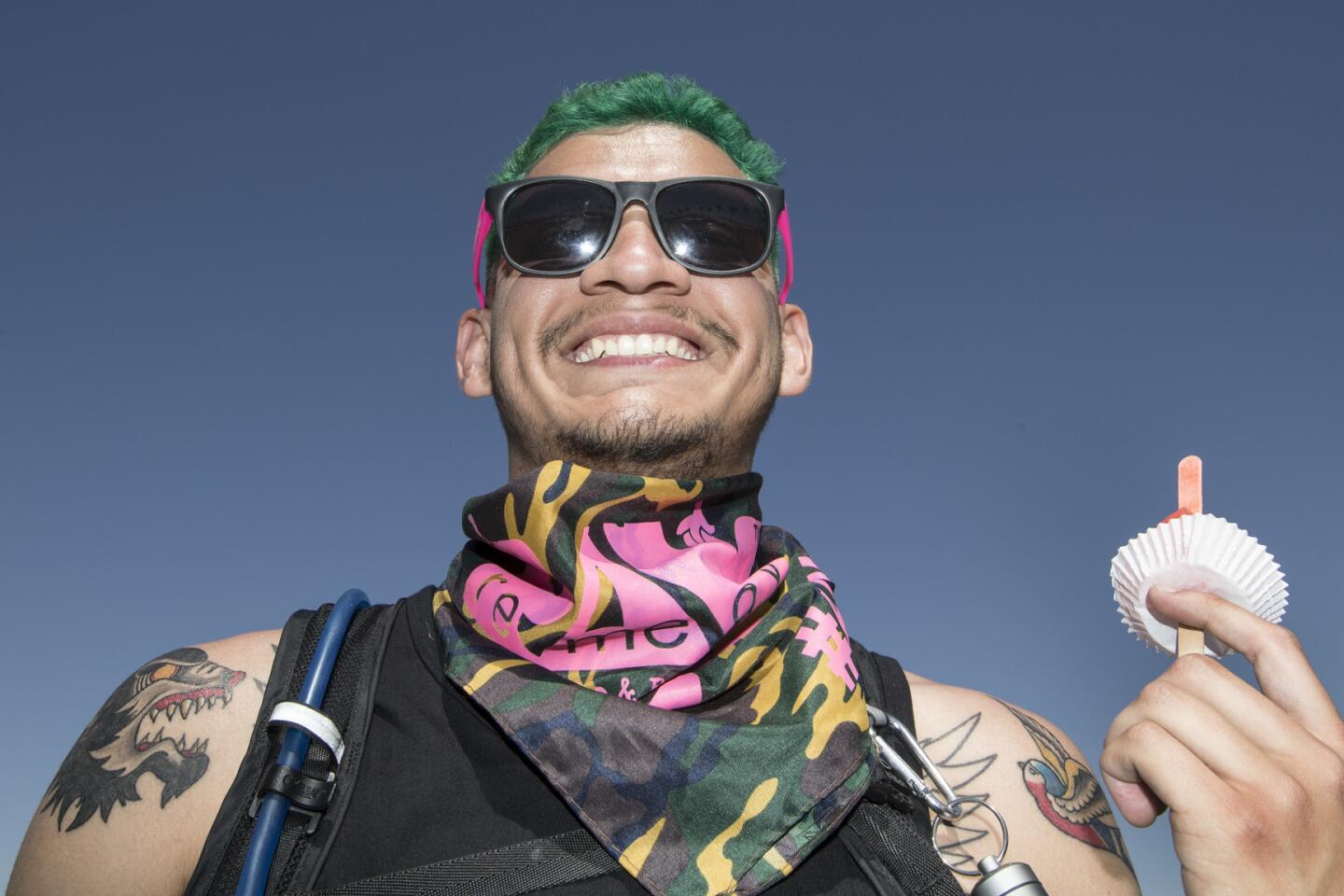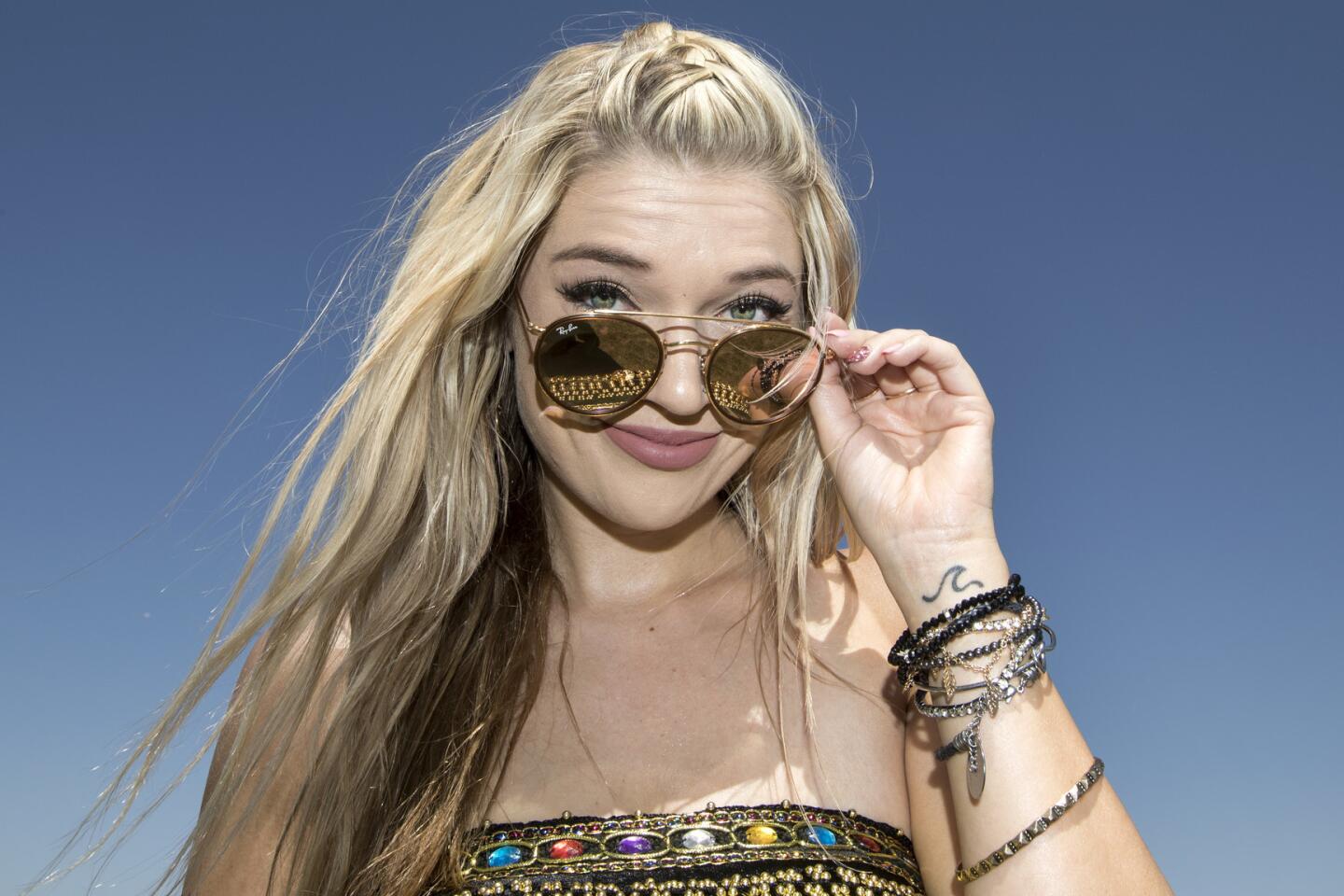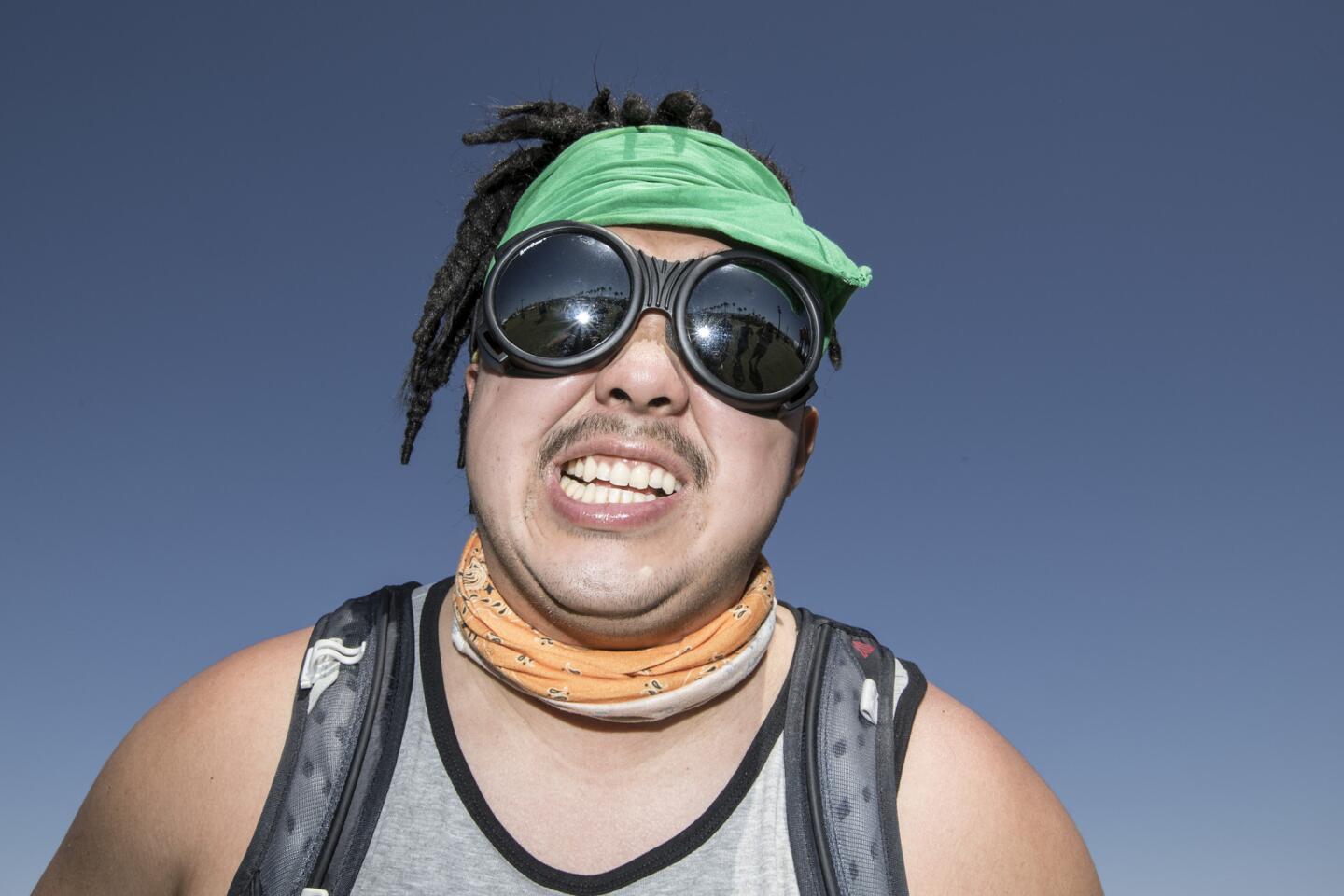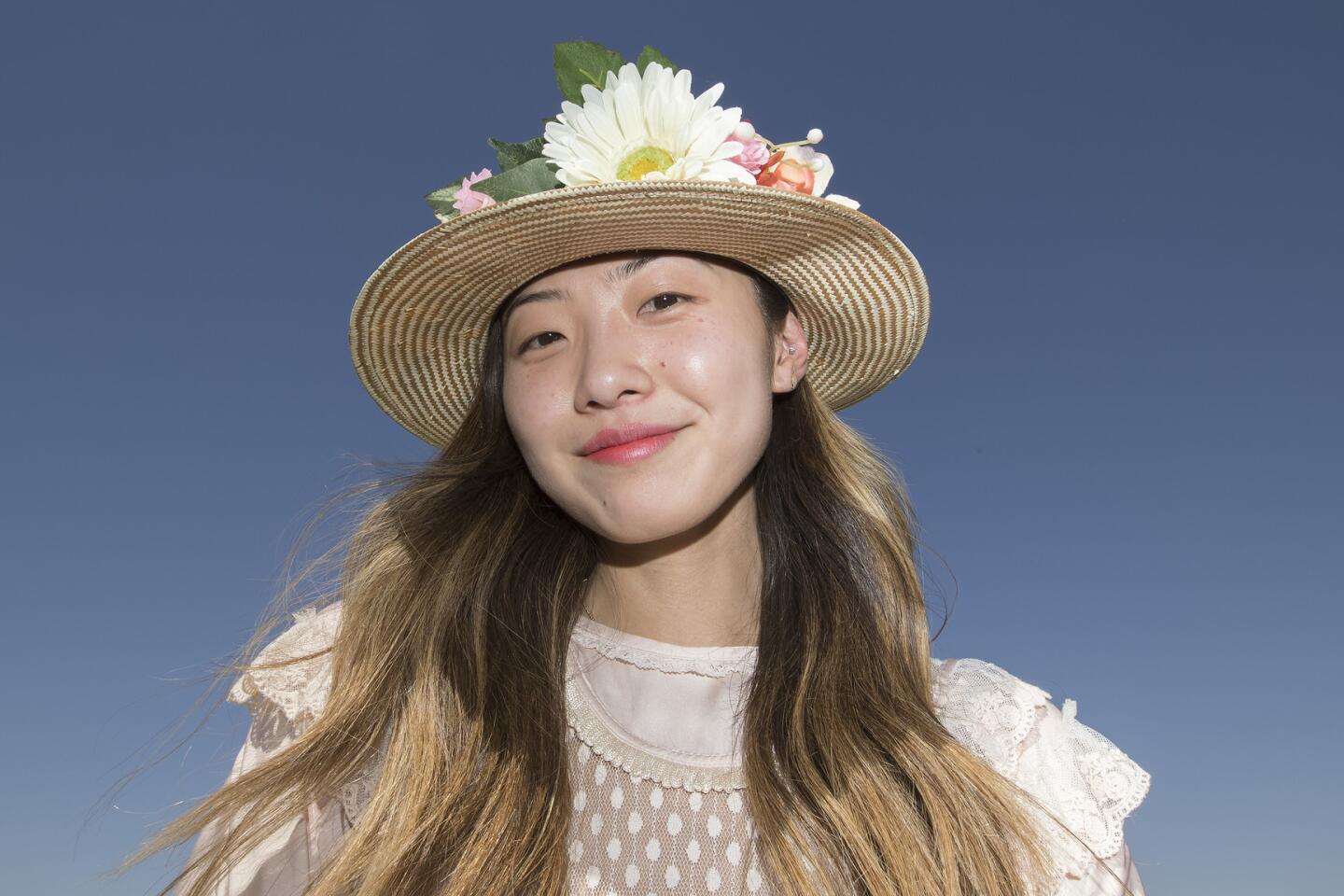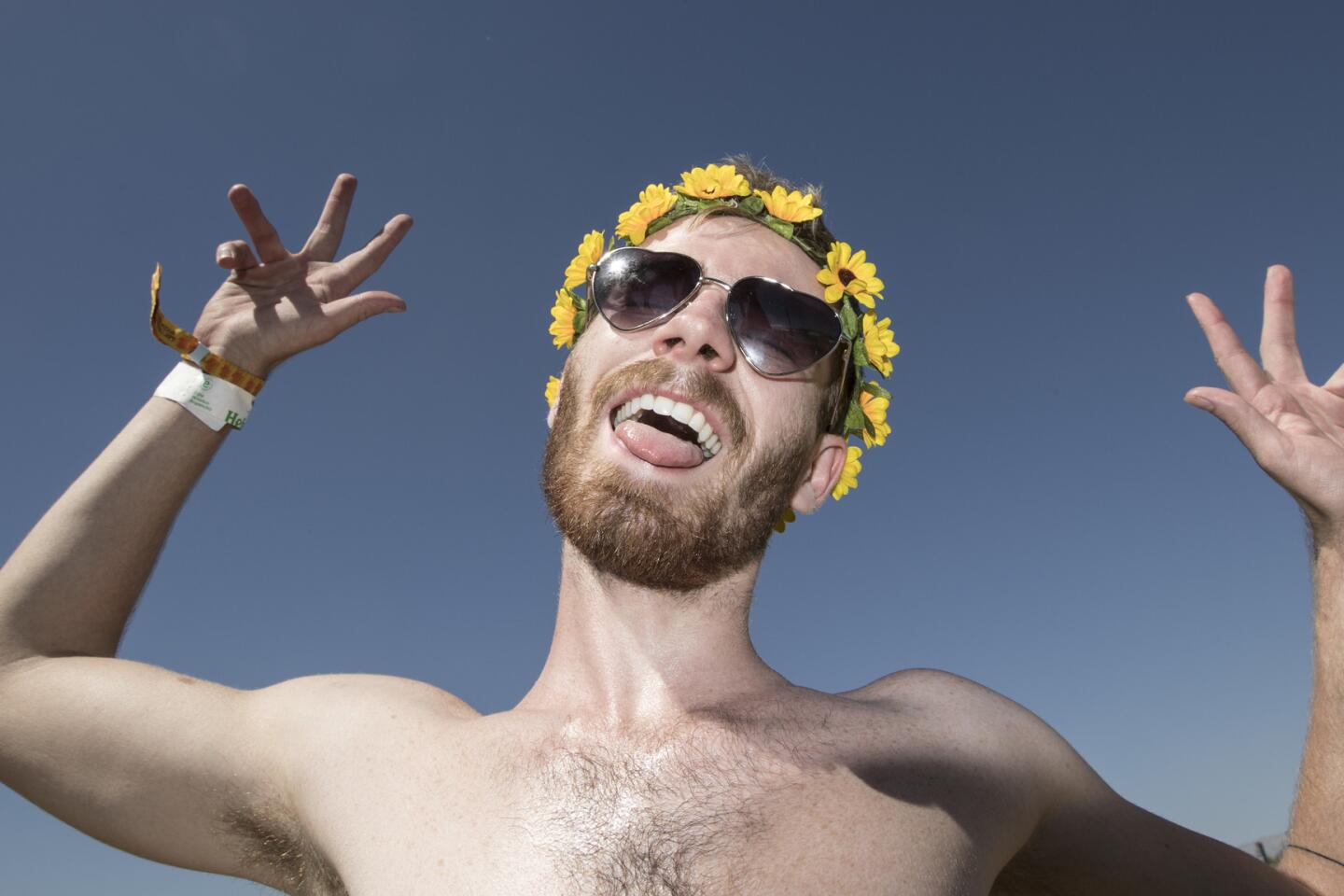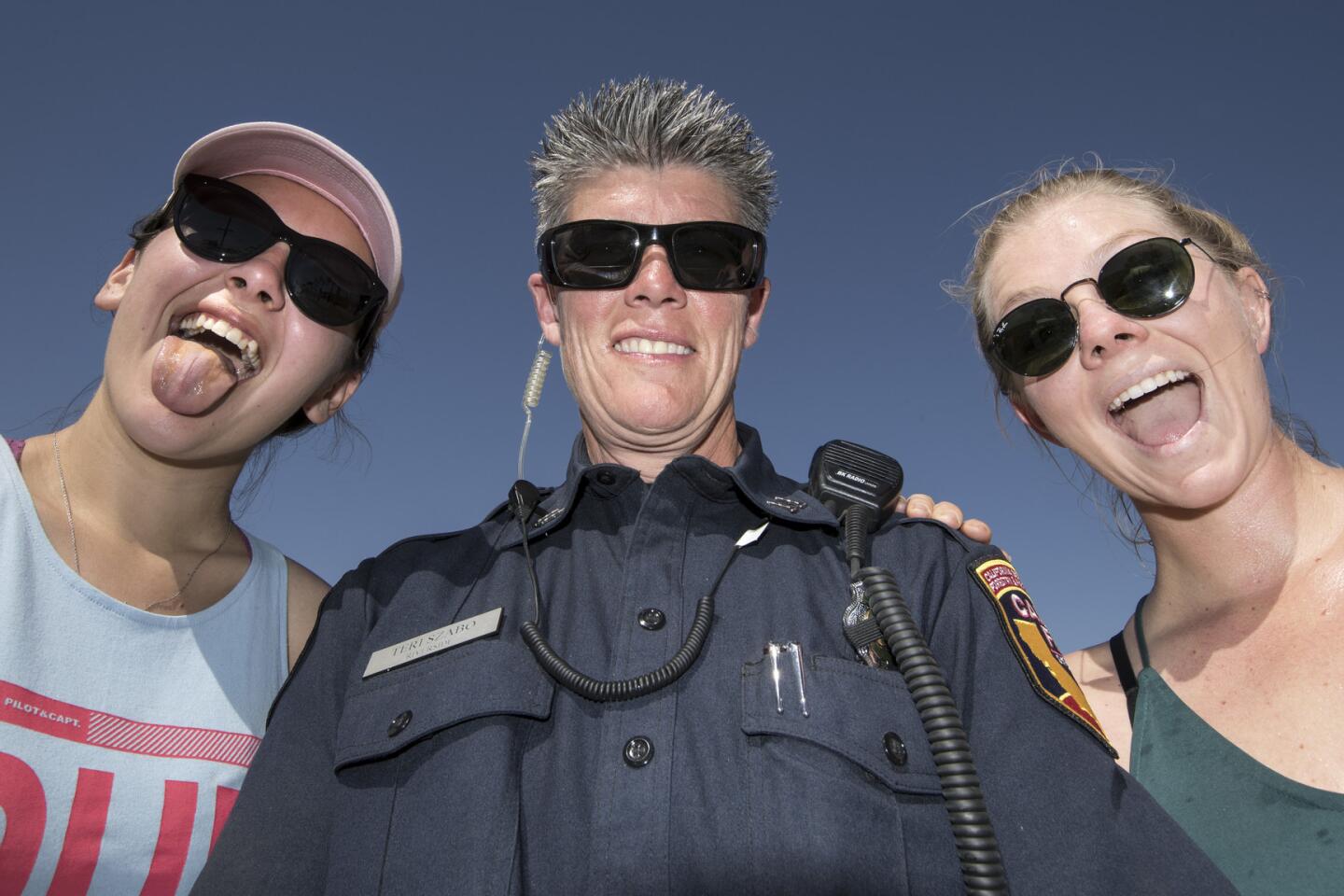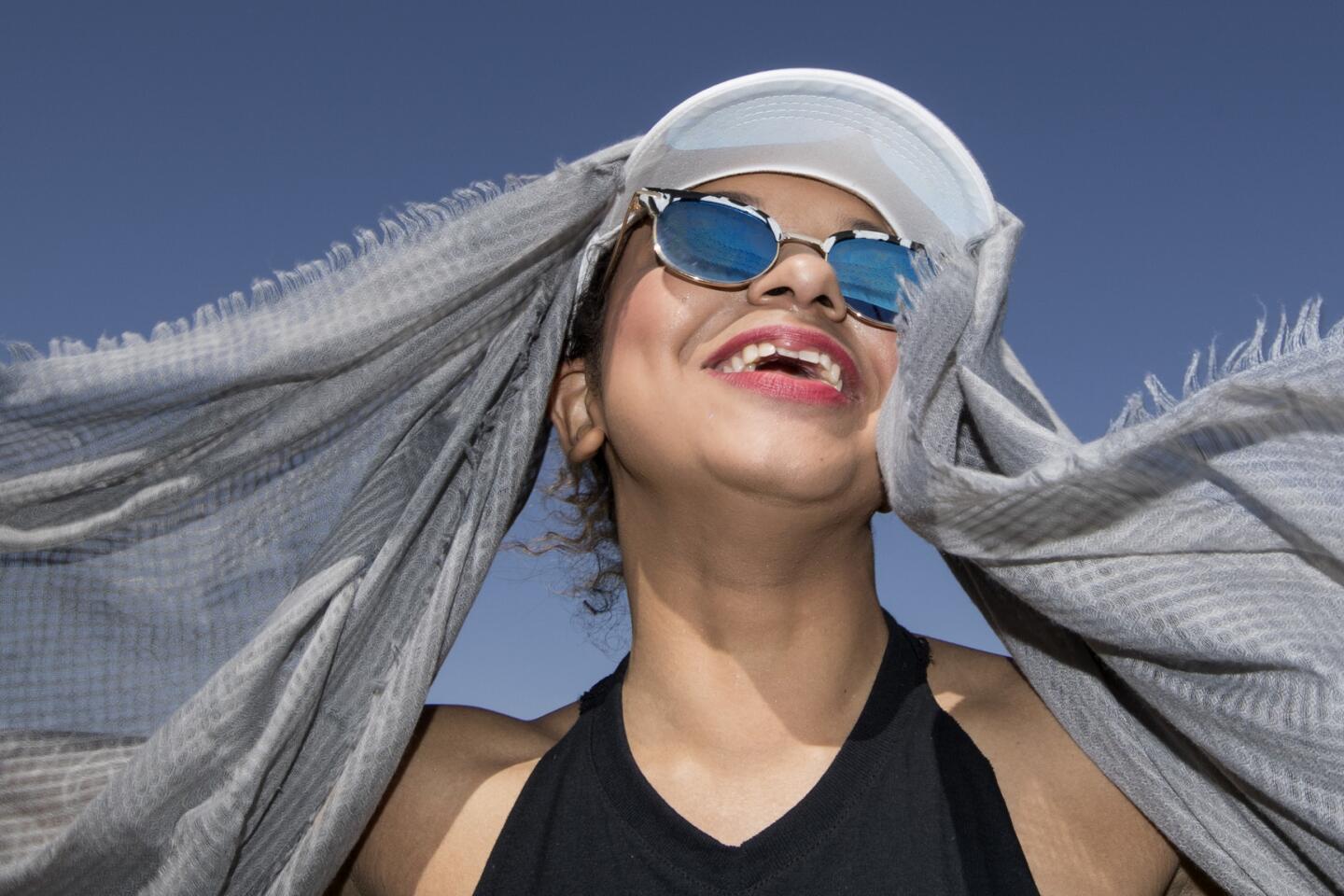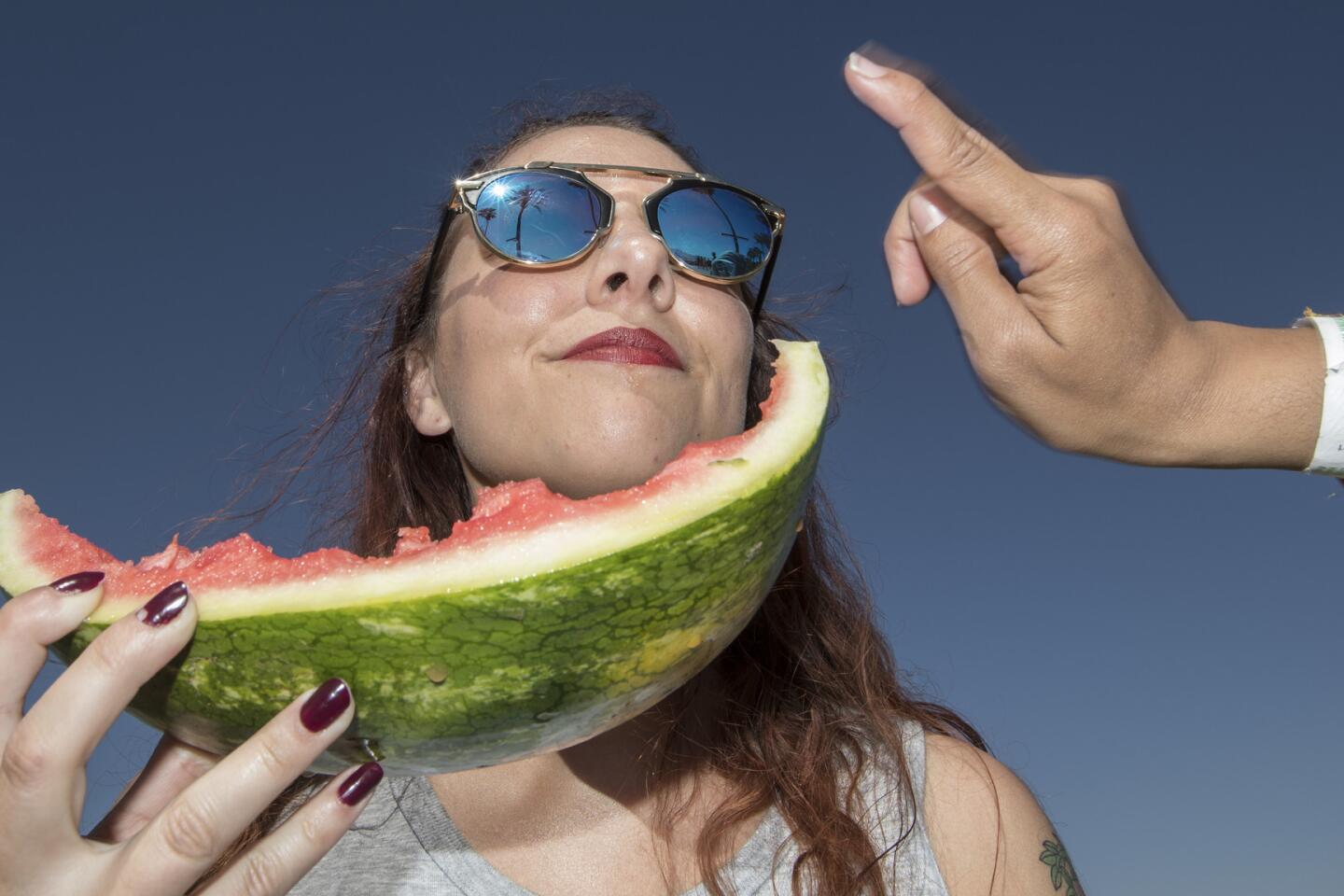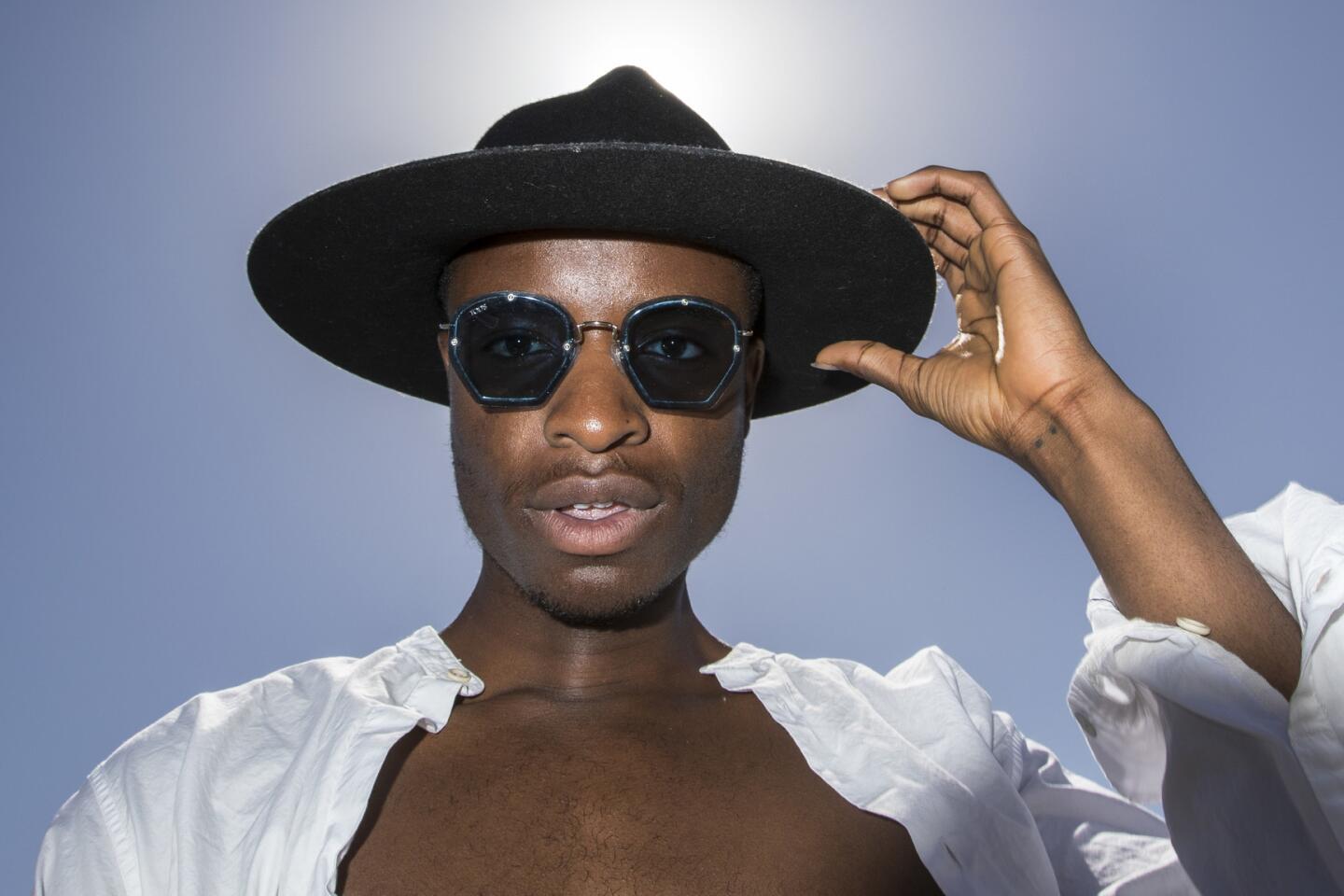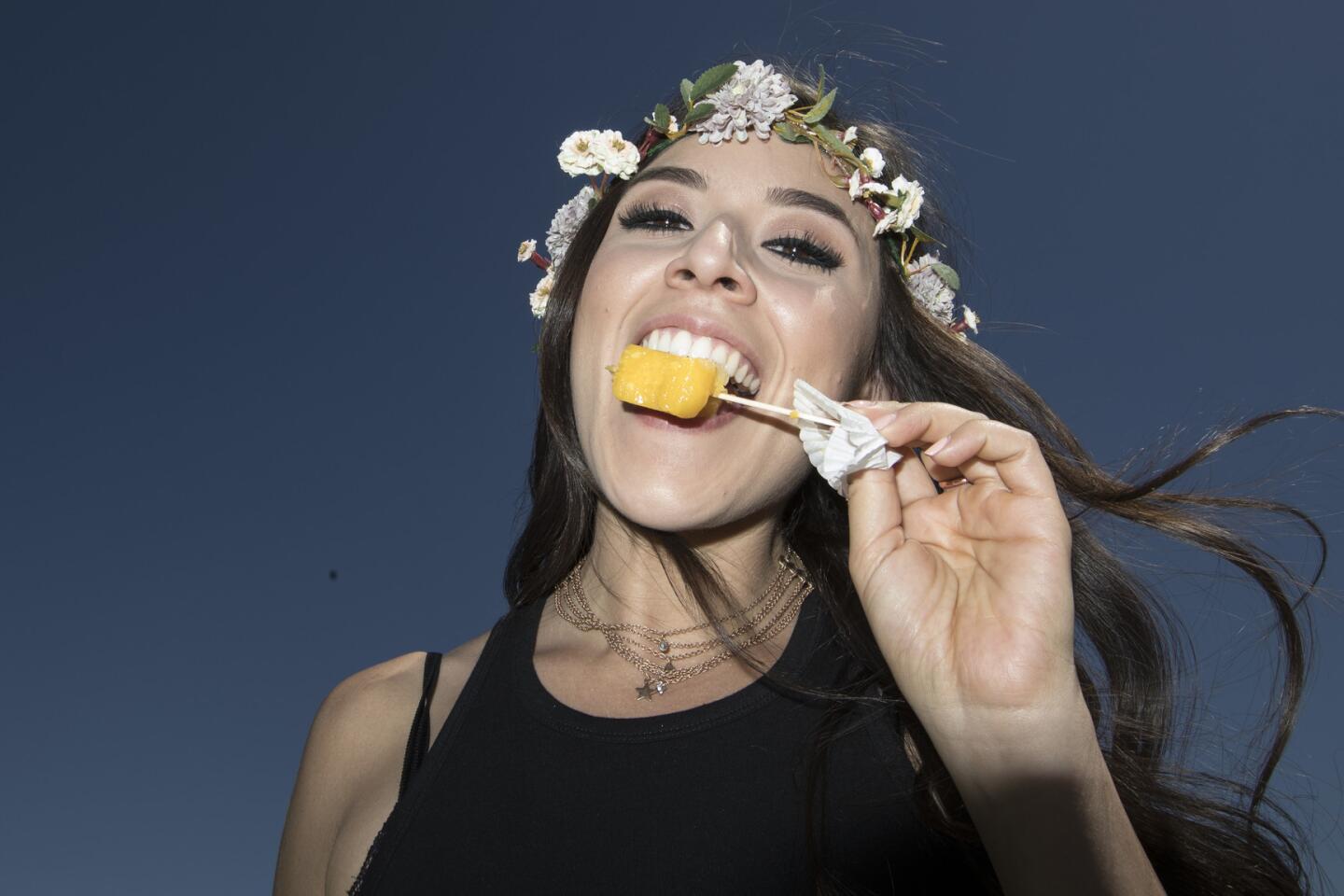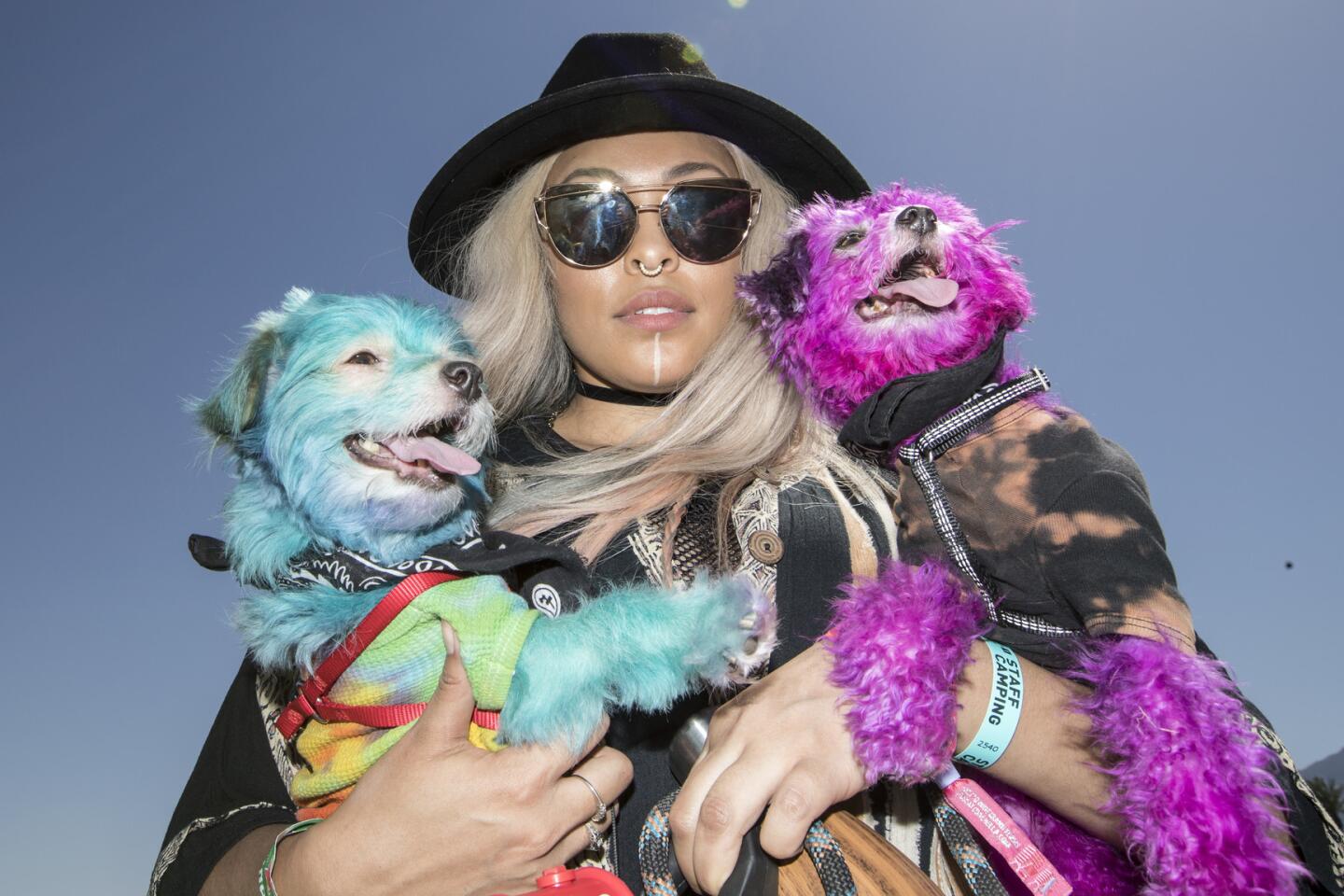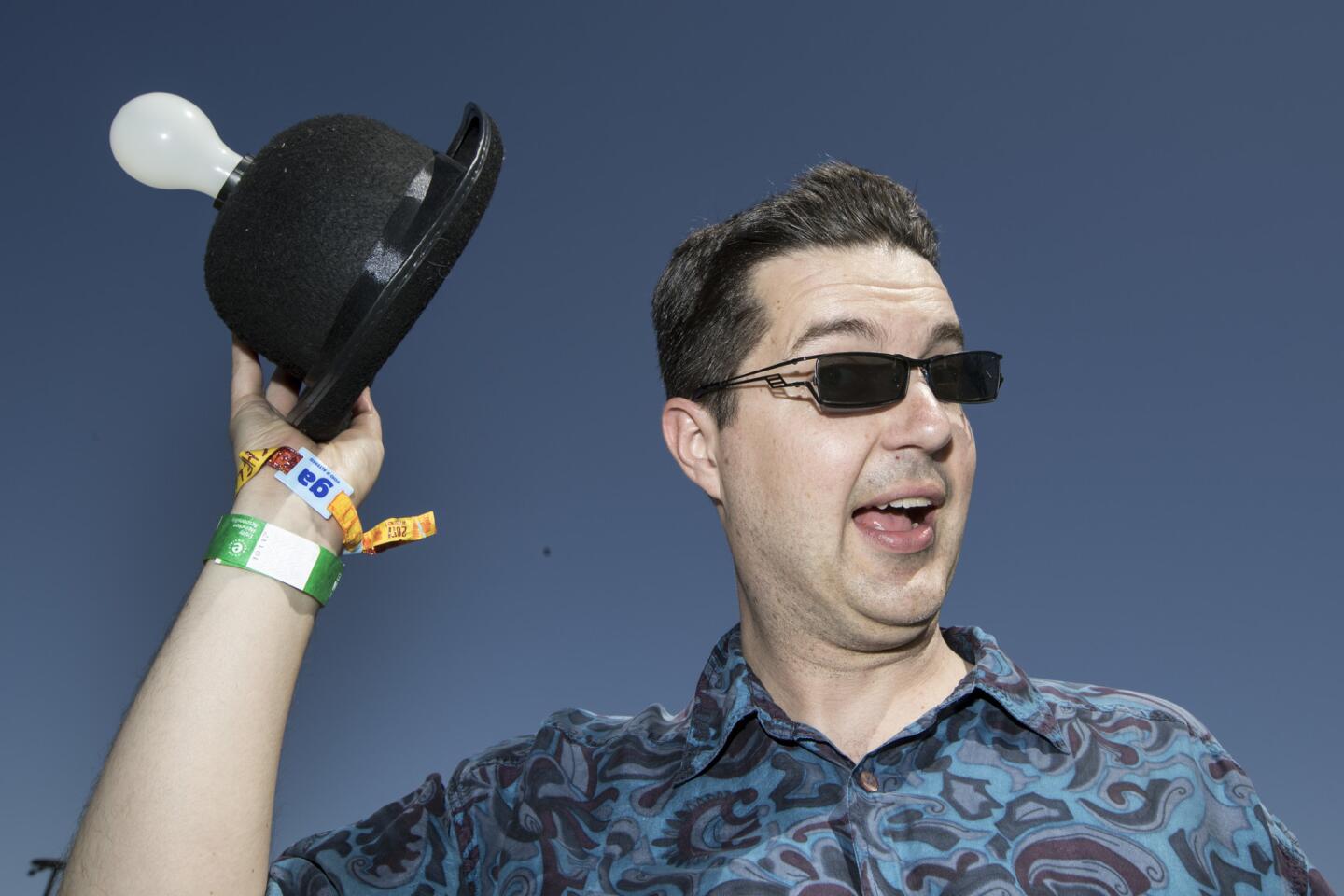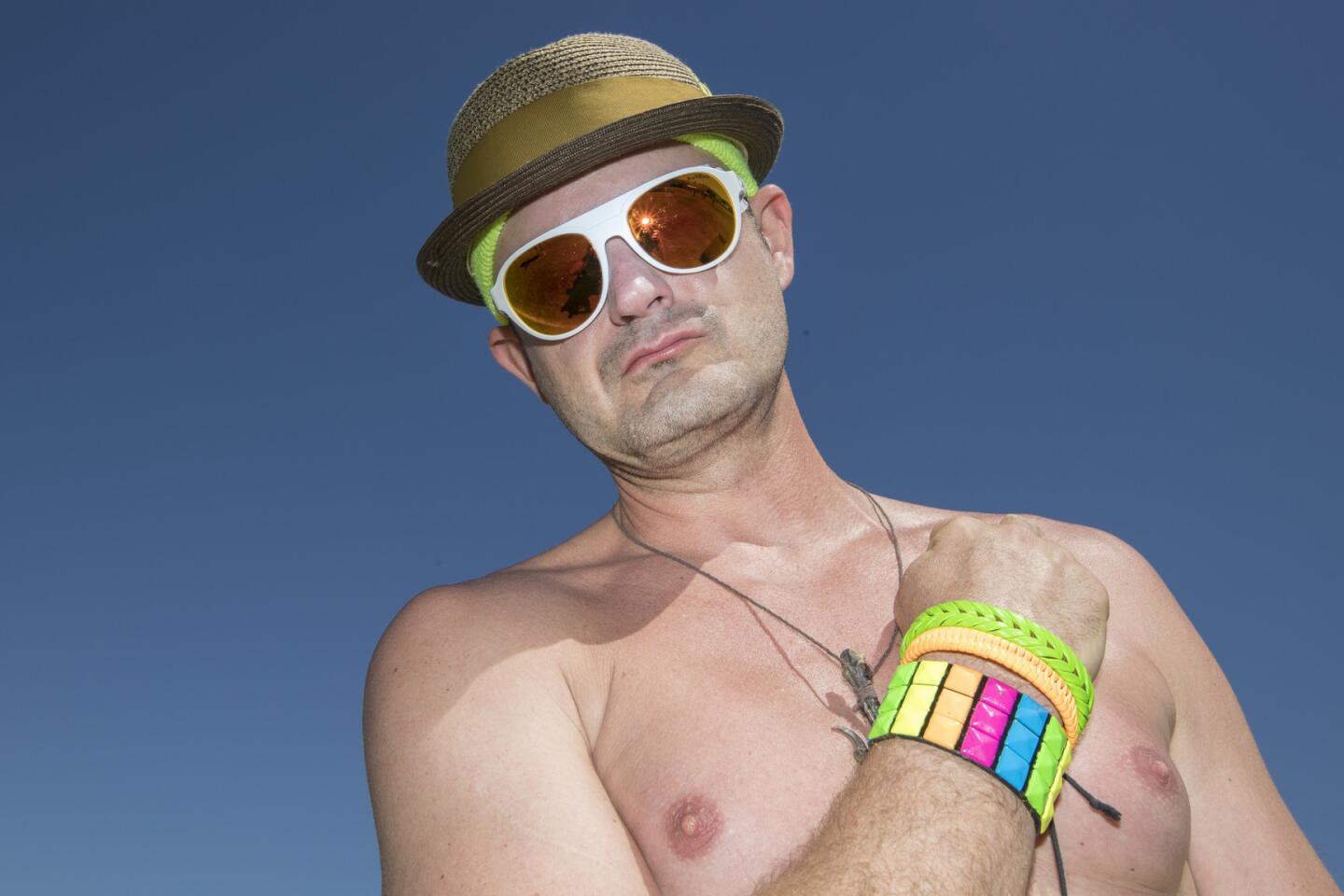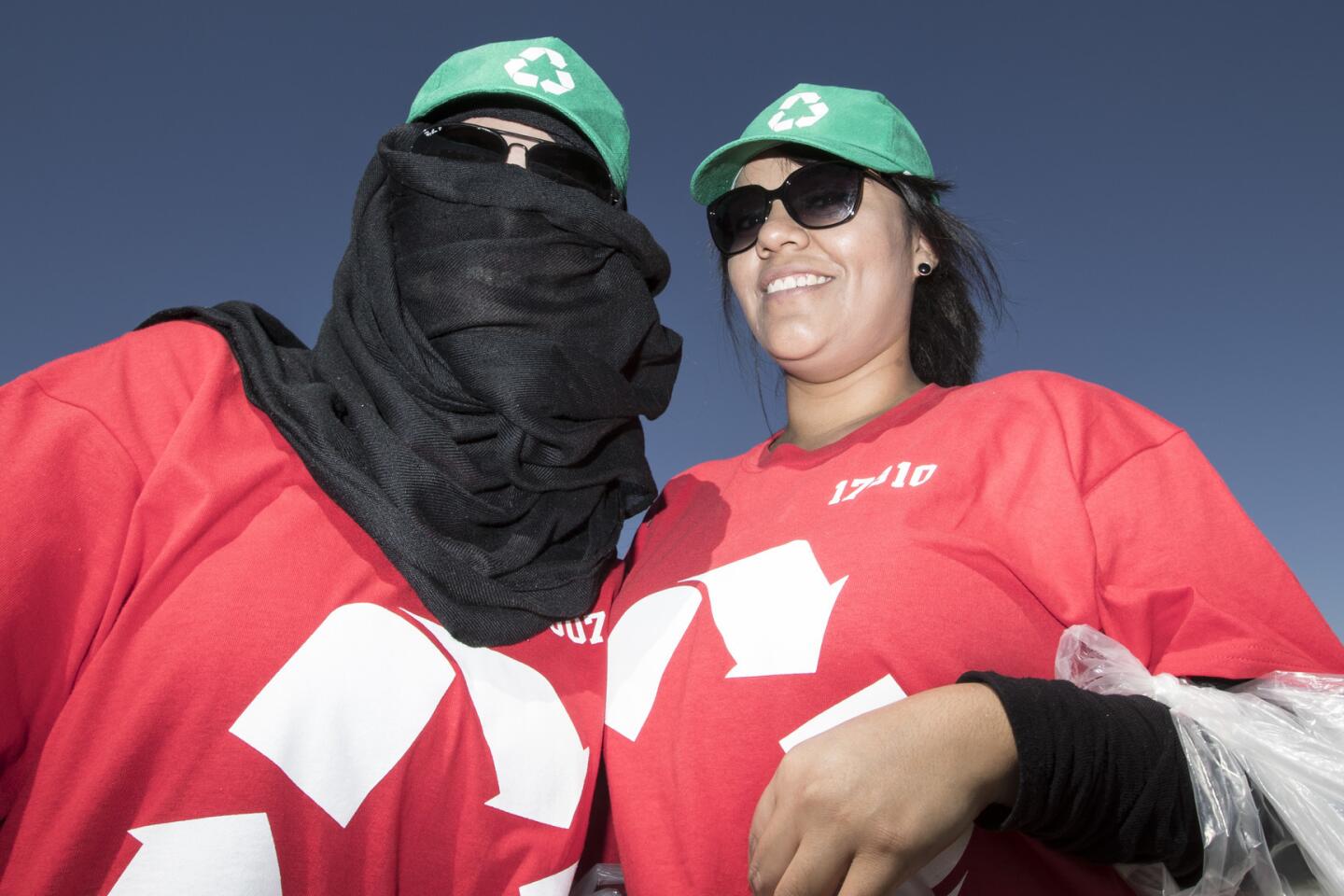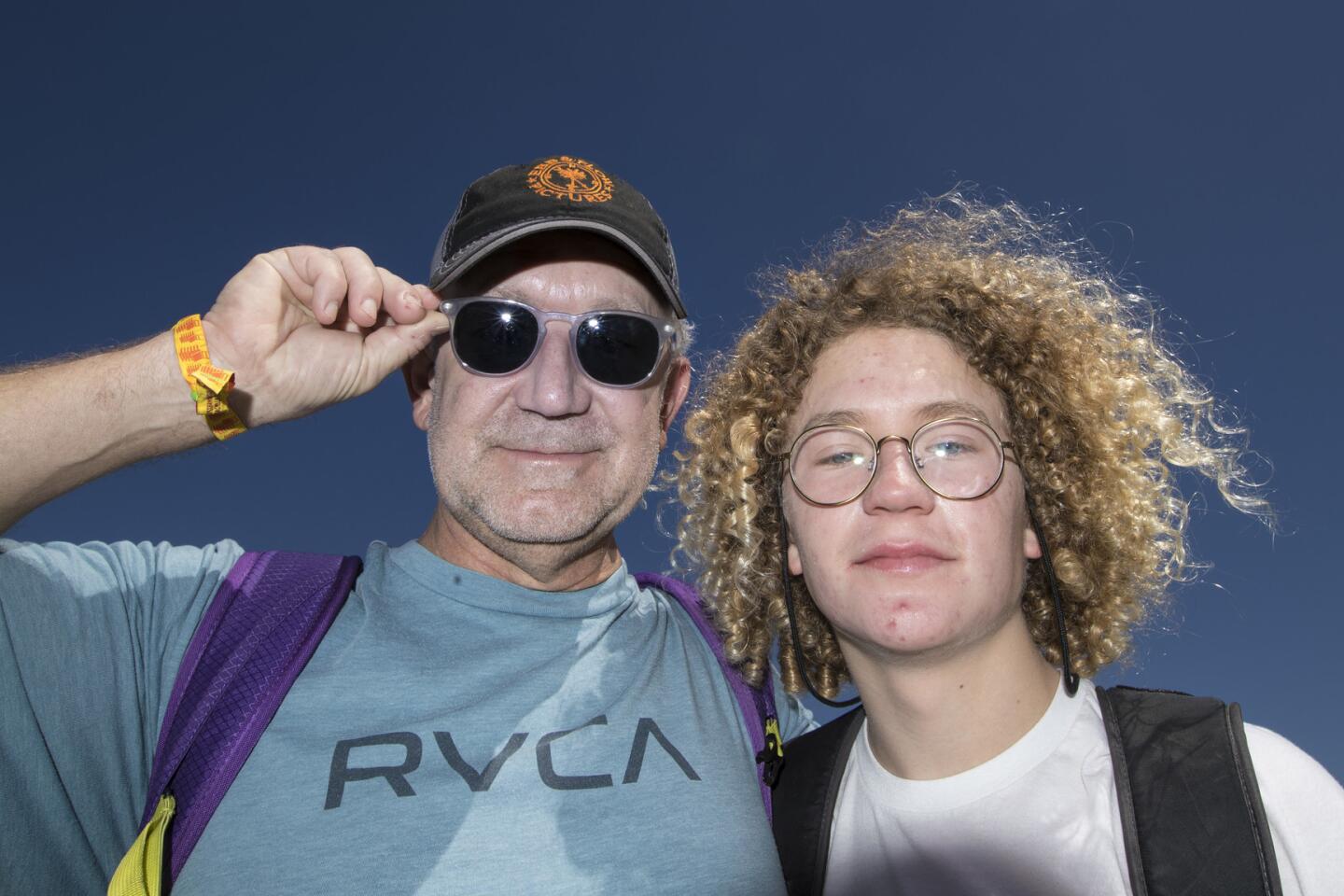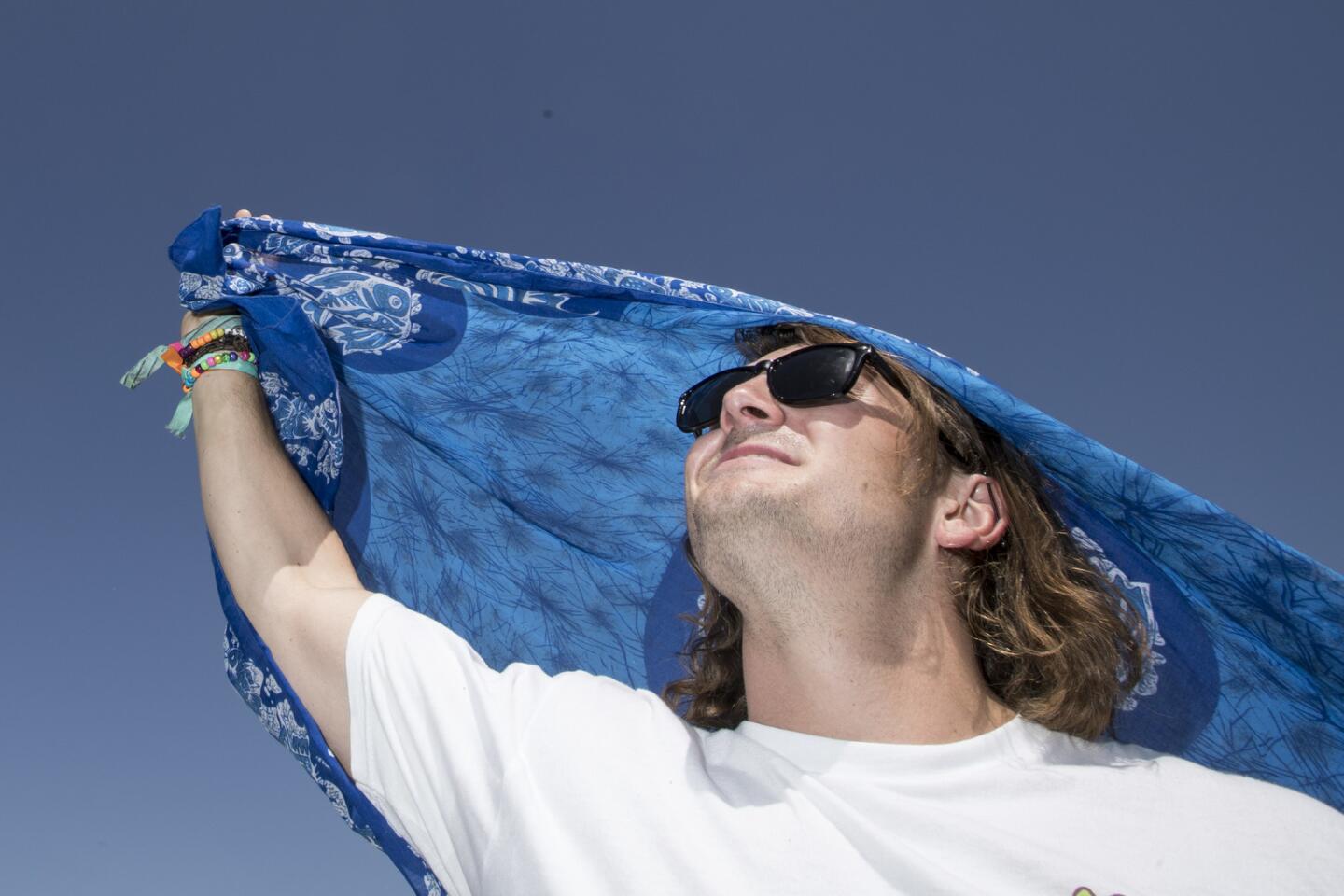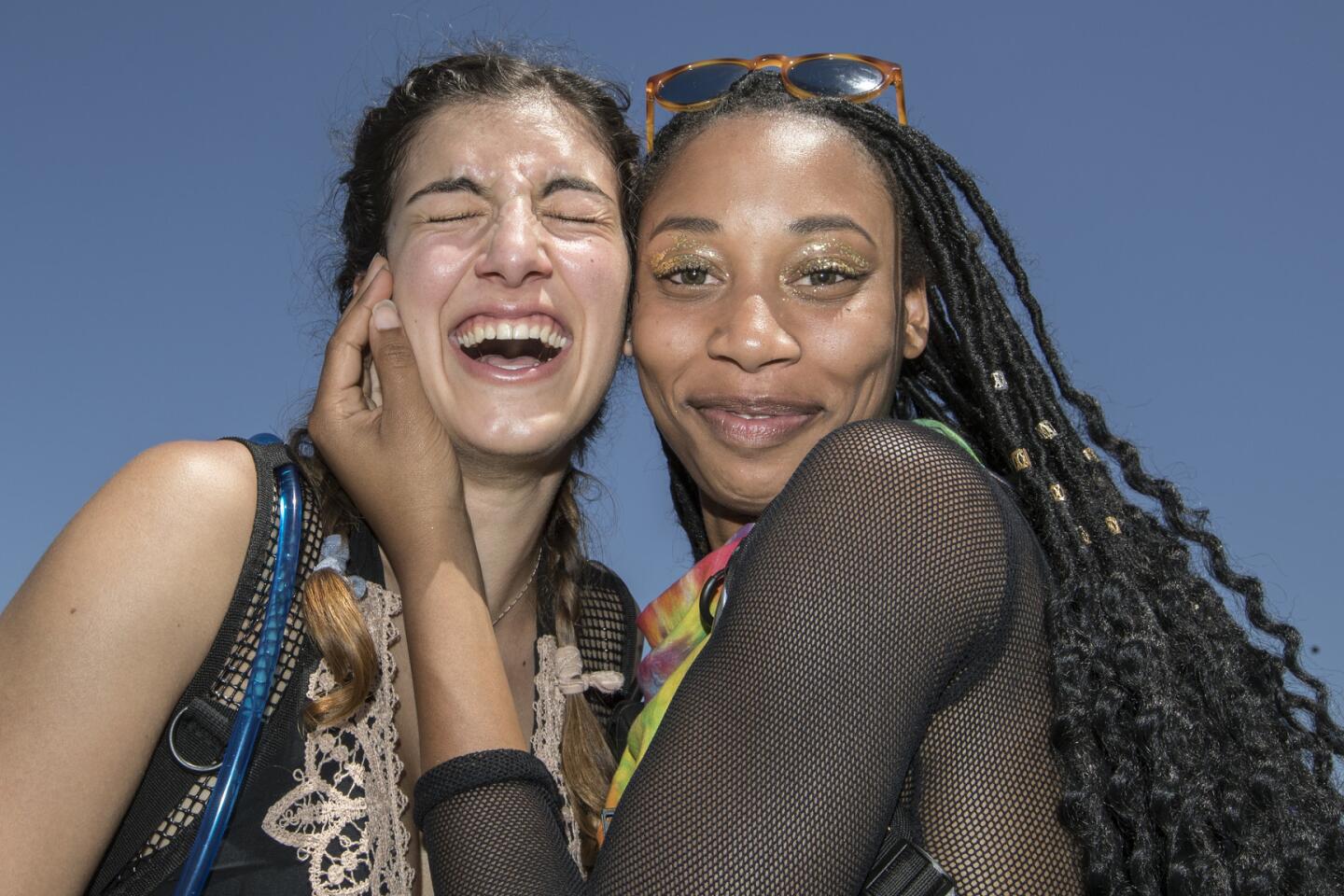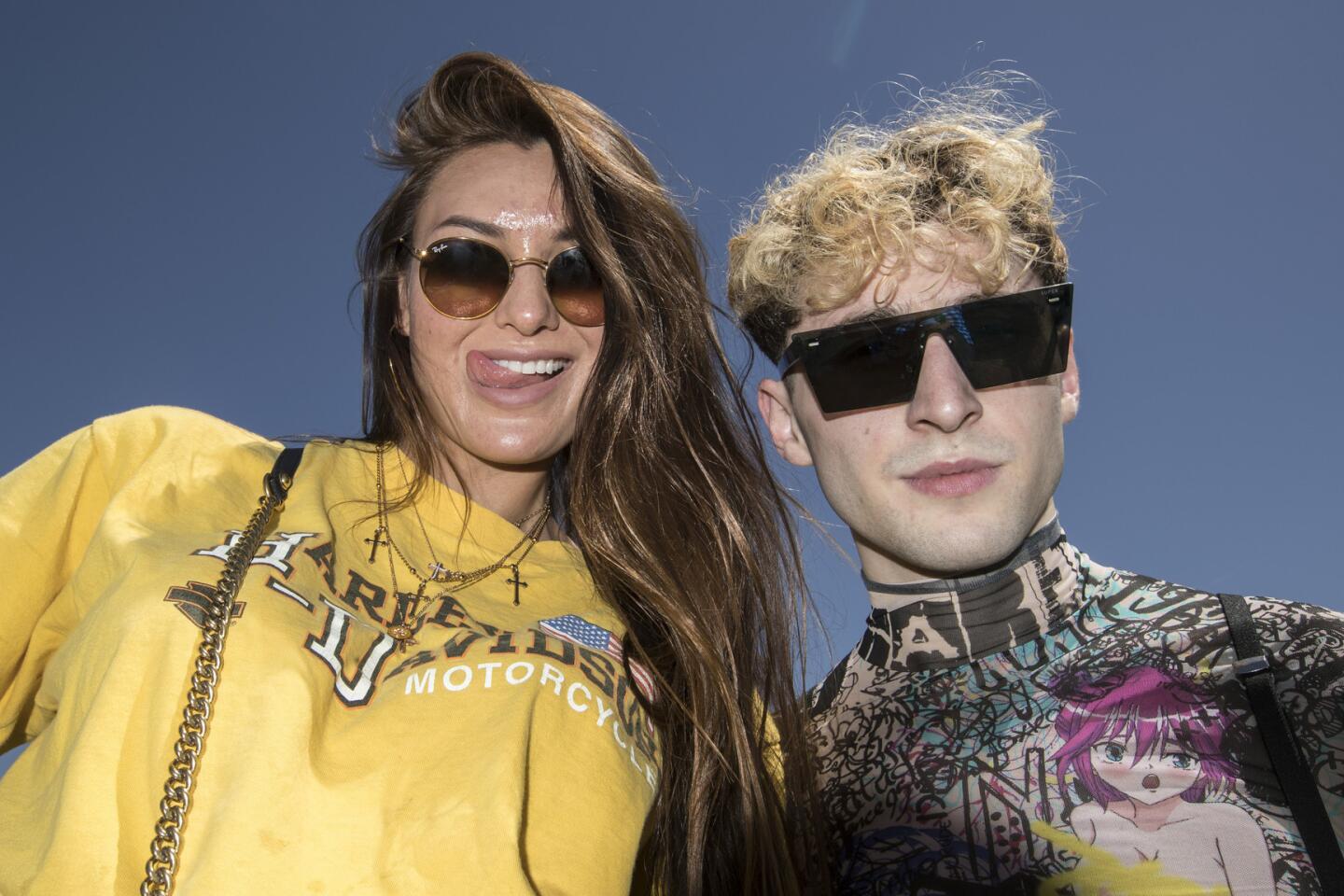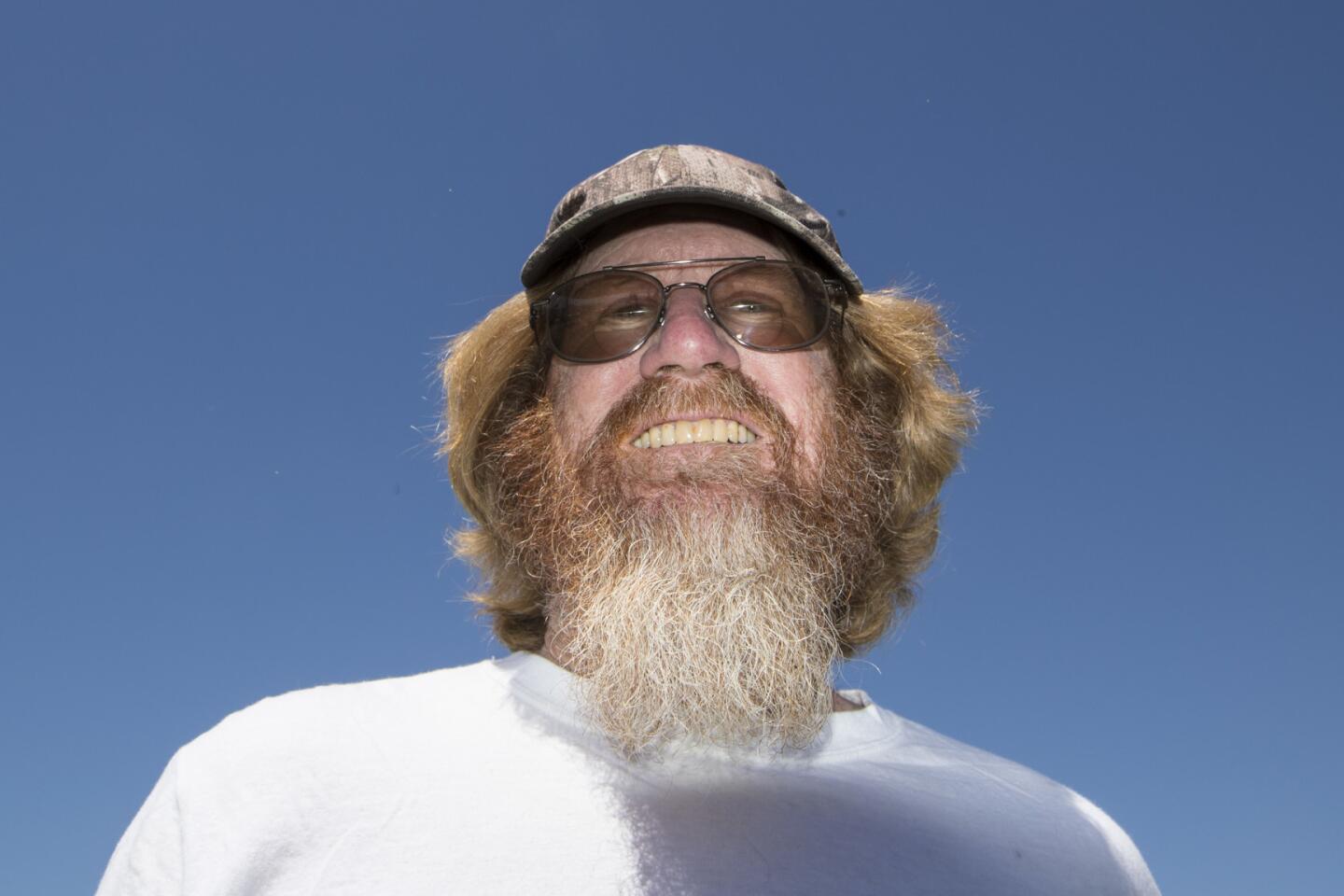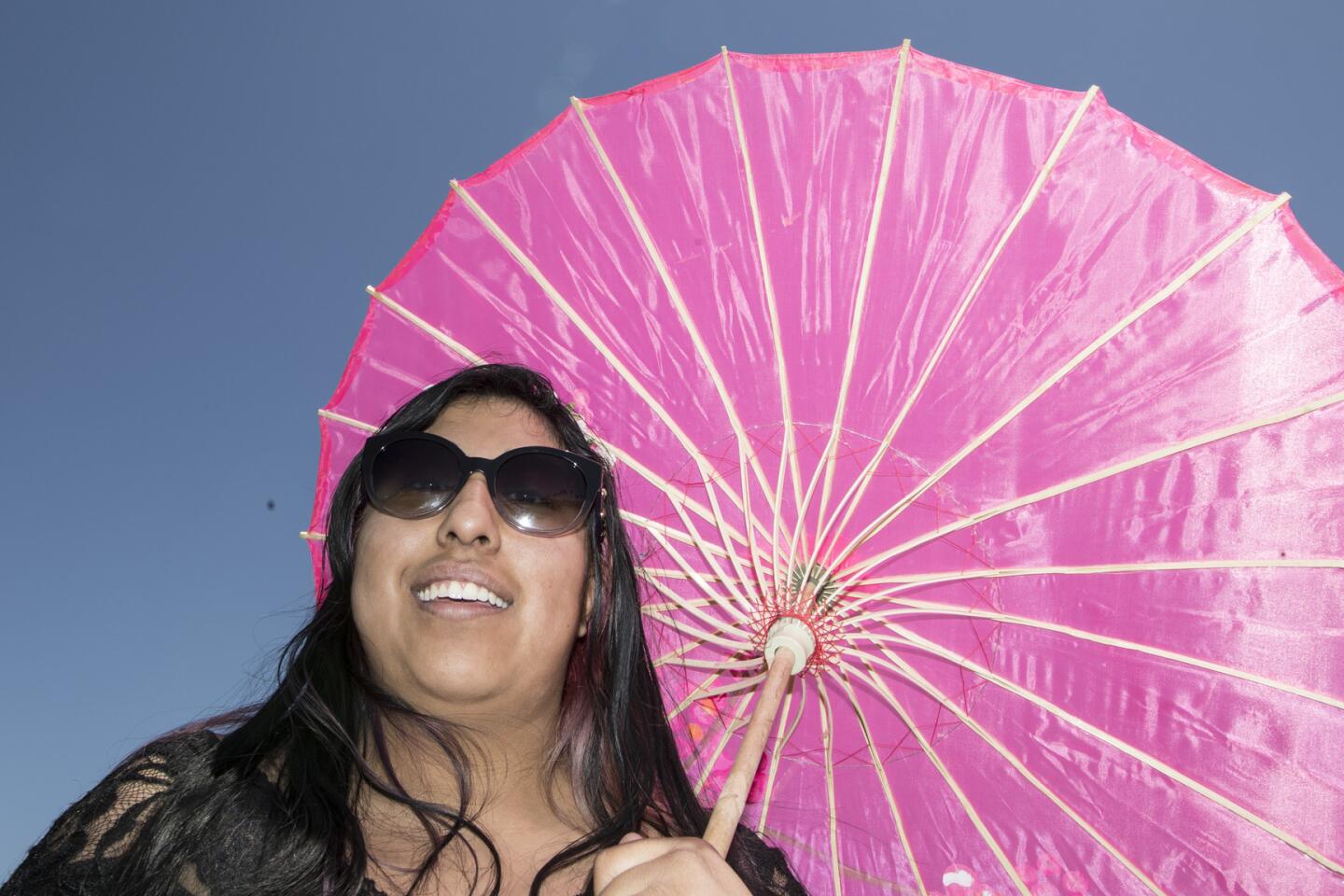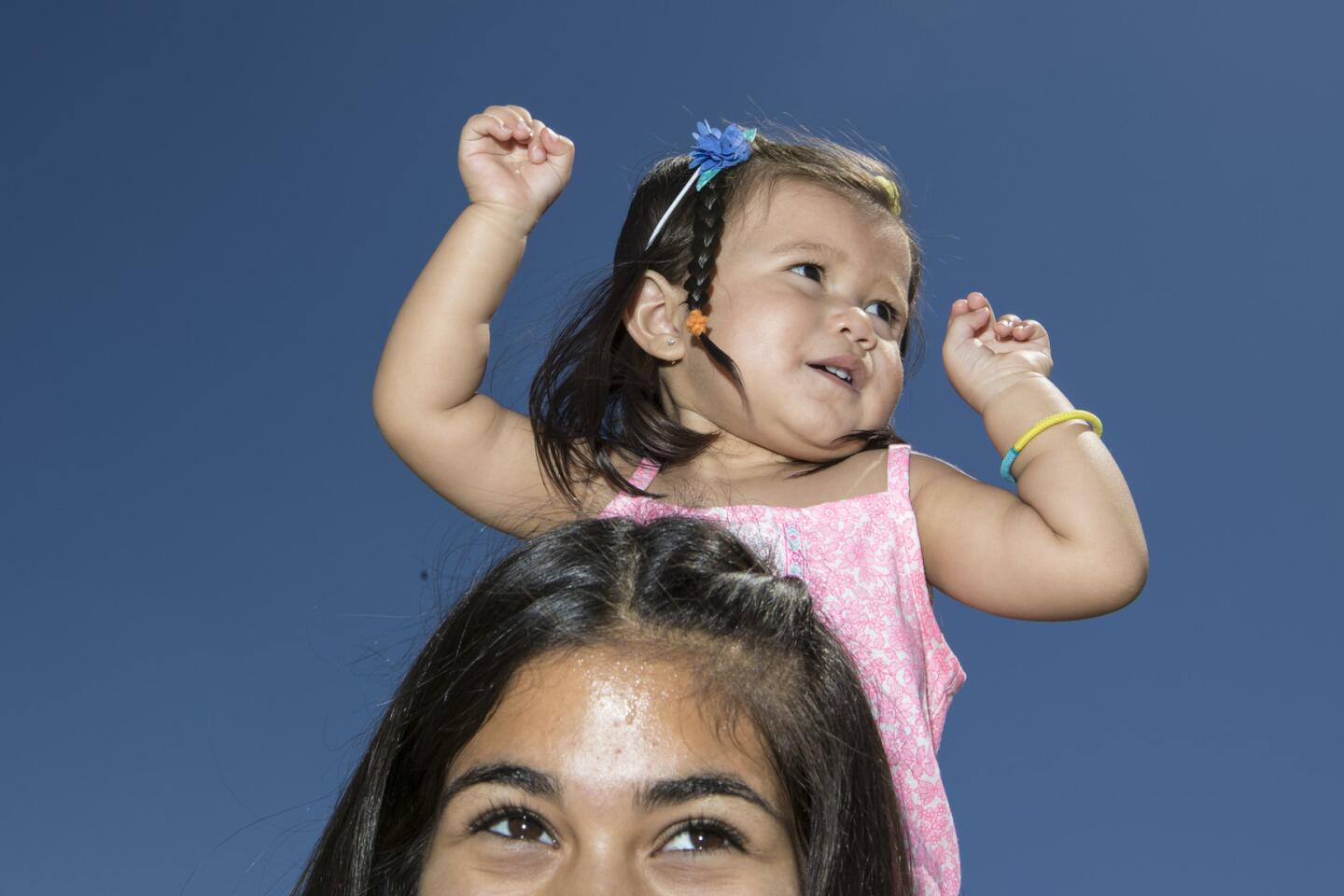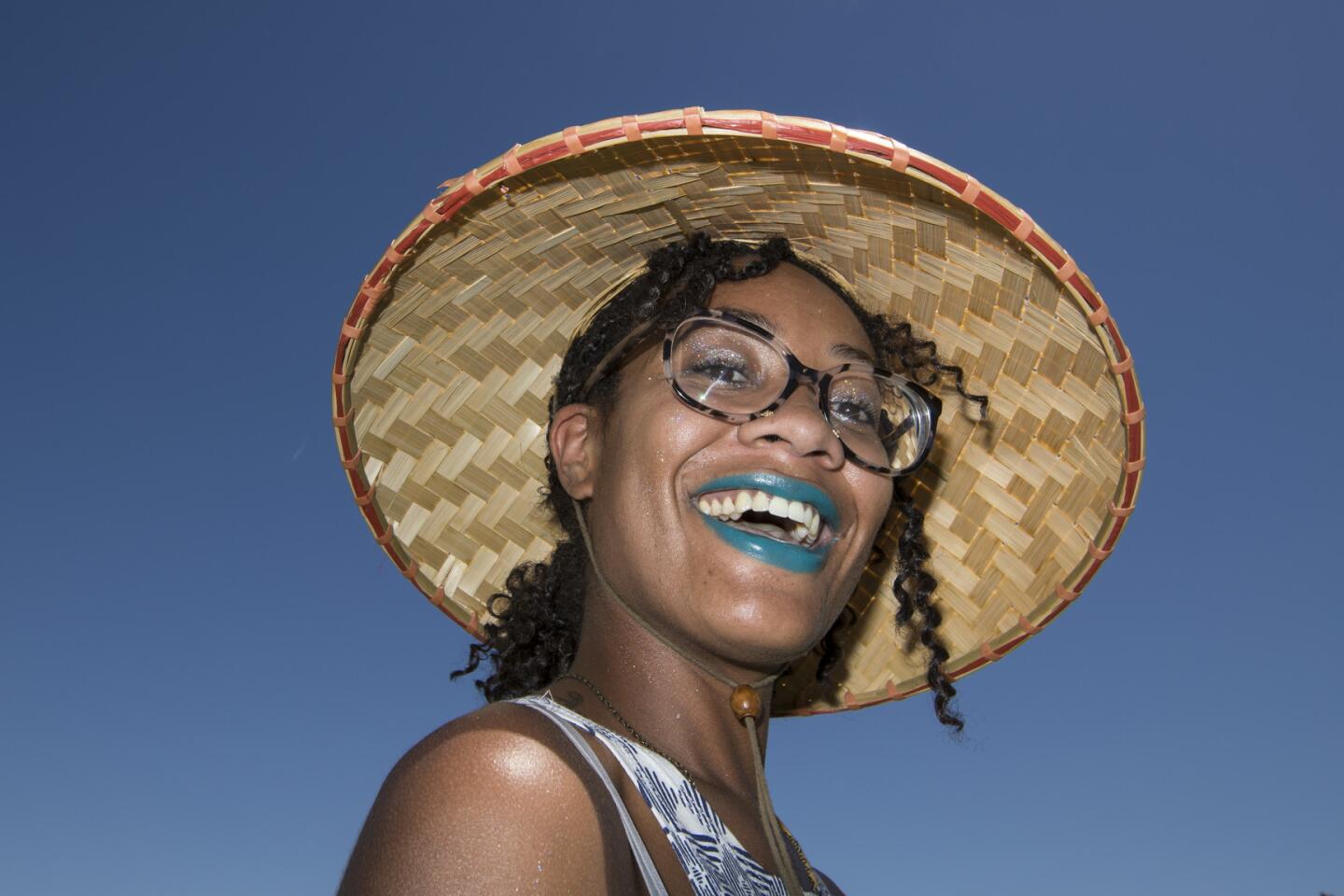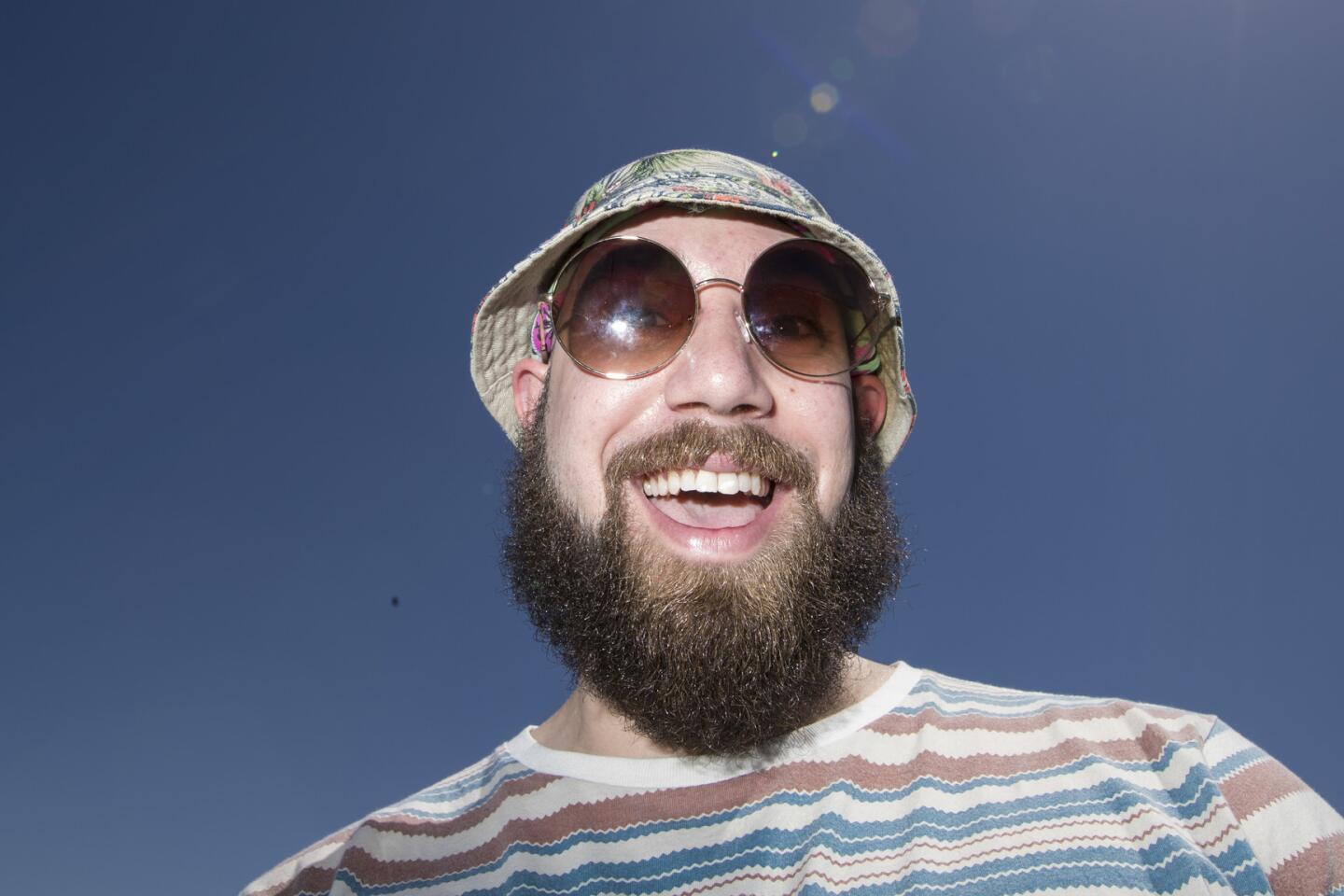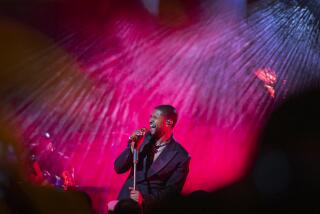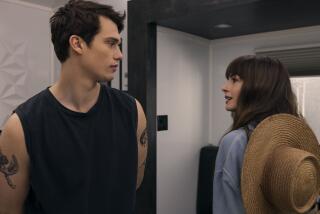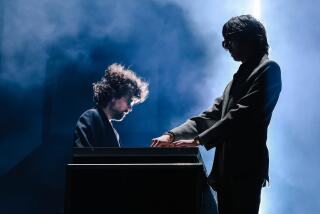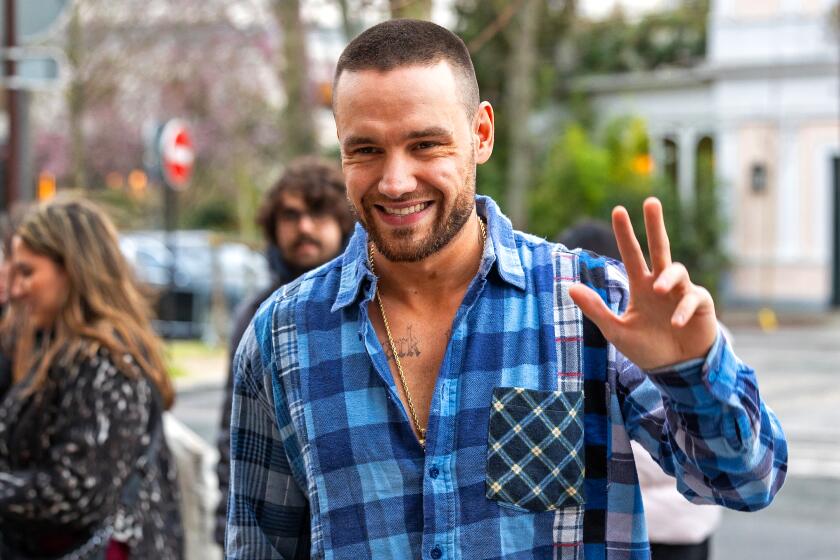“Don’t be scared — I’ve done this before,” Lady Gaga told the massive crowd gathered for her Saturday night headlining set at the Coachella Valley Music and Arts Festival. And, sure, this was hardly the Super Bowl halftime veteran’s first experience before a live audience numbering in the tens of thousands.
But the performance did mark Lady Gaga’s debut at America’s highest-profile music festival, held every spring for nearly two decades on the sprawling grounds of the Empire Polo Club in Indio. It also opened a new chapter for Coachella, which has long hesitated to book a current pop superstar for its gigantic main stage.
Once known for presenting edgy alternative rock and dance music, the annual desert blowout has moved gradually toward the mainstream as its size, prestige and reputation as an upscale celebrity magnet have grown. Madonna famously performed in one of the festival’s tents in 2006, and last year Rihanna dropped in for a surprise appearance with the EDM star Calvin Harris.
Yet for this year’s edition — which ran Friday to Sunday and will repeat this coming weekend — Coachella’s deep-pocketed promoter, the AEG-owned Goldenvoice, dramatically expanded the scale of its flagship event, adding 20 acres to the festival site and getting the OK from city officials to boost capacity from 99,000 to 125,000 people. (Tickets, which sold for a minimum of $399 each, sold out well in advance.)
As a result, perhaps organizers felt they needed an especially splashy name to meet the demands of those dimensions. Indeed, Saturday’s original headliner was to be the world’s most beloved pop star: Beyoncé, who after announcing she was pregnant pulled out of the show in February on the advice of her doctor.
So how did this supersize Coachella go down? There were some growing pains.
For starters, Radiohead encountered a serious technical difficulty — a rarity at this carefully executed production — when the sound system cut out repeatedly during the British art-rock band’s headlining set Friday night. (The festival’s third headliner, the acclaimed Compton rapper Kendrick Lamar, was scheduled to perform late Sunday, past deadline for this article.)
After exiting the stage in visible frustration, frontman Thom Yorke returned and addressed the mishap with his signature deadpan humor.
“Can you actually hear me now?” he asked. “I’d love to tell you a joke, lighten the mood, something like that. But this is Radiohead.” Then he added an unprintable phrase reminding us that lightening the mood isn’t in the nature of a group whose music is haunted by thoughts of technology turning against its makers.
Though the sound system held out from then on, Radiohead never quite recovered from the distraction. The band’s performance, filled with oldies like “Creep” and “Paranoid Android,” felt deflated, as though Yorke and his mates had lost their nerve.
Lady Gaga had trouble too.
After starting very powerfully with a series of tunes — “John Wayne,” “Born This Way,” “Sexxx Dreams” — that vividly expressed her cartoon-rebel intensity, the singer’s concert slowed to a crawl when she sat down behind a keyboard and transformed her ecstatic “The Edge of Glory” into a dreary piano ballad.
1/59
Thom Yorke of Radiohead performs on the Coachella Stage on day one of the festival.
(Luis Sinco / Los Angeles Times) 2/59
Singer Thom Yorke of Radiohead performs at the three-day Coachella Valley Music and Arts Festival in Indio.
(Patrick T. Fallon / For The Times) 3/59
Singer Thom Yorke of Radiohead performs at Coachella.
(Patrick T. Fallon / For The Times) 4/59
Thom Yorke and Radiohead perform on the Coachella Stage.
(Luis Sinco / Los Angeles Times) 5/59
Thom Yorke and Radiohead perform on the Coachella Stage.
(Luis Sinco / Los Angeles Times) 6/59
Travis Scott onstage at the Coachella Music and Arts Festival in Indio.
(Brian van der Brug / Los Angeles Times) 7/59
Travis Scott, right, reaches out to a fan onstage at the Coachella Music and Arts Festival.
(Brian van der Brug / Los Angeles Times) 8/59
Travis Scott onstage at the Coachella Music and Arts Festival.
(Brian van der Brug / Los Angeles Times) 9/59
Travis Scott onstage at Coachella.
(Brian van der Brug / Los Angeles Times) 10/59
A stage hand, lower right, is ready to pull back a curtain for Travis Scott’s set at the Coachella Music and Arts Festival in Indio.
(Brian van der Brug / Los Angeles Times) 11/59
A festival goer watches from a tree as Travis Scott performs at Coachella.
(Brian van der Brug / Los Angeles Times) 12/59
Festival goers pass the art project “Is this what brings things into focus?” by Joanne Tatham and Tom O’Sullivan.
(Patrick T. Fallon / For The Times) 13/59
The Australian electronic music group the Avalanches performs on the Mojave Stage on day one of the Coachella Music and Arts Festival in Indio on Friday.
(Luis Sinco / Los Angeles Times) 14/59
Dusk descends on a crowd waiting for a performance by Father John Misty on day one of the Coachella Music and Arts Festival in Indio on Friday.
(Luis Sinco / Los Angeles Times) 15/59
Father John Misty performs on the Coachella Stage on day one of the Coachella Music and Arts Festival in Indio on Friday.
(Luis Sinco / Los Angeles Times) 16/59
Father John Misty performs on the Coachella Stage on day one of the Coachella Music and Arts Festival in Indio on Friday.
(Luis Sinco / Los Angeles Times) 17/59
Romy Medley Croft, singer and guitarist for the English rock band the XX, performs on the Coachella Stage on day one of the Coachella Music and Arts Festival in Indio on Friday.
(Luis Sinco / Los Angeles Times) 18/59
Oliver Sim, bassist for the English rock band the XX, performs on the Coachella Stage on day one of the Coachella Music and Arts Festival in Indio on Friday.
(Luis Sinco / Los Angeles Times) 19/59
English rock band the XX performs on the Coachella Stage on day one of the Coachella Music and Arts Festival in Indio on Friday.
(Luis Sinco / Los Angeles Times) 20/59
Lexi Tuitan, 22, right, and sister Pia Tuitan, 20, of Manila take photos at the art installation ‘Lamp Beside the Golden Door’ at Coachella on Friday.
(Brian van der Brug / Los Angeles Times) 21/59
Broods’ lead vocalist Georgia Nott onstage at Coachella on Friday.
(Brian van der Brug / Los Angeles Times) 22/59
Festival-goers pose for photos against the ‘Is this what brings things into focus?’ art installation at Coachella on Friday.
(Brian van der Brug / Los Angeles Times) 23/59
Banks performs at Coachella on Friday.
(Brian van der Brug / Los Angeles Times) 24/59
Rapper Mac Miller onstage at Coachella on Friday.
(Brian van der Brug / Los Angeles Times) 25/59
Coachella-goers dance inside the Yuma tent on Day One of the festival Friday.
(Brian van der Brug / Los Angeles Times) 26/59
Lauren C., 28, of Temecula spins an LED light inside the Yuma tent at Coachella on Friday.
(Brian van der Brug / Los Angeles Times) 27/59
Francis Farewell Starlite leads Francis and the Lights at Coachella on Friday.
(Brian van der Brug / Los Angeles Times) 28/59
Francis Farewell Starlite leads Francis and the Lights at Coachella on Friday.
(Brian van der Brug / Los Angeles Times) 29/59
Tacocat vocalist Emily Nokes performs onstage at Coachella on Friday.
(Brian van der Brug / Los Angeles Times) 30/59
Coachella-goers relax against the ‘Is this what brings things into focus?’ art installation as the sun goes down on Day One on Friday.
(Brian van der Brug / Los Angeles Times) 31/59
Francis Farewell Starlite leads Francis and the Lights onstage Friday.
(Brian van der Brug / Los Angeles Times) 32/59
Coachella-goers ride the new air-conditioned ferris wheel at the first day of the Coachella Valley Music and Arts Festival in Indio on Friday.
(Brian van der Brug / Los Angeles Times) 33/59
Pittsburgh rapper Mac Miller performs on Friday.
(Patrick T. Fallon / For The Times) 34/59
Coachella attendees dance as rapper Mac Miller performs Friday.
(Patrick T. Fallon / For The Times) 35/59
A Coachella attendee dances as rapper Mac Miller performs Friday.
(Patrick T. Fallon / For The Times) 36/59
Coachella attendees groove as rapper Mac Miller performs Friday.
(Patrick T. Fallon / For The Times) 37/59
Rapper Mac Miller helps to kick off the Coachella festival weekend on Friday.
(Patrick T. Fallon / For The Times) 38/59
Coachella fans dance as rapper Mac Miller jams on Friday.
(Patrick T. Fallon / For The Times) 39/59
Joalicia Hardy, center, and Britni Calaway, right, of New Jersey dance as the three-day Coachella festival begins Friday.
(Patrick T. Fallon / For The Times) 40/59
Raury performs on the Gobi Stage.
(Luis Sinco / Los Angeles Times) 41/59
British singer-songwriter Sampha Sisay performs on the Mojave stage.
(Luis Sinco / Los Angeles Times) 42/59
Canadian indie rocker Mac DeMarco on the Outdoor stage.
(Luis Sinco / Los Angeles Times) 43/59
Atlanta singer-songwriter Raury on the Gobi stage.
(Luis Sinco / Los Angeles Times) 44/59
Atlanta singer-songwriter Raury.
(Luis Sinco / Los Angeles Times) 45/59
Joseph Motuga works security detail at the Outdoor stage.
(Luis Sinco / Los Angeles Times) 46/59
The crowd dances at the Do Lab on Friday, the first day of the Coachella Valley Music and Arts Festival in Indio.
(Luis Sinco / Los Angeles Times) 47/59
Coachella attendee Brandon Behne, 24, sports a glitter beard during the first weekend of the three-day festival at the Empire Polo Grounds in Indio.
(Patrick T. Fallon / For The Times) 48/59
Stormzy performs at the Outdoor Stage on Friday at Coachella.
(Brian van der Brug / Los Angeles Times) 49/59
Fans take in Stormzy on the Outdoor Stage at Coachella on Friday.
(Brian van der Brug / Los Angeles Times) 50/59
A glitter-flecked fan watches Stormzy perform at the Outdoor Stage on Friday at Coachella.
(Brian van der Brug / Los Angeles Times) 51/59
Festivalgoers check out the art in Chiaozza Garden on Friday at Coachella.
(Luis Sinco / Los Angeles Times) 52/59
The Chiaozza Garden at Coachella Music makes a prime place for picture-taking.
(Luis Sinco / Los Angeles Times) 53/59
A crowd dances at the Do Lab on Friday at Coachella.
(Luis Sinco / Los Angeles Times) 54/59
The crowd at the Do Lab gets hosed down on Day One of Coachella.
(Luis Sinco / Los Angeles Times) 55/59
Festivalgoers walk through the artwork “Is This What Brings Things Into Focus” by Joanne Tatham and Tom O’Sullivan on Friday at Coachella.
(Luis Sinco / Los Angeles Times) 56/59
Barbara Huynh of San Jose takes a selfie while atop the shoulders of Anthony Seto of Los Angeles on Friday at Coachella.
(Patrick T. Fallon / For The Times) 57/59
Brianna Bender of San Diego, 22, smiles as she sees herself reflected in “The Lamp Beside the Golden Door” art installation by Gustavo Prado on Day One of Coachella.
(Patrick T. Fallon / For The Times) 58/59
Festivalgoers are reflected on a piece of mirror art called “The Lamp Beside the Golden Door” by Gustavo Prado on Friday at Coachella.
(Luis Sinco / Los Angeles Times) 59/59
Berlin Murphy, 24, rides the Energy FACTory seesaw to create electricity to charge her phone on Day One of Coachella.
(Patrick T. Fallon / For The Times) Elsewhere, she took advantage of Coachella’s attention-getting platform by playing a new single, “The Cure,” for the first time in public. But if the song was intriguing — it leaves behind the rootsy vibe of last year’s “Joanne” album for a proudly synthetic ’80s-era sound — Lady Gaga cheapened the moment with her show-closing announcement that the track was available to buy on iTunes.
While Coachella isn’t allergic to marketing (see its branded beauty bar, among other accouterments), nobody should have to pay $399 to feel advertised to.
Coachella’s growth could be felt in more positive ways over the weekend. Never an easy event to summarize given the number of acts it hosts, it resisted even more the application of a single idea about Where Music Is Right Now.
And that’s a good thing: As digital streaming has increased access to virtually all recorded sound, it’s a thrill to be at a festival that reproduces the breadth of viewpoints waiting to be summoned on an app on your phone. In its impressive variety — from the Atlanta rapper Gucci Mane to the old-time Preservation Hall Jazz Band to the Australian sampling wizards in the Avalanches — Coachella may feel less meticulously curated than it once did, but it also understood that there is no single idea about music.
1/26
Denver resident Sean Reilly, 28, shows off his copious beard at the Coachella Music and Arts Festival in Indio, Calif., on April 15.
(Brian van der Brug / Los Angeles Times) 2/26
Withis tattoos, scarf and green hair, Anaheim resident Albert De La Riva, 24, is a colorful face in the crowd at the Coachella Music and Arts Festival in Indio, Calif., on April 15.
(Brian van der Brug / Los Angeles Times) 3/26
Sabrina Suffrage, 26, of Scottsdale, Ariz., peers into the camera at the Coachella Music and Arts Festival in Indio, Calif., on April 15.
(Brian van der Brug / Los Angeles Times) 4/26
Henry Tao, 26, of Rosemead, strikes a pose at the Coachella Music and Arts Festival in Indio, Calif., on April 15.
(Brian van der Brug / Los Angeles Times) 5/26
Under a flowery hat, Emily Men, 29, of Los Angeles lets her long locks flow at the Coachella Music and Arts Festival in Indio, Calif., on April 15.
(Brian van der Brug / Los Angeles Times) 6/26
Christian Cononico, 22, of Los Angeles wears a halo of daiseys at the Coachella Music and Arts Festival in Indio, Calif., on April 15.
(Brian van der Brug / Los Angeles Times) 7/26
Amanda Navarro, 20, left, of San Diego, CalFire captain Teri Szabo and Kylie Paige, 24, of San Francisco smile for the camera in decidedly different ways at the Coachella Music and Arts Festival in Indio, Calif., on April 15.
(Brian van der Brug / Los Angeles Times) 8/26
Tianna Williams, 22, of San Diego is draped for the occasion at the Coachella Music and Arts Festival in Indio, Calif., on April 15.
(Brian van der Brug / Los Angeles Times) 9/26
Under the pointed guidance of a fellow festival-goer, Shari Chaffin, 23, of Madera enjoys a slice of watermelon at the Coachella Music and Arts Festival in Indio, Calif., on April 15.
(Brian van der Brug / Los Angeles Times) 10/26
Grant Uba, 19, of Reno, Nev., attends his first Coachella Music and Arts Festival in Indio, Calif., on April 15.
(Brian van der Brug / Los Angeles Times) 11/26
Gabriella Giogianni enjoys a frozen treat at the Coachella Music and Arts Festival in Indio, Calif., on April 14, 2017. (Brian van der Brug / Los Angeles Times)
12/26
Larayia Gaston, 29, of Los Angeles, with her Maltipoo pups, Mali, left, and Nugget, at the Coachella Music and Arts Festival.
(Brian van der Brug / Los Angeles Times) 13/26
Eric Geigle, 41, of West Hartford, Conn., at the Coachella Music and Arts Festival.
(Brian van der Brug / Los Angeles Times) 14/26
Mary Shiels, 32, of London, at Coachella.
(Brian van der Brug / Los Angeles Times) 15/26
Kristofer Barins, 41, of San Francisco, at Coachella.
(Brian van der Brug / Los Angeles Times) 16/26
Festival workers Melissa Gonzalez, left, and Ivanna Gonzalez help keep the Empire Polo Grounds tidy during the Coachella Music and Arts Festival in Indio, Calif.
(Brian van der Brug / Los Angeles Times) 17/26
Pat Amsbry, 52, and son Tom, 16, of Pasadena, at Coachella.
(Brian van der Brug / Los Angeles Times) 18/26
Luke Matthews, 26, of Santa Monica, at Coachella.
(Brian van der Brug / Los Angeles Times) 19/26
Brothers Michael, left, and John Bordalampe of San Francisco at the Coachella Music and Arts Festival.
(Brian van der Brug / Los Angeles Times) 20/26
Friends Shir Lavian, 21, left, and Sidney George, 22, at Coachella.
(Brian van der Brug / Los Angeles Times) 21/26
Friends Margarita Nesterets, 26, left, of New York City, and Zaur Gazdanov, 24, of Moscow, at Coachella.
(Brian van der Brug / Los Angeles Times) 22/26
Red Sherrill, 55, of Sierra Vista, Ariz., at Coachella.
(Brian van der Brug / Los Angeles Times) 23/26
Ariana Lucas, 20, of Asheville, N.C., is attending her first Coachella Music and Arts Festival.
(Brian van der Brug / Los Angeles Times) 24/26
Jazzy Morgan, 13, and cousin Chloe Avina, 1, both of Indio, attend their first Coachella Music and Arts Festival.
(Brian van der Brug / Los Angeles Times) 25/26
Maymunah Rasheed, 24, of Oakland, at Coachella.
(Brian van der Brug / Los Angeles Times) 26/26
Nathan Raff, 25, of San Francisco, at Coachella.
(Brian van der Brug / Los Angeles Times) That said, story lines emerged. Among them was the revival of blue-eyed soul singing, as seen in strong showings by Bon Iver, Mac DeMarco and Francis and the Lights, a true pop eccentric who combines David Byrne’s herky-jerk dance moves with the slick, exuberant vocals of Steve Winwood.
During a late-afternoon set by the jazz-funk bassist Thundercat, a real-deal proponent of the style — Michael McDonald — even turned up to do the Doobie Brothers’ deathless “What a Fool Believes.”
Bon Iver touched on another identifiable theme — a preoccupation with the ways humans and machines are merging — as did the popular rappers Future and Travis Scott; all three men used software to process organic sounds, including their own voices, sometimes beyond recognition.
For the last five years or so, crowd patterns at Coachella have made an implicit argument that dance and hip-hop have pushed aside rock at the center of pop culture. And certainly the enormous crowds that materialized for Future, Gucci Mane and DJ Snake made it clear that those genres continue to thrive.
But although Radiohead played to a surprisingly small audience — one that grew smaller with each technological malfunction — middlebrow guitar bands such as Bastille, Car Seat Headrest and Local Natives pulled fans in numbers that suggested rock isn’t dead yet (even if the groups’ lackluster music was less convincing).
Coachella also maintained its belief in the value of a surprise cameo at a moment when many people seem to show up for real-world events just so they can post about it on social media.
Beyond McDonald, Drake and Ty Dolla Sign put in unannounced appearances that quickly ricocheted across Instagram; the rap trio Migos, which wasn’t officially on the bill, did its viral hit “Bad and Boujee” twice within a couple of hours, first during Future’s set and later with DJ Snake (who also brought out Lauryn Hill to sing several Fugees classics).
Yet nothing that happened at the temporary civilization that is Coachella came at the expense of anything else; no wild musical moment, however tweeted-about, canceled out any other.
At several points during Lady Gaga’s performance, a small drone equipped with a camera rose up over the main stage, feeding pictures of the packed polo field to the video screens behind the singer. And the crowd the pictures showed was huge, yes — probably 50,000 people, maybe more.
But off in the distance you could also see figures wandering around in ones and twos — folks uninterested in what a famous pop star was doing and eager to find some stimulation for themselves.
[email protected]
Twitter: @mikaelwood
ALSO
The looks of Coachella: from not-so-basic black to full floral maximalism
DJ Snake and the Belleville Three are the twin poles of dance music at Coachella
Lady Gaga’s Coachella performance was an absolute thrill — until it wasn’t
